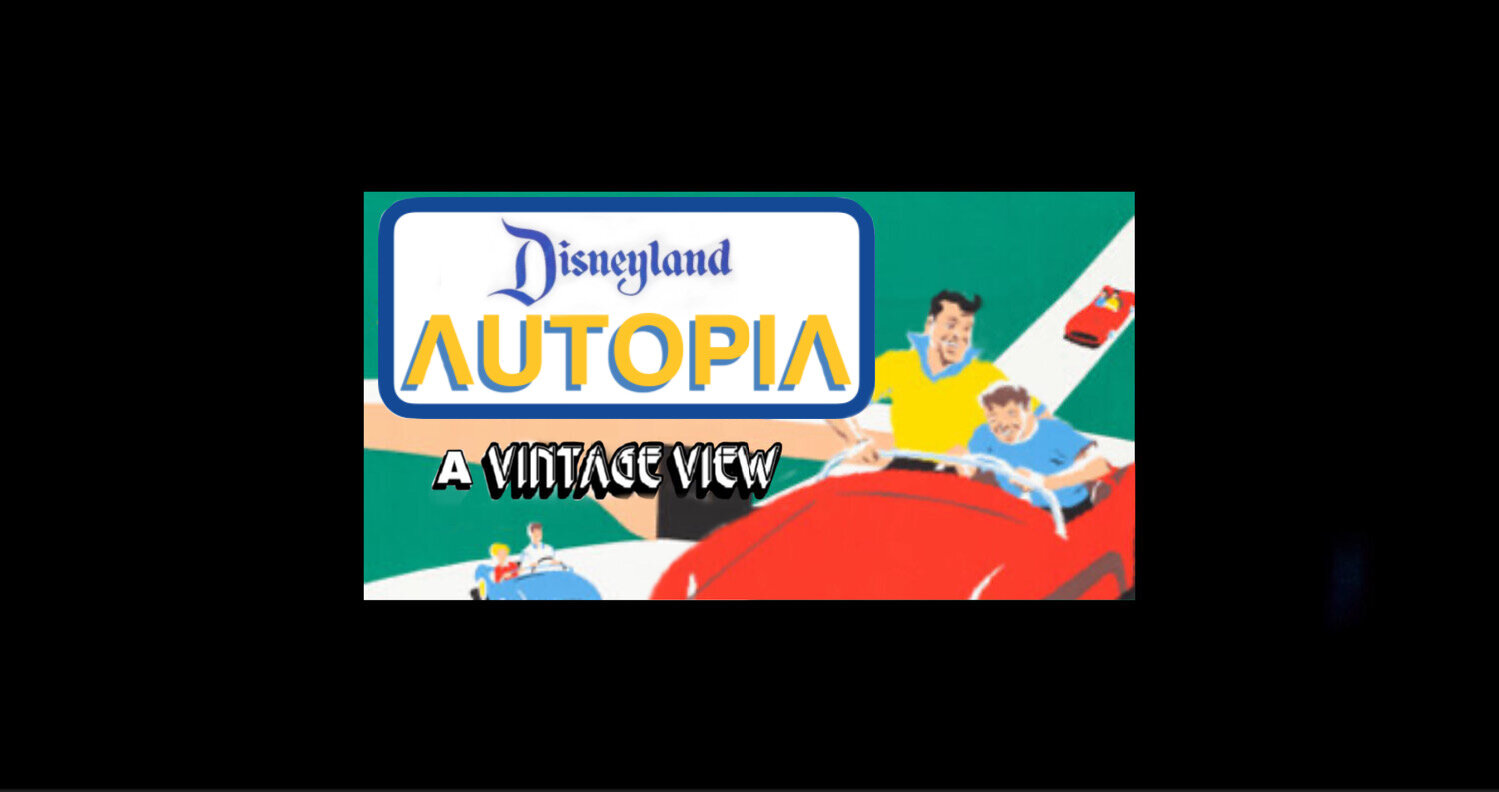AUTOPIAS (FANTASYLAND, JUNIOR & TOMORROWLAND)
Let’s Tour The Twisting Turnpikes of Disneyland’s AUTOPIAS!
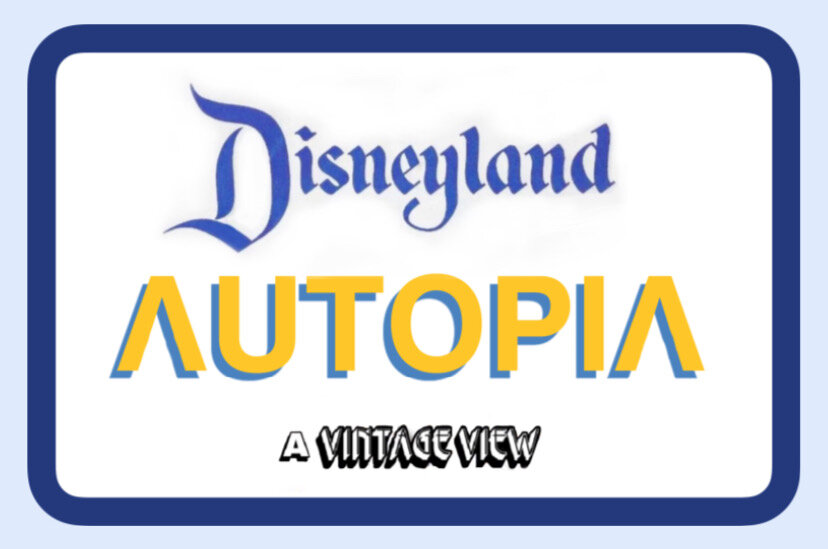
Ah, . . .automobile utopia! The presentation of the Autopia show on the vast DISNEYLAND “stage” has been a distinct part of the Disneyland theater concept. The Disneyland Autopias are “senior” attractions - having both delighted and excited generations of guests (as 1 of 22 initial major attractions at Disneyland® Park) since opening day, in 1955! Here, children of all ages can get the feel of what it’s like to get behind the wheel of an automobile, and steer it along a futuristic high-speed highway (in fact, the safest “super-highway” in the world). And if you’re a safe driver, you just may earn your Official Autopia Driver’s License. Walt Disney had such an affinity for the Autopia attraction, that his very own car was even kept on display in Tomorrowland for years (when he wasn’t personally driving it).
Owing to the popularity of the Autopia and Imagineers who knew their audience, there have been a total of four Autopias in Disneyland through the decades:
•Tomorrowland Autopia (July 17, 1955 - present) also known as the “Senior Autopia” for a time on Plot Plans.
•Junior Autopia Freeway (July 23, 1956 - September 15, 1958)
•Midget Autopia (April 23**, 1957 - April 3, 1966) **Some sources cite April 13th, or 27th as the opening date. Due to its separate scale from all other Autopias, the Midget Autopia has a separate Vintage View gallery, which may be visited by clicking the LINK.
•Fantasyland Autopia (June 6, 1959* - March, 1991) ; (November, 1991 - September, 1999) *A soft opening occurred on January 1, 1959

The Autopia tracks have also undergone many changes (for instance, on June 29, 2000, under new sponsorship, the Chevron Autopia would incorporate both the Fantasyland Autopia and the Tomorrowland Autopia). In addition, updated vehicle models have replaced the outdated or mundane ones, keeping in step with one of the original themes of Tomorrowland - progress! Not withstanding all this progress, the Disneyland Autopia continues running! In fact, by 1971 (according to one “Disneyland Admission Media Rides and Attractions Report” published 1971), an amazing figure of 47,756,550 guests had driven (or rode passenger in) vehicles of the Autopias at Disneyland! Just imagine how many guests have sat behind the wheel up to our recent era! But before we race all the way to the end of our story, “please, step this way” back to the proverbial “starting line,” and let’s explore the origin and history of this Disneyland Parks attraction, and find out what makes it such a timeless delight!
“The Starting Line of 1952”
In 1952, Walt Disney founded a company called WED Enterprises, Inc. (the architectural and engineering design division of Walt Disney Productions) in order to master-plan and design his his dreams of a Park. Some 2-3 years before the dream of Disneyland (and Tomorrowland) became a reality, Walt and company began to compile descriptions of the would-be Park in order to help potential investors (both banks and corporate sponsor representatives) envision this unseen land! Of particular interest to us is the 1953 Disneyland Prospectus (pages 2 and 3), which described the original vision of Walt Disney’s World of Tomorrow. In the contents of this document, we hear the first mention of the Autopia:
“This is the home of the exciting World of Tomorrow …where the fascinating exhibits of the miracles of science and industry are displayed. The theme for the World of Tomorrow is the factual and scientific exposition of the Things to Come…Among the exhibits, that will change from time to time, are. . . The Little Parkway system where children drive scale model motor cars over a modern freeway.”
It was about this same time (1953), that Walt Disney Studio accountant Milt Albright briefly enters our story. Milt loved cars (like Walt loved trains), and knowing that Walt was developing a freeway-based attraction for his future Park, Milt (with the heart of an imaginative engineer) attempted to capture Walt’s attention by designing and creating his own miniature 1954 Corvette-inspired automobile prototype. According to Miley’s own account: “I was working at the Studio, and heard rumors of plans for a big amusement park. I immediately asked for a transfer, which turned out to be a 'no-no, of Studio policy. But I found out there was an attraction to be called Autopia. Working nights and weekends for about eight months, I made a little car in my garage...fiber glass body and all. When it was finished, I hauled it to the Studio.“
At first glance, Walt was so impressed with Milt’s car that he took it for a spin (as Walt had the habit of “exploring new paths and experimenting with new technologies), but he did not know that the car didn’t have any brakes. Decades later in interview with Anaheim Bulletin (published in the future year of 1987), Milt finally divulged what happened next. “Well, Walt crashed into a wall to stop it, and the [fiberglass] body of the car cracked in half like a walnut.” Walt wasn’t very impressed with the Autopia vehicle design (which was never seen again), but he did hire Milt as Disneyland’s Accounting Manager during the spring of 1954.
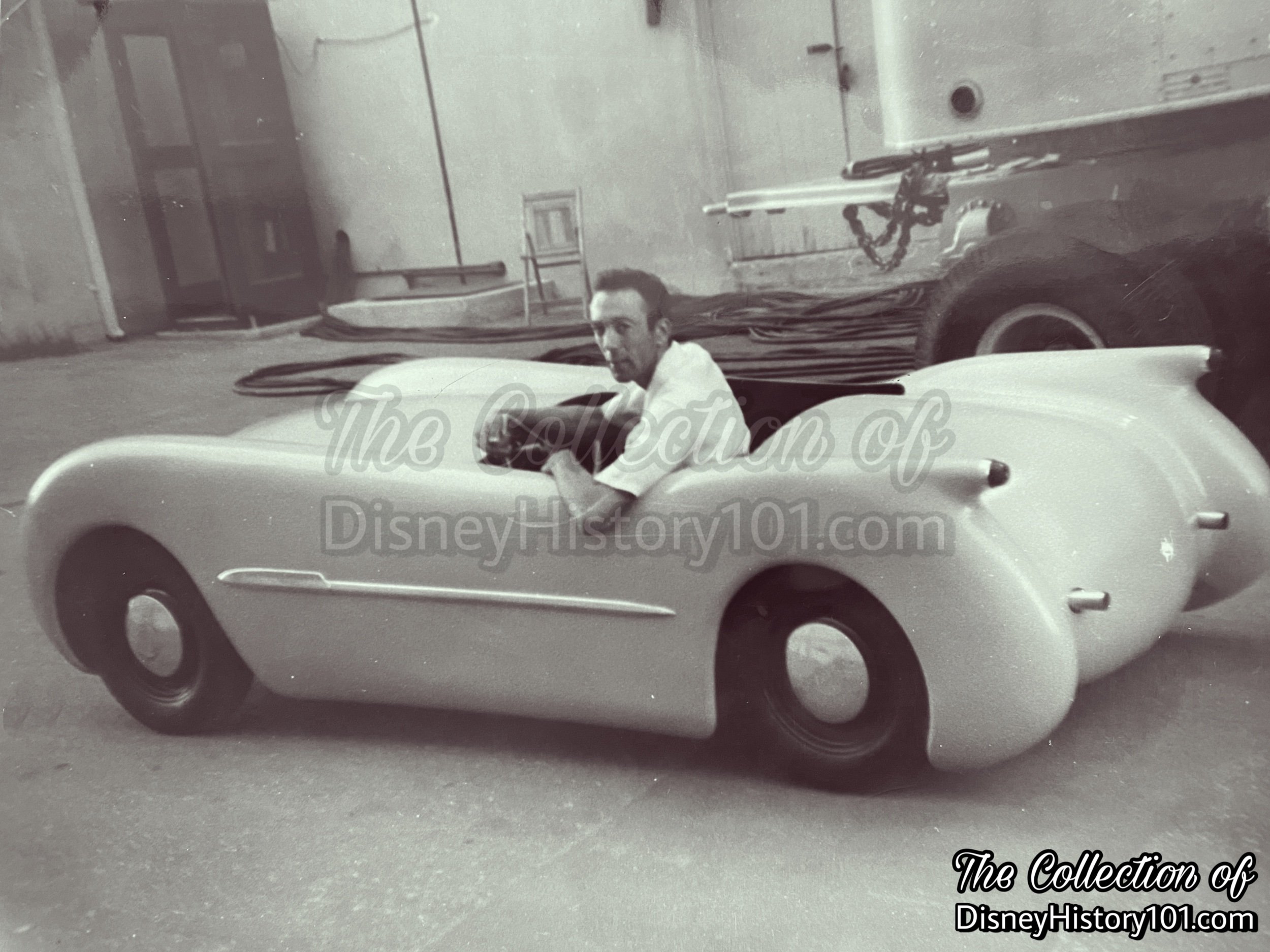
An Autopia prototype.
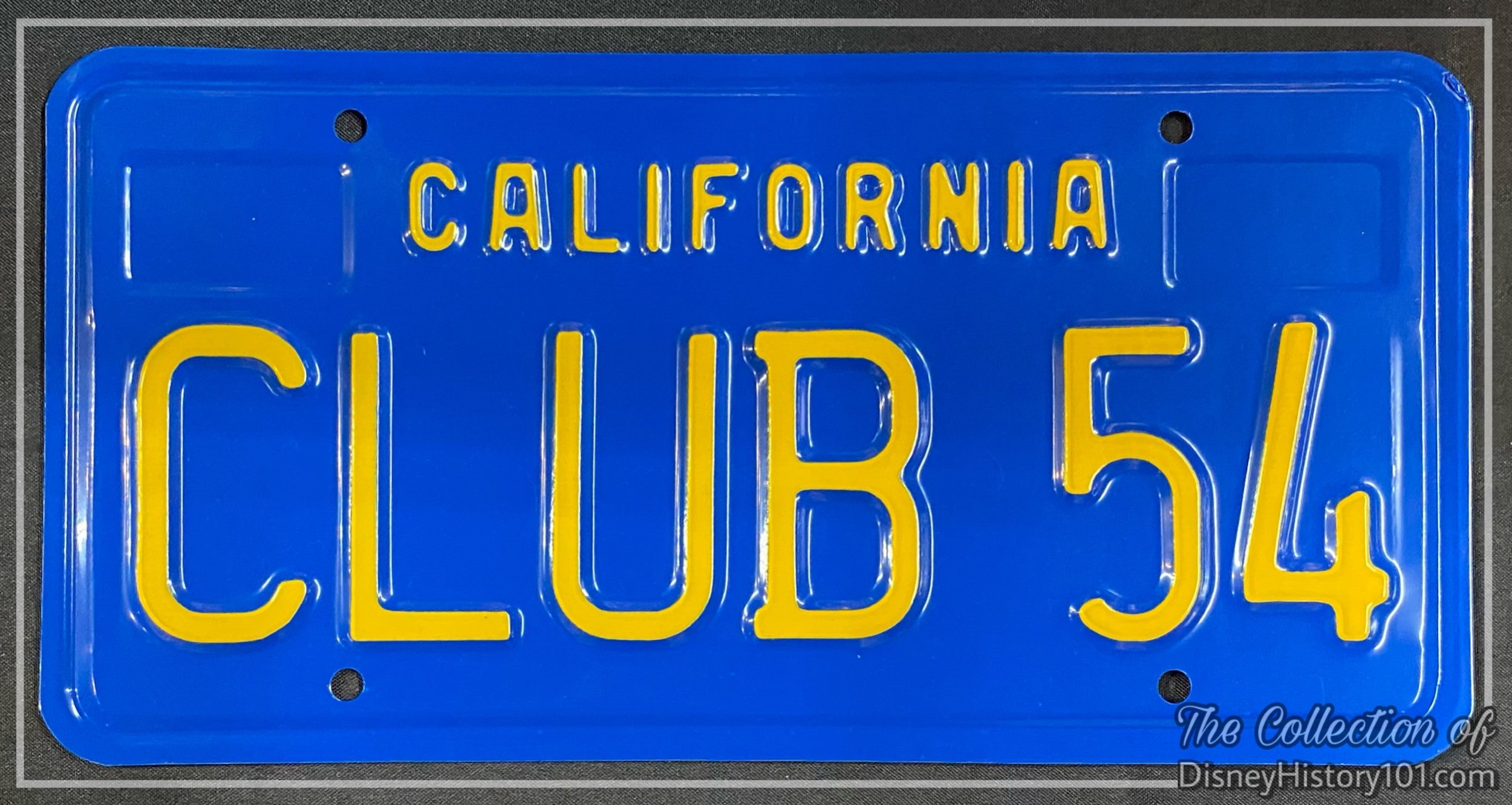
Milt Albright’s Club 54 license plate takes on a little more meaning.
“Autopia Research, Development, and Prototypes of 1954”
Walt knew that it would require the assembling of a coalition of talents to Imagineer his “Freeway of the Future” at Disneyland. As vital as each wheel of an Autopia motorcar were the individual people that contributed to the development of the timeless attraction.
One such talented person was Herbert Ryman. Herb had joined the Disney Studio in 1938, after Walt saw a public show of his work in New York. (Herb's paintings were being exhibited with those of another up and coming artist, Andrew Wyeth.) Herb Ryman acted as art director for such films as Fantasia and Dumbo, but had left Walt Disney Studios in 1946 and (by 1953) was employed by 20th Century Fox. However, Walt reached out to Herb and during one weekend a historic drawing of the Park (and the Freeway of the Future) was produced.
As it was once said, there were no “spare tires.” Within a few months, Dick Irvine would hold the very first Autopia meeting, during October of 1954. Artists like set designer Wilson “Bill” Martin (who had left 20th Century Fox, to work on Walt Disney Productions’ Disneyland project) would become influential in the design of Autopia, his talents as art director applied to the attraction. It was only a short matter of time before Roger Broggie Sr. (of Walt Disney Studio Machine Shop) was also brought onboard for the project. Roger was tasked with research and development of the “scale model motor cars” that would populate the “Freeway of the Future” at Walt’s Park. For now, Roger reached out to a company in West Germany to fabricate a small yellow-and-green, “two-stroke engine”-powered auto. Meanwhile, he quickly went to work on researching and developing a bumper system for the vehicle. The product was subsequently shipped to Walt Disney Studios in Burbank, possibly via Eric Wedemeyer Inc. (the same ride import company that would be responsible for bringing the Astro-Jets to Disneyland in 1956). However, the pale yellow and green Studebaker-like vehicle was disapproved by Walt, and new designers (Johnny Hartmann’s Hartmann Engineering Company of Montrose, California) would start over from scratch, building a brand new chassis and drive.
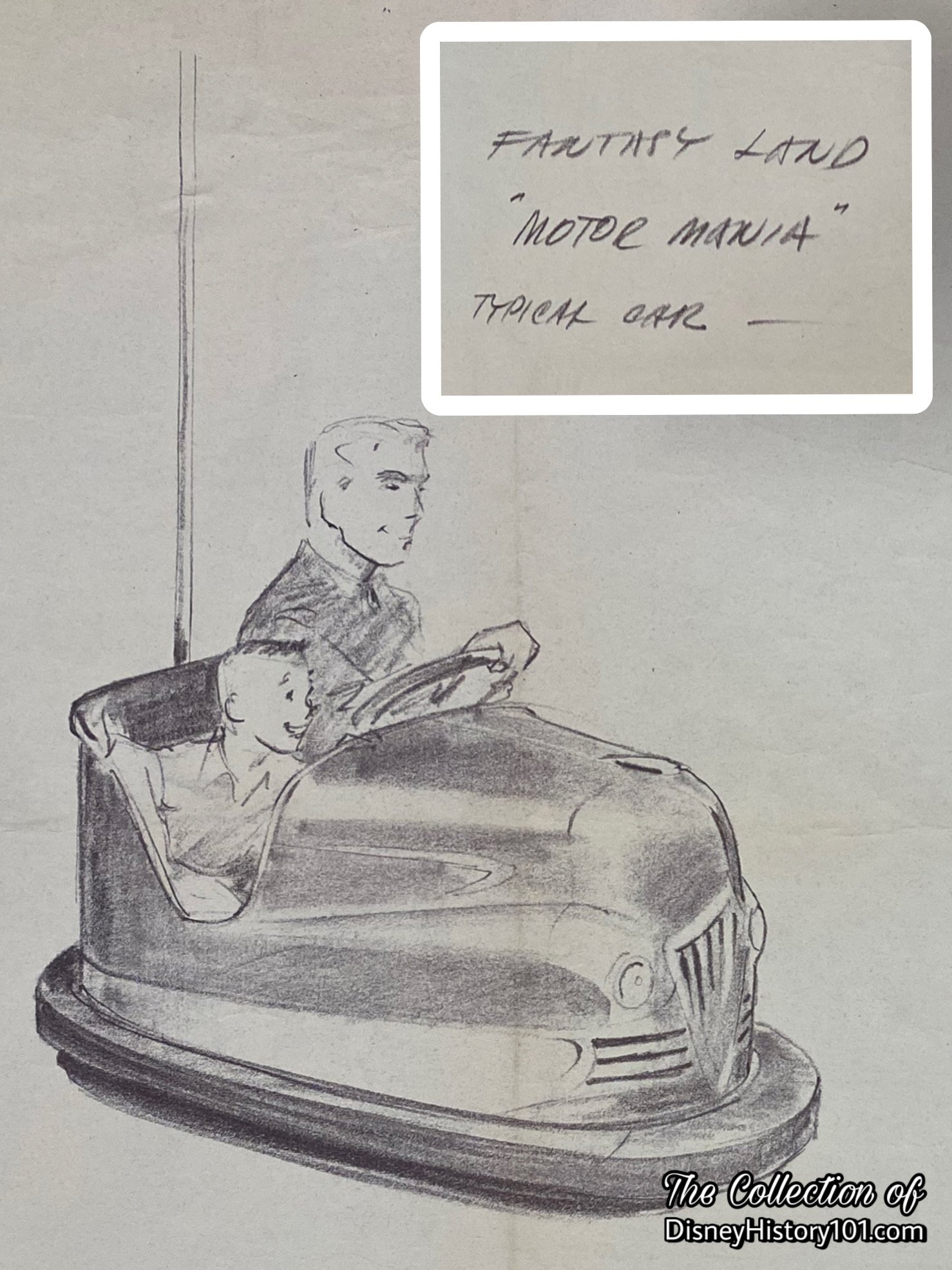
Meanwhile, there were several automobile-themed attractions being developed for Disneyland. For instance, Bruce Bushman (of Bradley & Kaye Amusement Company; 8506 Beverly Blvd., Los Angeles 48, Calif OLeander 5-8029) created a concept for Motor Mania intended for the Fantasy Land.
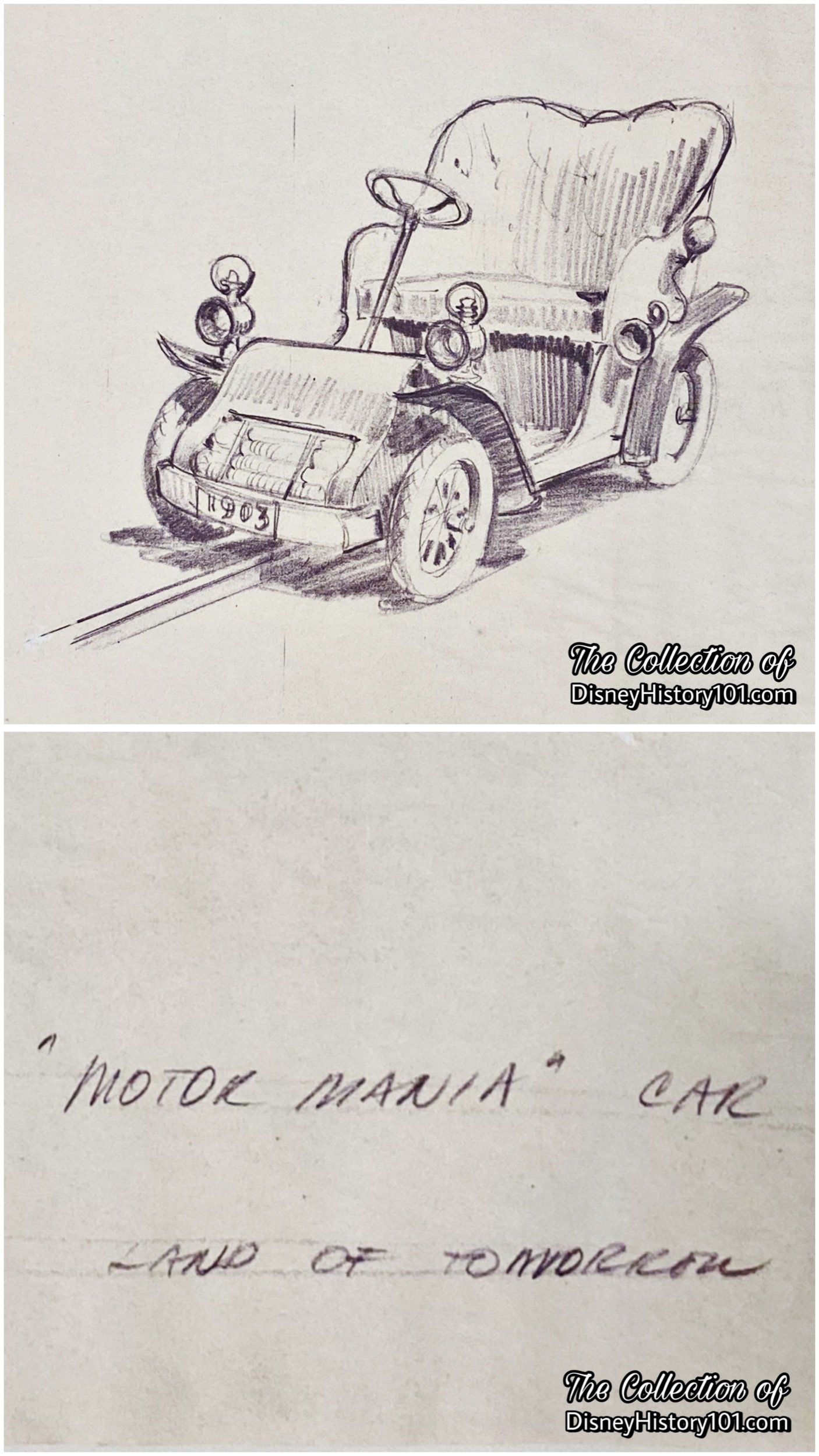
Bruce Bushman (of Bradley & Kaye Amusement Company; 8506 Beverly Blvd., Los Angeles 48, Calif OLeander 5-8029) also created a concept for MotorMania, possibly a Goofy-themed adventure intended for the Land of Tomorrow.
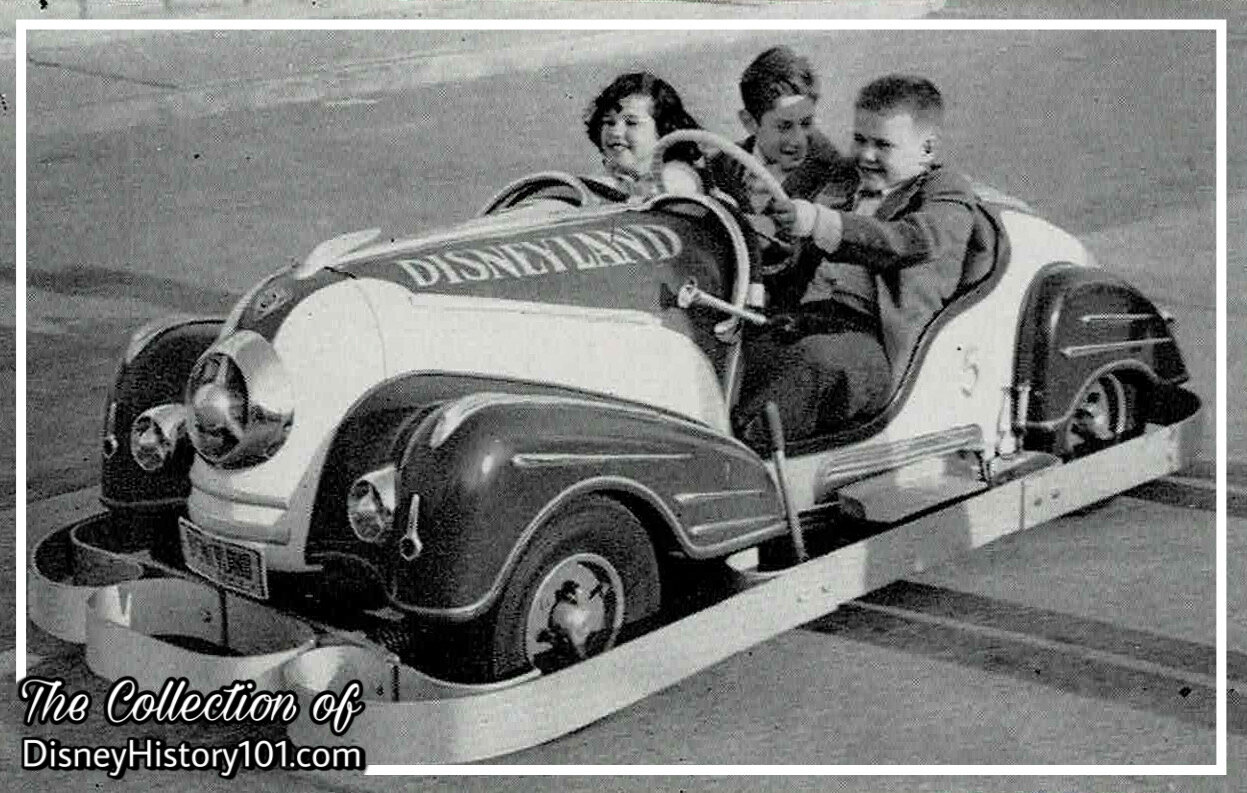
Photo of Early “Freeway of the Future” Automobile Prototype, Published in “Visit to Disneyland”, (“Panorama” magazine, Spring, 1955).
The same prototype vehicle (pictured above) and possibly the same driver can briefly be seen with passenger Kirk Douglas (while wearing his 20,000 Leagues Under the Sea costume), in “The Disneyland Story” (a “Disneyland” television show episode sponsored by American Motors)
According to “Disneyland’s Autopia” (published in Rod & Custom, November, 1955) : “Wanting a futuristic car that would be both safe and big enough for children or a child and a parent - or two adults - Disney’s engineer called in Johnny Hartman from nearby Montrose. Johnny is no newcomer to the game as he has been responsible for several successful track roadsters, street rods and special speed equipment for the reliable old Chevy 6.
Presently occupied with orders from the aircraft industry, Johnny nevertheless took time away from his machine shop to create and develop a functional chassis sturdy enough to take the bumps and bangs that the amusement park’s kids would subject the cars to during a 12 hour day, seven days a week, 365 days a year. “
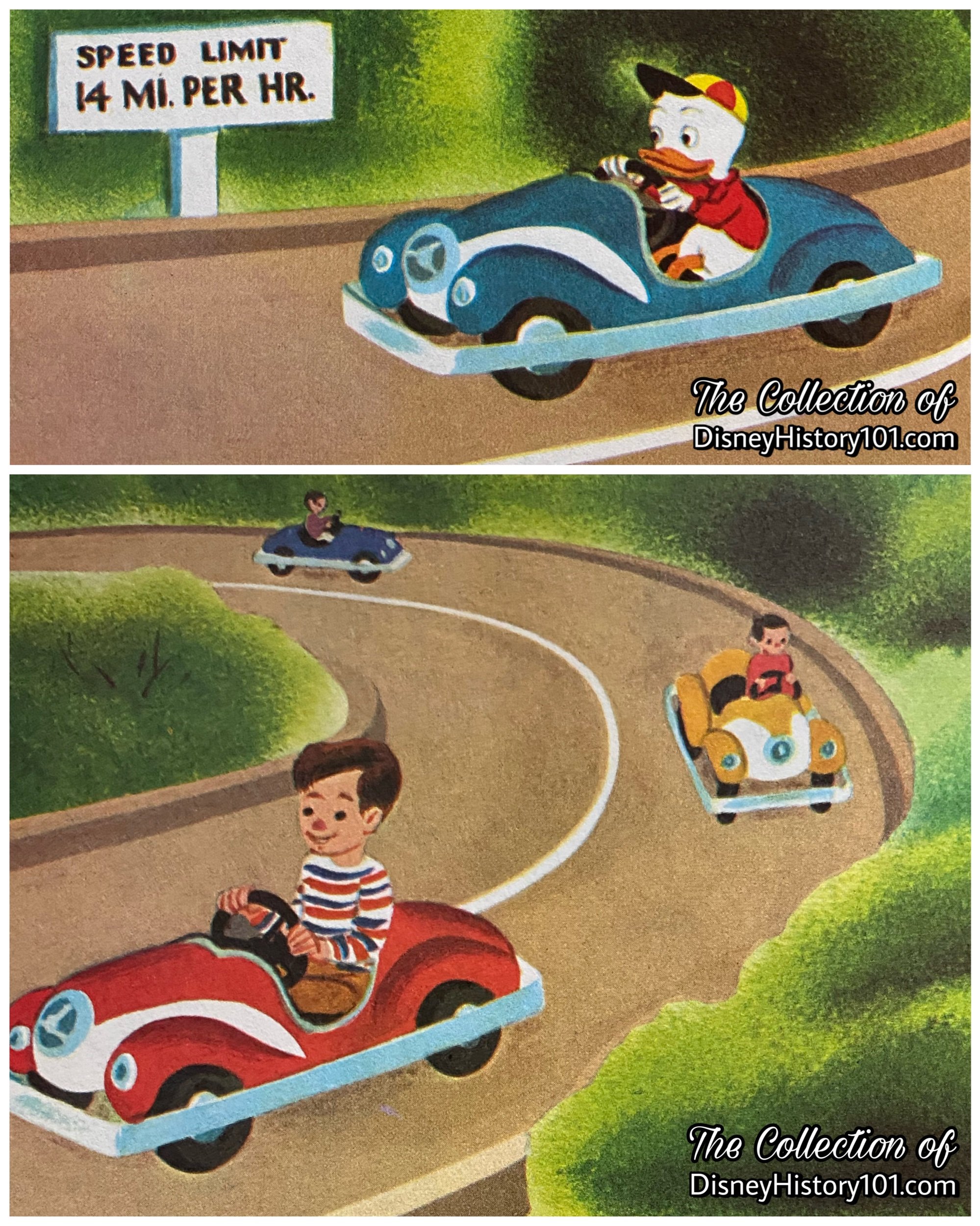
Huey Duck demonstrates good driving habits (with both hands) at the wheel of a Prototype Autopia Vehicle as it appears in “Donald Duck in Disneyland,” Artwork by Campbell Grant, published 1955
By July 1, 1954, George Whitney of Disneyland, Inc. directed Amusements, with Ron Miller overseeing analysis, philosophy, capacities, planning, operator training, and amusement procurement. It was about this time, that the future Freeway of Tomorrow was described in some detail, in the Disneyland Prospectus of 1954 (a revised series of documents that explained Disneyland for potential investors and sponsors). On pages 3 and 4 we read a rather unique description and mission statement of the timeless Disney Parks attraction :
“In the amusement area you will find the Freeway of Tomorrow, where a child can get into a two-seater gas-driven automobile and take it out on the Freeway of Tomorrow,…Here he can go on the overpass, the underpass, cloverleaf, and the straight away, and actually learn how to steer and accelerate the car. These cars will go up to 10 to 14 miles an hour. When they reach that speed, the governor cuts out, which keeps the car from going any faster. This particular ride replaces the Dodgem that you find in most amusement parks, where children bang into each other. In our ride, the child actually learns how to handle an automobile, and the ride is a safe one.”
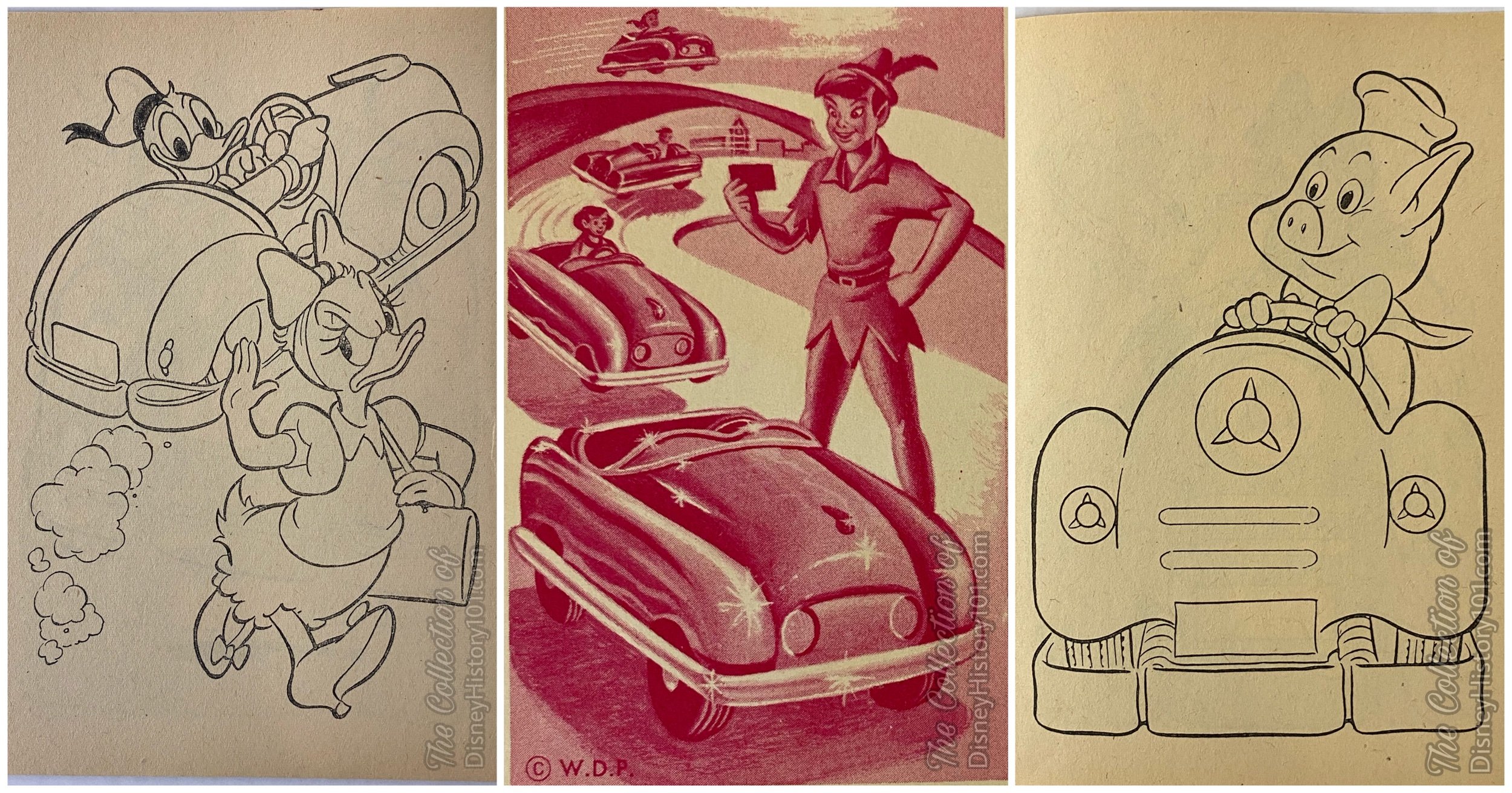
The Freeway of the Future and prototype vehicles make an appearance in licensed merchandise contained in Walt Disney’s Disneyland Fun Box by Whitman, c.1955.
The back of the Whitman card (center) reads:
Here's Peter Pan looking mighty proud of his new driver's license! Now he can drive one of the new miniature cars along the Autopia Freeway in Tomorrowland "Wonder if this road leads to Never-Never Land!" says Peter. "Might as well try it. Tinker Bell is waiting for me, and this beats flying!”
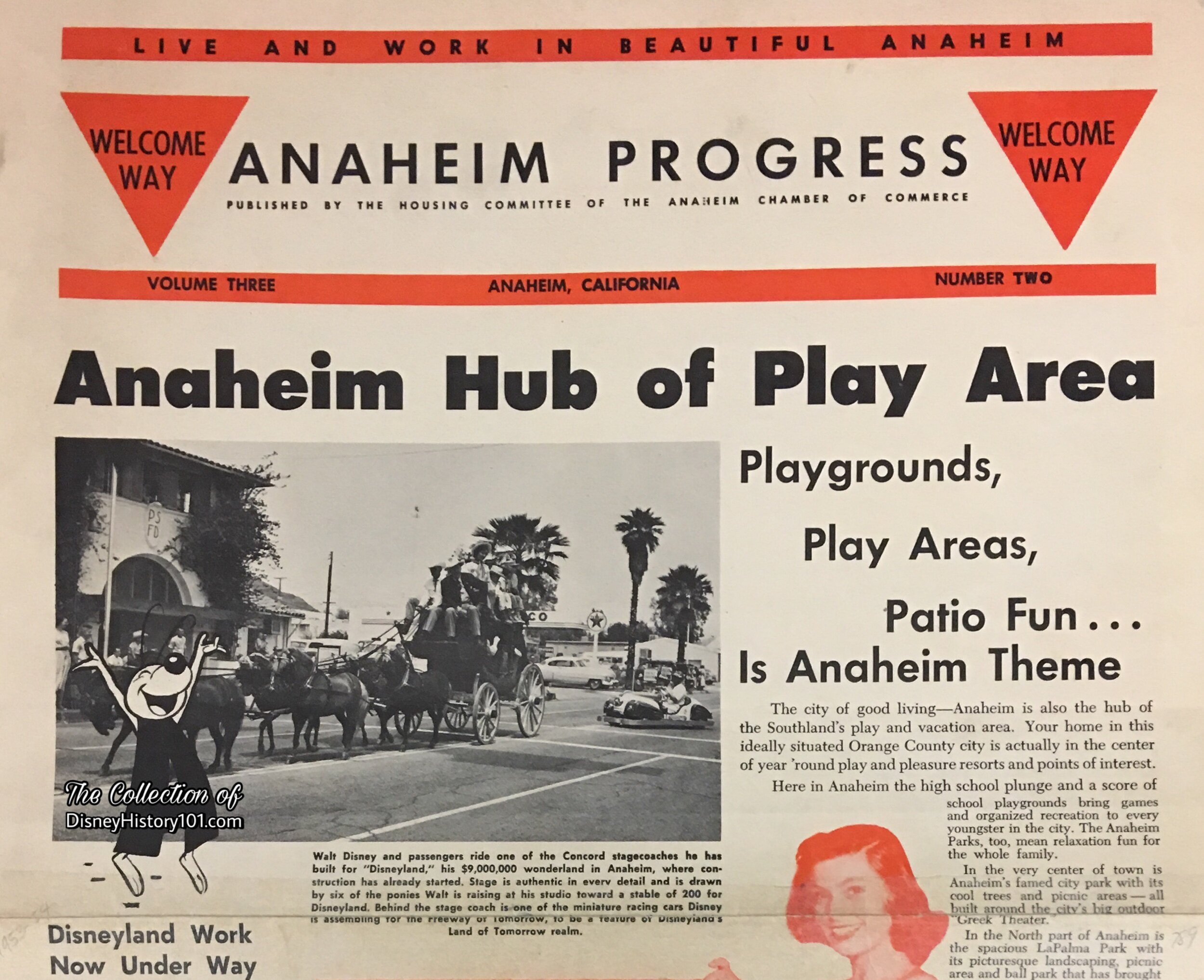
A Photo of Walt (and a Concord Stagecoach Followed by an Early Prototype Autopia Vehicle Seen In Palm Springs’ Desert Circus, April 26, 1954
Soon after Roger Broggie Sr. joined the Autopia project (in 1954), many different artists were utilized to develop concepts and drawings. The “Freeway of the Future” (with its twisting turnpikes) was included in Herb Ryman’s “Aerial View Over Disneyland,” which was included in the Disneyland Presentation Portfolio (prepared by Walt Disney Productions and WED Enterprises). The artwork in this portfolio was taken “back East to sell the Disneyland concept to prospective licensees”, according to Dave R. Smith (Founder of the Walt Disney Archives). Viable project Concepts (as this), were supported by a well-developed business case and built expectation.
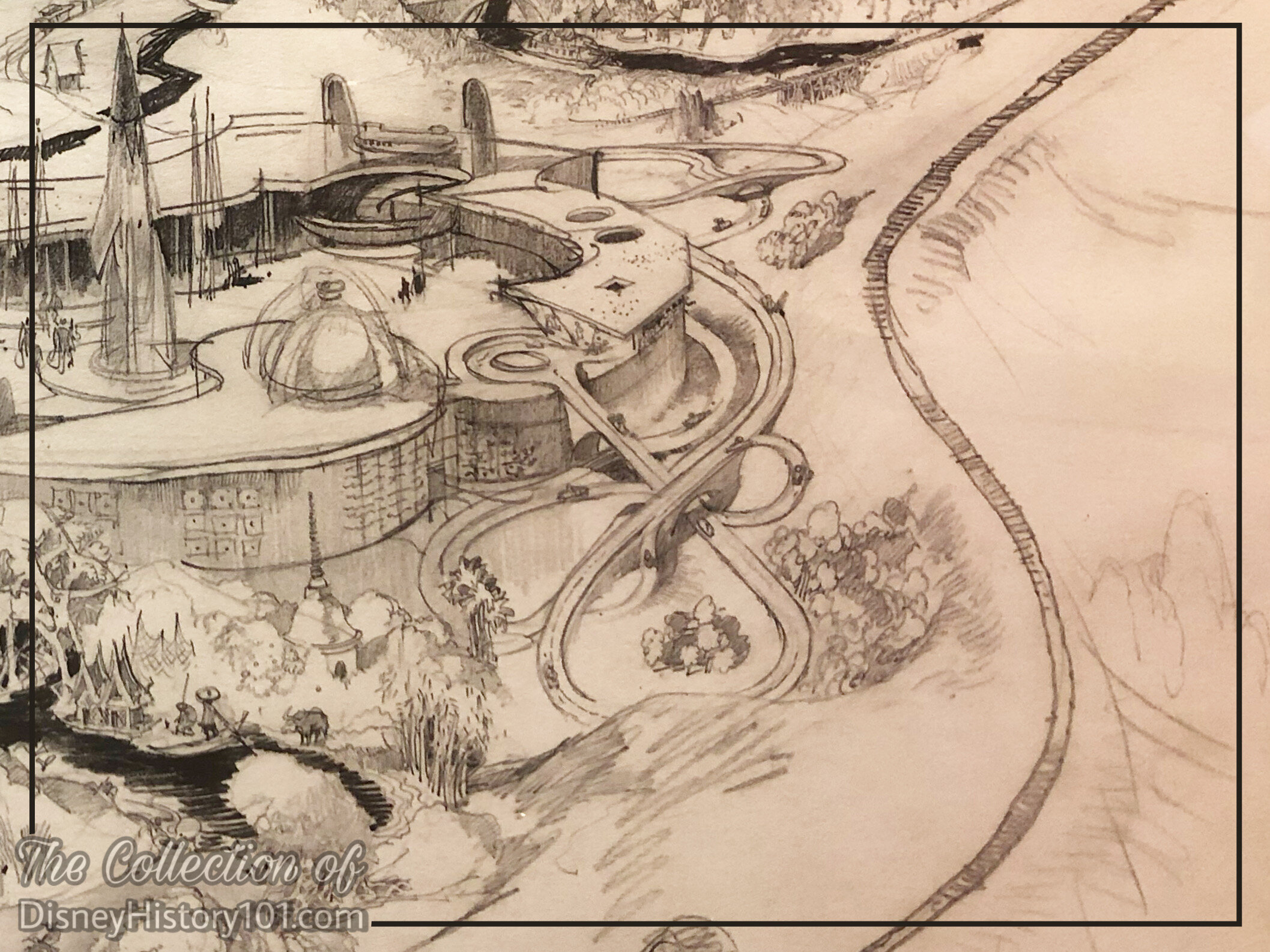
“Draw Concept” - Like a High Concept of Disneyland, the automobile utopia is depicted in Herb Ryman's "Aerial View Over Disneyland" Excerpt, originally produced September 26 & 27, 1953.
But one impressive 23-year-old true-life automobile “design impresario” was employed in the Walt Disney Studio Annex by June 1955, and involved in his first design meeting with Dick Irvine in October of 1954. Yes, Bob Henry Gurr (or R.H. Gurr), who had grown up a few miles from the future site of Walt Disney Imagineering, had previously received an “automotive styling degree” on a General Motor scholarship, at the Art Center College of Design in Los Angeles, and then went to work for the Ford Motor Company in Detroit. He had even been partially responsible for the design of the brand new Lincoln Continental. Now, after publishing four automotive design books through Dan Post, Bob was referred (by Ub Iwerks) to both Walt Disney and Roger Broggie, to dream up the design of the Autopia Mark Is.

Automobile design books by Robert Henry Gurr; “How to Draw Cars,” 1952; “ABC’s of Custom How,” 1954; “Automobile Design,” 1955
Initially on a part-time basis (during nights and weekends), Bob Gurr (for his first task) began re-evaluating and reworking Hartmann Engineering’s chassis. According to “Disneyland’s Autopia” (published in Rod & Custom, November, 1955) : “When the Hartmann Engineering Company completed the prototype, Robert Gurr–formerly with Ford during the designing of the forthcoming Continental–worked out the kinks associated with mass production.” For some undisclosed reason, following Bob’s re-working of the chassis, Hartmann Engineering lost interest, and dropped out of the Autopia project.
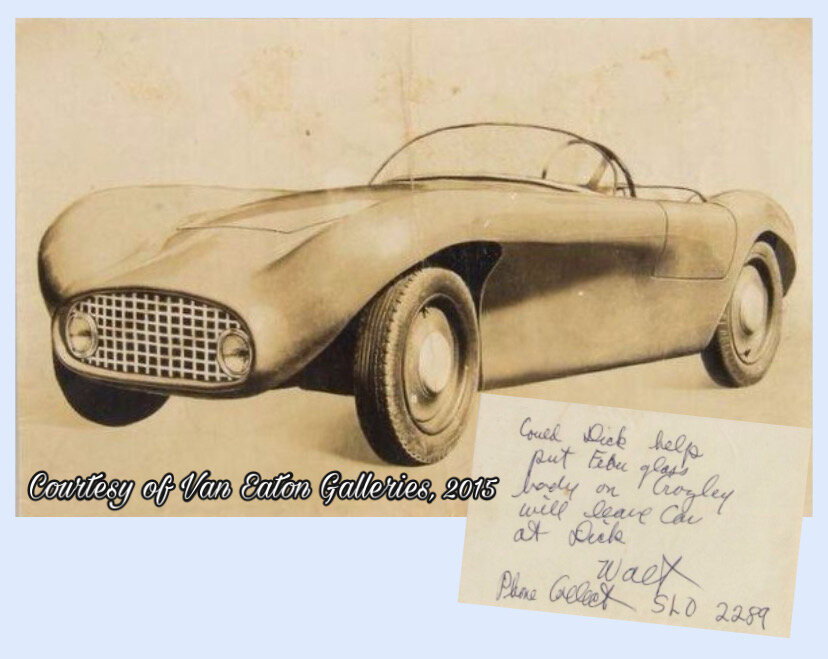
The fiber glass body was being researched by the time this illustration was made.
With Hartmann’s departure, Bob was brought aboard officially, on January 3rd, 1955, working out of the Walt Disney Studio Annex. Under the self-appointed title of “Director of Vehicle Design,” Bob was further singled out to develop a body for the vehicles. In interview with “E” Ticket Magazine, Bob remembered how he recalled that little yellow and green German car: “it vibrated horribly, and made so much smoke and noise…But that car was an inspiration to me, because I decided that I could show everybody that Disney could really have a terrific looking Autopia car.” And so Bob began by imagining Walt Disney’s Autopia car as a blend of the new 1954 Porsche 550 Spyder, and c.1953-1954 custom Italian Ferraris. You may have seen this c.1954 Freeway of the Future auto drawing inspired by the concurrent Chevrolet Corvette model (above), which has been attributed to either Bob Gurr. Note the similarity to the final Autopia Mark I body. In about a week, Bob returned with his first sketches. In time, many more drawings were proposed as changes were made, and once Walt approved the design, Bob created a clay sculpture of the initial final vehicle design.
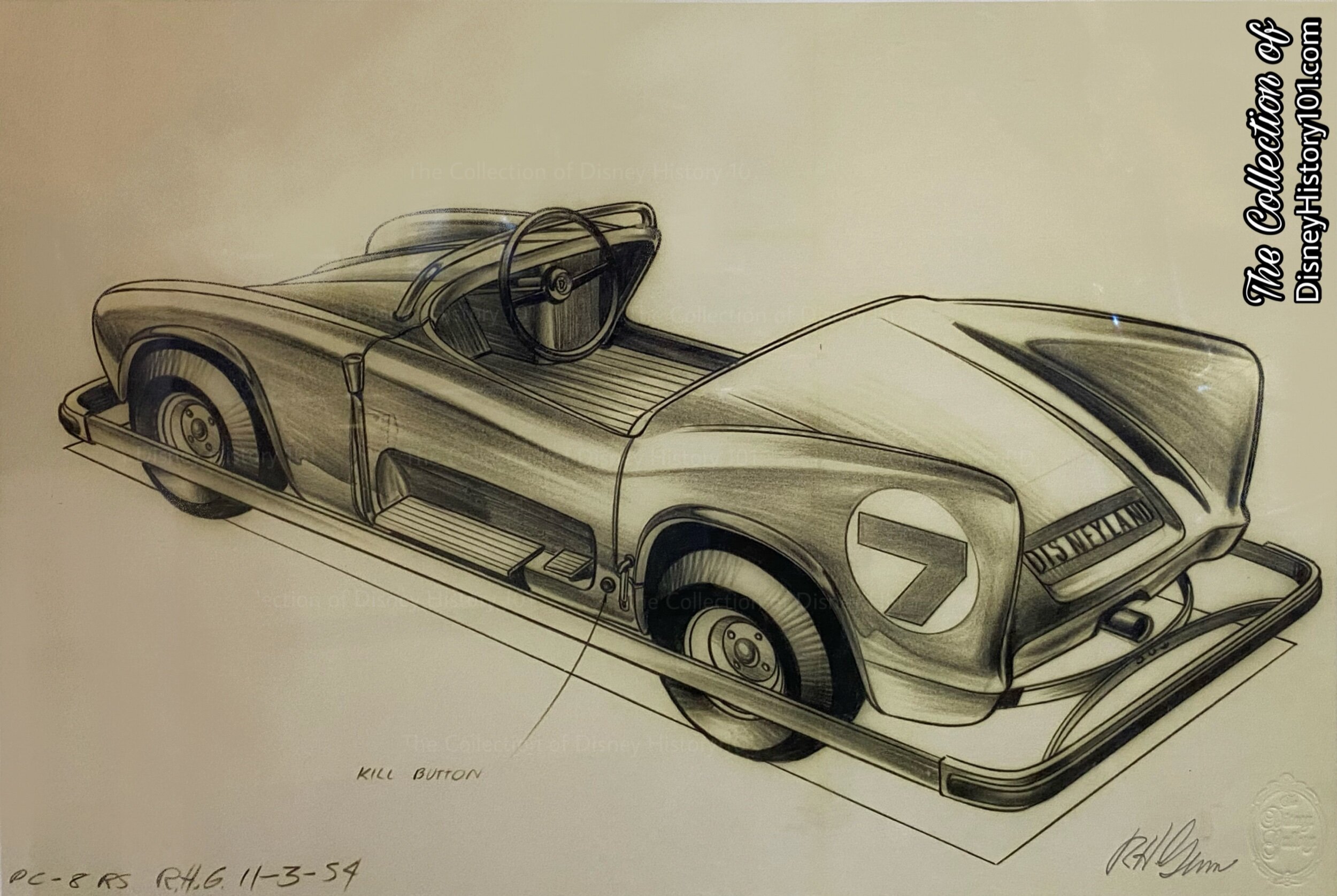
Bob Gurr drew a number of sketches from October to November 1954; Autopia Vehicle Limited Facsimile ; The Disney Gallery.
As mentioned, the finalized Autopia vehicle design aesthetic owes much of its existence to a true-life automobile engineer - Bob Gurr! According to “Disneyland’s Autopia” by Ralph Poole (published in Rod & Custom, November, 1955) : “Robert Gurr–formerly with Ford during the designing of the forthcoming Continental… designed a functional-looking sports car-like body. The bodies bear a slight resemblance to the best lines of Mercedes, Maserati, Ghia, and others all rolled into one.”
While Studio Machinist Roger Broggie was responsible for the bumper system as well as the design and manufacture of some parts (according to “Disneyland Inside Story” by Randy Bright), it shouldn’t surprise us to learn that the first fleet of Autopia vehicles largely originate, with a couple of true-life custom sports car fabricators! Yes, while many other opening day vehicles (from stagecoaches to dwarf’s mining cars) were constructed inside the sound stages of Walt Disney Studios, the entire fleet of 5/8-scale Autopia cars were uniquely constructed by a team of outside specialists - a small automotive engineering firm located in neighboring Newport Beach called MAMECO!
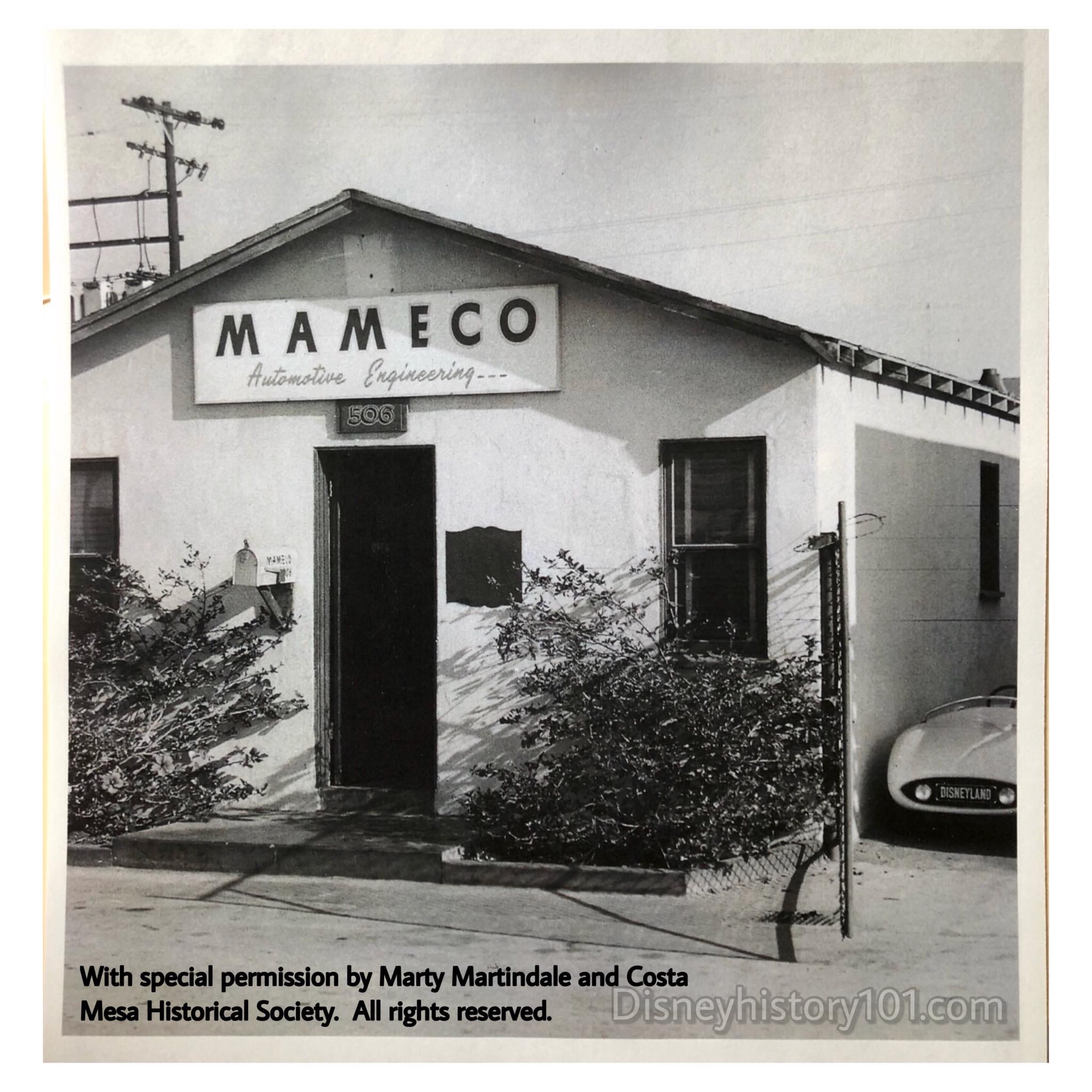
MAMECO, Newport Beach, 1955 ; Look on the side of the building - you can actually see one of the Autopia Mark I cars bearing a Disneyland license plate!
What is MAMECO? Marty Martindale answers, “MAMECO is an acronym for ‘Martindale And Mangels Engineering Company’.” MAMECO Automotive Engineering was just a humble Newport Beach Automobile Engineering business, and Owners and C.E.O.s Ted Mangles and Ed Martindale of MAMECO Engineering (in Newport Beach, California) had the honor of handling the historic contract for what would become a timeless Disneyland attraction. Marty Martindale (son of Ed Martindale) reminds us,"It was a different world back then. There weren't big factories where you would take [the concepts] and have somebody 'R&D' a car like that...They were all 'backyard operations'." Many of the parts were (not machined, but), purchased by Bob Gurr and then he would bring the parts to Ted and Ed's workshop. The duo (and Bob Gurr) can briefly be seen in the televised Disneyland anthology episode, “A Pre-Opening Report From Disneyland,” first aired July 13, 1955. In a short time, they would come to both research and develop Bob Gurr’s original designs, with a prototype ready by November of 1954. The prototype Autopia vehicle was approved, with a “top speed of 11mph, a 3 1/2 gallon gas tank and got 27 miles per gallon,” according to Disneyland Line (November 22, 1979). With that, Ted & Ed would begin to assemble the first fleet of forty Autopia Mark I cars!

"MARTY MARTINDALE on AUTOPIA MARK I"
How did a couple of Newport Beach kids come to build the first fleet of Autopia cars? Marty Martindale exclusively shares his father’s tale with Disney History 101, in “MAMECO’S AUTOPIA STORY”! WATCH the Disney History 101 People Featurette or READ THE FULL STORY HERE, and then continue your tour.
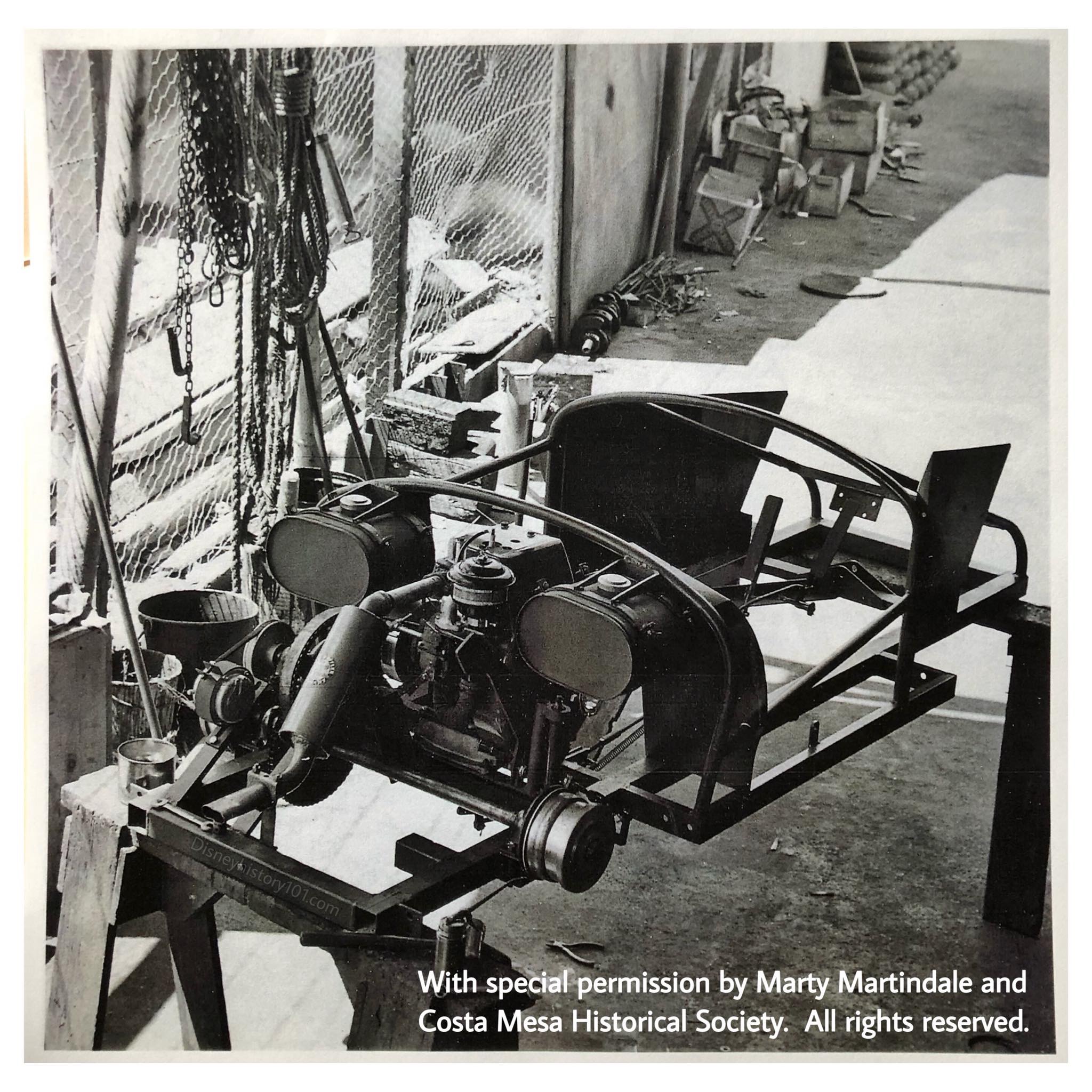
MAMECO, Newport Beach, 1955.
These three photographs offer rarely-seen “Vintage Views” of the construction phases of the original Autopia Mark I on the MAMECO lot in Newport Beach! Here, we get a look at that 160 lb. frame, fabricated from a 2-inch square cast iron tubing and 1-inch pipe, according to Bob Gurr. As mentioned before, the chassis and drive were first developed by Johnny Hartmann’s Hartmann Engineering Company of Montrose, California, and then redeveloped a little by Bob Gurr. Steel spindles, steel tubing, and 16-gauge sheet metal body supports were added to the chassis frame.
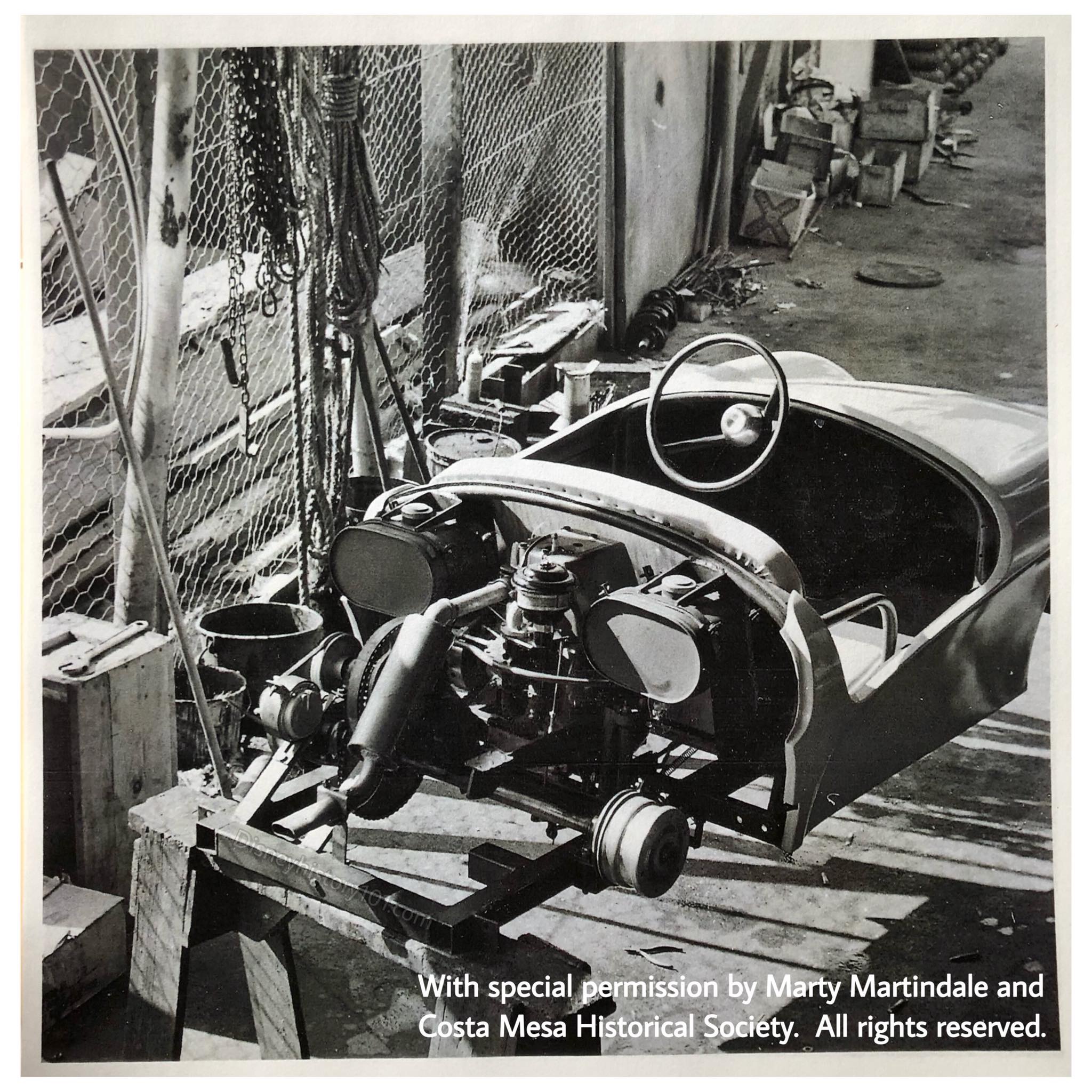
MAMECO, Newport Beach, 1955
Next, Ted Mangles and Ed Martindale assembled the cars to the specifications, under the periodic inspection of Bob Gurr. By the filming of the Disneyland episode “A Pre-Opening Report From Disneyland” (1955), the cars were to have a one-cylinder, 6 1/2 horsepower engine. The finalized engine turned out to be a one-cylinder, 7 1/2 horsepower”Gladden ‘75” cycle air-cooled, internal-combustion engine which was mounted in the rear, and drove the left rear wheel.
The cars were equipped with centrifugal clutch.
The final product was designed to pick up speed pretty quick! The Autopia Mark Is had the capability to move up to 25mph, though guests only travelled a mere 11mph with the governor installed on the carburetor (a speed “cap” that has continued to the present). “All the tyro need do is step on the gas and steer. A tripping device under the chassis insures that the brakes are applied as the ride ends”, according to Road & Track magazine (published September of 1955).
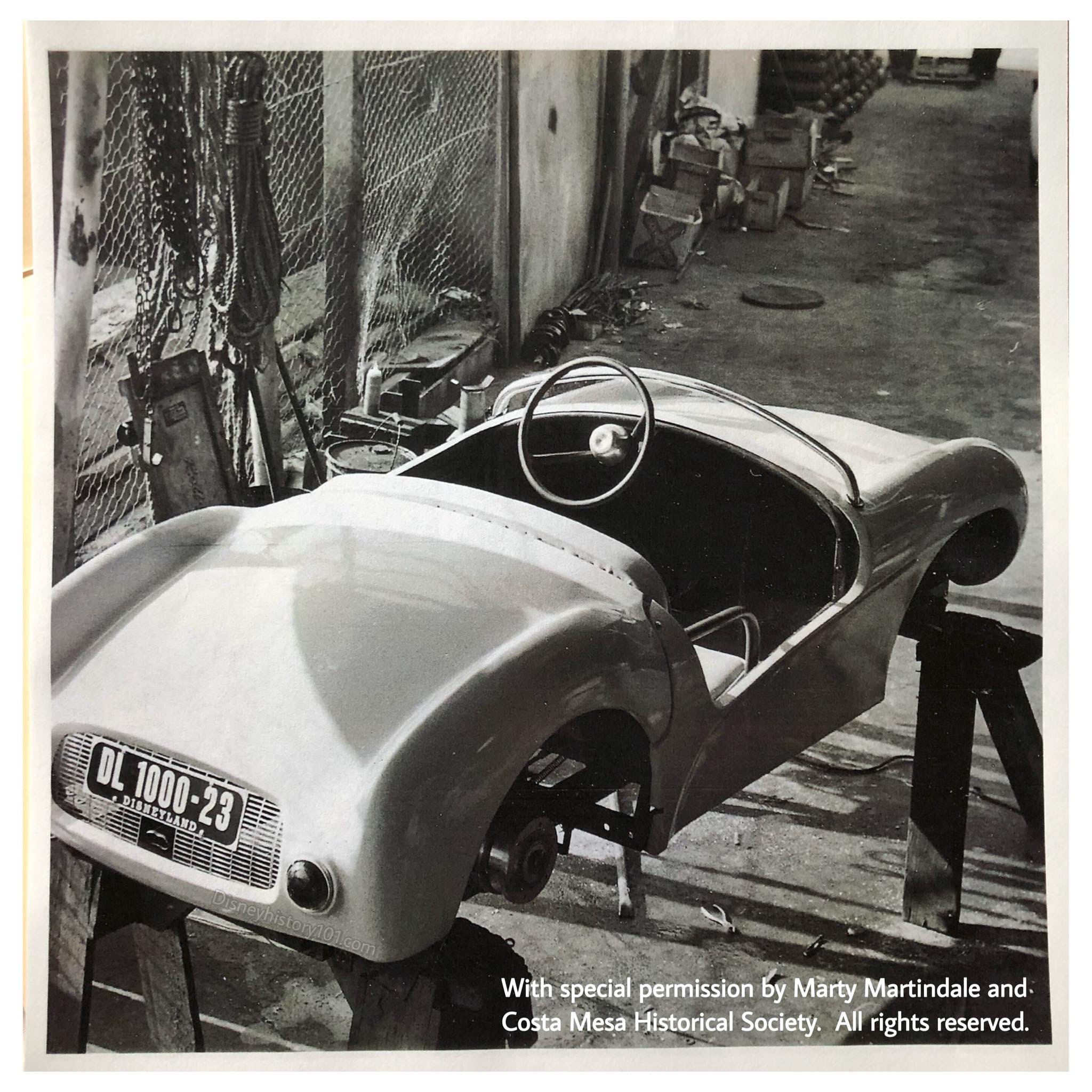
MAMECO, Newport Beach, 1955
In addition, the Autopia Mark I vehicles carried features to make control easy. Each vehicle had two accelerator pedals (“so located that either may be used conveniently according to one’s leg length”), an automatic transmission, a spring-loaded throttle and an automatic spring-loaded braking system, a 7-to-1 “rack and pinion” style steering system (to complete those hairpin turns), foam dashboards (for safety), chrome handrails (for loading and unloading), durable Naugahyde bench seats (the same material used for the RETLAW passenger cars of the Santa Fe & Disneyland Railroad), sealed beam headlights (powered by 6-volt generators). As a “sidelight”, these working headlights were soon removed from the Autopia vehicles, and working headlamps would not appear again until the Autopia Mark Vs appeared in 1958. Lastly, the fiberglass body (built by Bill Tritt’s Glasspar of Costa Mesa, California) was added! “The styling has just the right touch of Italian flavor and proportion is excellent at about 5/8 scale”, according to Road & Track magazine (published September of 1955). Including the light-weight body, the final Autopia Mark I cars weighed approximately 474 pounds each.
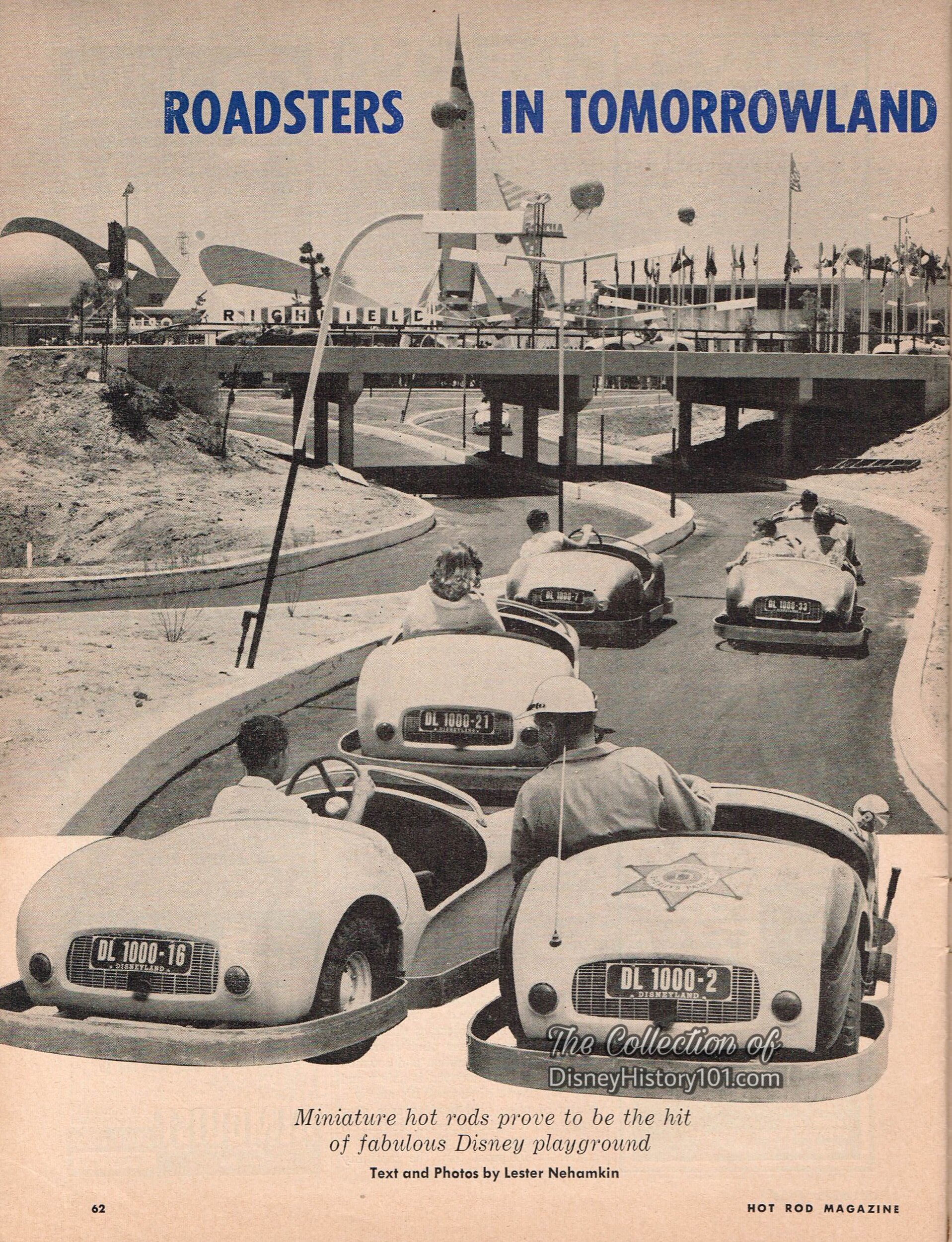
Hot Rod Magazine, (October, 1955)
MAMECO may not be a household name to most Disneyland fans, but this issue of Hot Rod Magazine, (published October, 1955) gave credit to this pair of designers, developers, and mechanics responsible for the first fleet of Autopia cars of Disneyland’s Freeway of the Future!
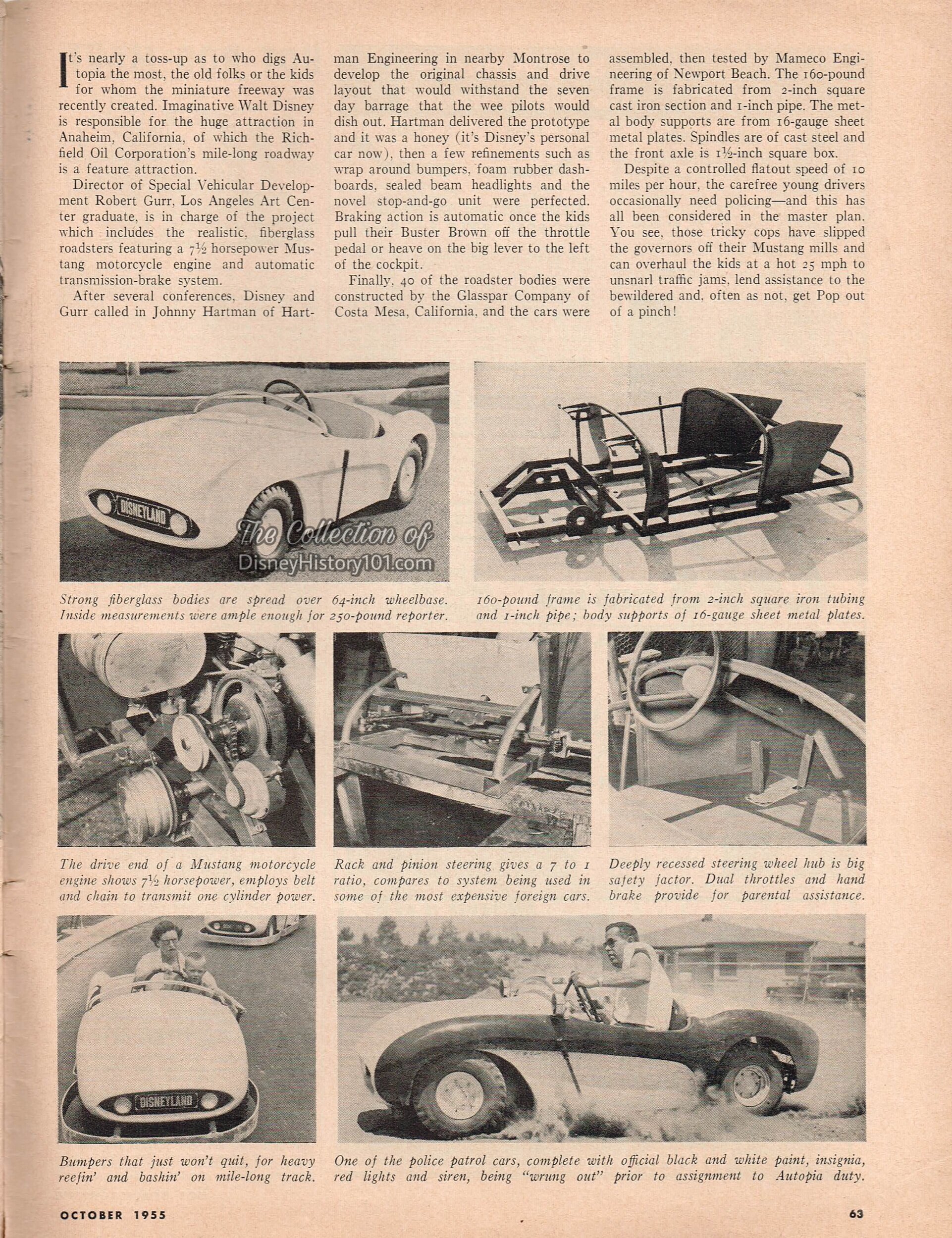
Hot Rod Magazine, (October, 1955)

"Strother MacMinn and Bob Gurr enjoy a demonstration"; a few fast facts about Autopia cars; Photo by Ralph Poole, published in Road & Track, September, 1955.
On April 2, 1955, one of the Autopia Mark I vehicles was ready to be tested and this occurred on the Walt Disney Studio backlot. Michael, (the 12-year-old son of Studio Machinist Roger Broggie Sr.; future Autopia Host) sat behind the wheel while while Bob Gurr gave direction to him. Test footage of the two was recorded for posterity, which has preserved to this day and may be VIEWED THROUGH THIS LINK: https://youtu.be/zOnCI-eWiFM.
Meanwhile, the search continued for corporations to fill roles as participant sponsors of Disneyland attractions. Individuals like Nat Wyncoff provided the essential orientation for curious lessees, selling them on the idea of Disneyland using various visual aids like sketches and one of Herb Ryman’s oil paintings of Disneyland. By May of 1955, Cornelius Vanderbilt (C.V.) Wood (Disneyland’s first employee, responsible for much of the hired talent during Disneyland’s construction phase) had approved the “Richfield Autopia” as the official name of the attraction! Soon, one authorized “Disneyland Information & Nomenclature List” (prepared by Bill Cottrell of Disneyland Inc., May 25, 1955) announced that “the name of the car is the Disneyland Autopia” as the “official and authorized Nomenclature” of the “Disneyland ride and amusement.” The same document elucidated the number and types of “Disneyland Autopia” vehicles in the following way : “32 gasoline motored cars on the Autopia Freeway…4 Police Cars… 1 Disneyland Autopia Special… 3 Extra Cars.” The three extra cars were used for promotional events and parades outside Disneyland.
About this time, the following final plans had been approved by Milt Albright (of Accounting) and Bob Burns (of Merchandising). F. M. Franz, manager of operations for McNeil Construction expressed: "We feel sure there has never been anything built like this in Southern California, or elsewhere in the United States. Many of the items were constructed from artist’s sketches.”
The construction crews didn't begin work on any of Tomorrowland until six months into the project. The Autopia FREEWAY was about ½ scale. Mounting height of 20-watt fluorescent lamps was 9 feet 6 inches above roadway, spaced on 20-and 30-ft. centers.
"Autopia Entrance Pylon and Canopy"
In 1955, Herbert Ryman prepared sketches for the Autopia "Entrance Pylon and Canopy" with Richfield Eagle and name overhead. The Richfield Autopia entrance awning was designed to resemble a fueling station. The original sign over the queue (with its bold Richfield name in lights) was partially designed by Italian Art Director Gabriel Scognamillo (who helped design the Upjohn Pharmacy facade, the Tomorrowland Automat, those towers bearing flags over the Tomorrowland Exhibit Halls, as well as those yellow canopies around Tomorrowland, and the four Richfield fuel pumps near the Richfield Autopia Loading Zone). The original Richfield Autopia design was then manufactured by QRS Neon (of Los Angeles), was renown for providing neon signs to numerous service stations and shopping centers around the county of Los Angeles. QRS Neon won the bid, gathered the necessary neon tubing and other materials, and manufactured the custom letters - all in the nine to ten weeks up to Disneyland’s Grand Opening Day! All of the final signage and props (like road signs and streetlights) met the approval of both Cornelius Vanderbilt Wood (Disneyland’s first employee, responsible for much of the hired talent during Disneyland’s construction phase) and Mr. H.T. Hutchinson (Assistant General Sales Manager of Richfield Oil Corporation). By this time, Mr.Hutchinson (Richfield Assistant General Sales Manager) was arranging for four true-life Richfield fueling pumps and two Richfield billboards to be sent to Disneyland for installment on the arranged concrete foundations and bolts near the attraction queue entrance.
The ROADSIDE bulletin in the Autopia was lighted by PAR-56 spots and large luminous sign letters.
Last, but not least, Morgan Bill Evans (of Evans and Reeves) did what he could to complete the illusion that the cars were navigating the half-mile of highways through the colorful countryside with a few five gallon trees that were left to “greenscape” Disneyland. Some of these details were being completed, during the time that television crews (under the direction of Cam Pierce, Irwin Stanton and Harold Huntsman) were planning, setting up the network of equipment, and rehearsing from the surveyed locations and control rooms (some of which were located near the Autopia).
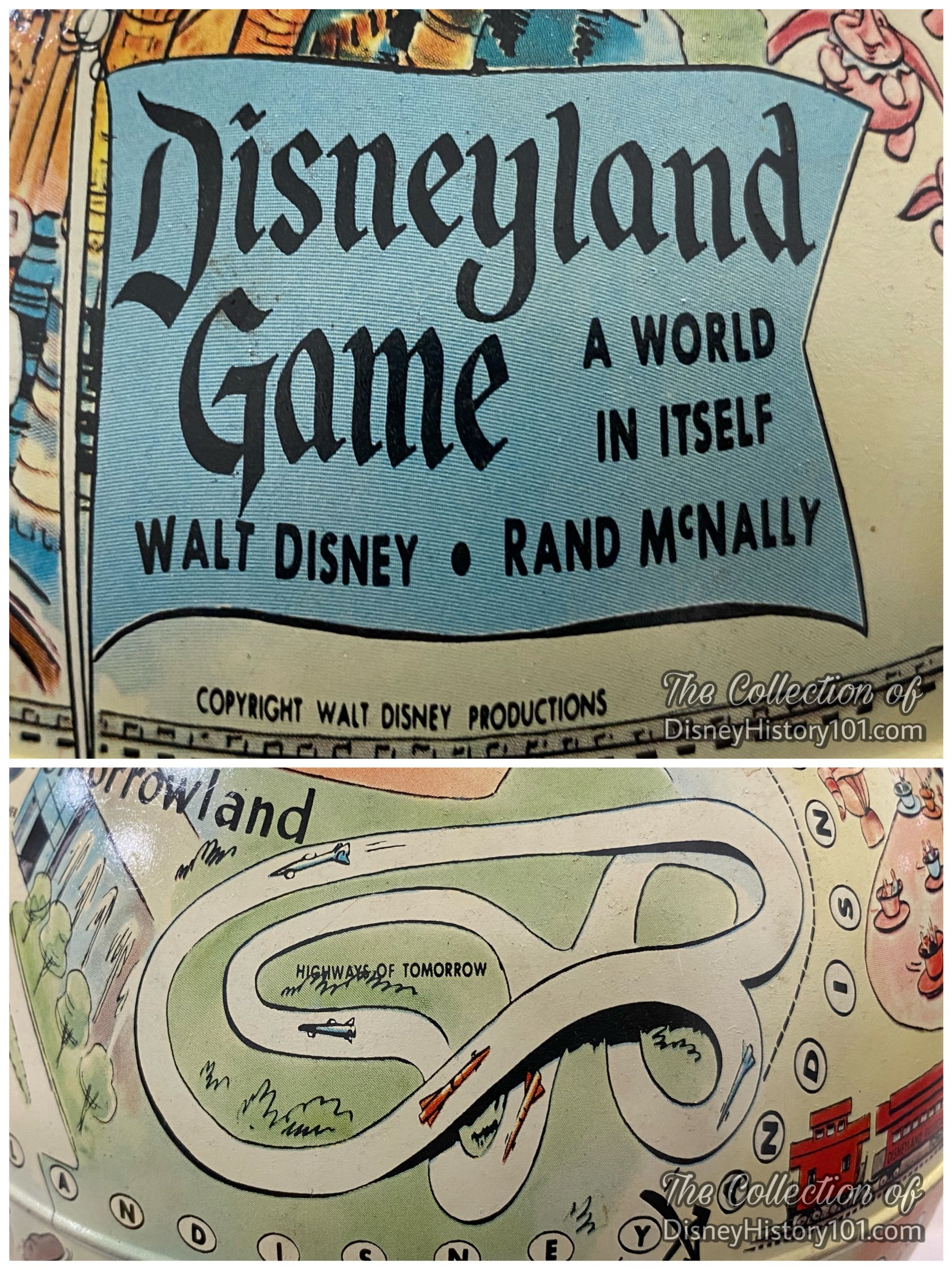
The Highway of Tomorrow appeared on the Disneyland Game by Rand McNally.
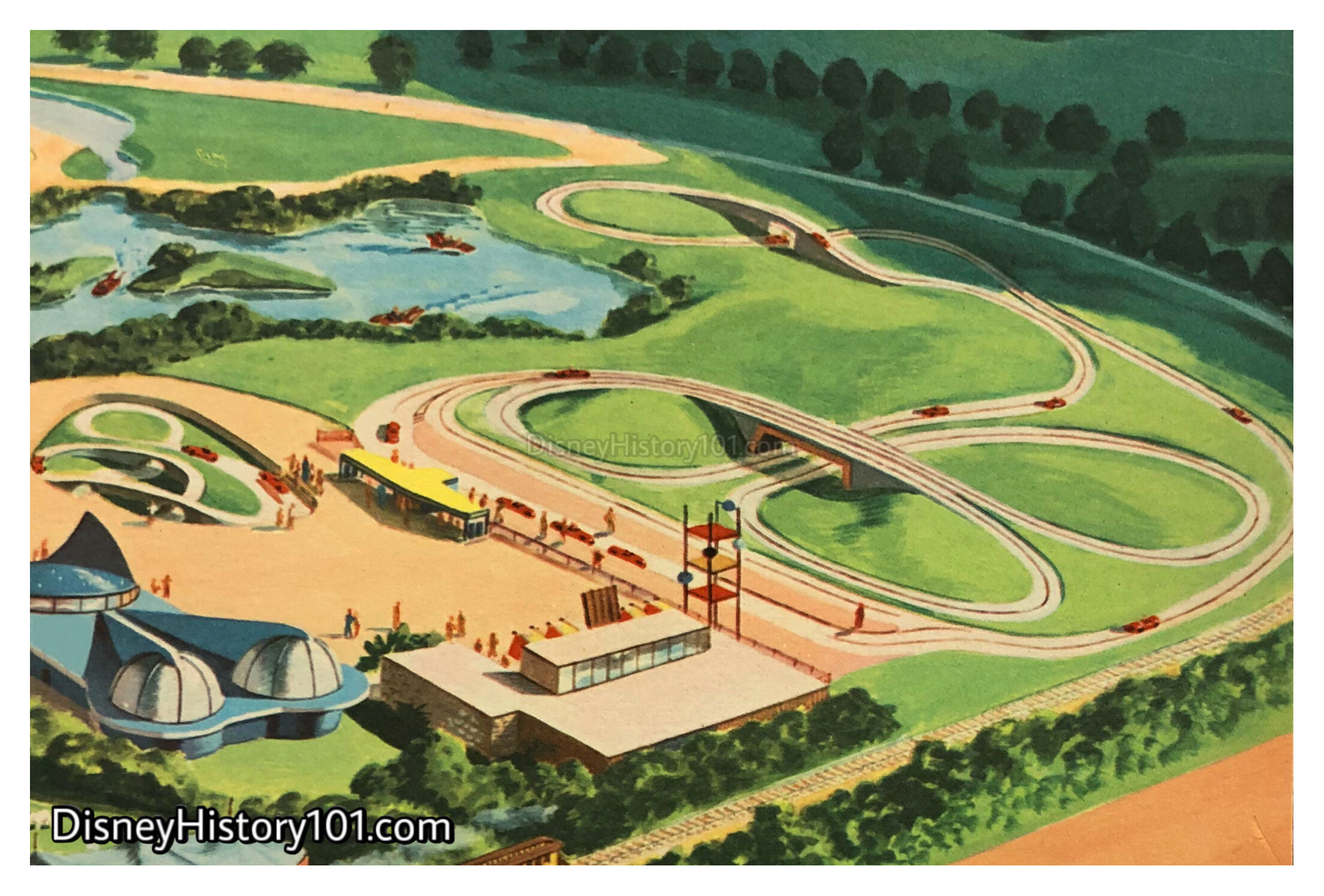
Mattel “Disneyland Musical Map” Record Set Illustration, 1955
“The Freeway of the Future”
The first drawings of the “Autopia cars and Freeway” lanes and flow of traffic were completed by Walt Disney Studio artist Marvin Davis, in 1955. A few months later (based on Marvin’s concepts), Mattel manufactured the “Music Map of Disneyland”, and with it, the above illustration (produced for the early licensed Disneyland product). The map granted a glimpse of many Disneyland adventures, including the sweeping curves of the “Freeway of the Future” - the “Autopia Freeway” in Tomorrowland! In the artwork (to the left), you’ll notice a few more ramps and overpasses. Was this an error? Did the artist take some creative liberty? Was this an indication of a future expansion or attraction (i.e. the Junior Autopia or Midget Autopia) as early as 1955? There is a likely explanation. Contemporaneous “Proposed Diagramatic Layout of Disneyland” (Marvin A. Davis’ plot plan, produced for WED Enterprises, by September 12, 1953) depict what is called a “Test Ramp” connected to the “Drive Yourself Freeway of the Future”.
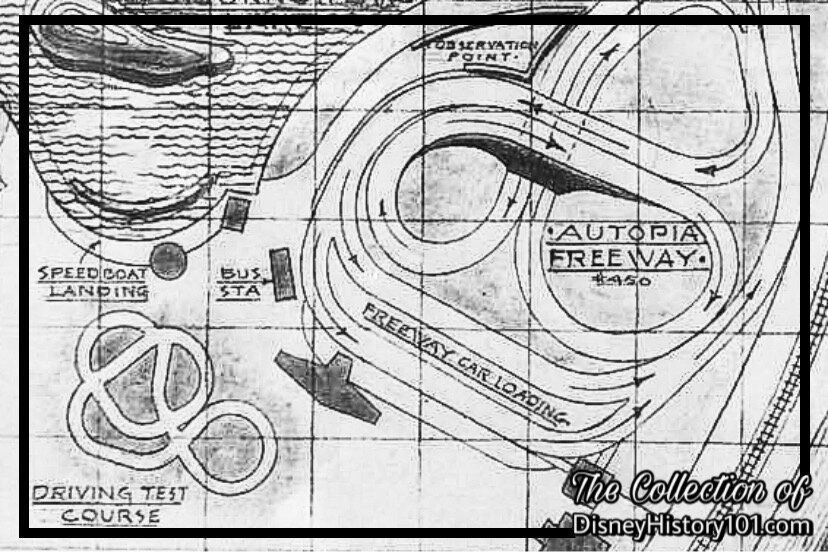
Marvin Aubrey Davis’ “Plot Plan of Disneyland” produced c.1953; Note the “Bus Sta” (Bus Station) and “Driving Test Couse” Details near the model Autopia Freeway.
The same aforementioned description of the Freeway of Tomorrow contained in the Disneyland Prospectus of 1954 continues : “In the amusement area you will find the Freeway of Tomorrow, where a child can get into a two-seater gas-driven automobile and take it out on the Freeway of Tomorrow, but first he must pass his test ; that is, we put him through a little obstacle course. If he passes the test, which everyone does, he then gets a DISNEYLAND Operator’s Card which allows him to go on the Freeway.”
Whether this aspect of the attraction would be realized (or, not), one thing was sure - while rockets transported guests from Disneyland Spaceport to the Moon (and back), the Autopia would speedily transport guests in sleek sports cars, through the highways and byways of Tomorrowland!
Some early Plot Plans of Disneyland (and the “Autopia Freeway”) also featured a “Bus Station” in the details (*See the Marvin Davis “Plot Plan of Disneyland Excerpt featured Above). Bob Gurr had actually developed the plans for a small Autopia Bus that would have carried younger Guests along the Autopia Freeway of the Future, but alas those plans were never realized.
As of June 2, 1955, C.V. Wood Jr. sent an Inter-Office Memorandum to Walt Disney regarding the best estimates that could be obtained at the time regarding the completion status of individual sections of the Park and Opening Day. C.V. wrote: “Autopia: Roadway - okay. Entrance tight due to the steel delivery (should make it). Cars - okay. Landscaping decision needed badly.”
The pre-opening “Go Santa Fe to DISNEY-LAND” brochure printed sometime between July 4 and July 18 mentioned the “Autopia” among the rides and amusements to open in Tomorrowland. The media described the attraction: “Autopia Freeway-32 cars plus four police cars, one Disneyland Autopia Special and three extra cars.”
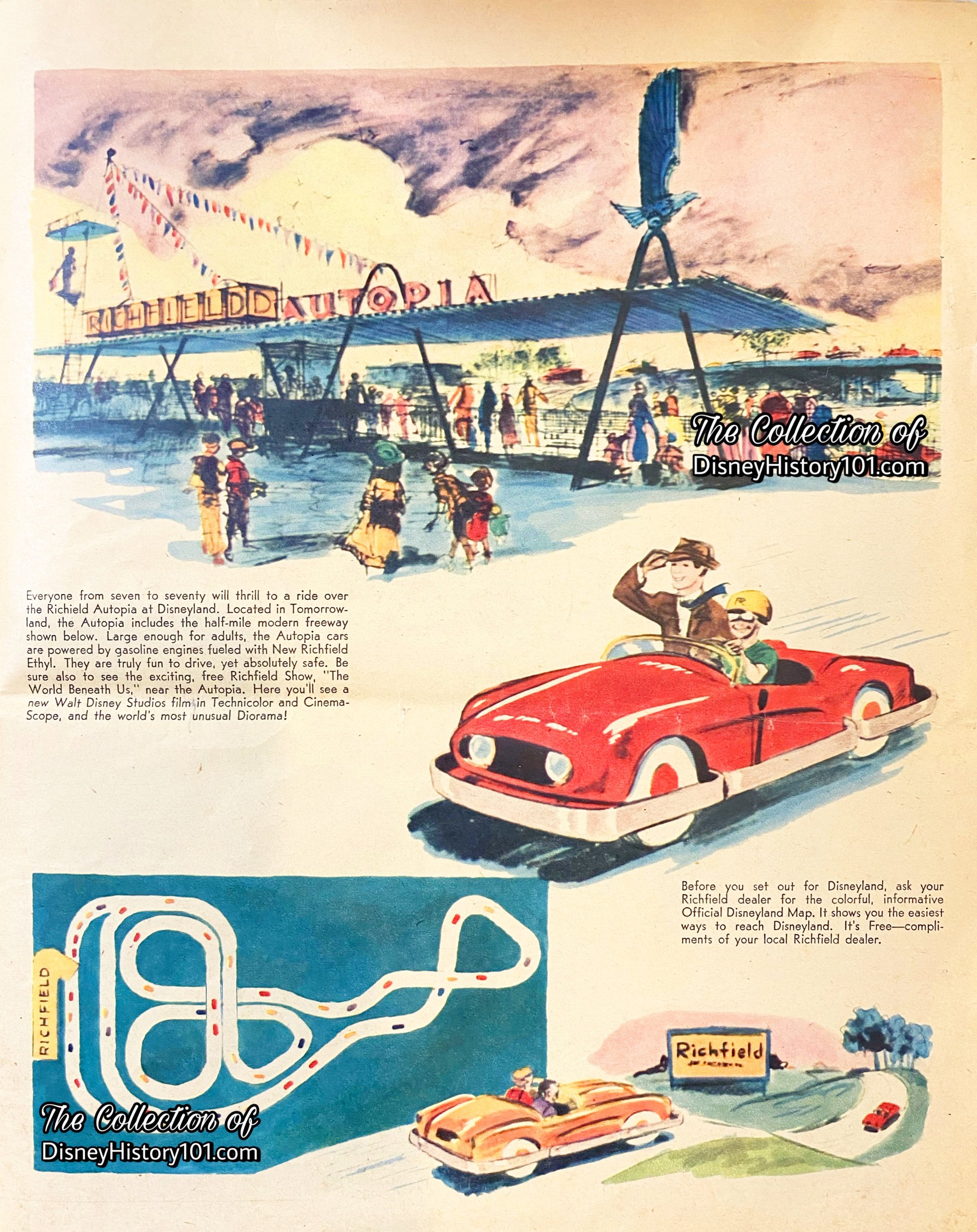
Richfield Autopia Freeway of the Future by Sam McKim appeared in a "Disneyland" Insert Excerpt , (published July 15, 1955)
Two days before the televised Press Preview Day, these newspaper inserts gave readers a preview of the Richfield Autopia Freeway of the Future at Walt Disney’s Disneyland.

“…and They’re Off!!!”
Two days later, the Autopia Mark I’s and the Freeway of the Future officially debuted at Disneyland, during Disneyland Press Preview Day (held on July 17th, 1955)! According to “Walt Disney Disneyland” (first published 1964): “Back in 1955, however, Autopia was a taste of the future for many visitors to the Park. Few states in America had an ultra modern expressway system that could match the one at Disneyland in those days.” While much of the surrounding landscaping was incomplete, this attraction was still reckoned among “Disneyland rides and amusements” that “will delight the very young, the teen-ager, young married couples, the middle-aged, and grandparents alike”, as some of the Vintage Views testify [Anaheim Bulletin “Premier Souvenir Edition - Walt Disney’s Magic Kingdom - Disneyland” Insert ; Friday, July 15th, 1955]. “55er” Marion Schawacha recalled opening day: “The waiting lines were all mixed up and criss-crossing each other. The line from Autopia would end up at the Space Bar, and vice versa. All you could see in Tomorrowland was PEOPLE!”
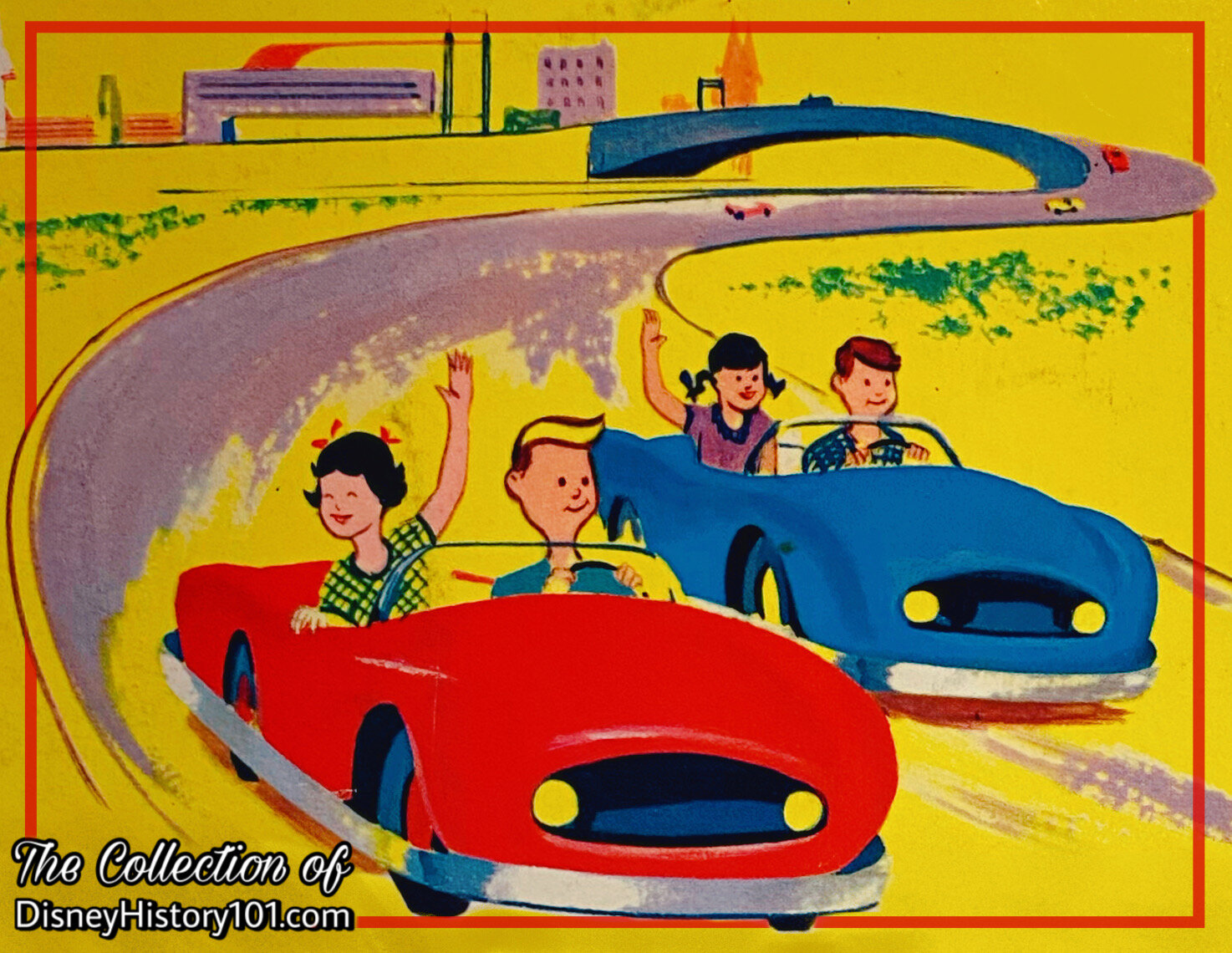
“Here youth may savor the challenge and promise of the future in the “Souvenir of Mickey Mouse Club” Richfield advertisement excerpt depicts Guests aboard passing Autopia vehicles, December of 1955.
Before reaching the attraction, guests (6 or 60 years of age) were tantalized by the Autopia attraction poster (featuring both adult and junior passengers) painted by Bjorn Aronson. Some of the 40 vehicles (“32 cars plus four police cars, one Disneyland Autopia Special and three extra cars”) were “ready to roll.” There were at least three “black-and-white” cars (out of four) that shuttled celebrities (like Don DeFore & family and Jerry Colonna) along the parade route during the Disneyland Press Preview Day Parade (seen in photos and reels). Then, some of the first guests sat behind the wheels of 37 Autopia Mark I’s - Ron DeFore (“Ozzie and Harriet’s next-door neighbor) with his wife and children, actress Jeanne Crane, Frank Sinatra (and Frank Sinatra Jr.), Sammy Davis Jr., and radio and film actress Gale Storm (and her children). Some of these things are preserved through Opening Day documentation.
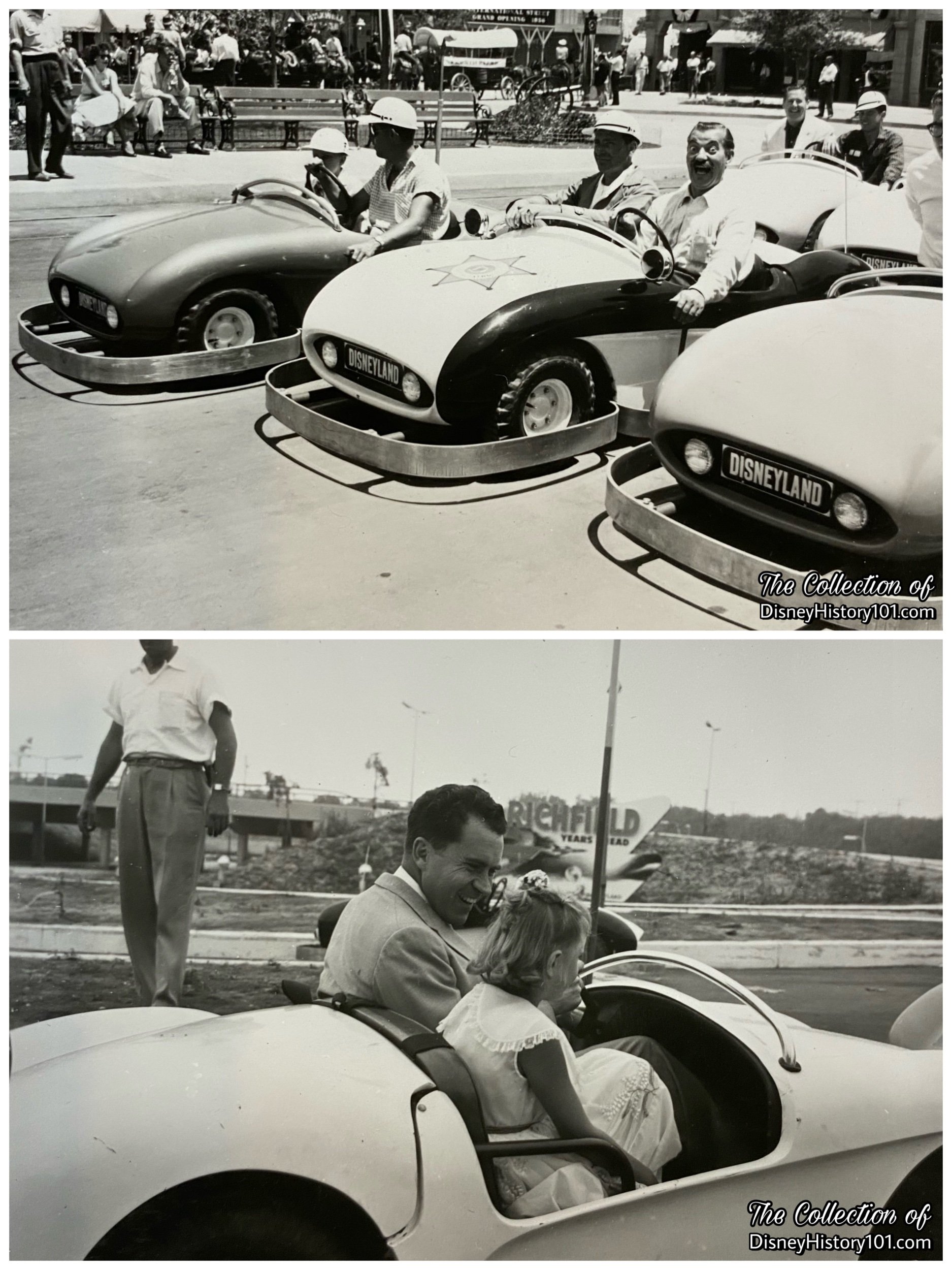
Promotional press release photos capture opening day fun of both Jerry Colonna and Richard Nixon on the Autopia; ©️Walt Disney Productions.
As to the excitement of guests of Press Preview Day (and the first operational day of the Autopia), Bob Gurr recollected : “Twice as many people showed up, and they all had the attitude that they were going to ride those cars no matter what. Instead of waiting in line like they should, they were jumping over the fence and running up the track, and commandeering cars coming back into the Load Area, and pulling people out of the cars and taking over the cars themselves. Nobody had anticipated this, and it was a complete ‘madhouse.’”
“The Show Quality of The Disneyland Autopia Special“
As a “sidelight”, it’s a known fact that Walt often stopped by the Autopia (as he did with other attractions) to speak with Host operators (*according to Attractions Working Lead Chuck Abbott, who began operations on the Autopia during August of 1955). By November of 1955 Walt would have stopped to speak with Sr. Autopia Foreman Frank E. Smith. But when Walt wasn’t chatting, he was driving his very own custom car. And when Walt wasn’t driving his car, the sparkling metallic-maroon vehicle sat on a turntable display near the attraction queue’s entrance (that is, when it wasn’t touring the country as part of a promotion for the Park)!
Of the entire fleet of 40 Autopia Mark I’s, this was one very special Autopia Mark I. It was built (under the direction of Bob Gurr) personally for Walt Disney - the "Disneyland Autopia Special" (as it was called in “The Disneyland News” (Vol. 1 ; No. 2)! Bob Gurr recalled (to “E” Ticket Magazine, Summer 1997) making “special spun wheel covers” and “a pattern for some special brass knock-offs to hold the spinnings over the wheels. The car’s bumper was an actual 1953 Pontiac upper bumper bar that we sliced, re-welded, a re-chromed to look like a new bumper.”

Walt’s Custom show car - the "Disneyland Autopia Special" Mark I Vehicle at Disneyland, 1956.
According to Road & Track magazine (published September of 1955), “Walt Disney’s personal ‘Autopia’ machine has neat bumpers, chrome wheels, [and] special upholstery.” The seats were covered with “red nylon… and off white leatherette,” according to “The Disneyland News” (Vol. 1 ; No. 2). Instead of a “grab bar” there was a plastic windshield. In addition, Walt’s car had “No governor [meaning, that he could go as fast as the engine would allow]”, according to Road & Track magazine (published September of 1955). The Disneyland Autopia Special was used during a few special events outside Disneyland, like the two-night Disneyland Nights at the Hollywood Bowl stage show with Bob Gurr (wearing a coonskin cap) and Disney Characters behind the wheels, held a month before the Park opened in 1955. The “Walt’s Car Exhibit” was apparently still on display by September 28, 1958, listed as a “Land Improvement” and Disneyland, Inc. Park Asset valued at $1,764.
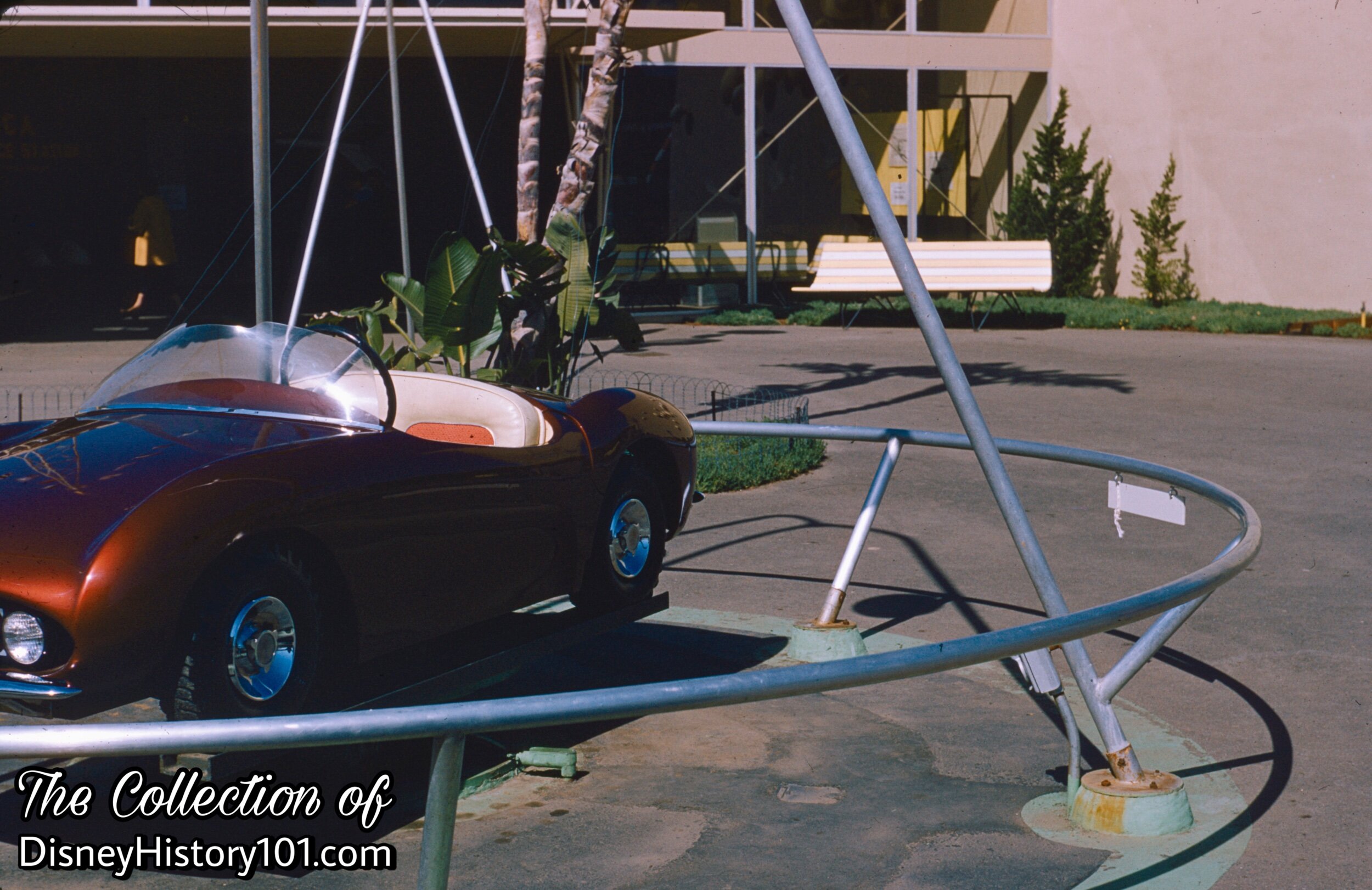
Walt’s Custom "Disneyland Autopia Special" Mark I Vehicle at Disneyland, 1956.
Eventually, the custom Autopia Mark I was brought to Walt Disney Studio, and there it received further modifications - a reverse gear, custom chrome hub caps, a brand-new paint job (with silver accents), and even a custom license plate with the name “Chris,” was added as a final touch! Bob Gurr recalled, “The Autopia Car was a gift for his firstborn grandson Chris. We kept it at the studio and on weekends, Chris and his sister Joanna would drive it all over the backlot.” Yes, the kids enjoyed driving it as fast as the little auto (without a “governor”) could go!
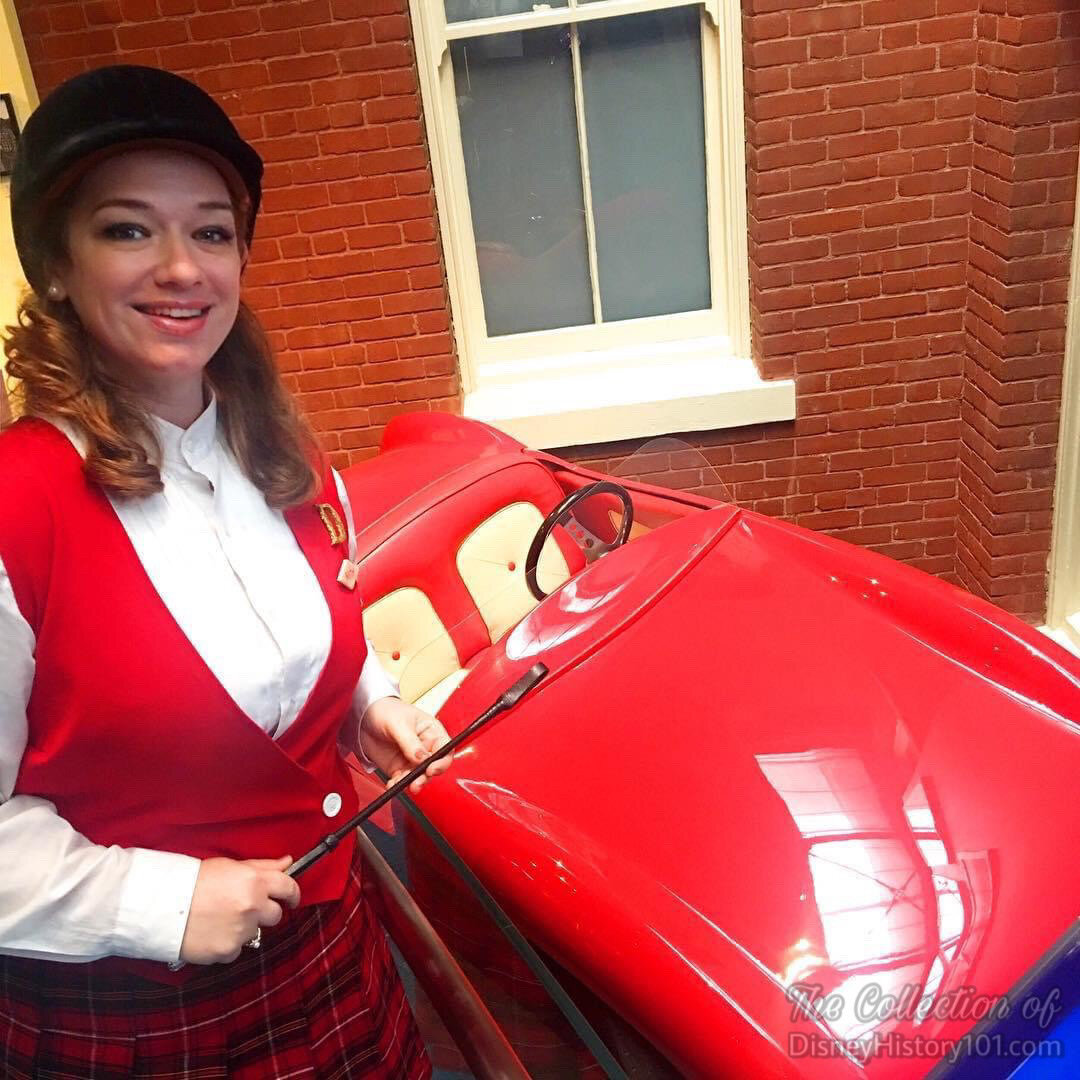
Walt’s (and Chris’) Custom "Disneyland Autopia Special" Mark I Vehicle, The Walt Disney Family Museum
To this day, Walt’s historic "Disneyland Autopia Special" attraction vehicle (once owned by RETLAW Enterprises) seems to be the sole surviving Autopia Mark I model in existence! During the summer of 1998, it was exhibited as part of “The Transportation of Tomorrow” at the Disney Gallery (at Disneyland©). Currently, Walt Disney’s Disneyland Autopia Special Mark I Autopia Vehicle resides in Gallery 9 of The Walt Disney Family Museum, in San Francisco, California.
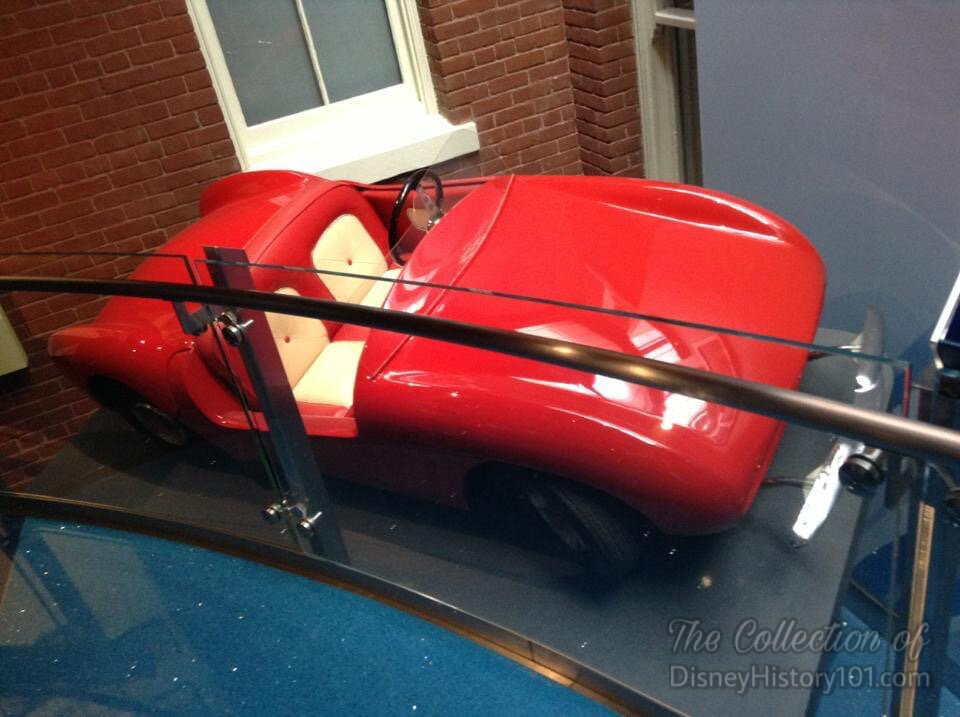
Walt’s (and Chris’) Custom "Disneyland Autopia Special" Mark I Vehicle, The Walt Disney Family Museum
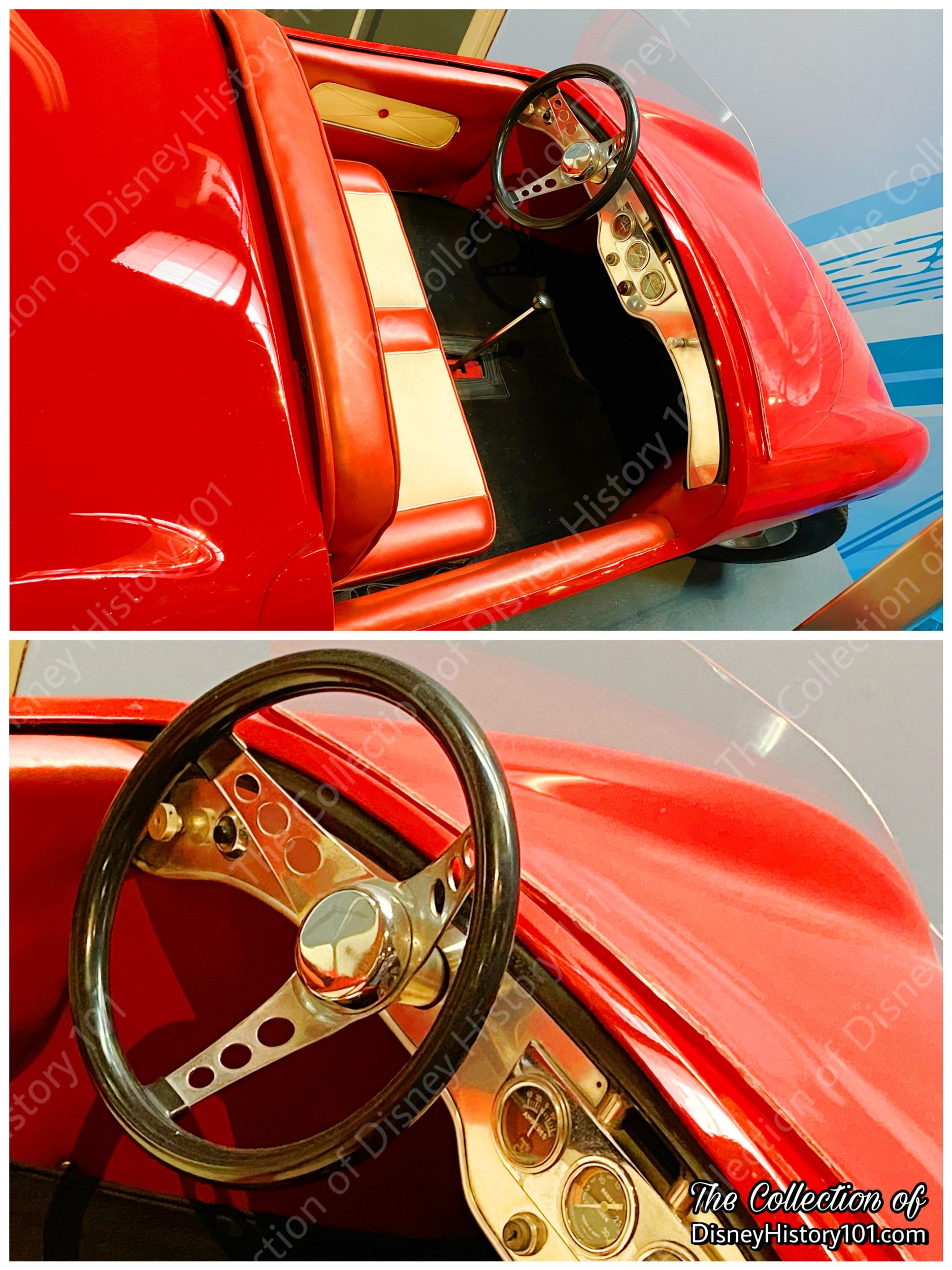
Walt’s (and Chris’) Custom "Disneyland Autopia Special" Mark I Vehicle, The Walt Disney Family Museum
At the 2001 Official Disneyana Convention, a tire from Walt Disney's Autopia Special car was auctioned off for $1,200.
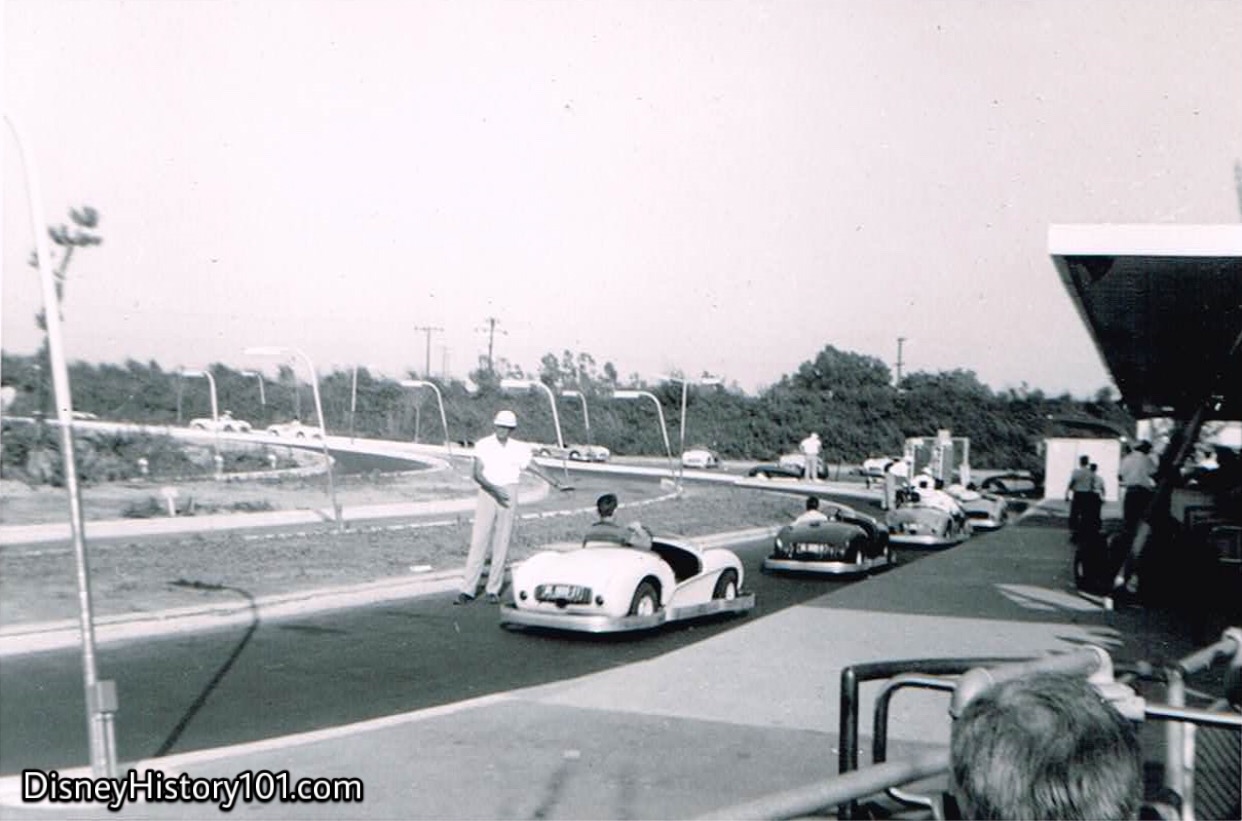
Tomorrowland Autopia (August, 1955)
“Working Leads & Rotating Operating Positions”
Many notable Disneylanders were assigned to the Autopia during the first year, like John Louis Catone (who was present Opening Day; and worked just one day on Autopia). He recalled: “There were wooden planks for curbing, backed up with sand bags. Autopia was a two-lane highway, with three cars abreast.”
Chuck Abbott (who joined Disneyland August 10th, 1955) also worked Autopia. The previous Vintage View was captured about the time that the aforementioned Chuck Abbott joined Disneyland, starting as a “ride operator on Autopia.” According to “The Pioneers” (a Club 55 20th Anniversary Publication), Chuck “started in the Autopia when… there was no track to control the cars then.” Each Autopia Cast Member was viewed not as a “spare tire,” but a vital wheel keeping the Disneyland show on the road!
Jim George also operated the Autopia.
“Roger Broggie’s Bumpers”
According to Marty Sklar’s account, “Walt Disney decreed that every designer was to go to the park at least every other week and stand in the lines… to understand what our guests were experiencing.” Partially owing to the lack of “track,” one such thing of note was detected within a month of the televised Press Preview Day Broadcast. It was discovered that Guests were crashing the cars into each other along the one-lane speedway. “The young test drivers reduced the original 36 cars to 6 by smashing into each other,” according to “Disneyland - A Treasure Chest of Trivia” prepared by Walt Disney Productions, 1990. As the track was wide, and the cars could turn completely around, there was great potential for head-on collisions. Even worse, the cars were not connected to a track and would occasionally jump the curb and end up off the road and in the landscape.
The solution - the installation of Roger Broggie’s large, wraparound, spring-like bumpers which encompassed and fortified the bottom of the design of the entire vehicle! The MAMECO team was soon contacted for one final job (to be completed within' just a few weeks of Disneyland's dedication). A 3/8 inch-thick aluminum plate was used to fabricate bumpers. This metal was light weight but powerful enough to stand up to the shock of bumping.
"That was something they had Ted and my dad add later after the first batch," states Martindale.
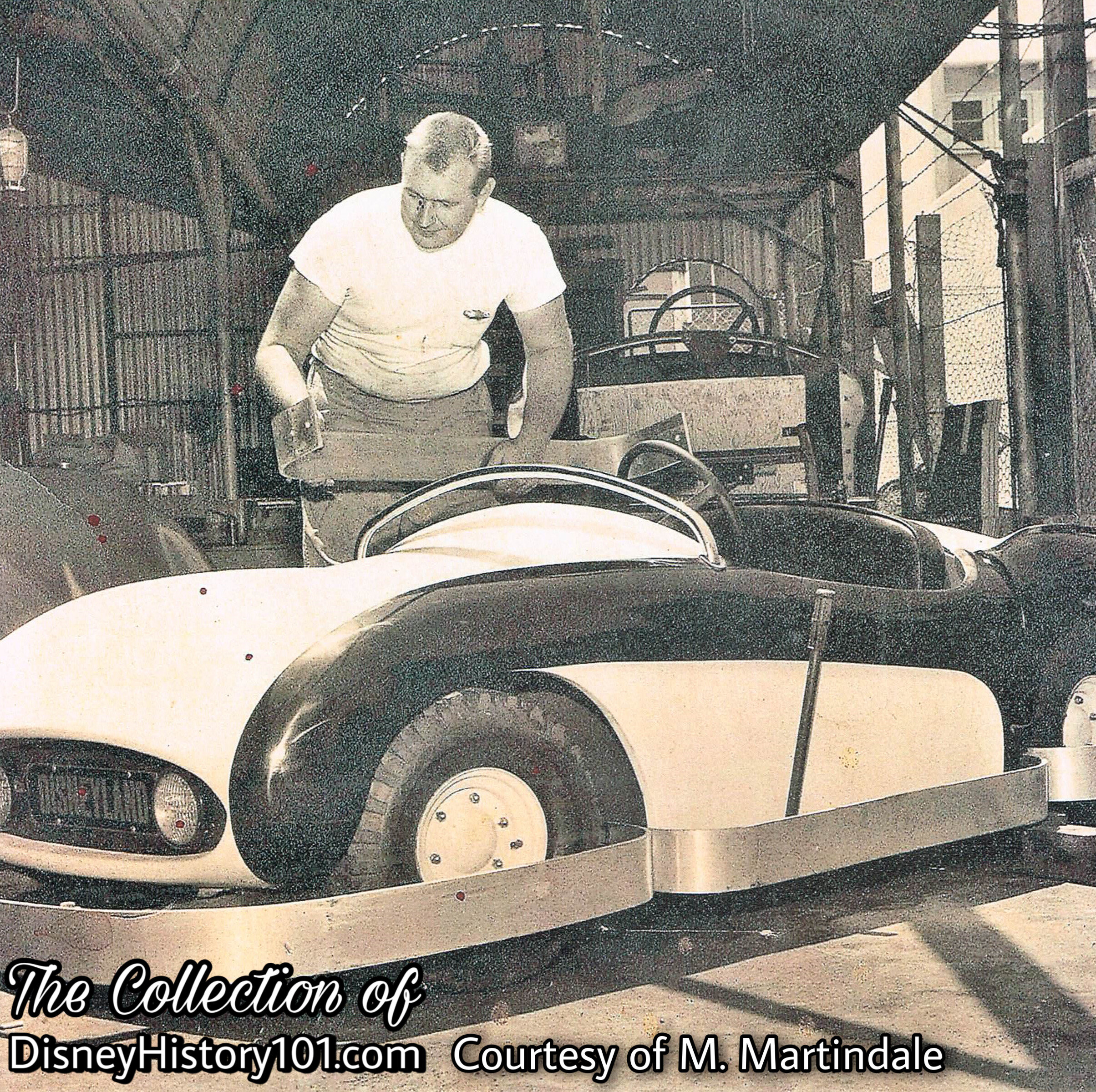
Pictured Above : Ed adds wraparound aluminum bumpers to one of two "Black and White" cars produced. The bumpers wrapped around those thick 5 x 8 Gar-Bro tires (for maximum traction).
“Disneyland’s Autopia” (published in Rod & Custom, November, 1955) describes this safety addition:
“Added touches to the production models were wraparound aluminum bumpers, chromed hand rails on the cowl, a foam rubber covered dashboard, sealed beam headlights with a friction-driven generator to operate them and a unique automatic braking system. The latter is a revision of the Mustang cycle brake but using wider linings and with the feature of being automatically applied when pressure is lightened on either accelerator pedal or when the outside hand brake is pulled back.”
“About 32 identical machines (with full-wrap bumpers) were available when operation ‘Autopia’ commenced at Anaheim, California, in July of this year,” according to Road & Track magazine (published September of 1955). These “full-wrap bumpers” minimized injury, but the root of the problem still persisted. According to Bob Penfield in interview with Disneyland LINE (Vol. 25 No. 28), he recalled a conversation with Walt, while operating the Autopia : “‘What about those cars banging together - can we stop that?’ I told him, ‘Walt, I don’t think we’ll ever see the day that Guests don’t bang the cars together.’”
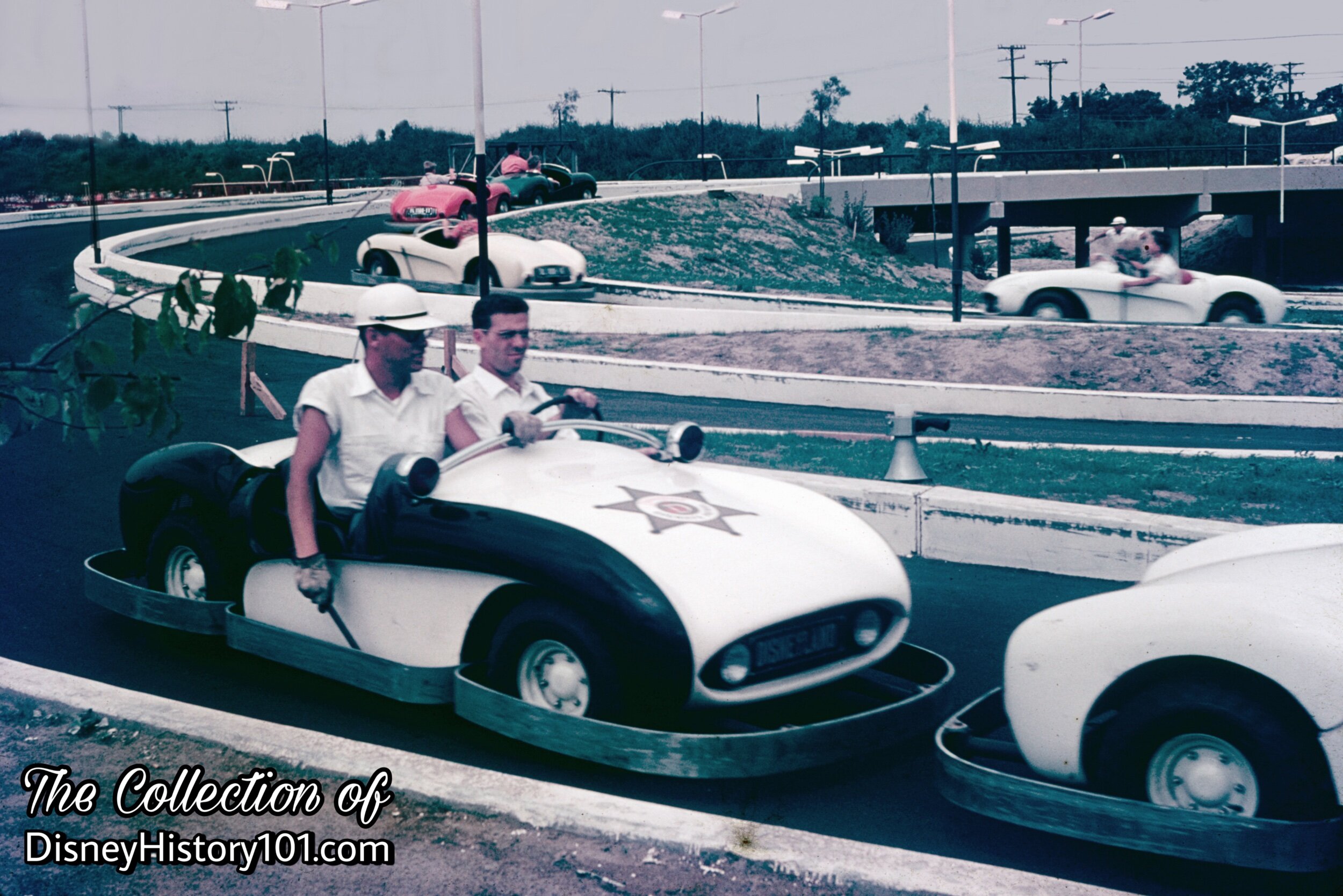
Bob Gurr aboard an Autopia Black and White Car
Well…there was almost no way to stop Guests from banging the cars together. You see, there were a few of these “black-and-whites” (seen in the foreground) on the Autopia track. Originally, two were suggested by George Whitney, but (as mentioned earlier) a total of four were “black-and-whites” were fabricated (at least three can be seen shuttling celebrities down the route, during the Disneyland Press Preview Day Parade of July 17th, 1955). Both Don DeFore and Gayle Storm can be seen driving these “black and whites” during the Disneyland Opening Day broadcast. According to Bob Gurr, “Walt thought that we should have a couple of special cars rigged up as police cars so operators could give rides to children too small to drive actual Autopia cars. He figured this would provide a special thrill for these youngsters.” These cars had sirens, flashing lights, and no governors (allowing them to travel up to 25 miles an hour).
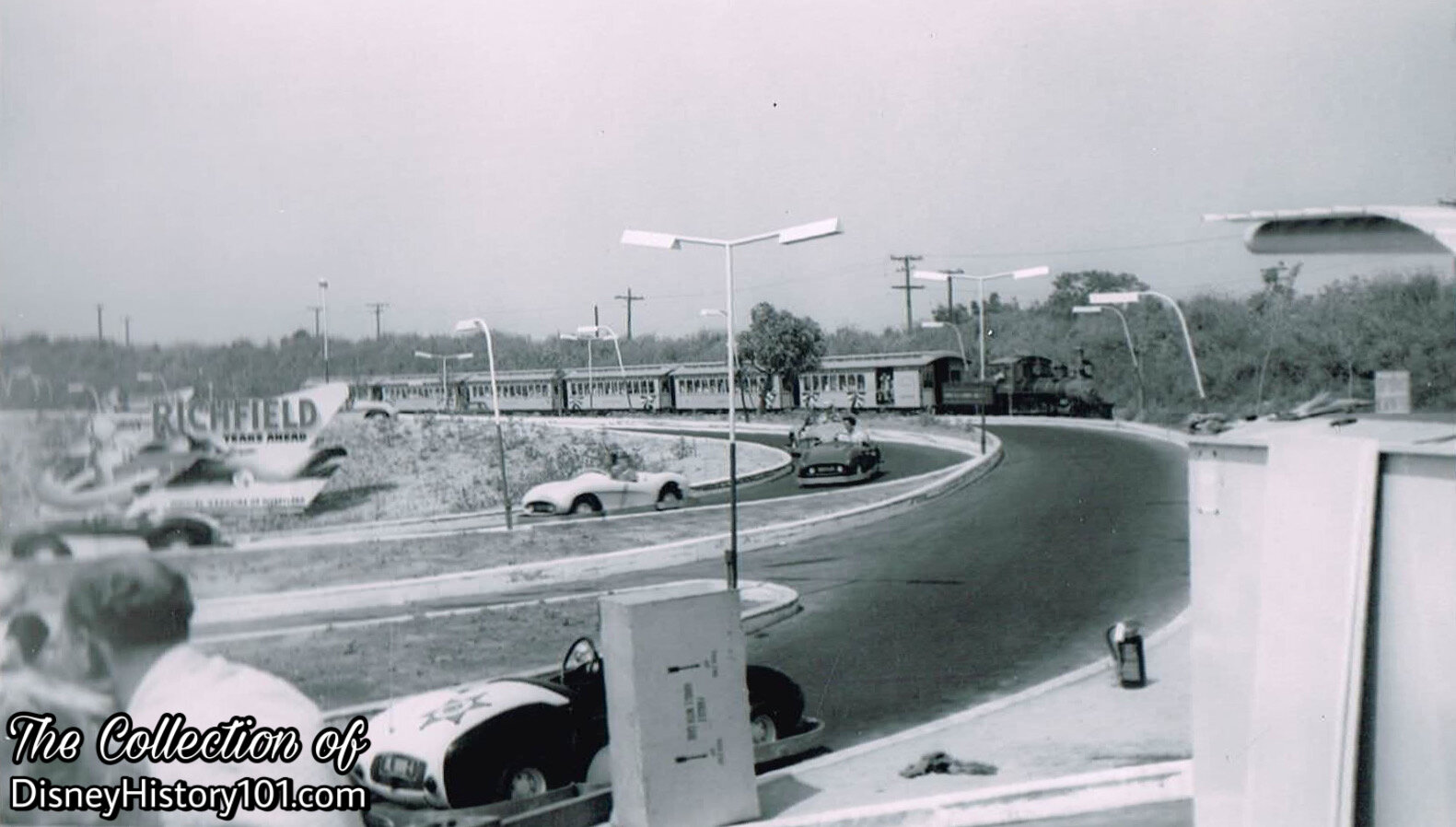
Tomorrowland Autopia, (August, 1955)
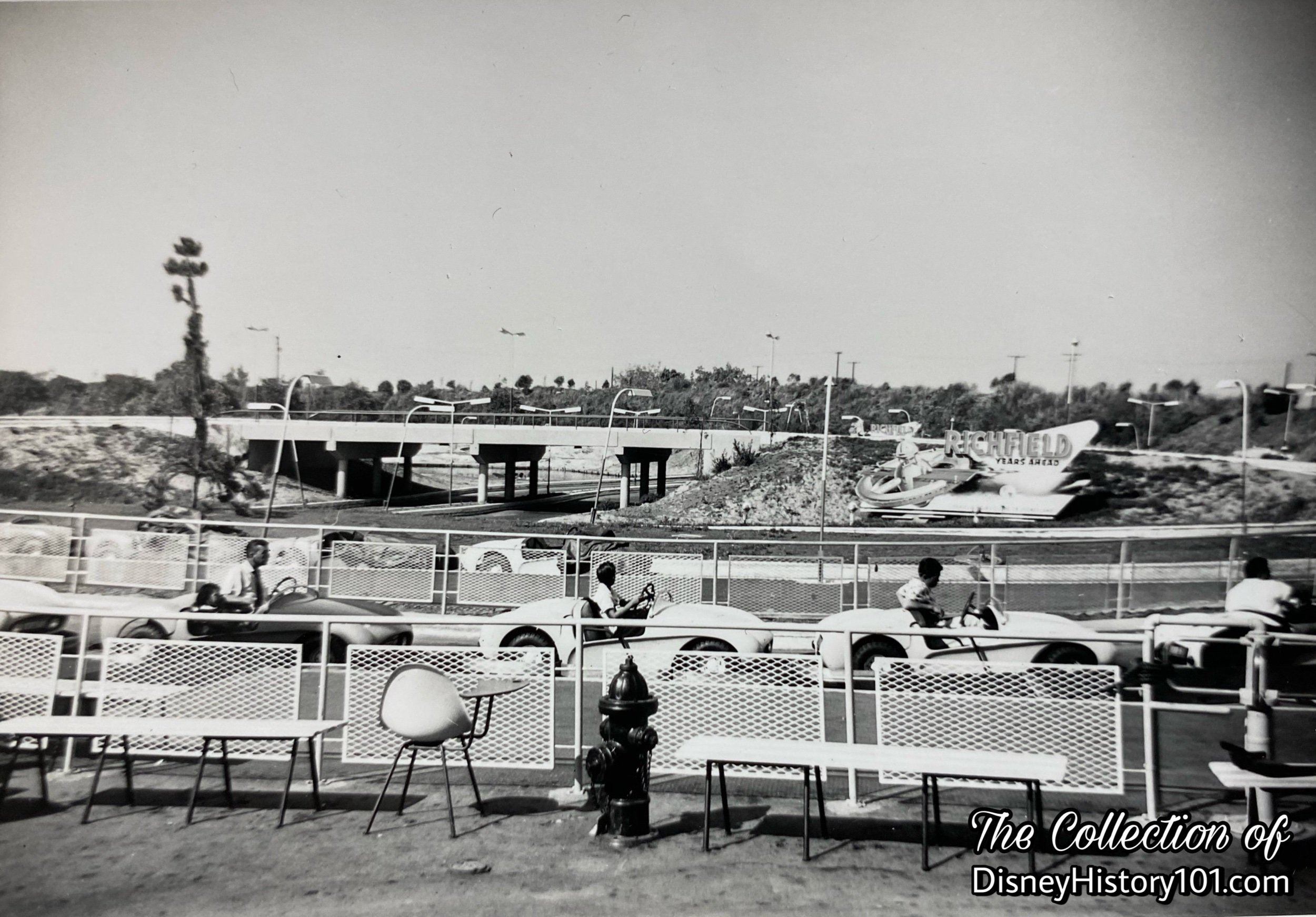
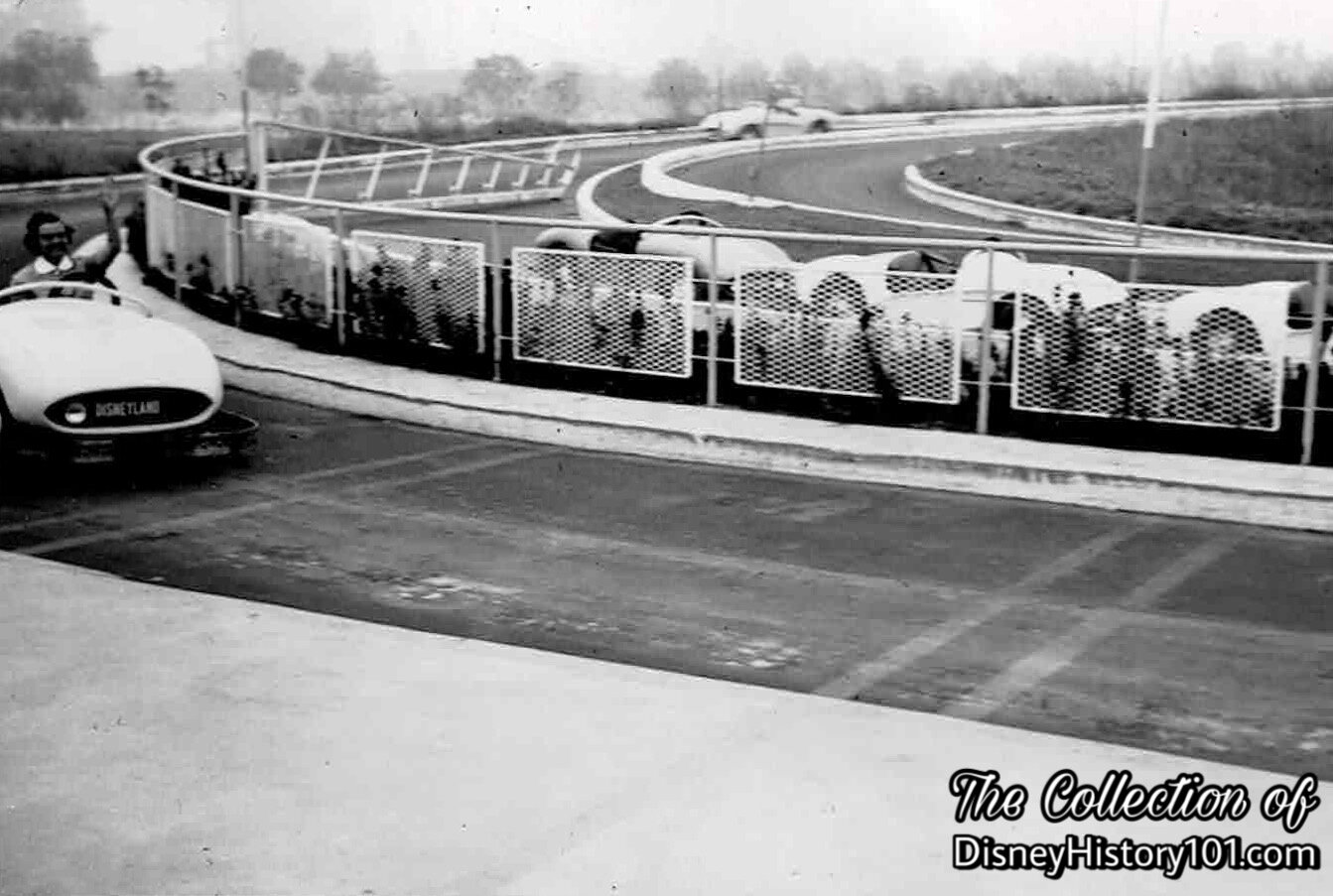
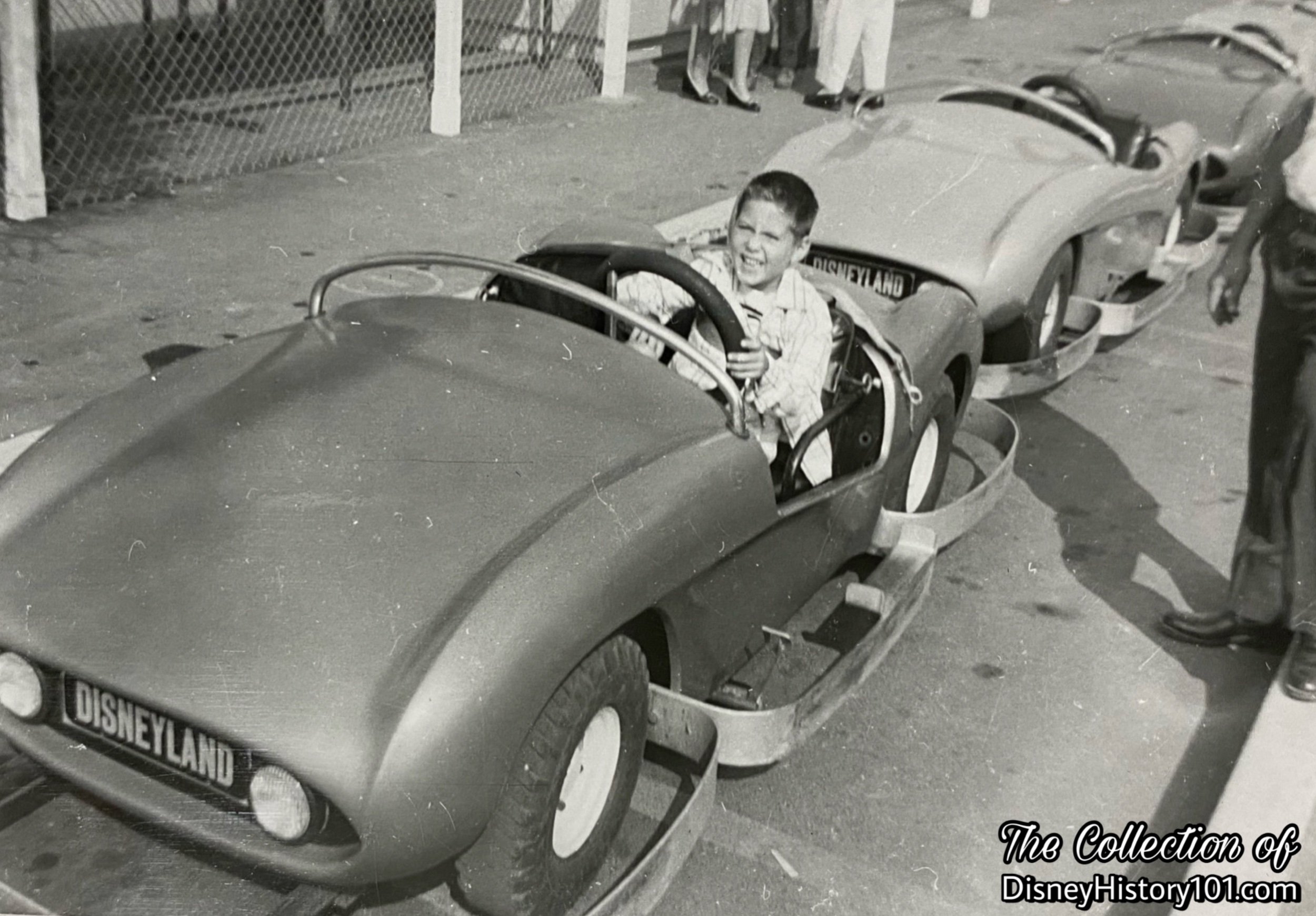
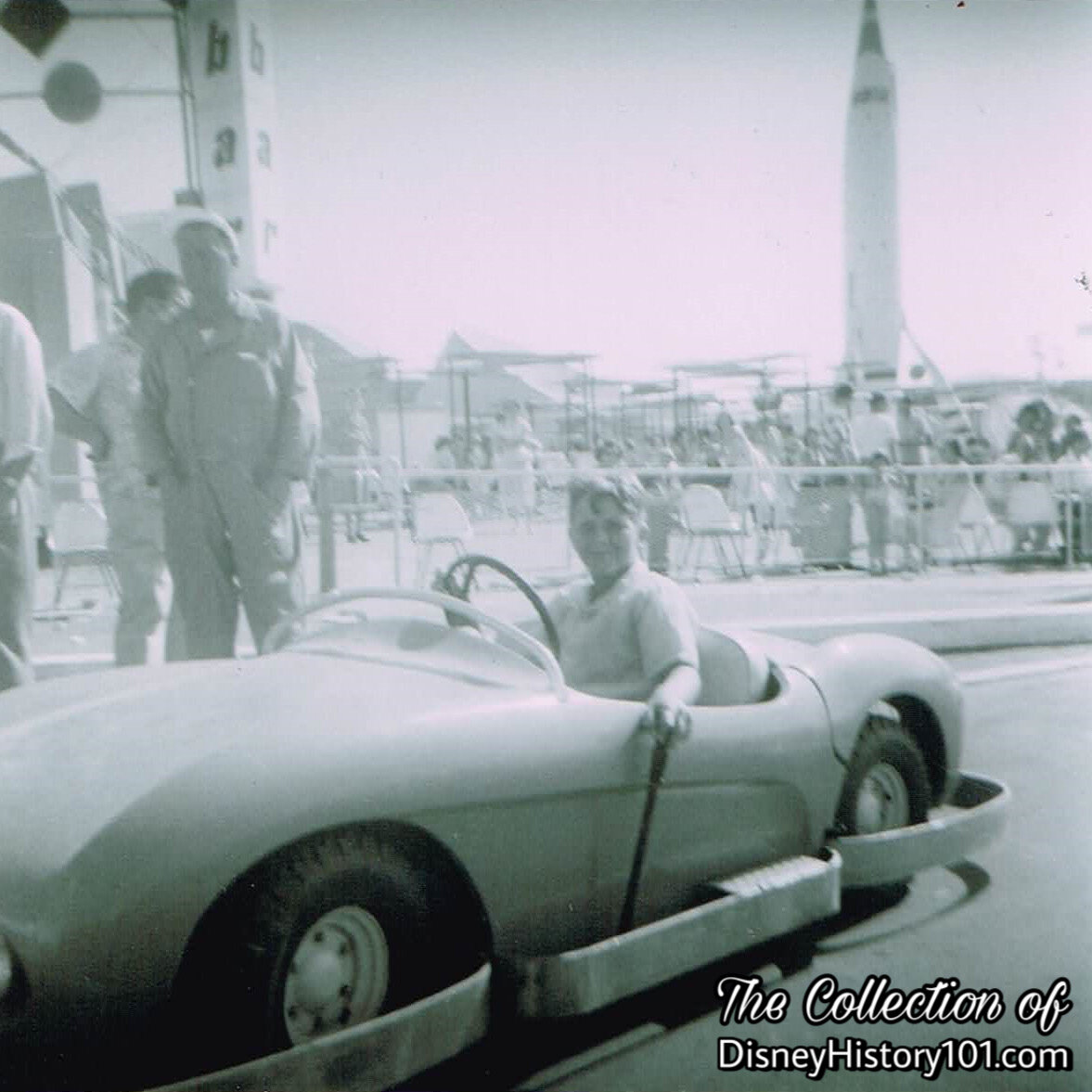
Autopia Mark I & Tomorrowland Autopia, 1955
A guest sits in a Autopia Mark I, hand on the spring-loaded outer hand brake. According to inserts in area newspapers: “Brake and throttle controls are all spring loaded and the brake is operated from the outside.” This long external lever allowed “adult overule of impatient young throttle stompers at the beginning of the one mile ride”, according to Road & Track magazine (published September of 1955). “Brakes operate automatically upon release of the accelerator, or by a backward movement of the hand lever.”
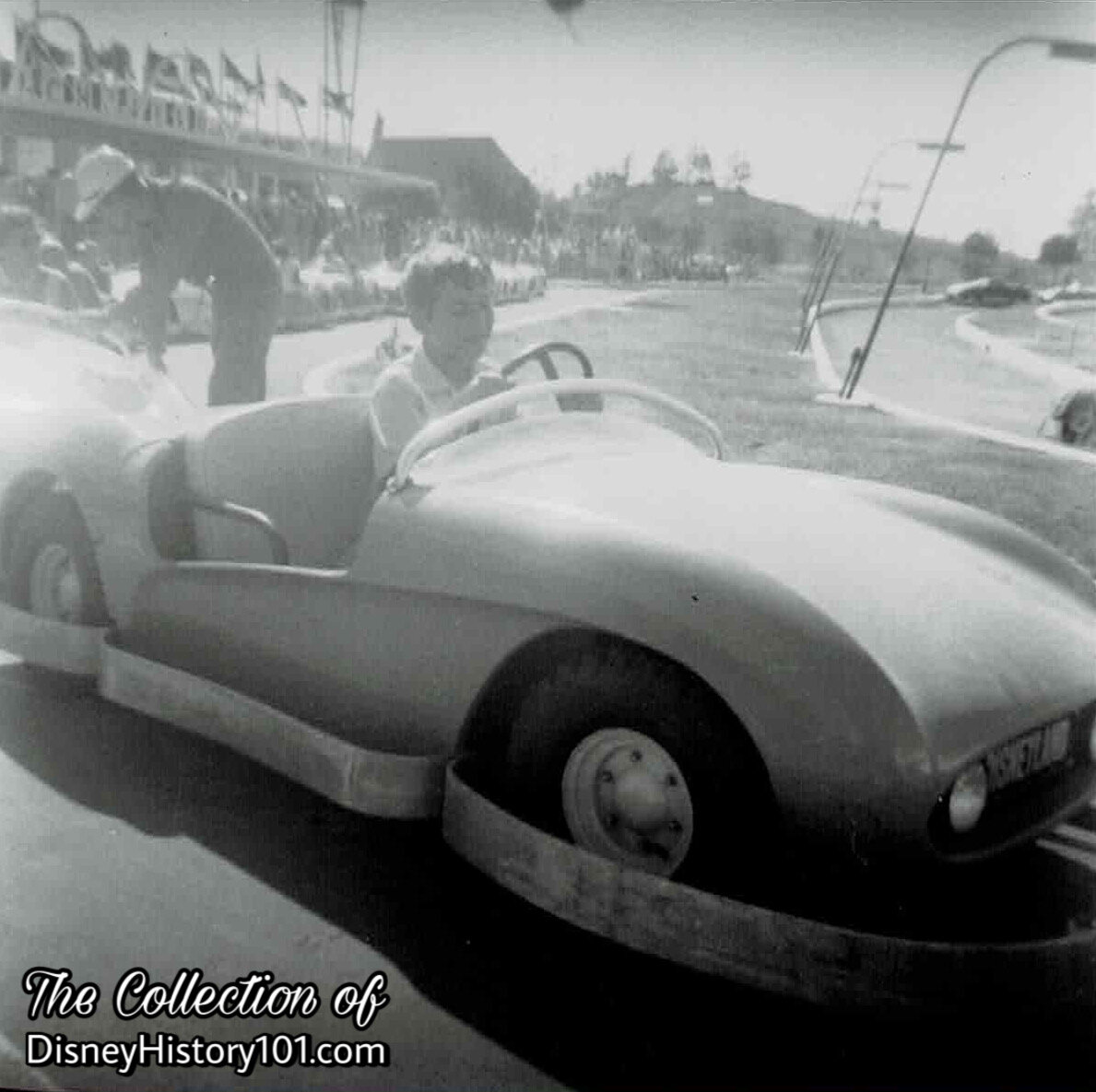
Tomorrowland Autopia
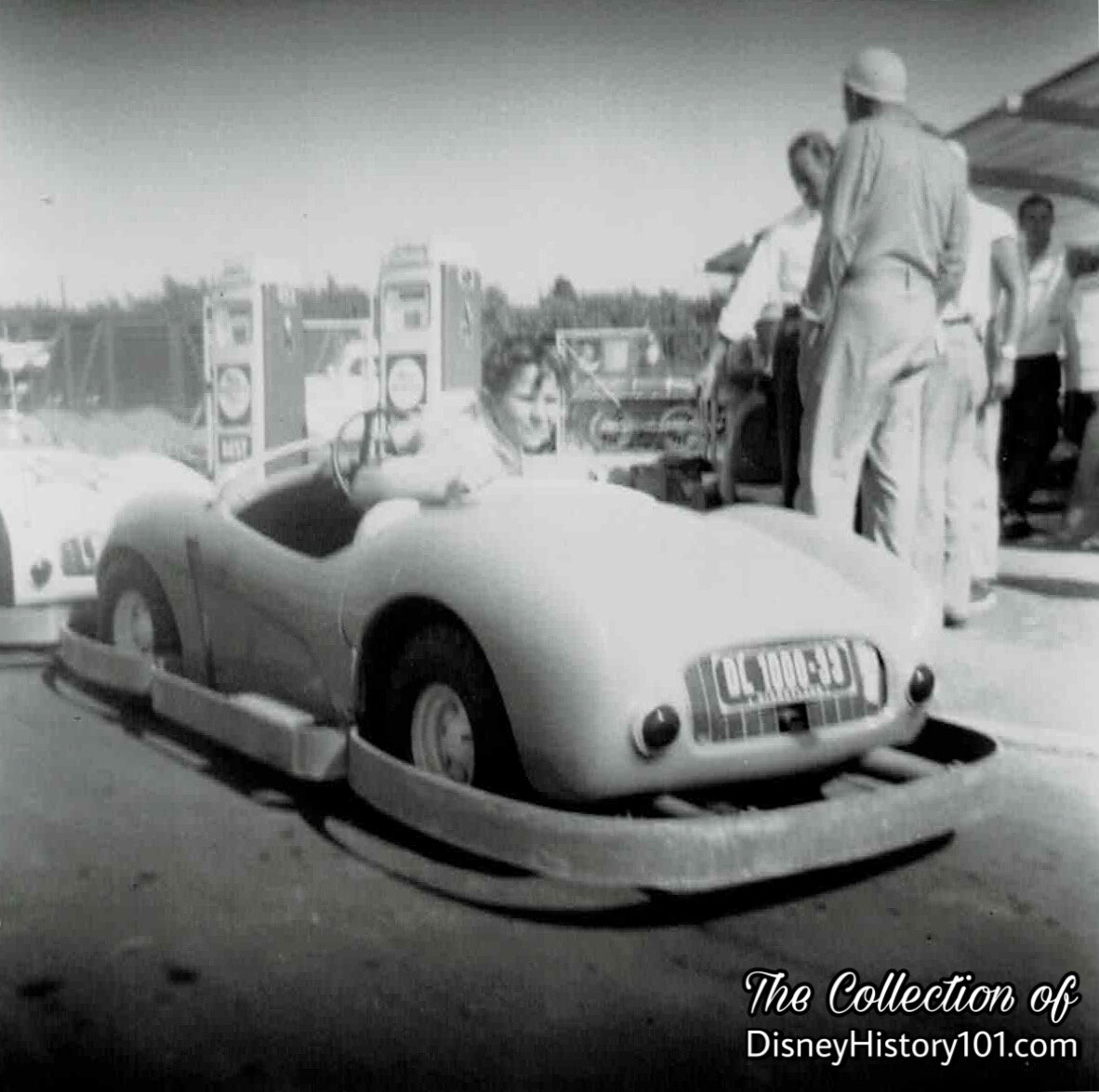
Tomorrowland Autopia
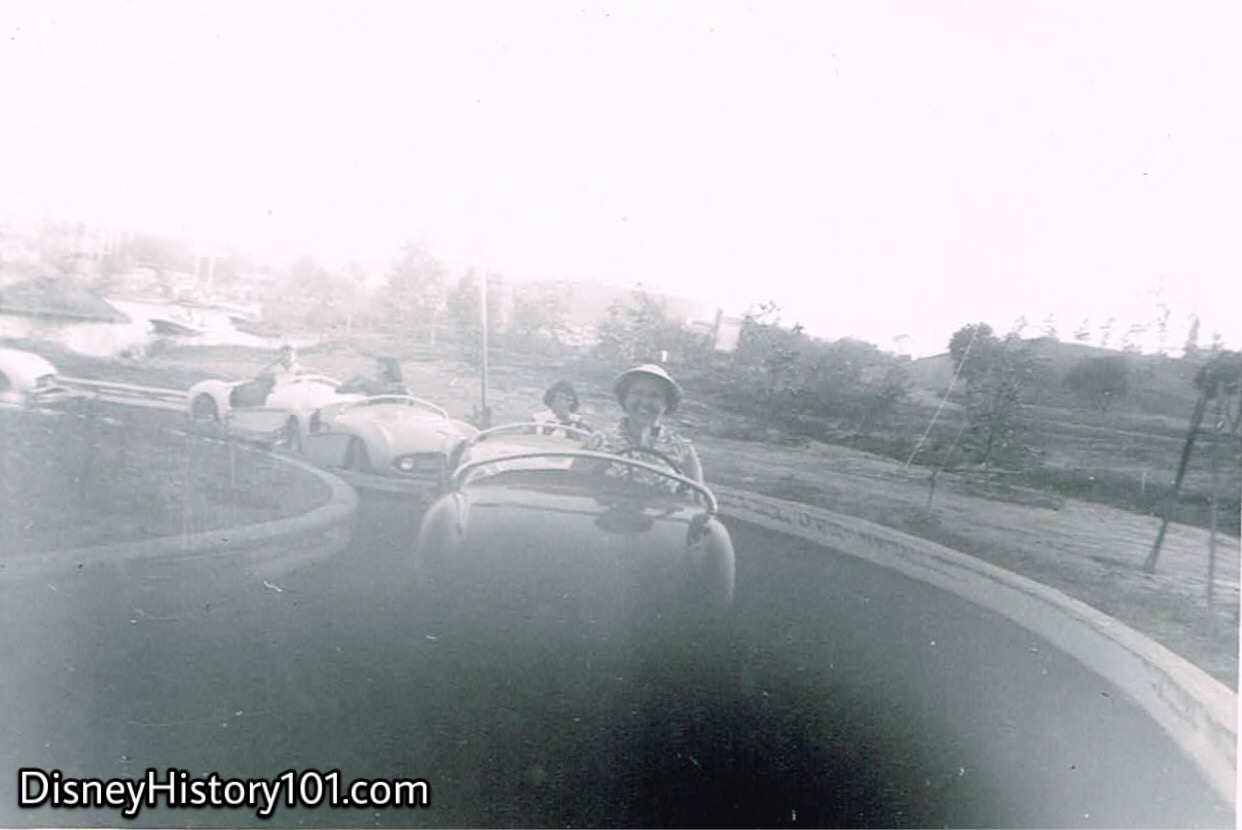
Tomorrowland Autopia, (August, 1955)
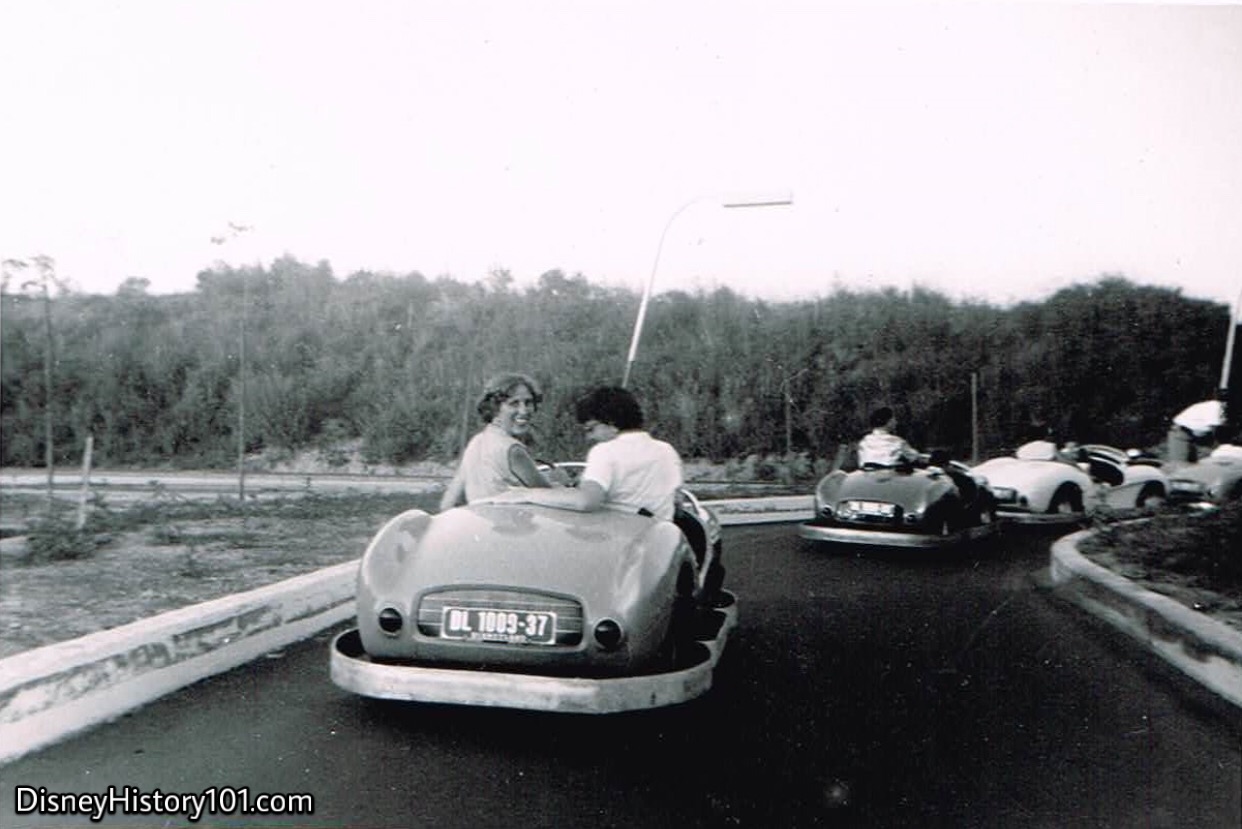
Tomorrowland Autopia, (September, 1955)

Autopia Mark I
You may notice telephone poles and highways in the backdrop of more than a few of our Vintage Views, and be assured that Walt noticed these visual intrusions too!
Disneyland was encircled by an earth wall called, the ”Berm.” Walt Disney's purpose was to make Disneyland a place separate from the world of today. While the landscaped berm blocked out the realities of the outside world, Harbor Boulevard (a full-scale highway) and the Santa Ana Freeway (a true-life expressway) were located just on the other side of the berm in the distance. Walt would eventually have the twentieth-century telephones along the backdrop of Tomorrowland removed, paying the utility company to place the telephone poles underground. He also had the berm elevated to hide the Santa Ana Freeway highway ramps. For now this was the sight of the Freeway of the Future on this side of the berm, and a young driver who looks ready to roll onto “the open road” in his very own Autopia Mark I car!
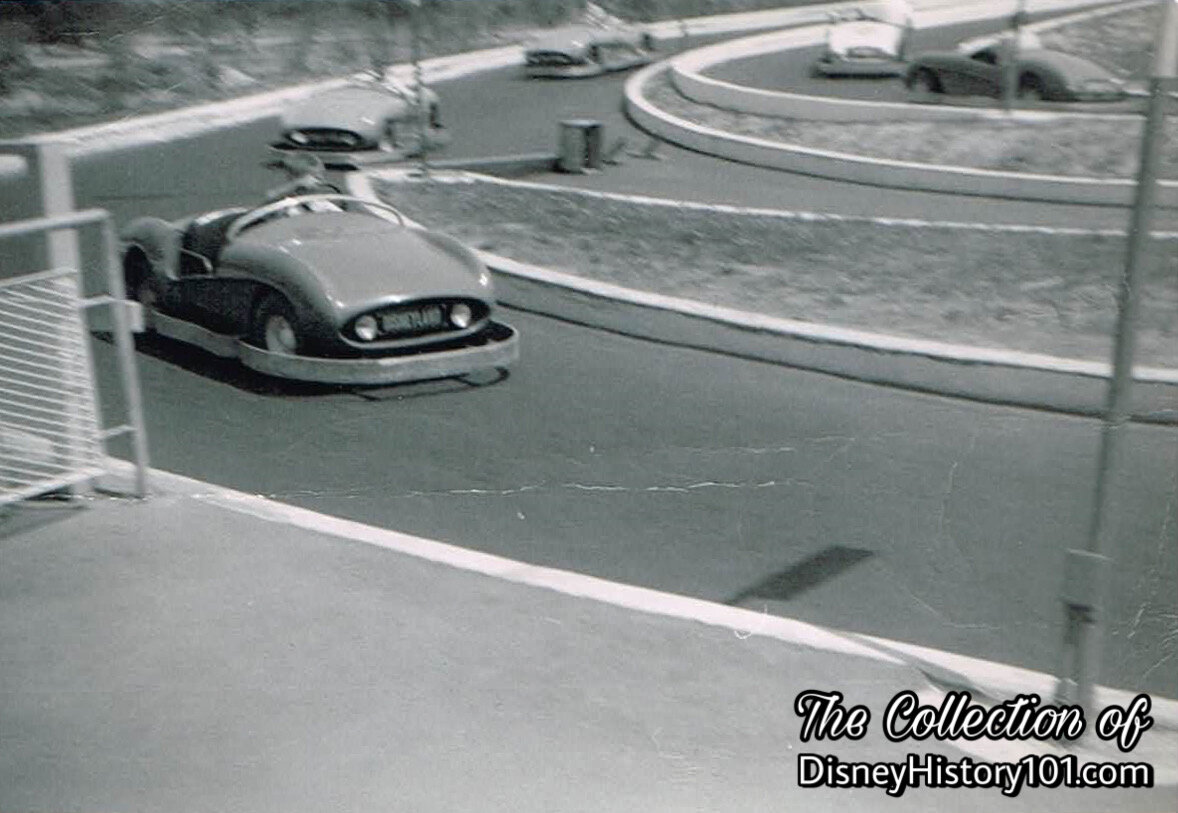
Autopia Mark I
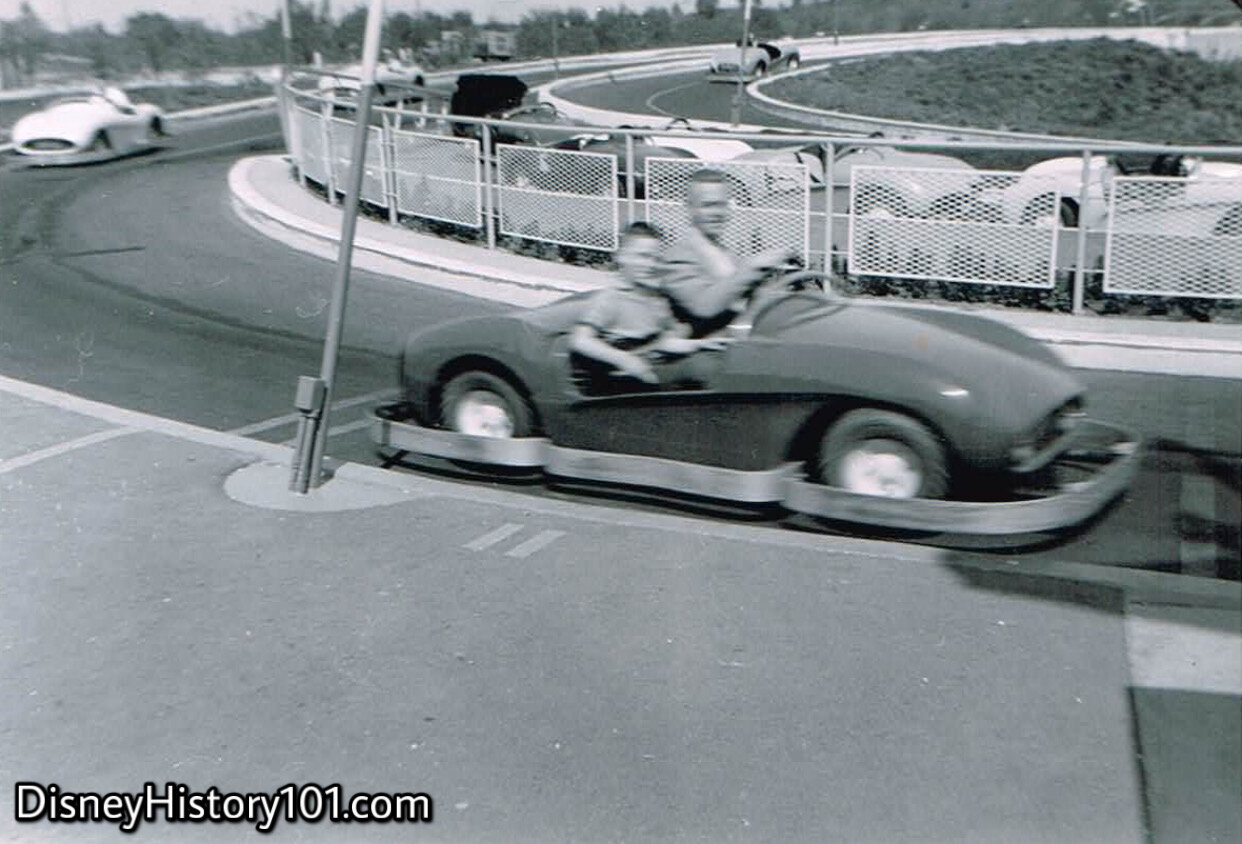
Autopia Mark I, (March, 1956)
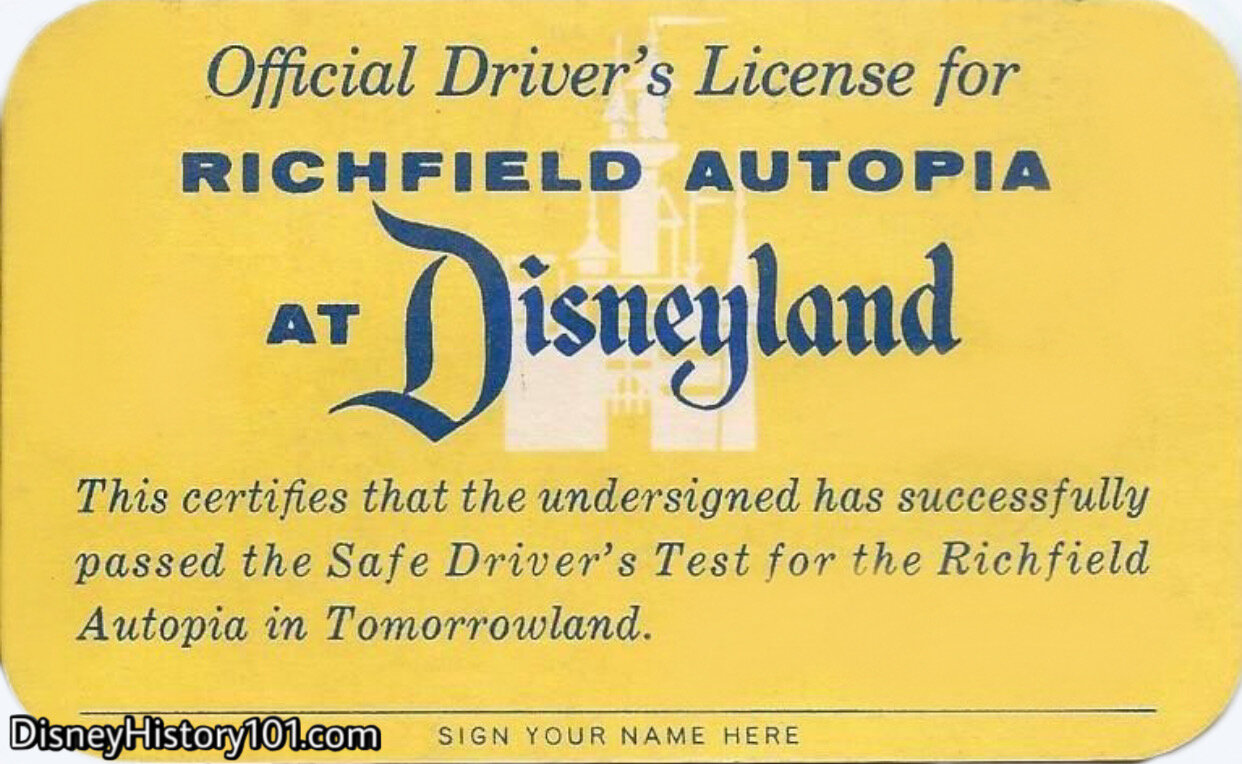
1955, Official Driver's License (or, "Operator's Card") for Richfield Autopia at Disneyland 1st Series (Front)
“The Story of Disneyland” (a souvenir guide published 1955, by Disneyland Inc.) advertised “After passing a driving test, youngsters are ‘licensed’ to operate the miniature sports cars of the future on a 100% safe freeway.” The Autopia Driver’s Licenses were a free novelty item, originally printed on Globe paper (the very same company used to print Disneyland’s tickets during the early days).
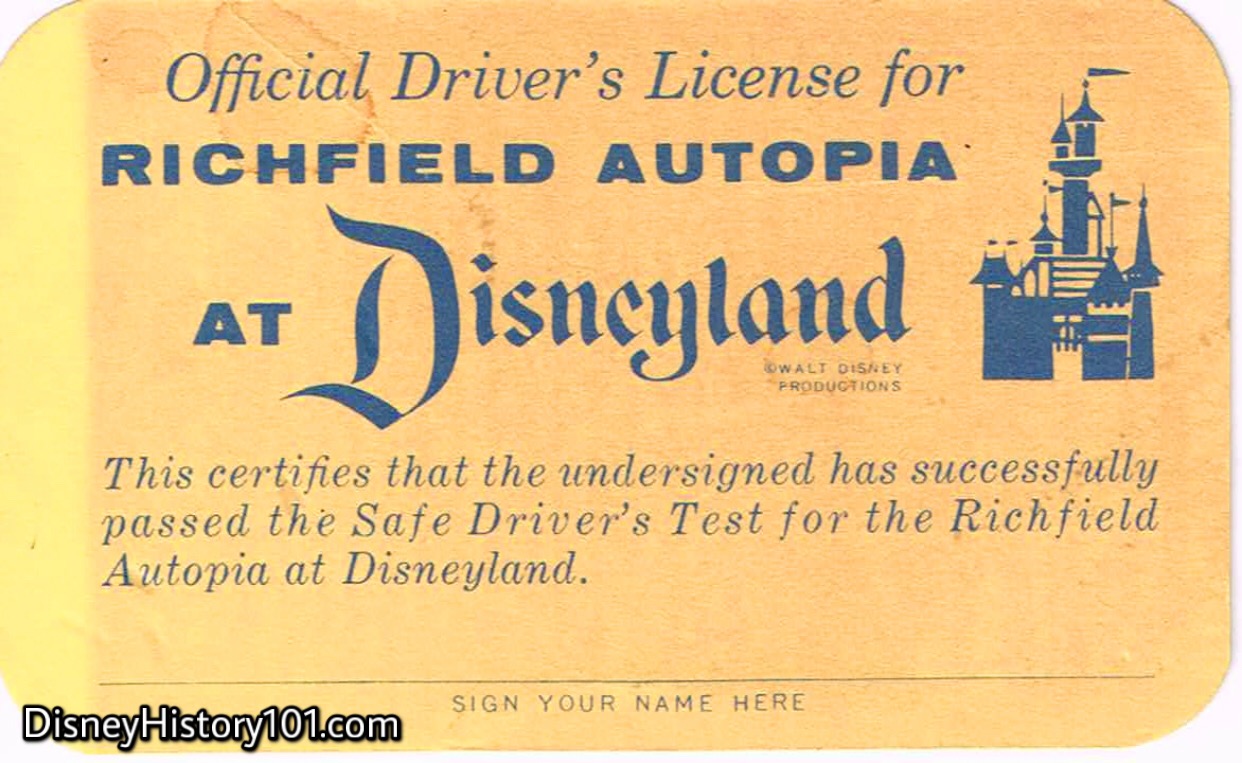
1955, Official Driver's License for Richfield Autopia at Disneyland 2nd Series (Front)
Once drivers safely completed their circuit, they were awarded their very own Richfield Driver’s License! These series of licenses were available from late 1955 to 1960.
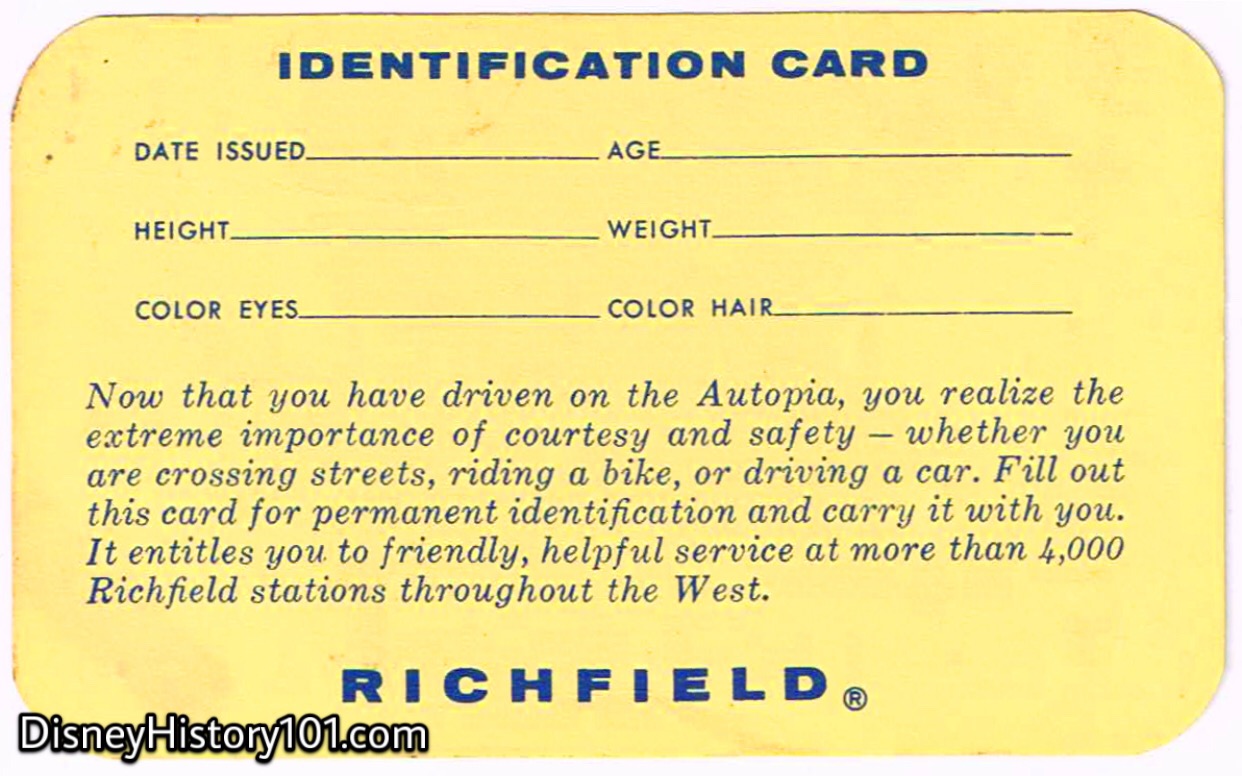
Official Driver's License for Richfield Autopia at Disneyland 2nd Series (Back)
Now it’s time to fill in the informative details that identify YOU as the holder of this Official Driver’s License for Richfield Autopia at Disneyland!

Walt Disney, on the eve of Disneyland’s first day of operation, promised that “Disneyland will never be completed. It will continue to grow, to add new things, as long as there is imagination left in the world.” By the end of 1955, forty new Autopia Mark II cars arrived with a new chassis and sturdier (and thus, smoother-running) engines. These new versions of the Autopia car also featured booster seats and extender blocks on the peddles (for shorter guests). According to Magic Circle magazine (June, 1956) : “Autopia’s sleek little roadsters get a daily on-the-line inspection and grease job. Oil is changed once a week regularly and possibly twice a week during the summer season. Necessary repairs are done in a garage nearby. The little cars are a great favorite with youngsters - with grown-ups too.”
With the new (c. 1956) Autopia upgrades alone, it was easy for visiting Disneyland Guests to develop a severe case of “Motor-mania”! Then, the automotive exhibitions descended upon Disneyland during that very year, only furthering love for the automobile! There was the huge American Motors NASH Automobile Exhibit, that was featured in a circa 1956 magazine campaign. NASH automobiles - “the world’s first travel car” - (like the 1956 Ambassador Country Club Coupe) made their way to Walt Disney’s Magic Kingdom, and were parked in various picturesque locations around the Park! Some were exhibited in Town Square, in Fantasyland (near Chicken of the Sea Pirate Ship and King Arthur Carousel), in the Painted Desert, and in Central Plaza. Yet another magnificent exhibit - "Sports Car Concours D'Elegance" was held during April of 1956! This particular exhibition brought true-life, full-scale, one-of-a-kind racing specimens (like the Abarth 207-A) to Disneyland. These events (and more) would certainly “rev” up Guest’s interest to sit behind the wheel of a Richfield Autopia scale race car, by the time they reached Tomorrowland!
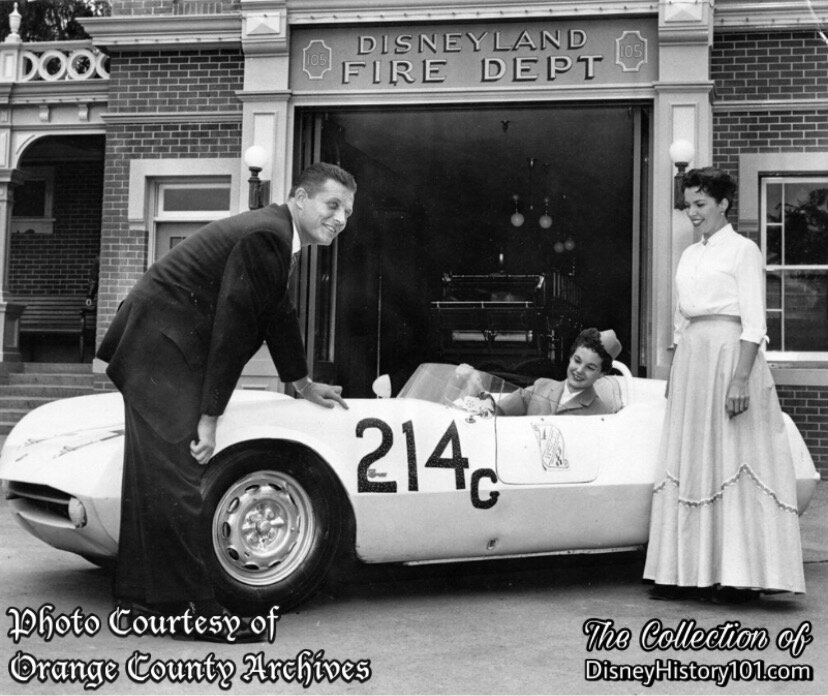
That's not an Autopia Mark I, but an Abarth 1100 Model 207A (never mind the "214c" on the side), at the "Sports Car Concours D'Elegance" Held at Disneyland, (April 8th, 1956)
Owing in part to these attractions, “high state, local and national government officials” as well as “luminaries from motion pictures, television and the theater” turned out to “pay tribute to this happy land” and the Autopia Freeway of the Future. [“Disneyland 1st Anniversary Souvenir Pictorial”, 1956, page 9] Among the first four million visitors to step though the Main Entrance Gate turnstiles and sit behind the wheel was Vice-President Richard Nixon and his daughter.
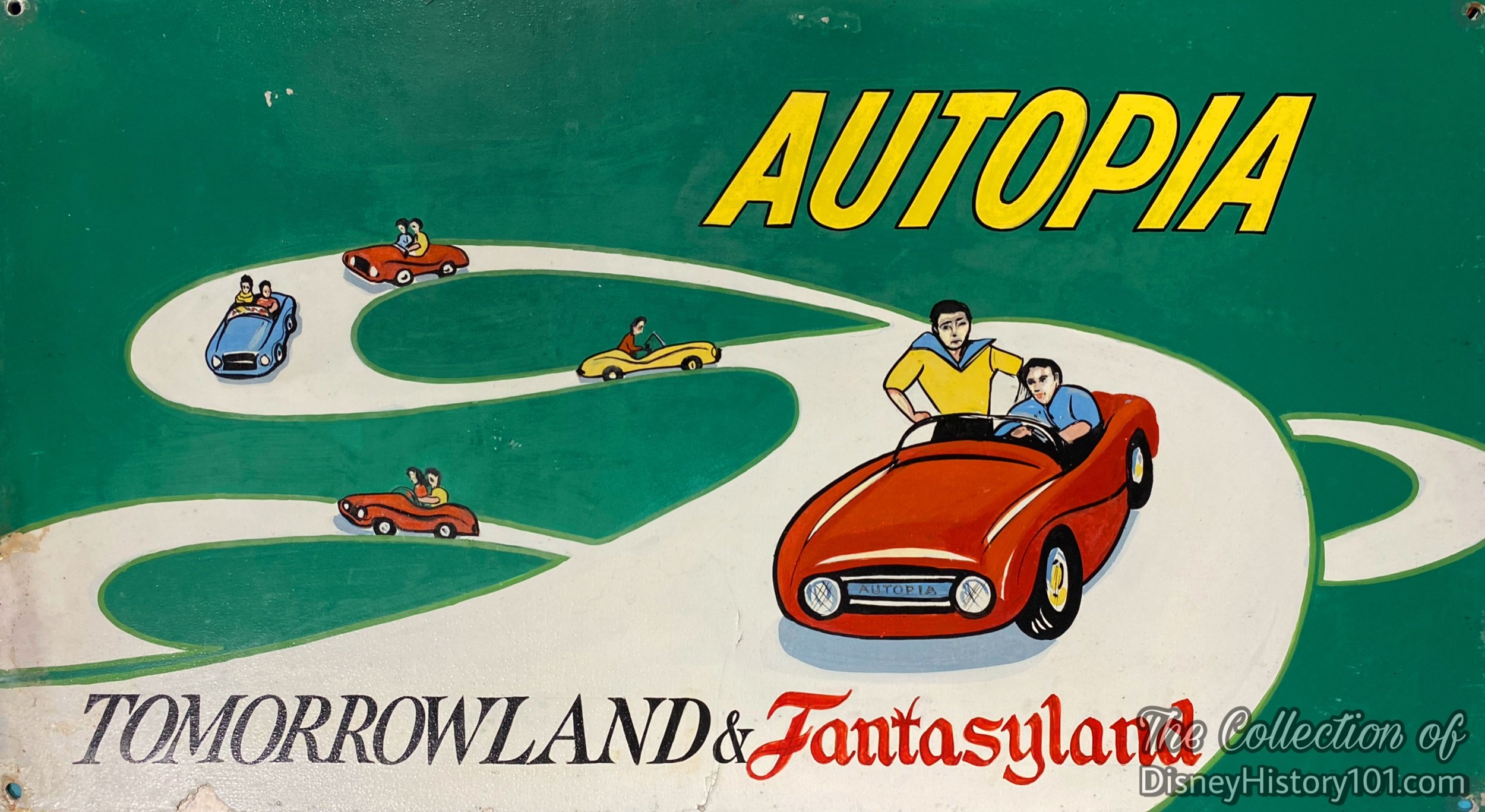
A Hand Painted Autopia Omnibus Sign; Signage that was looking pretty worn and stressed was replaced.
The aforementioned Autopia Mark II cars were distinguished from the Autopia Mark I cars, in that they were specifically utilized for the all-new Richfield Junior Autopia which opened in the site of the former Mickey MouseClub Circus in Fantasyland, on July 23, 1956. The Richfield Tomorrowland Autopia required that “children be as tall as the bottom of… the [neighboring] sign to drive or sit behind the steering wheels of Autopia Cars.” This new Junior Autopiatrack was one of several new adventures, that was specifically designed with those guests who may not have met the Richfield Autopia height requirement. The new attraction also quickly proved the truth of Walt Disney’s promises of an ever-expanding Disneyland, a promise made “on the eve of the Magic Kingdom’s opening!”
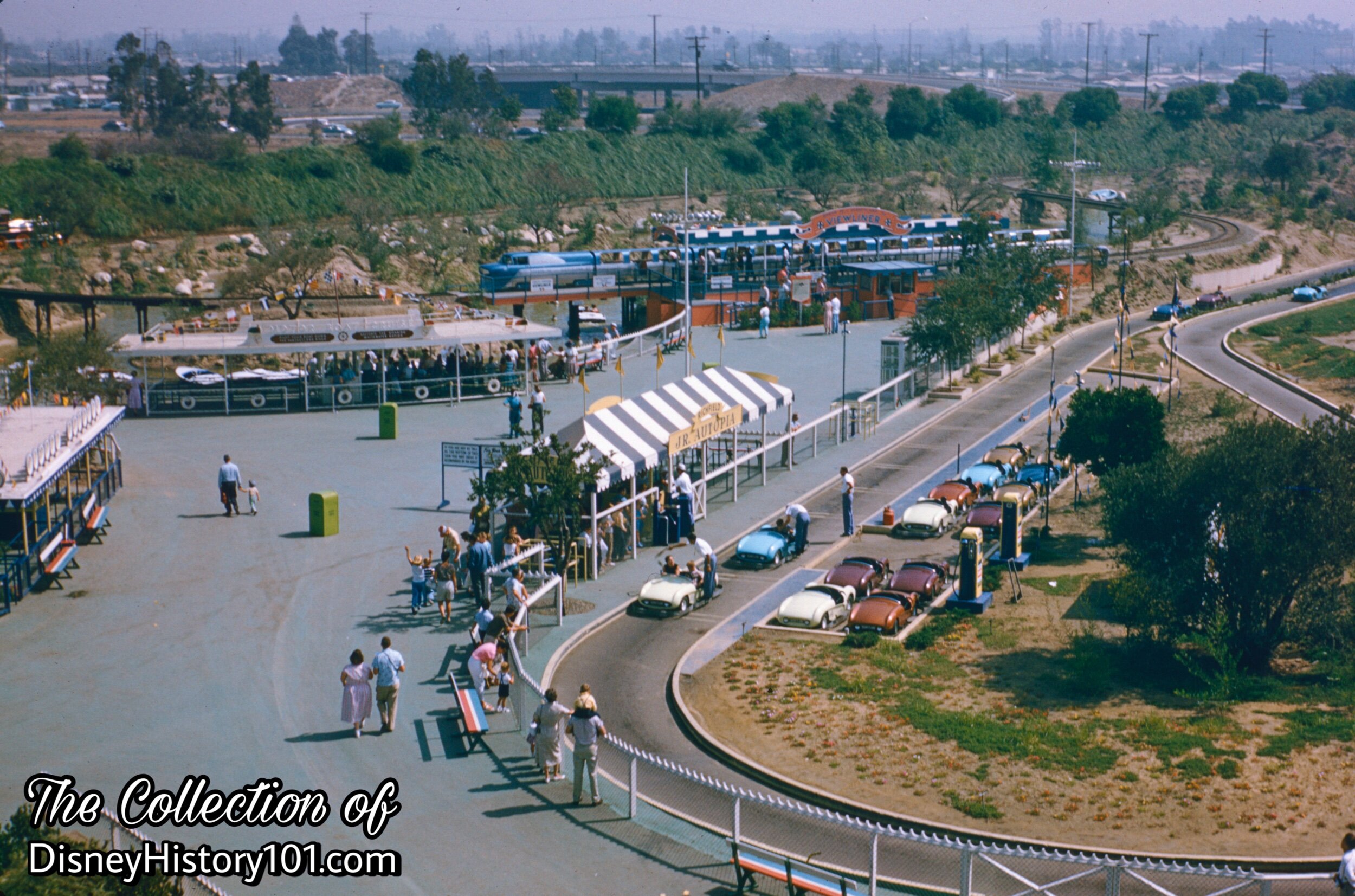
Junior Autopia Queue on a Slow Day
The Junior Autopia was one of many exciting attractions debuting during 1956, that increased ride capacity, and (owning to this) one day in August saw a peak total of “197,547 individual rides” enjoyed by Guests (according to a letter from Walt to Ward Kimball, dated January 23, 1957). Still, the Richfield Junior Autopia track was short-lived, lasting only two years, from July 23, 1956 until it closed on September 15, 1958 (when Matterhorn and Submarine Lagoon construction soon began).
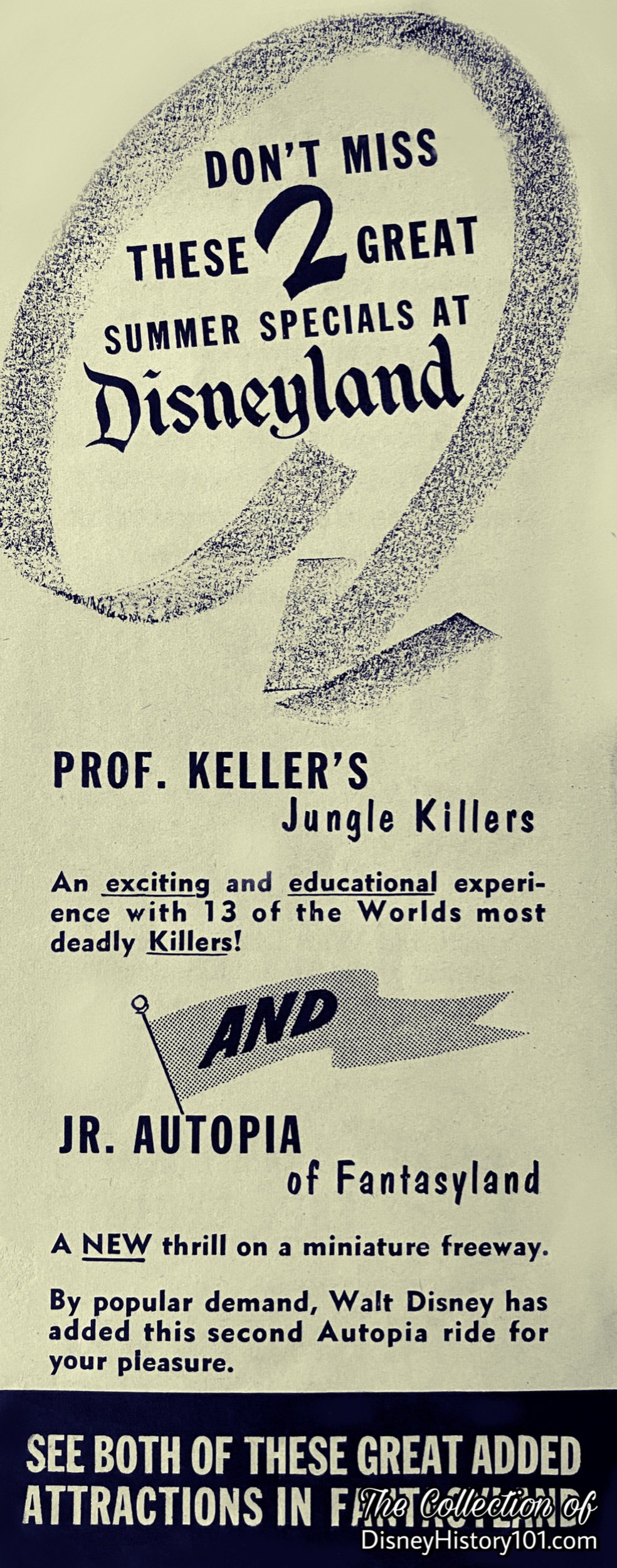
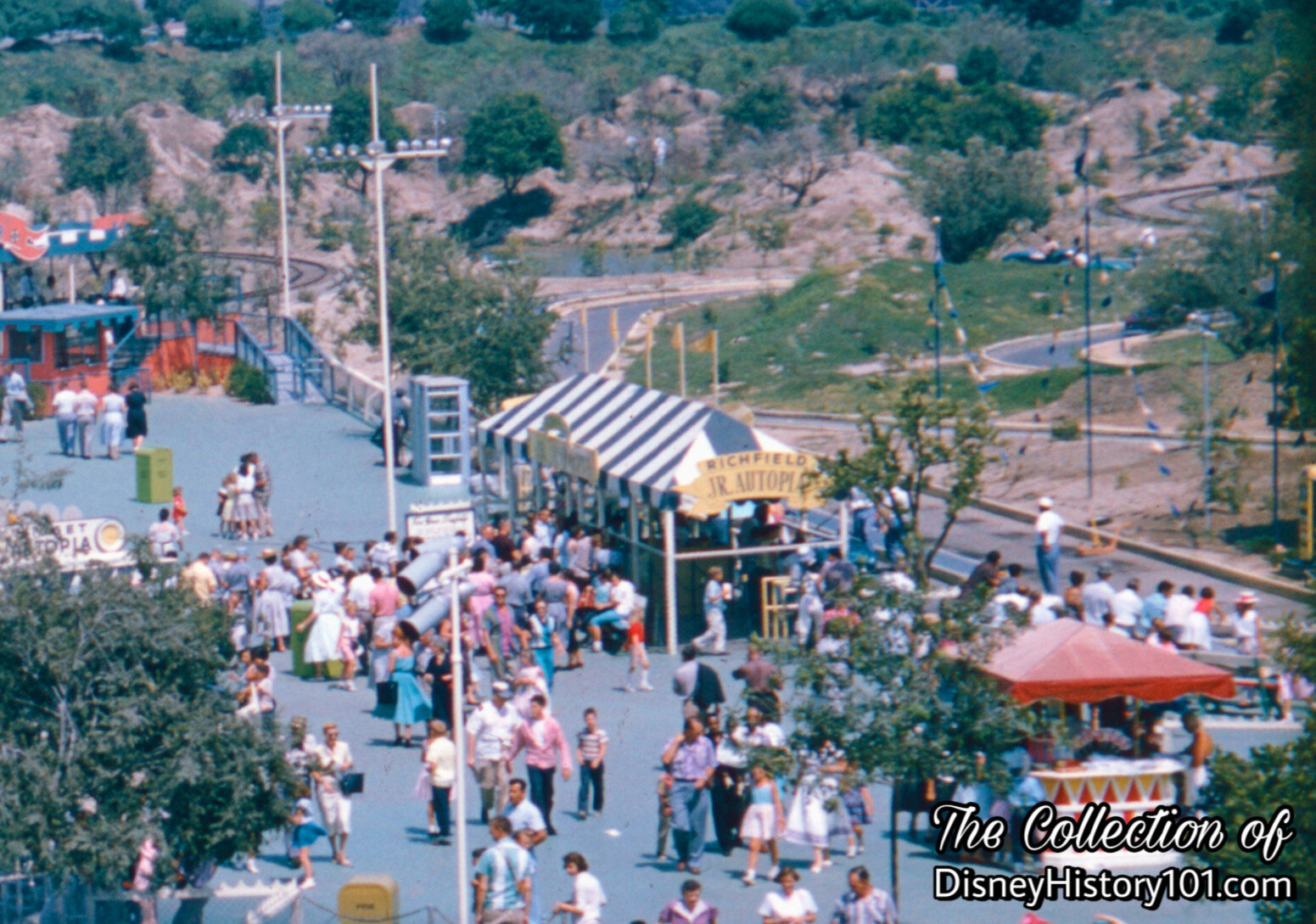
Junior Autopia Queue During a “Peak Period”, (1957)
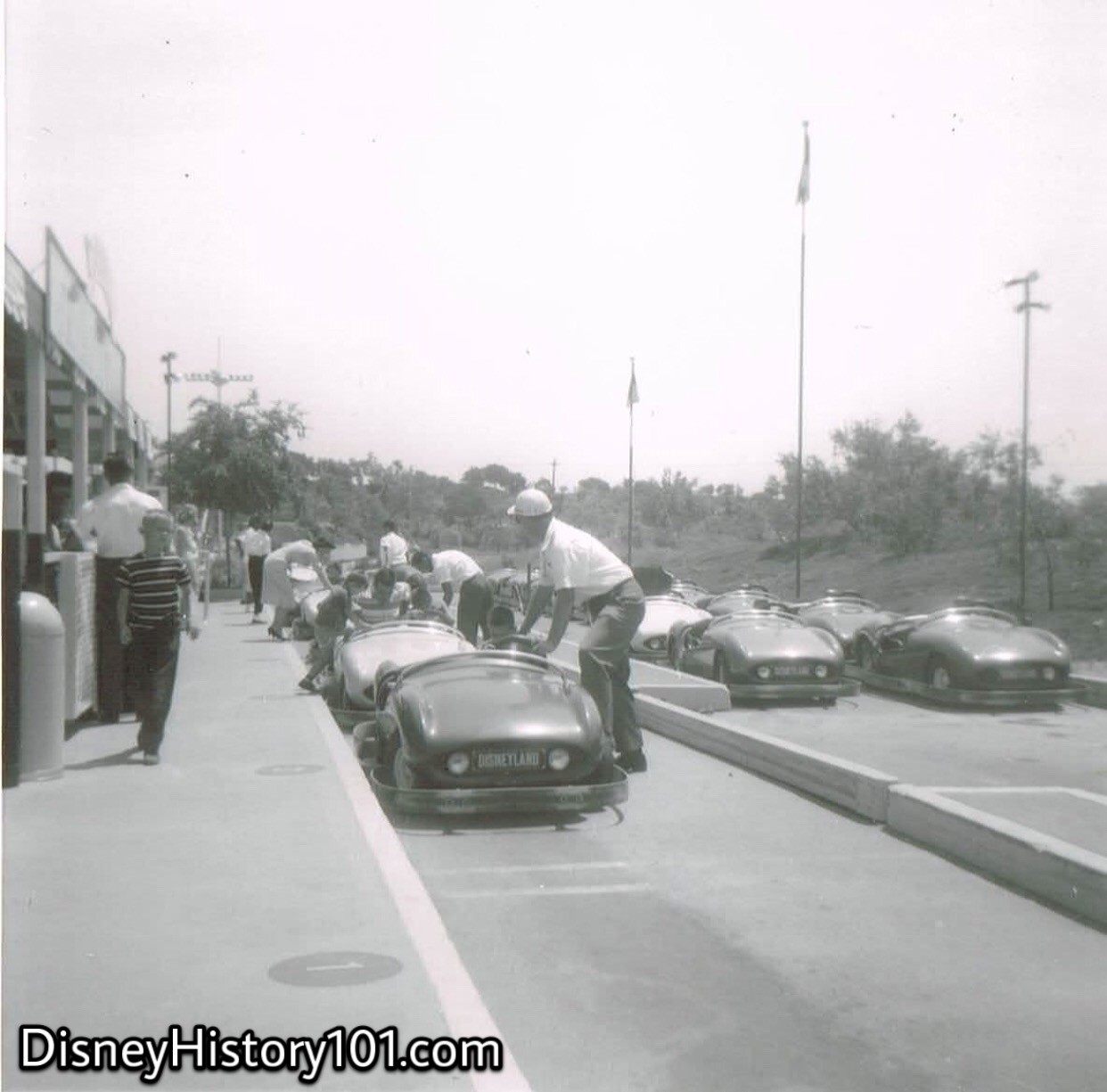
Junior Autopia Mark IIs & Junior Autopia Loading Zone
Smaller guests board and depart from Junior Autopia Mark IIs.
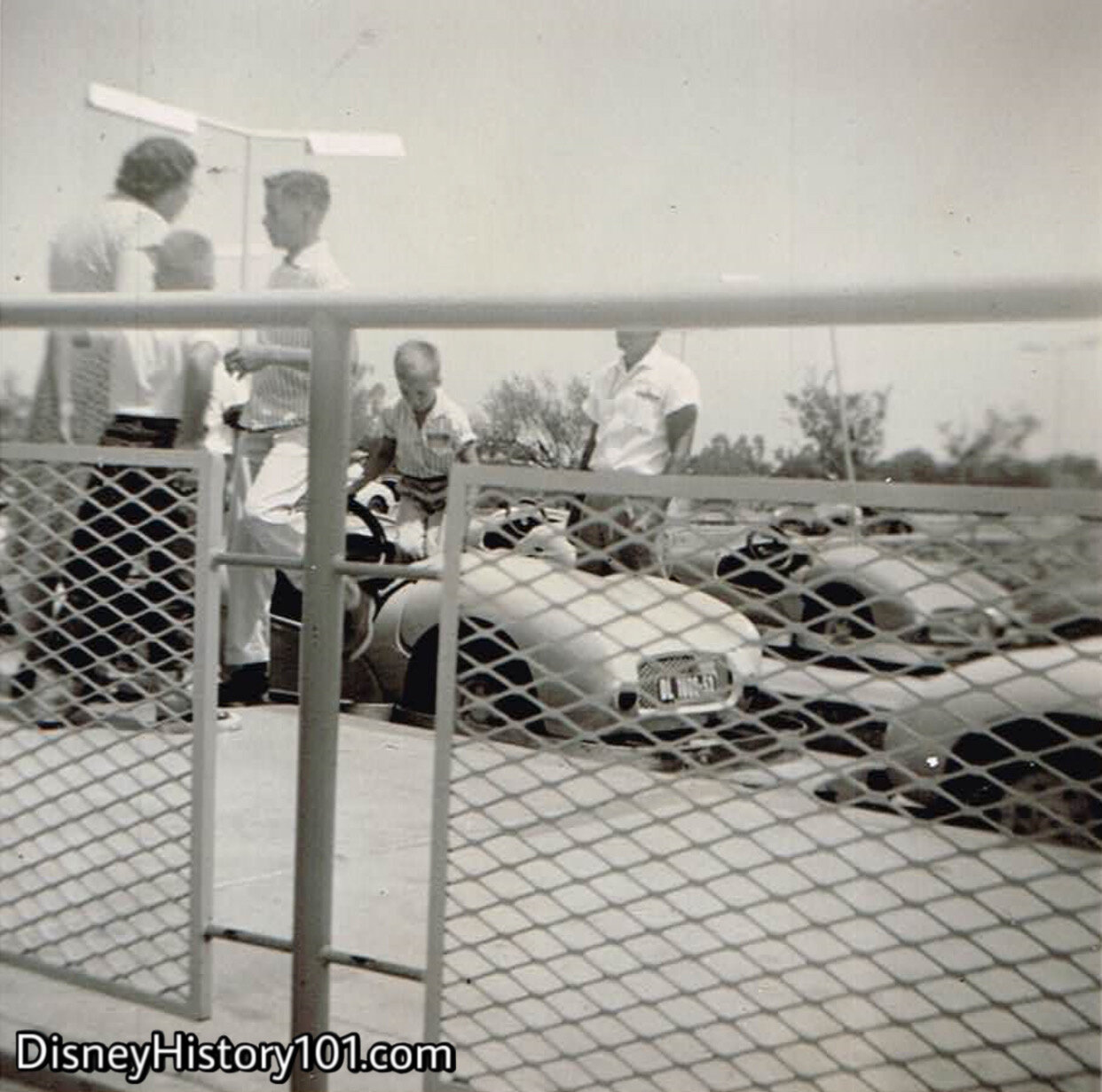
Junior Autopia Mark IIs & Junior Autopia Loading Zone, (1957)
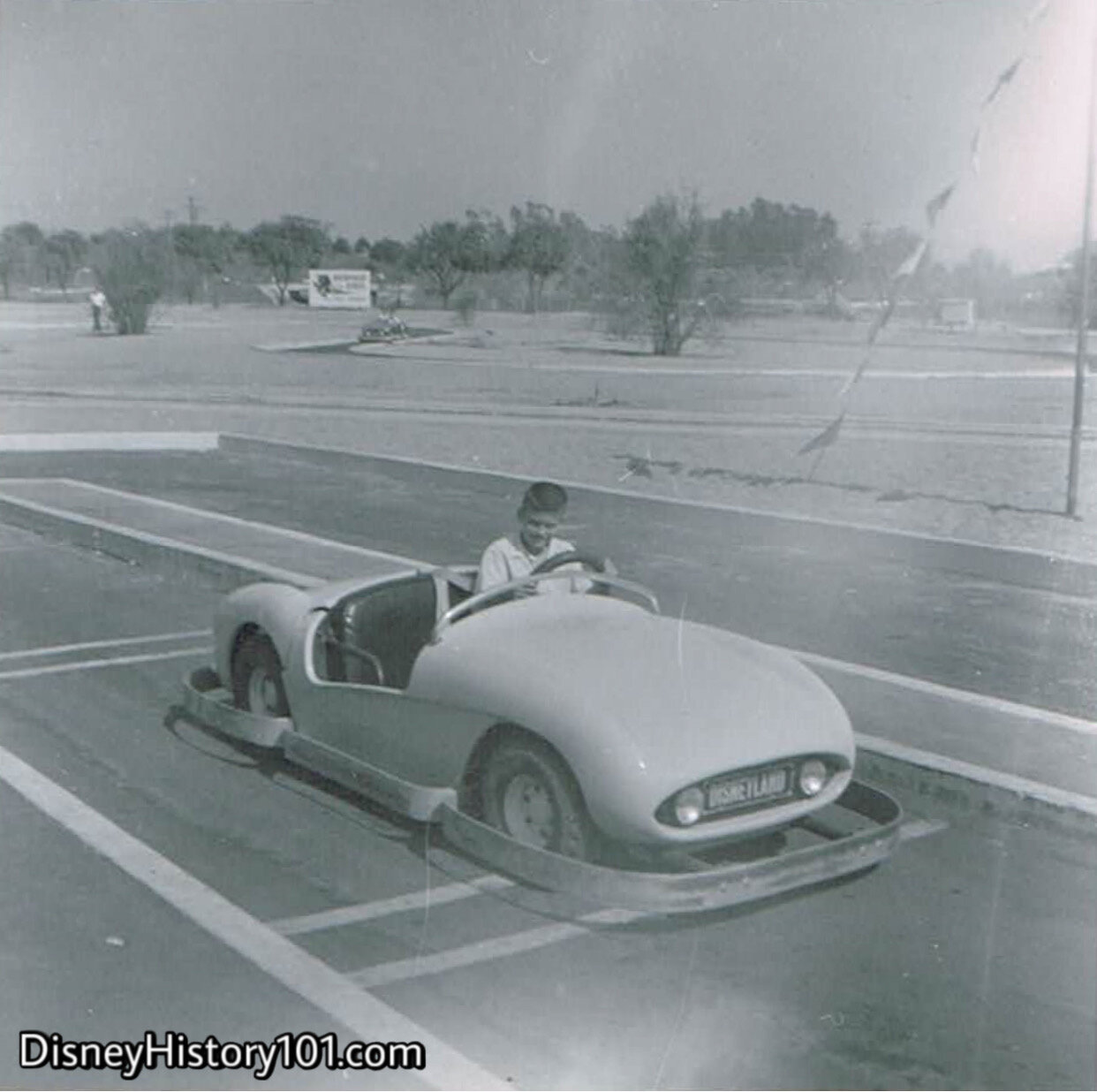
Junior Autopia Mark II & Junior Autopia Loading Zone
On this side of the berm, this young driver looks ready to roll onto “the open road” in his very own Junior Autopia Mark II car!
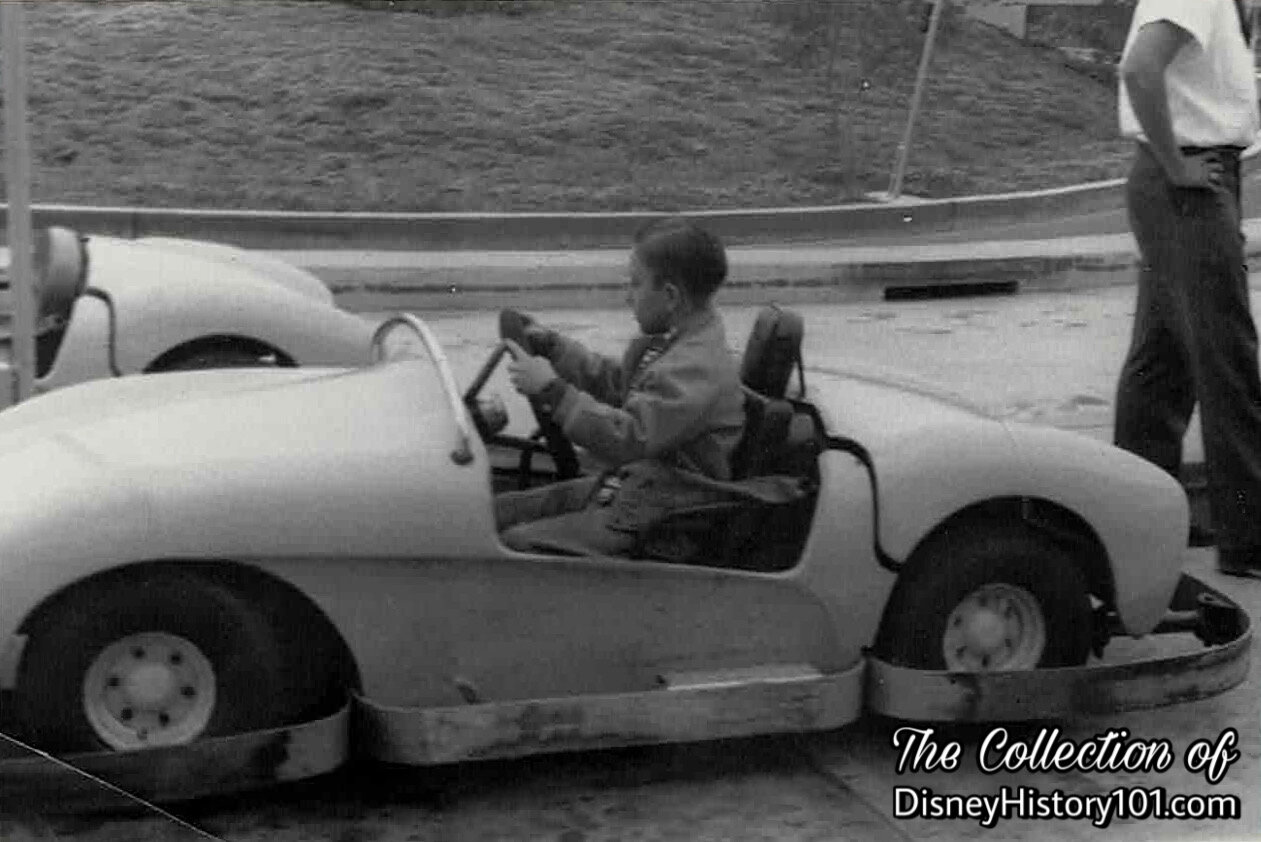
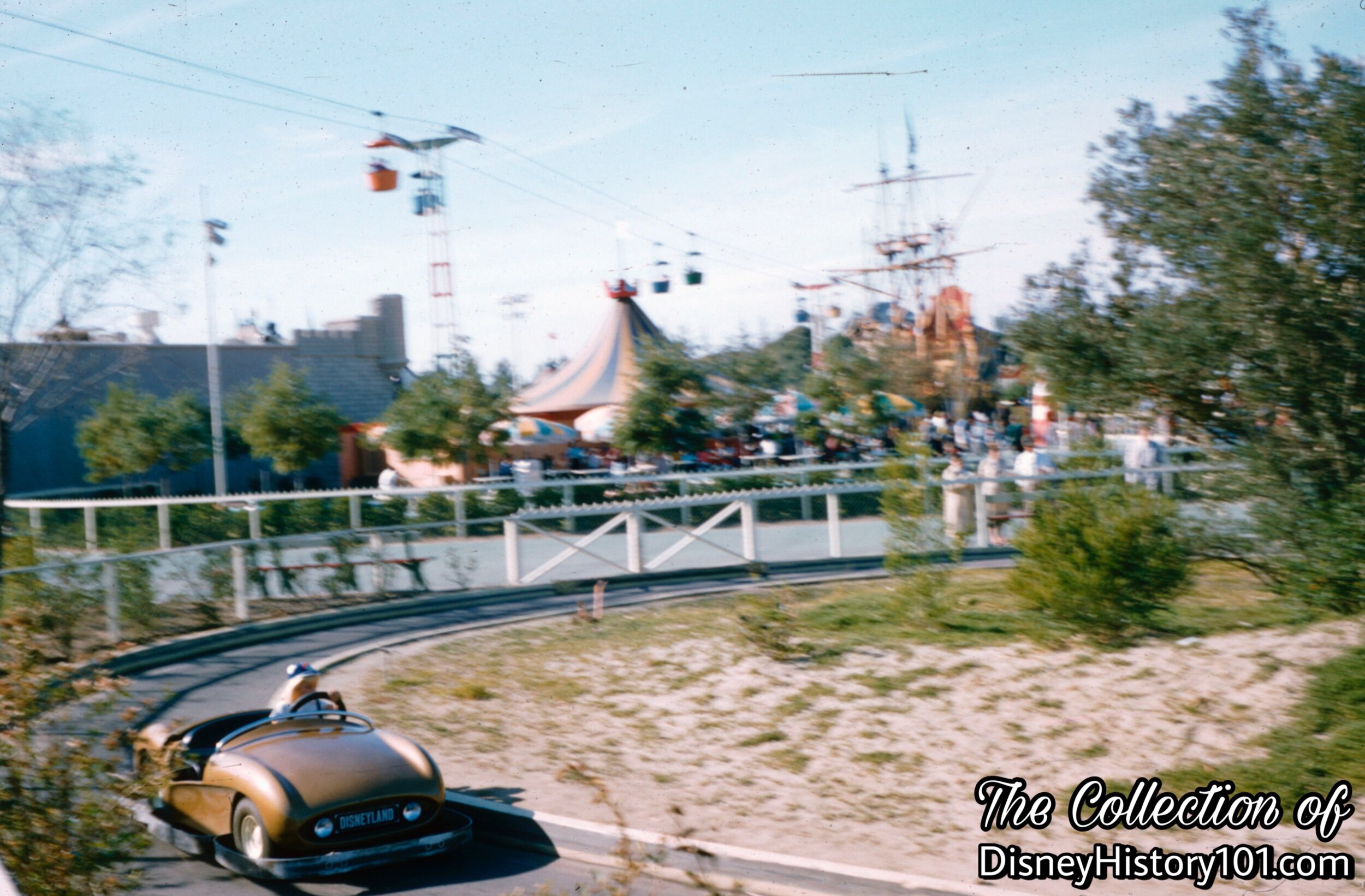
Autopia Mark II Vehicle & The Richfield Junior Autopia
An Autopia Mark II Vehicle rounds a curve of the Richfield Junior Autopia of Fantasyland, near the future site of the Matterhorn!
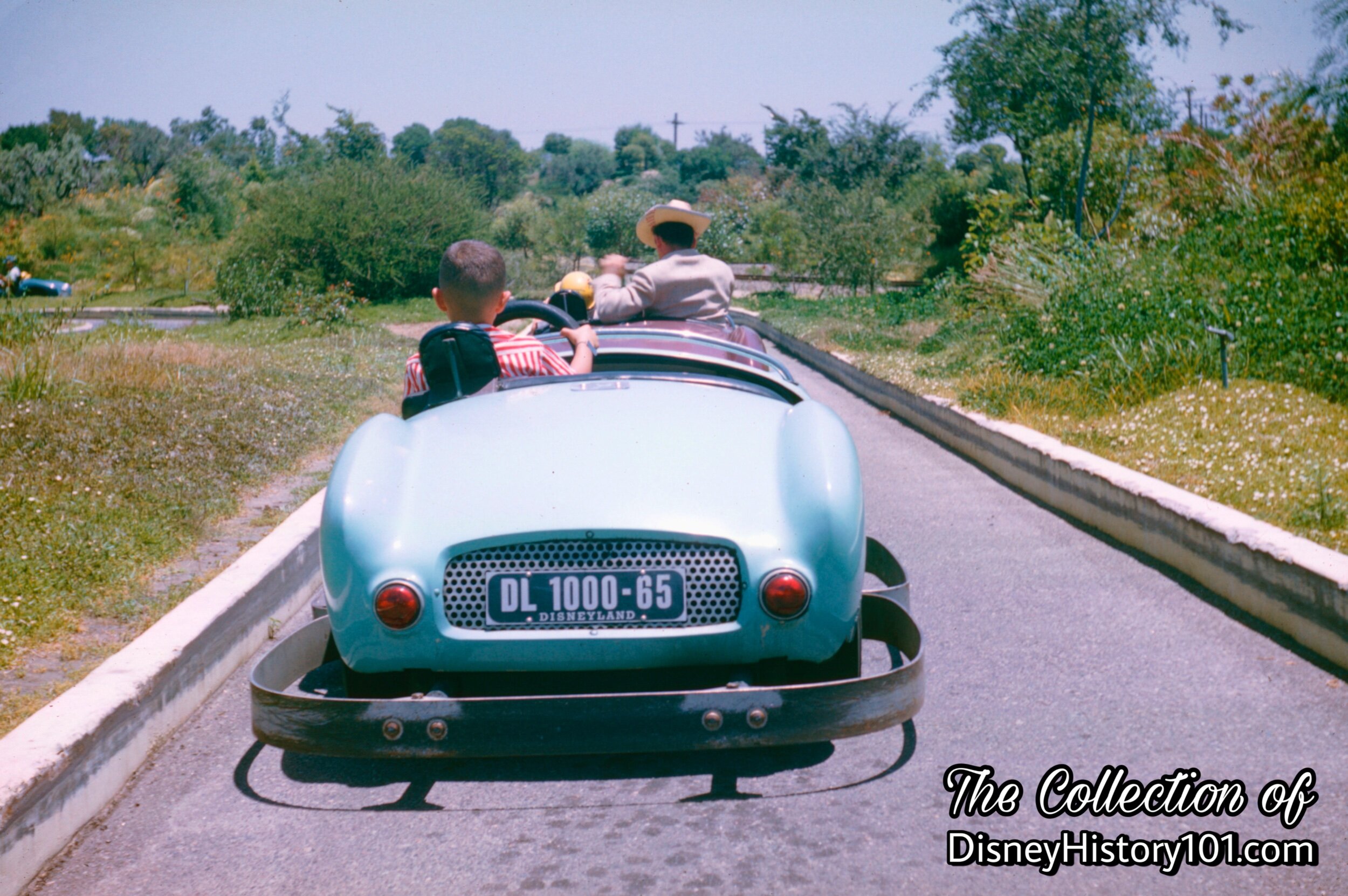
Autopia Mark II and Junior Autopia Track
Here, a youth savors “the challenge and promise of the future.”
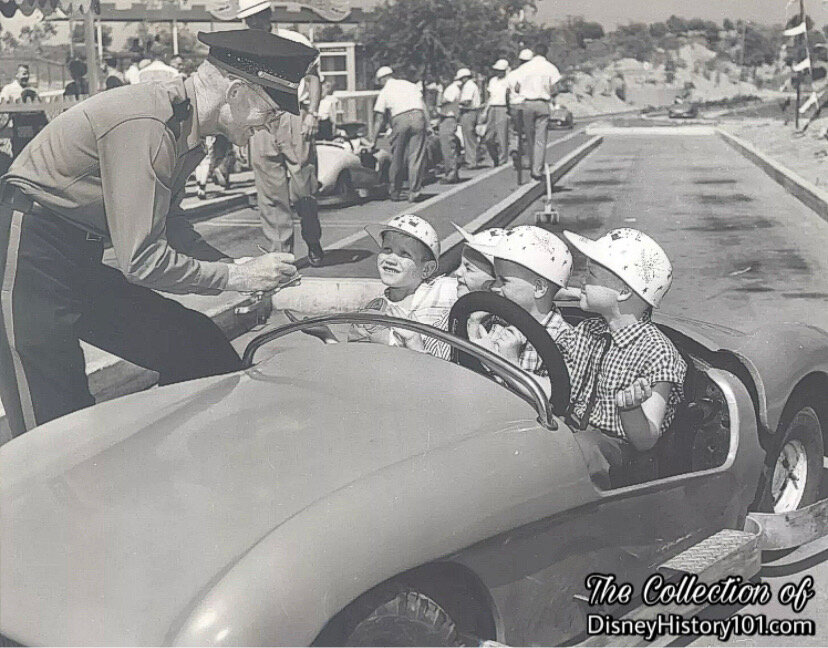
Junior Autopia and Mark II (Photo Credit : United Press Photo), September 6, 1957
The Mark II’s “seating accommodates two adults if necessary but is intended primarily to suit the age span from 6 to 16 years”, according to Road & Track magazine (published September of 1955). This preceding photo impresses just how many Guests (ages “6 to 16”) may fit in the Driver’s seat! The original accompanying press release caption (of the preceding photo) reads : “‘Four Guys on the Town’ - Giving up their horse for horsepower, the four lads covered some territory at the Anaheim, California, amusement park before tangling with the law again. Officer Sherman Sewell smiles like a Cheshire Cat as he writes out a traffic ticket for the boys, who insisted they were all ‘helping with the steering’. Left to right behind the wheel are James, Mike, Paul, and Phillip.”
Also visibly noticeable, is the rubber “deep dish” safety steering wheel cover.
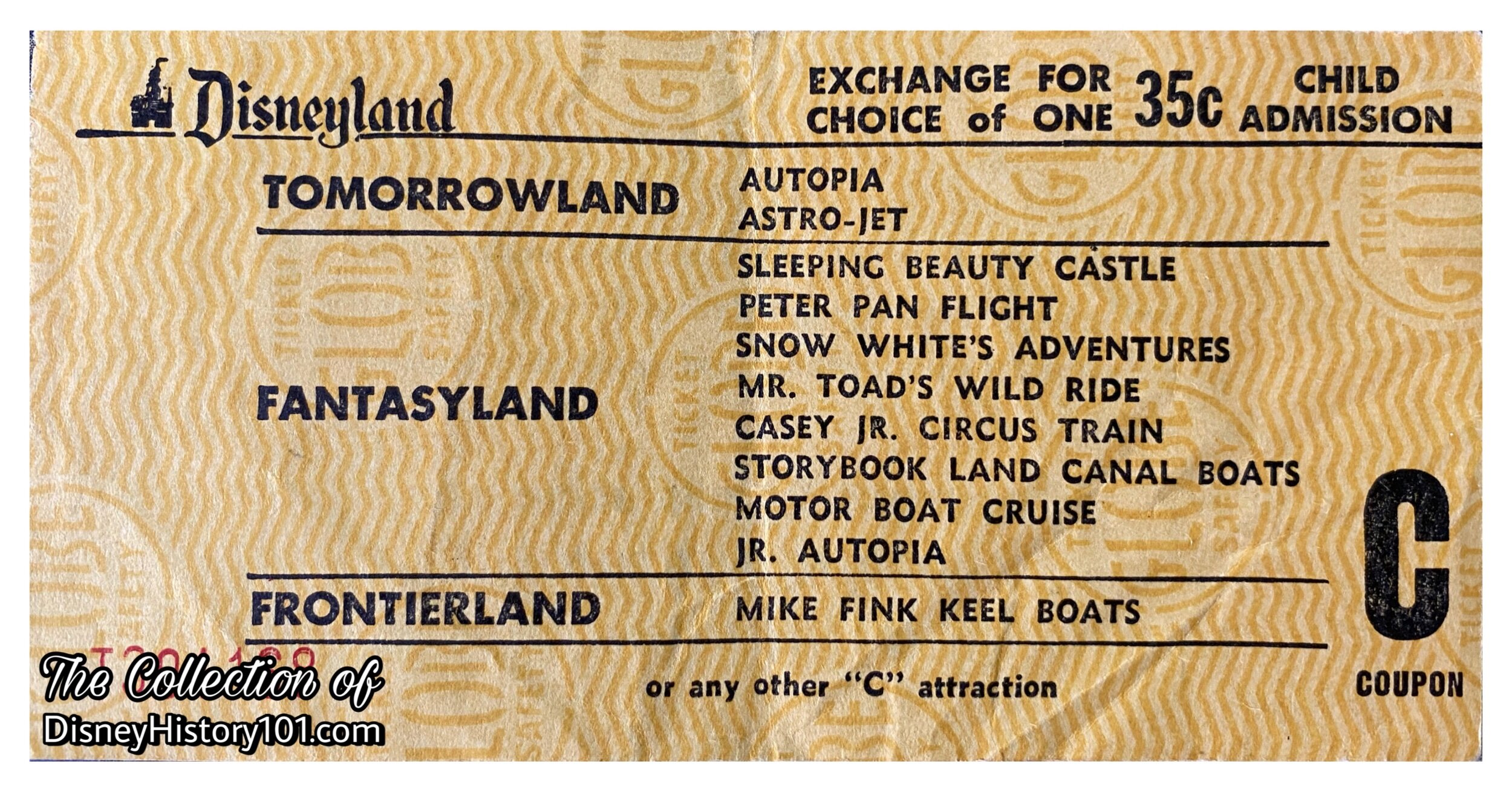
Disneyland Adult “C” Attraction Coupon, (c. June, 1957 - September, 1958)
The admission for both the Autopia (in Tomorrowland) and the Junior Autopia (in Fantasyland) was one “C” Coupon (35 cents) for about a year. Then, late in 1958 (and some time after this ticket was printed), the Junior Autopia closed for refurbishment.
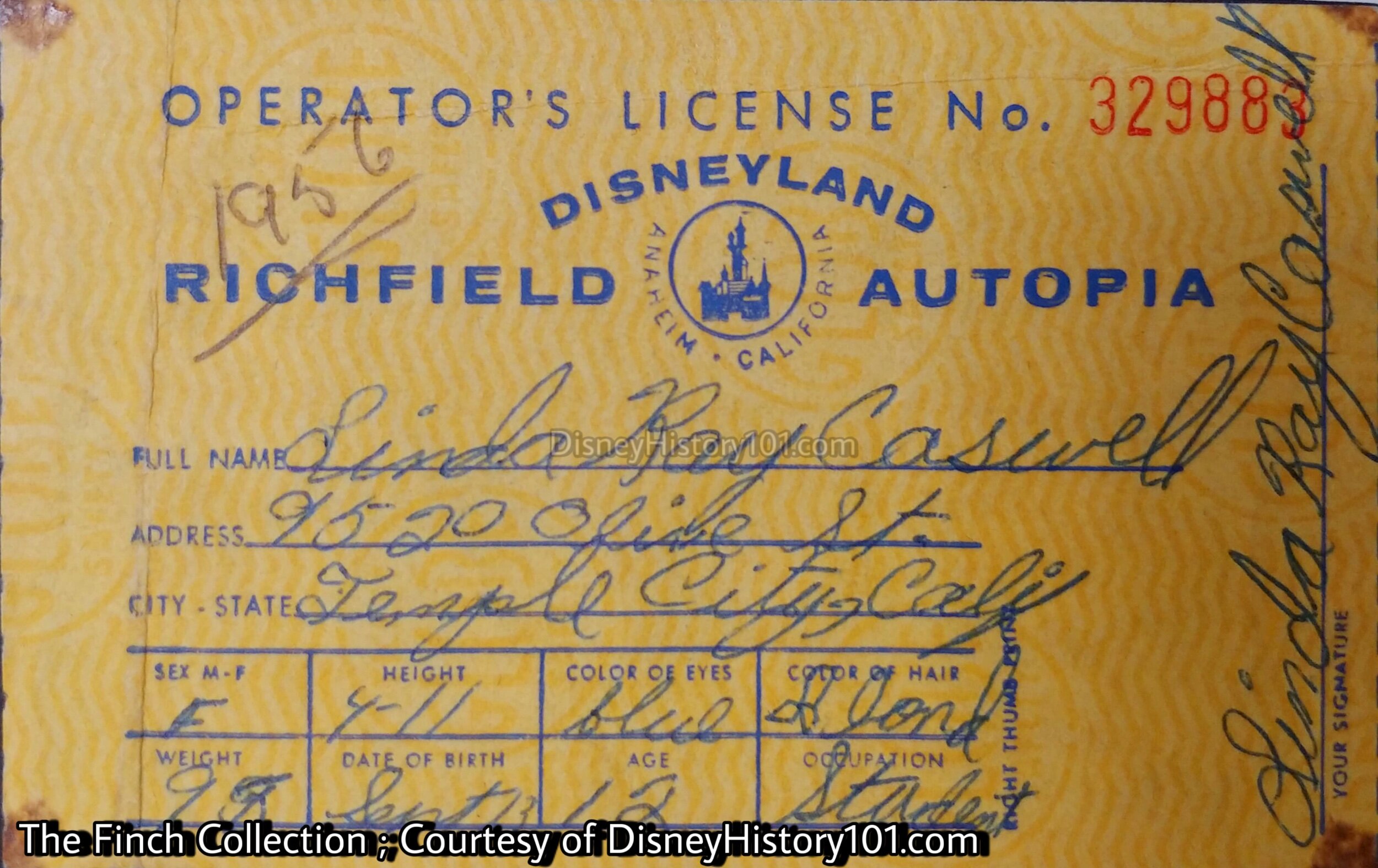
Official Driver's License for Richfield Autopia at Disneyland, 1956
The brand new Disneyland Richfield Autopia Operator’s Licenses even contained added fields for the cardholder to add their birthdate (instead of just their present age), their occupation, their right thumbprint, and even their sex (as there were many male and female motorists on the road at this time). Many young motorists (like young Linda) cherished their all-new Disneyland Richfield Autopia Driver’s Licenses.
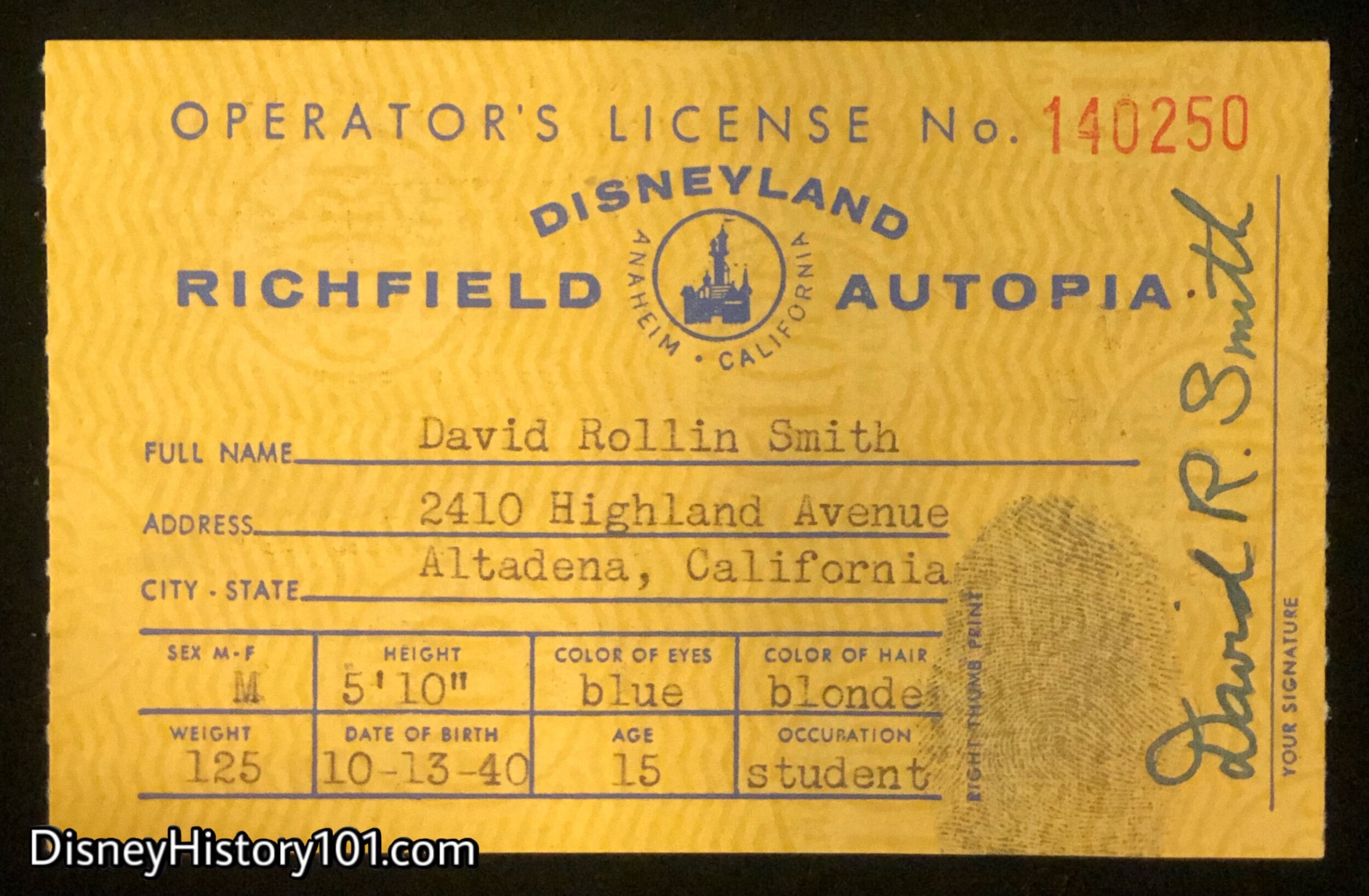
David Smith’s Operator’s License, Collection of the Walt Disney Studio Archives
Future Walt Disney Archivist David R. Smith preserved his license in pristine condition for his entire lifetime!

By the beginning of 1956, interest in the Autopia had not diminished! One Associated Press article “Plan Trip Into Drop of Water, Liberty Square for Disneyland” (by Bob Thomas, published April 20, 1957) vaguely hinted at big changes in store for the Autopia. Upon being invited to Walt Disney Studio, Bob Thomas mentioned, “Walt gave me a preview of his ambitious plans at his Burbank studios. He showed models and sketches…plans call for… a revamped autopia.”
A single prototype Autopia Mark III had been produced, with a brand new engine, ball-lock clutch, and a gear box. In addition, the very Autopia Freeway track was widened to support two separate lanes (and two loading zones). Also, a new triangular-shaped station (with queue) was added, and from there, guests were given a view of cars passing thru the underpass. The latter two expansions were directed by Joe Fowler (Disneyland Operations Committee) who oversaw the Construction & Maintenance division including Engineering, New Construction, Maintenance, and Janitorial. These big changes were made to support increased guest volume (accompanying more drivers), and were being enjoyed by guests like actress Spring Byington (of “December Bride) and child actor Bobby Diamond (of “Fury”) during a 1956 photoshoot for their “TV Radio Mirror” article!
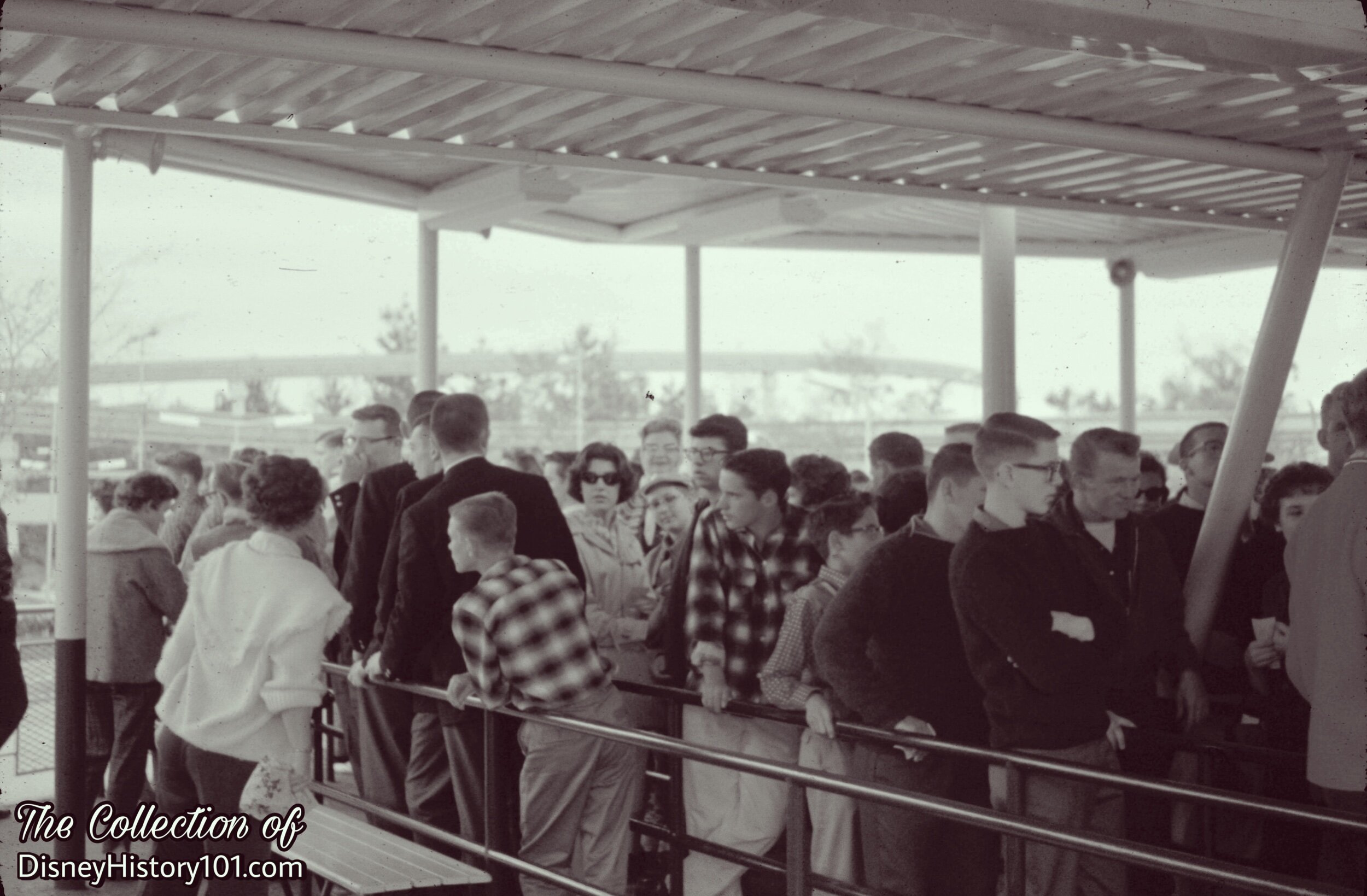
Disneyland Guest Control queue lines or “Audience Waiting Areas,” are designed as part of the attraction to make the guests' time in line as comfortable as possible.
Here Guests wait in an orderly fashion to board the Autopia.
By late 1956, the attraction was “a favorite with youngsters,” and in fact, “the mileage already travelled by these little cars… [equalled] 21 trips around the world,” according to “Disneyland - The Park” (a Disneyland anthology television series short film (first aired 1957).
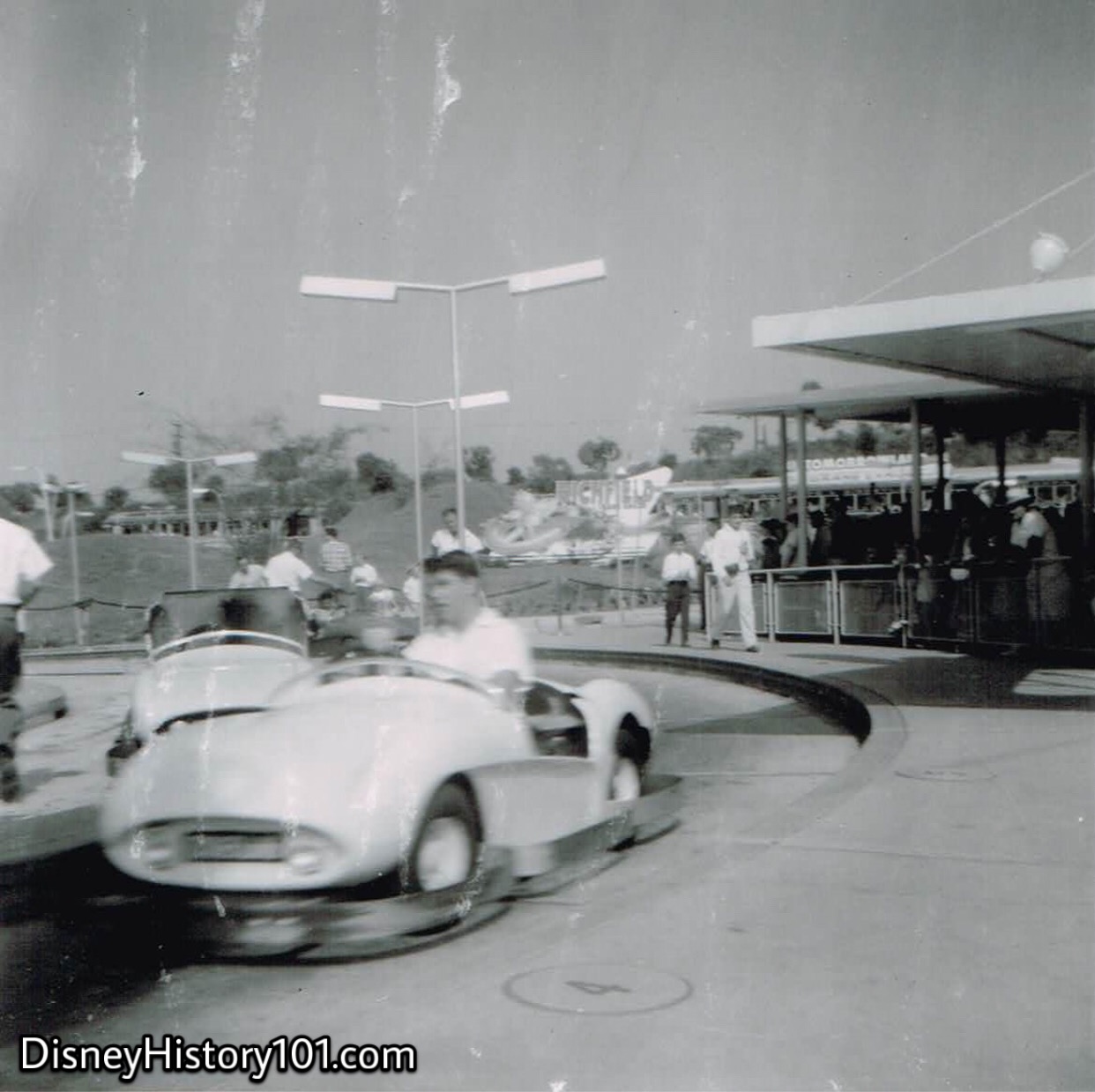
Autopia Mark IVs & Tomorrowland Autopia Loading Zone

Autopia Mark III, December 30, 1956.
Did you know that some of the Autopia cars during this era were two-toned in color? Its true, at least for that one car in the background that appears to be pieced together from a salvaged part (or two)! Just notice the yellow and blue FiberGlas body of that Autopia Mark III parked within the service area (in the background).
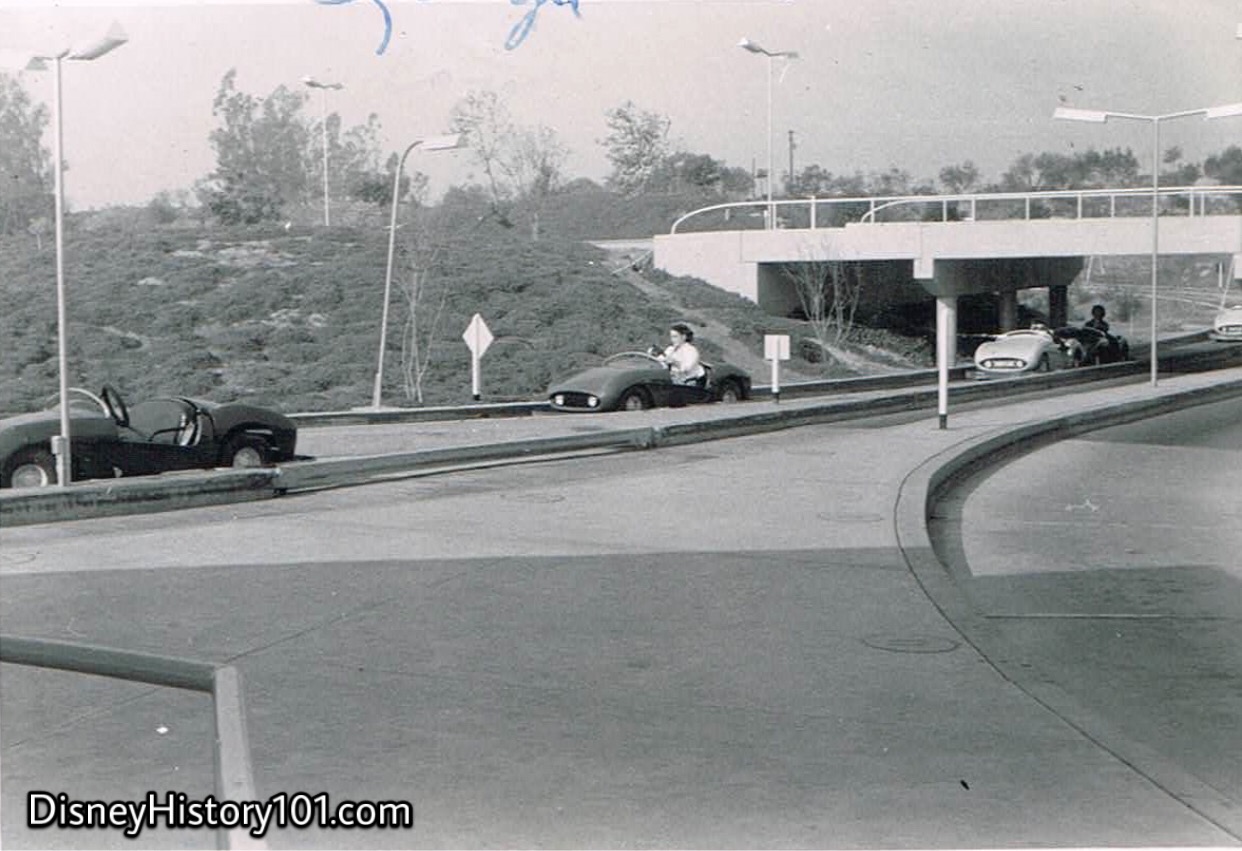
Autopia Mark IVs & Tomorrowland Autopia
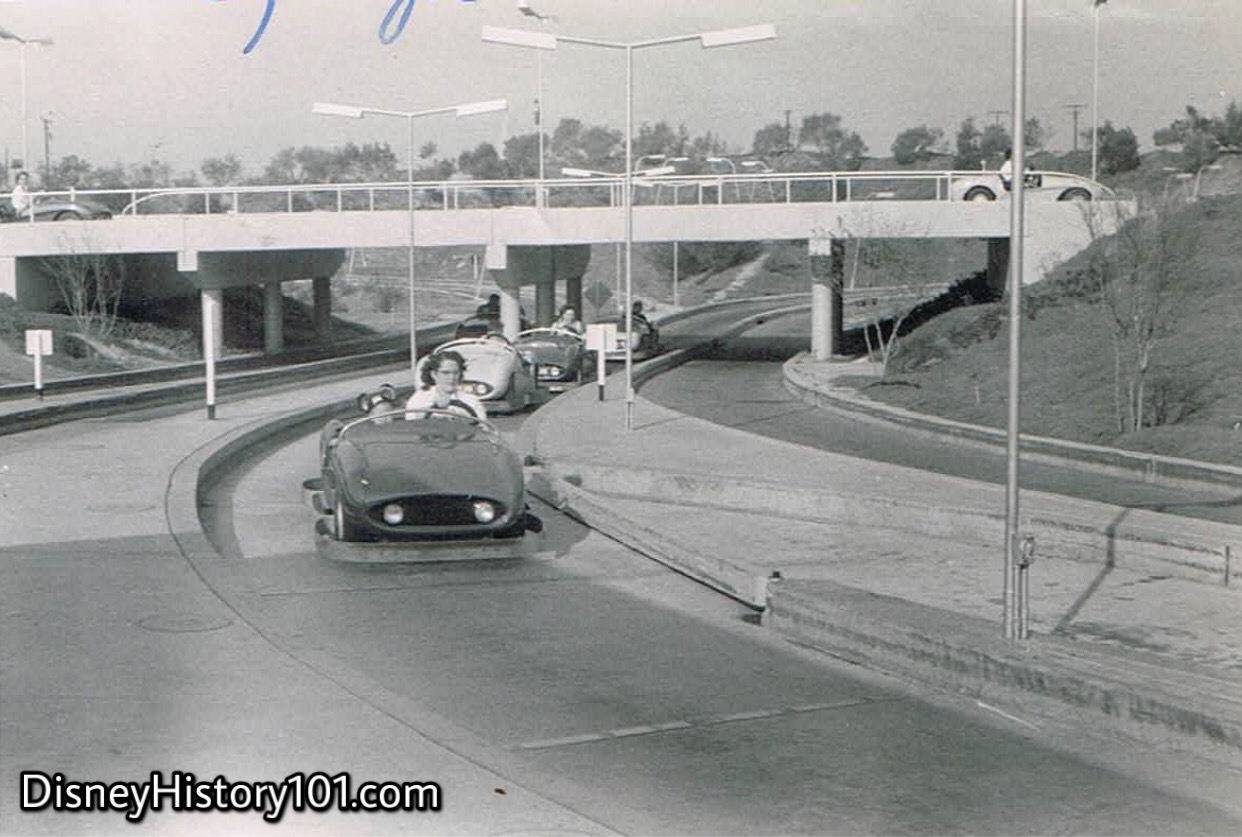
Autopia Mark IVs & Tomorrowland Autopia
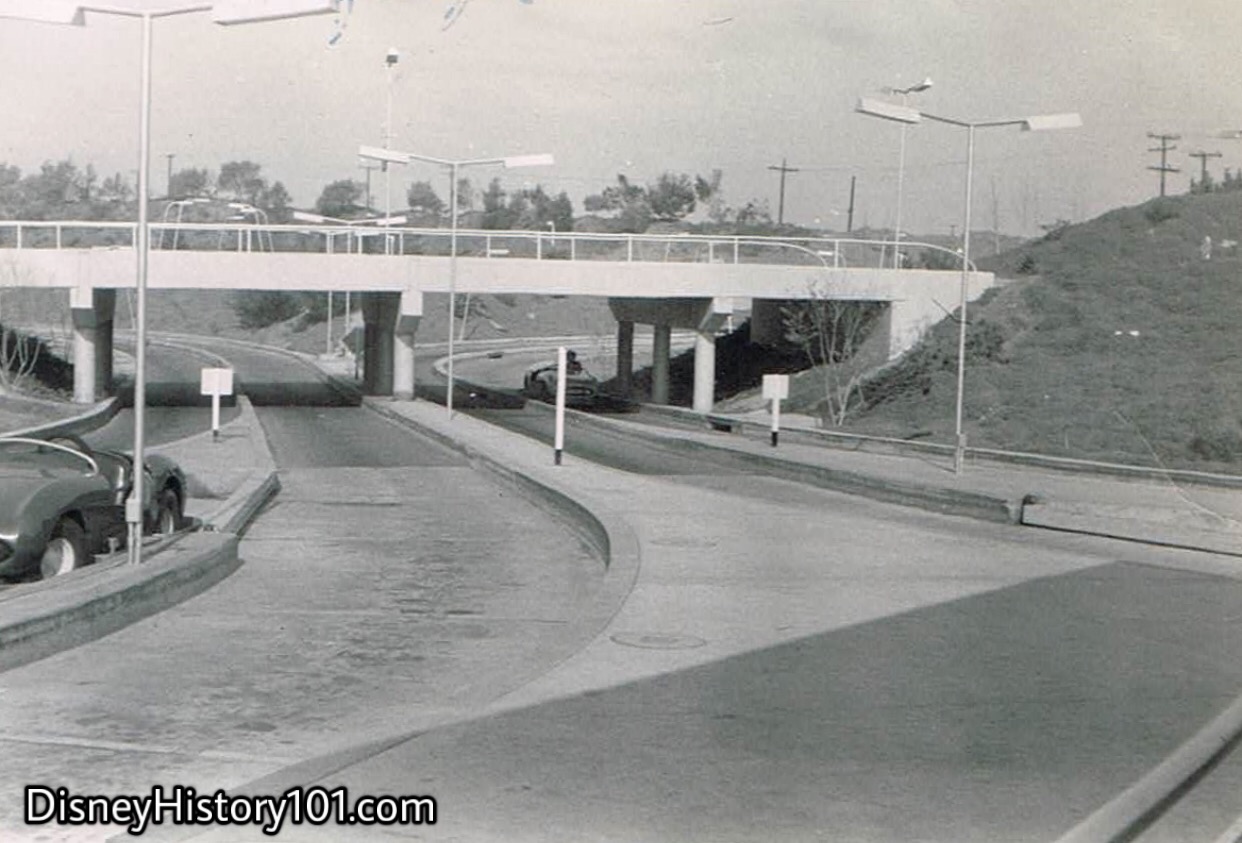
Autopia Mark IVs & Tomorrowland Autopia
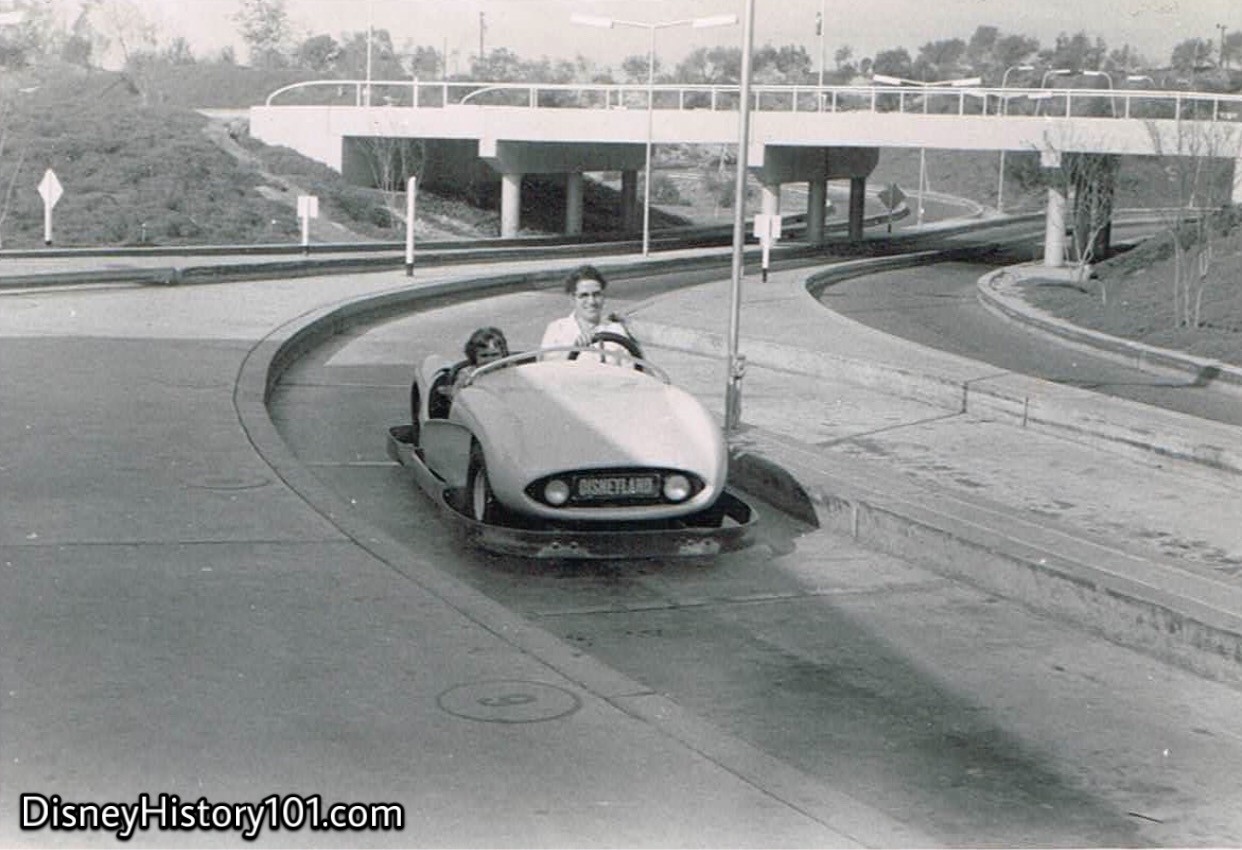
Autopia Mark IVs & Tomorrowland Autopia
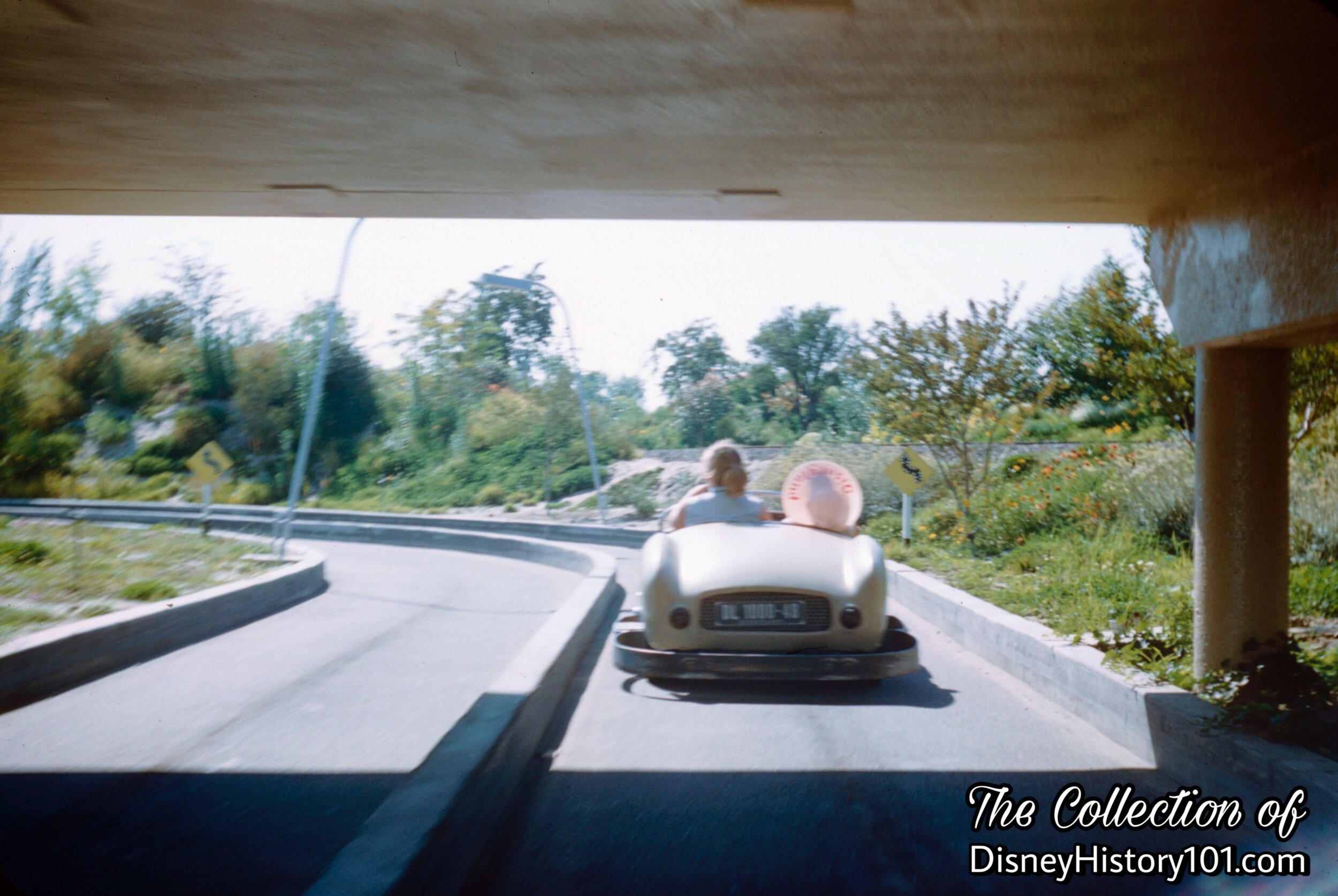
During non-peak periods, only a portion of the Autopia fleet was used. The rest were covered and parked aside.
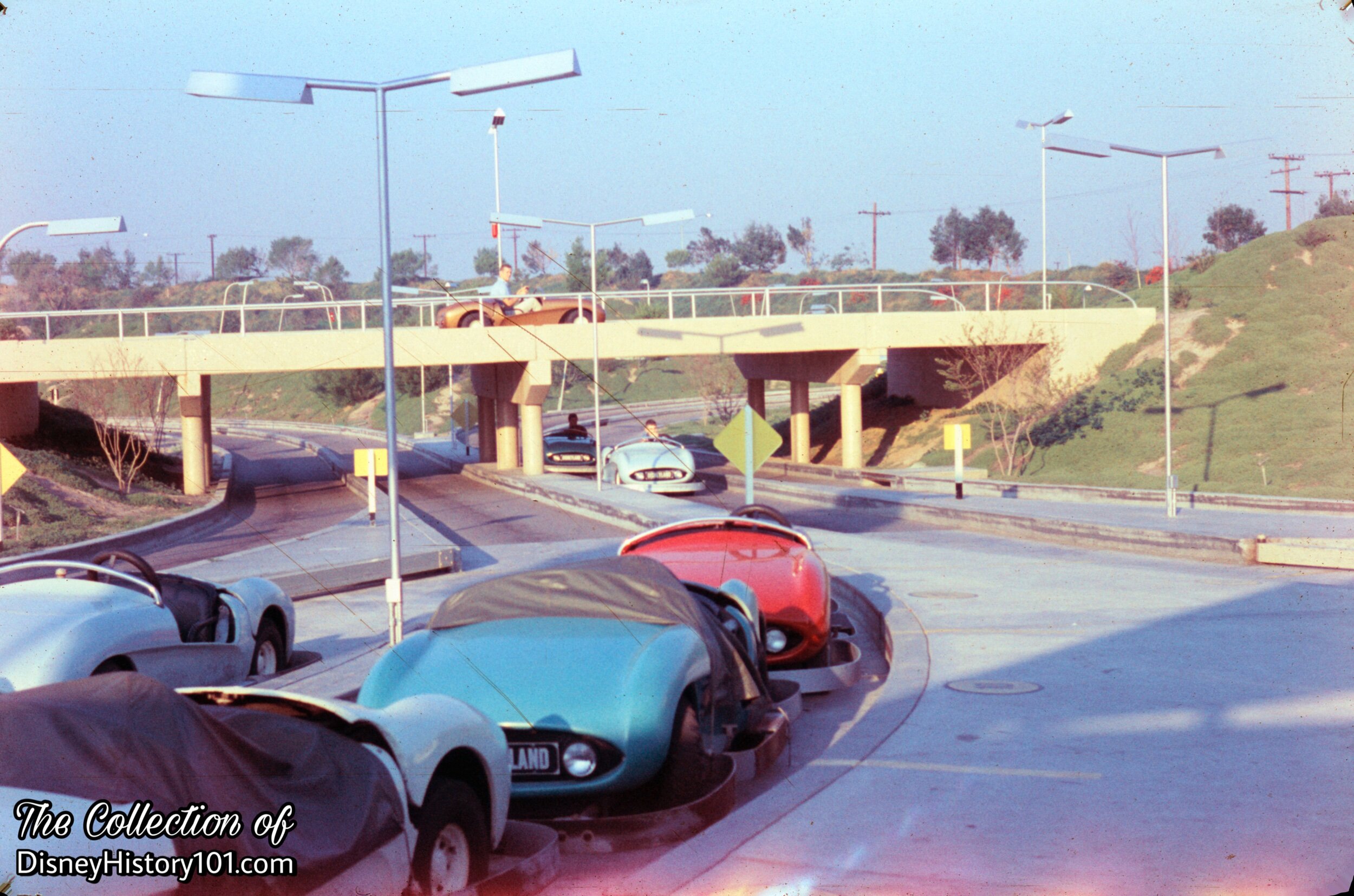
Cycled out Autopia Mark IVs & Tomorrowland Autopia
During this time the attraction was referred to as “Autopia Cars and Freeway” in A Complete Guide to Disneyland (published 1957).
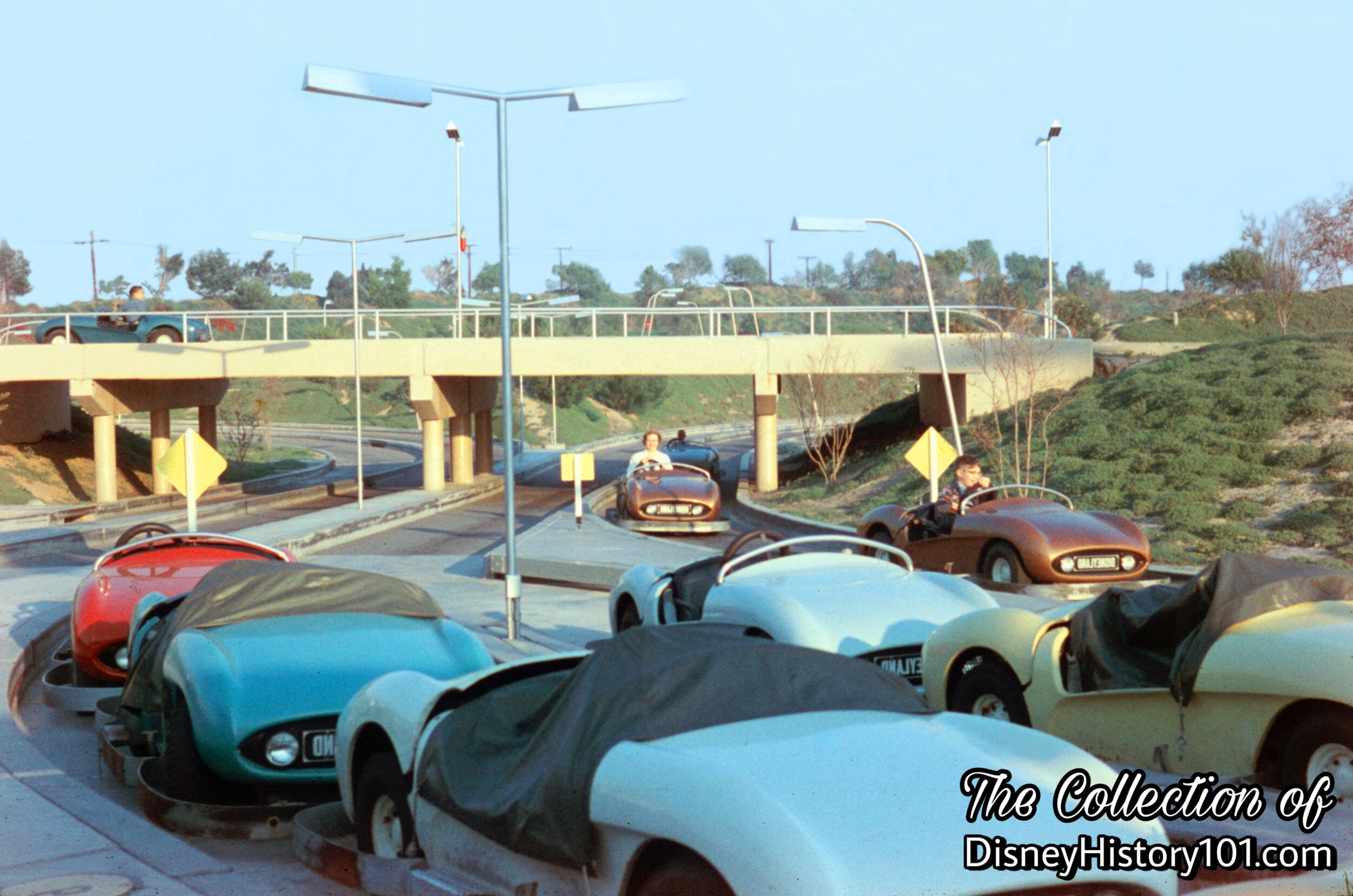
Cycled out Autopia Mark IVs & Tomorrowland Autopia
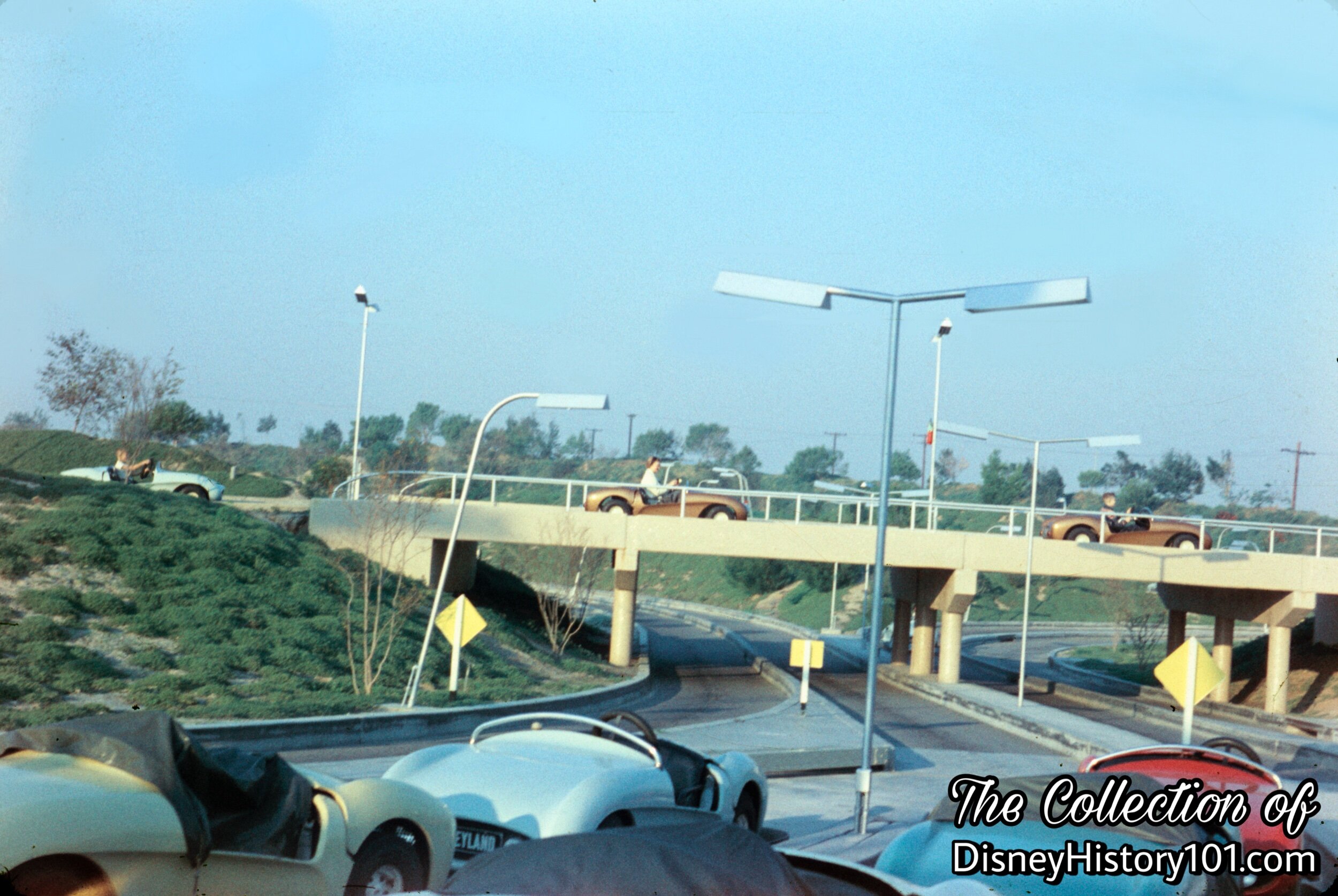
Cycled out Autopia Mark IVs & Tomorrowland Autopia
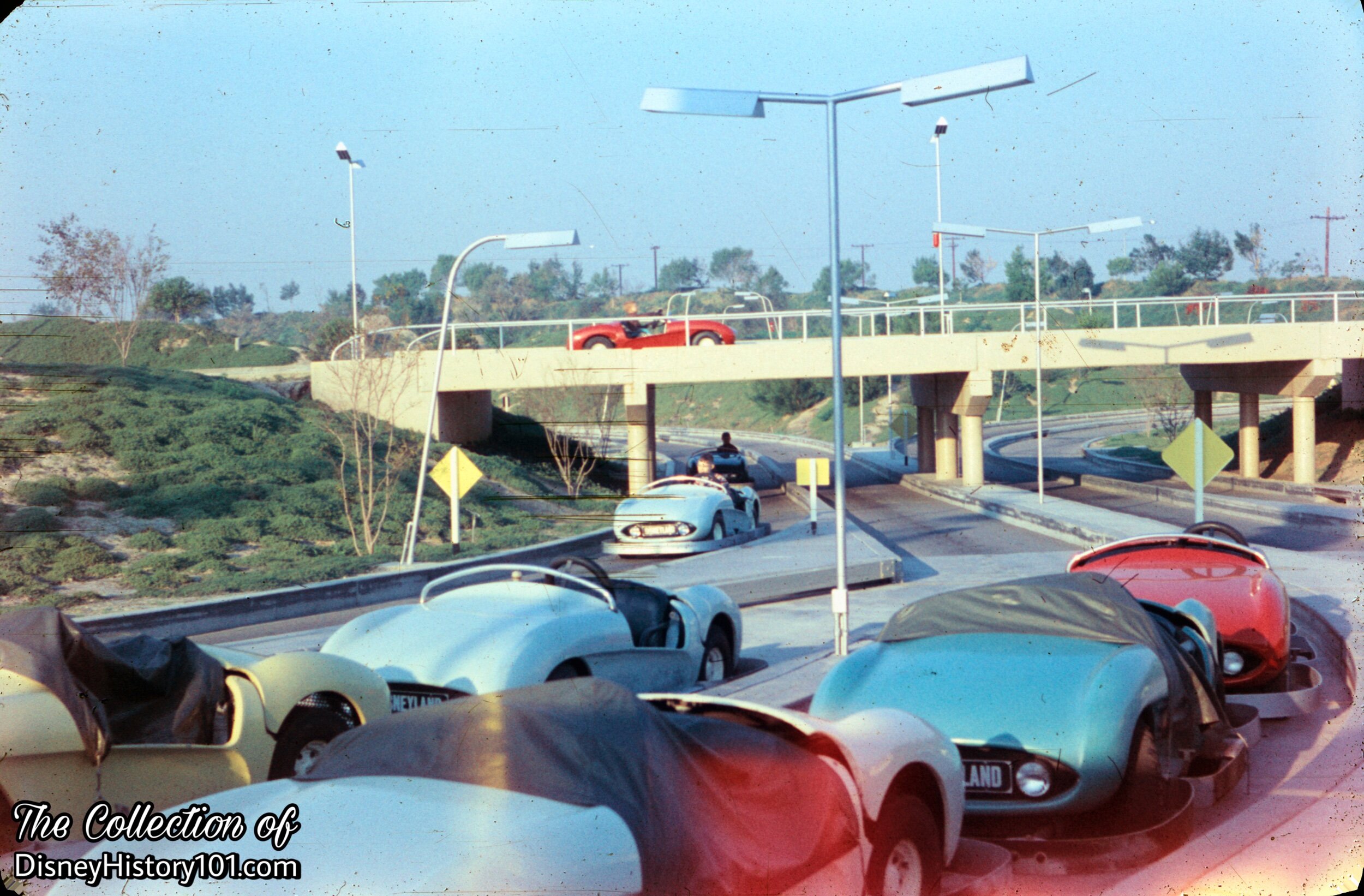
Cycled out Autopia Mark IVs & Tomorrowland Autopia
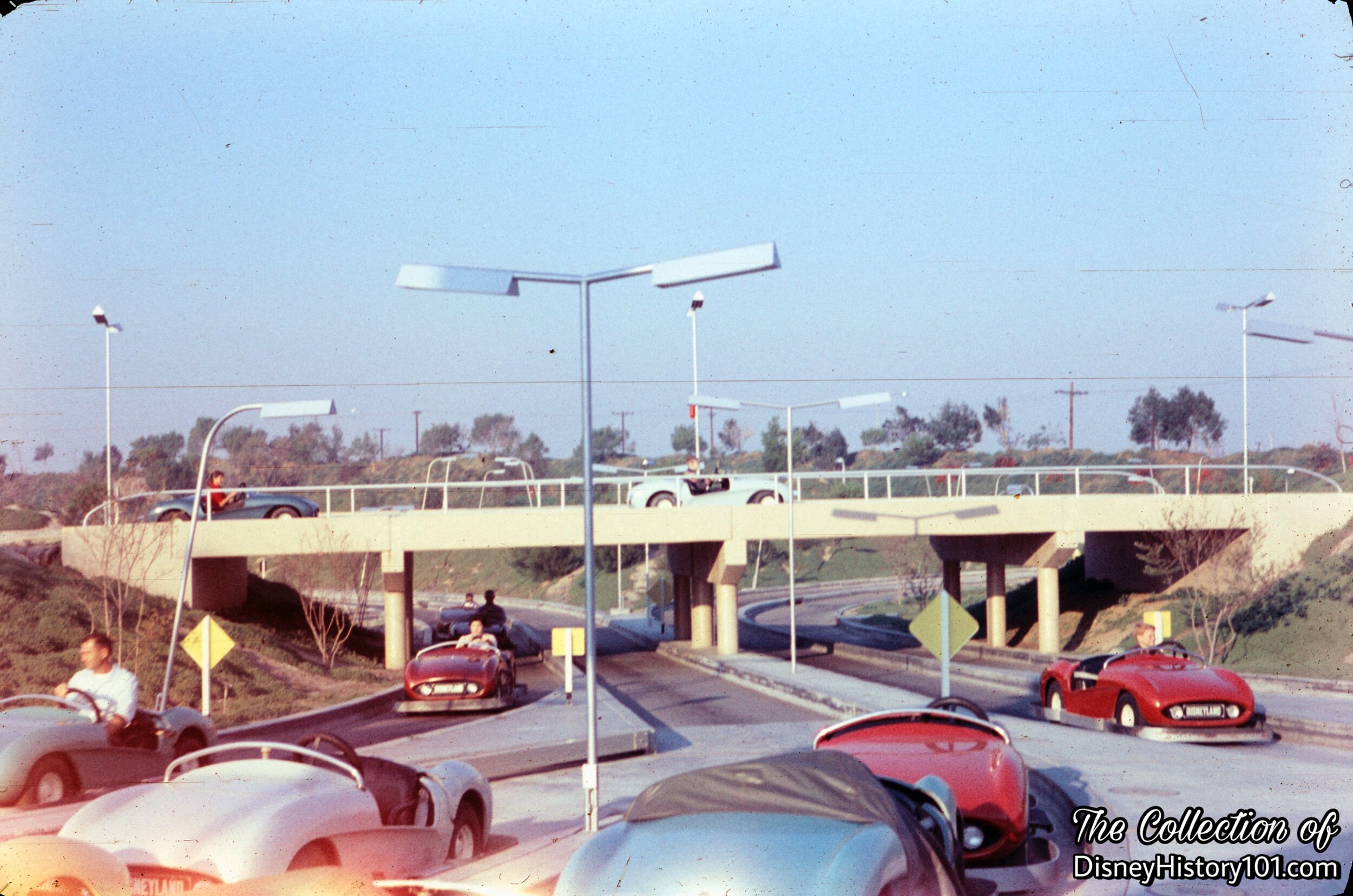
Cycled out Autopia Mark IVs & Tomorrowland Autopia
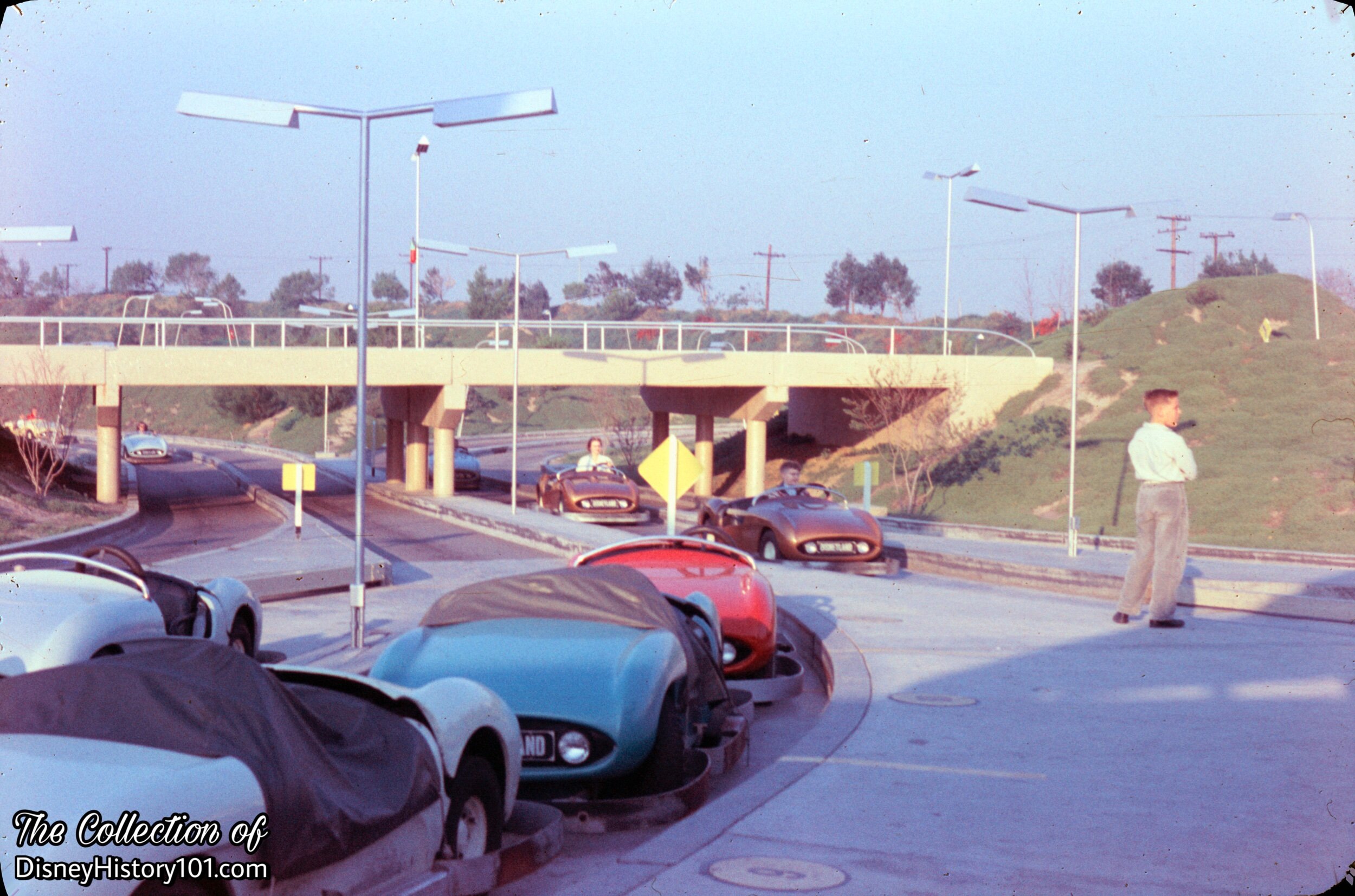
Cycled out Autopia Mark IVs & Tomorrowland Autopia
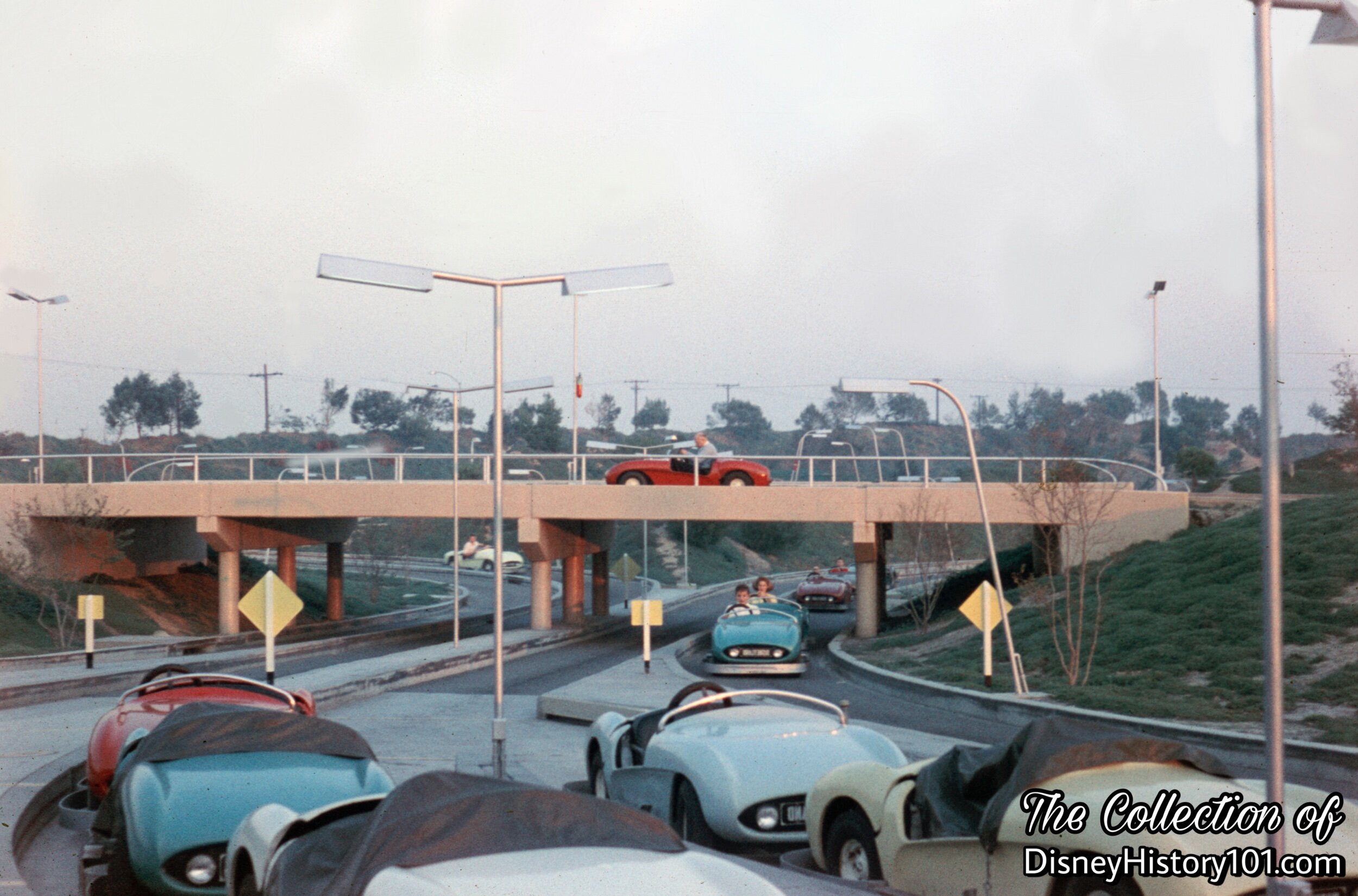
Cycled out Autopia Mark IVs & Tomorrowland Autopia
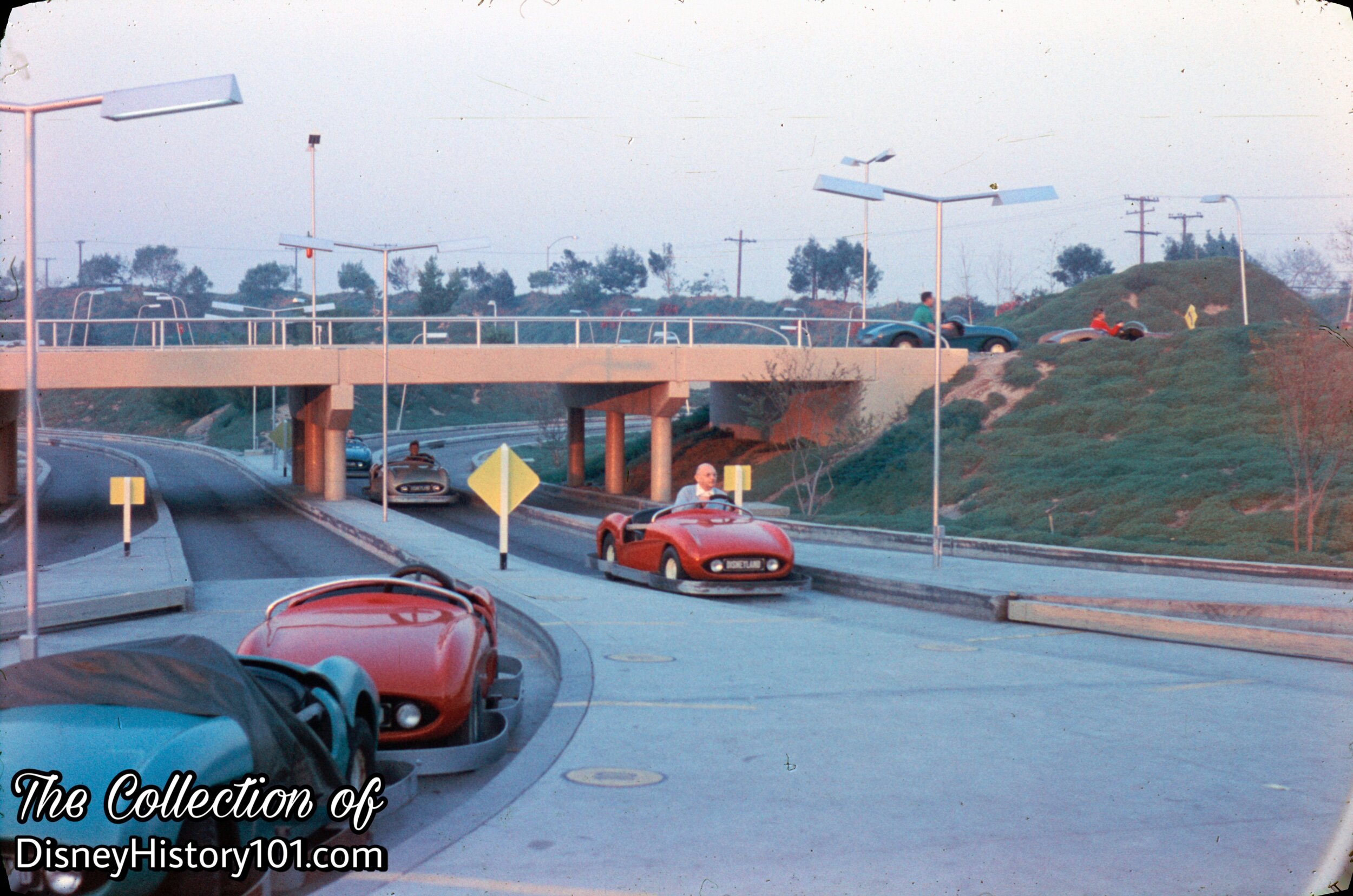
Cycled out Autopia Mark IVs & Tomorrowland Autopia
“Whether you’re 6 or 60”, you won’t want to miss the Richfield Autopia!

The Autopia Mark IV (essentially 39 rebuilt Mark I’s) appeared around the summer of 1956. These cars featured improved mechanical designs based on the single prototype Mark III (that was completed in early 1956). “Walt Disney’s Mechanical Wonderland” (published in Popular Mechanics, November of 1957) divulged some of the research and development related to these improvements :
“Bob Gurr, director of special vehicle development, tested his Autopia cars. Nowhere do cars get tougher daily treatment. But they’re as maintenance-free as a midget car can be.
Bob supervised the building of 11 designs, then put each through a grueling 300-hour test. The patrons drove the car all day. Then special drivers took over to run it all night. Mechanics added gas and oil but never laid a wrench to the car. Some of the early designs lasted only a few hours. Bob hauled these failures back to the machine shop, evaluated them, then redesigned and rebuilt them. And back they went to Autopia for another test.
Finally, the 11th car ground around the course for two weeks without any failures. Bob chose this one as the new Mark IV.”
Including the “new” Autopia Mark IV (essentially 39 rebuilt Mark I’s), there were now 79 total glass-fiber bodied Autopia cars traveling Disneyland’s freeways at nine miles an hour! These cars were easily disassembled for repairs or maintenance (for instance, the engine and wheel assembly could be removed by disengaging a simple sliding pin). So finally, by the summer of 1957, the Autopia Freeway had been completely redesigned to “handle many more drivers,” according to Disneyland Holiday (published Summer, 1957). By this time, the Sr. Autopia attraction (with Attractions Hosts) was under the oversight of Foreman Bob Hight.
During 1958, Bank of America had Disneyland appraised regarding a loan. A detailed report mentioned an Autopia Ticket Canopy (valued at $ 5,400) and the Autopia Service Garage: a plywood on wood frame open front garage (valued at $2,500). The latter structure had a composition roof, concrete foundation and slab, unfinished interior, 720 sq. ft., and concrete apron, 16’ x 40’.
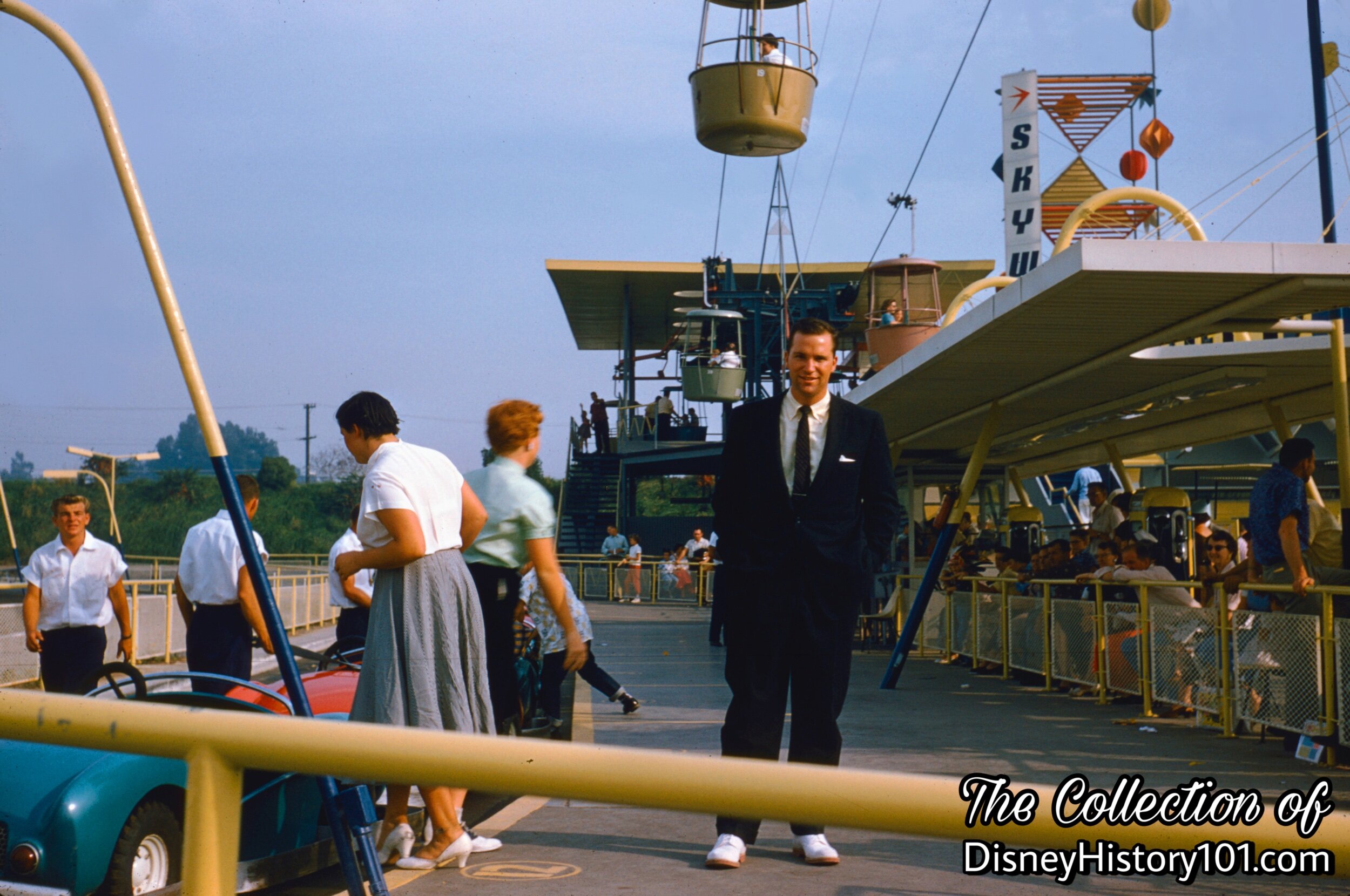
Skyway Over Richfield Autopia
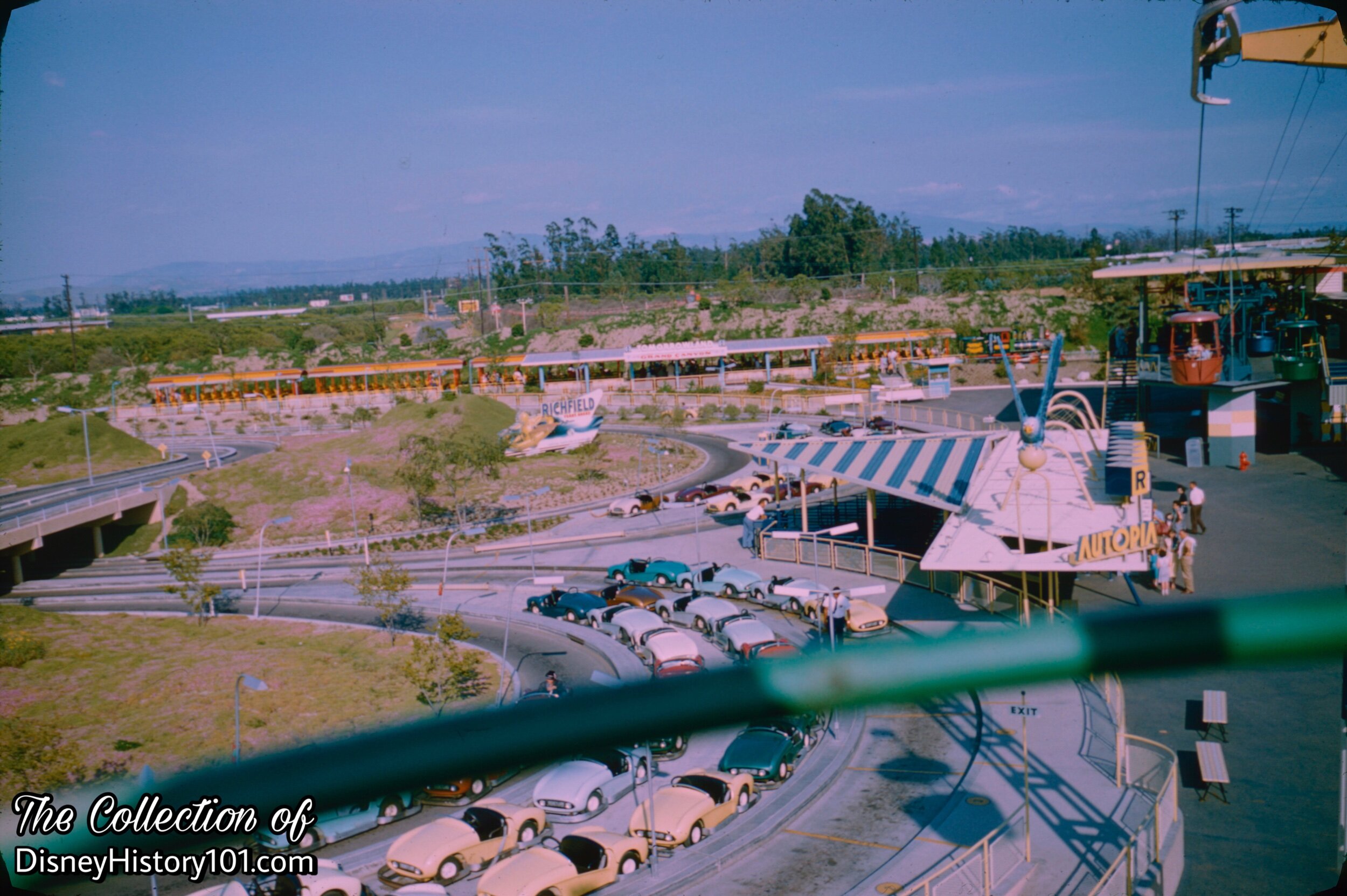
Tomorrowland Autopia, (May, 1958)
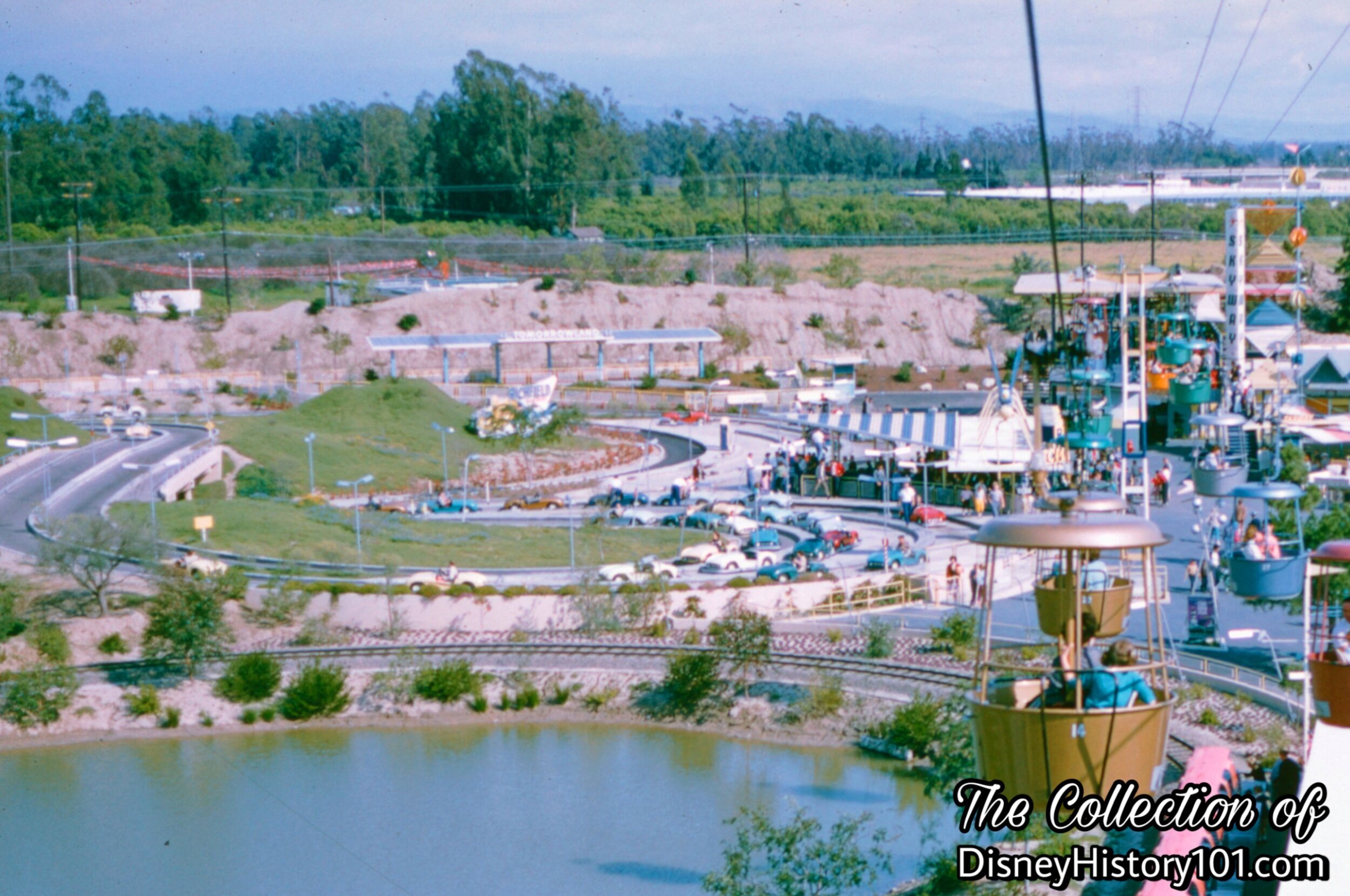
Tomorrowland Autopia, 1958.
The Autopia Mark III was as popular as ever by the time Disneyland’s 10 millionth guest (five-year-old Leigh Woolfenden) visited Disneyland on December 31, 1958 [see Disneyland Holiday magazine, Spring 1958, page 1]!

Tomorrowland Autopia, (c. May, 1958)
We’re looking at the unloading zone for the Richfield Tomorrowland Autopia (c.1958), with its new Autopia Mark IVs. If they look similar to the Mark Is, Mark IIs, and Mark IIIs, its because those fleets were essentially the same model with additions of bumpers and spring-loaded bumpers.
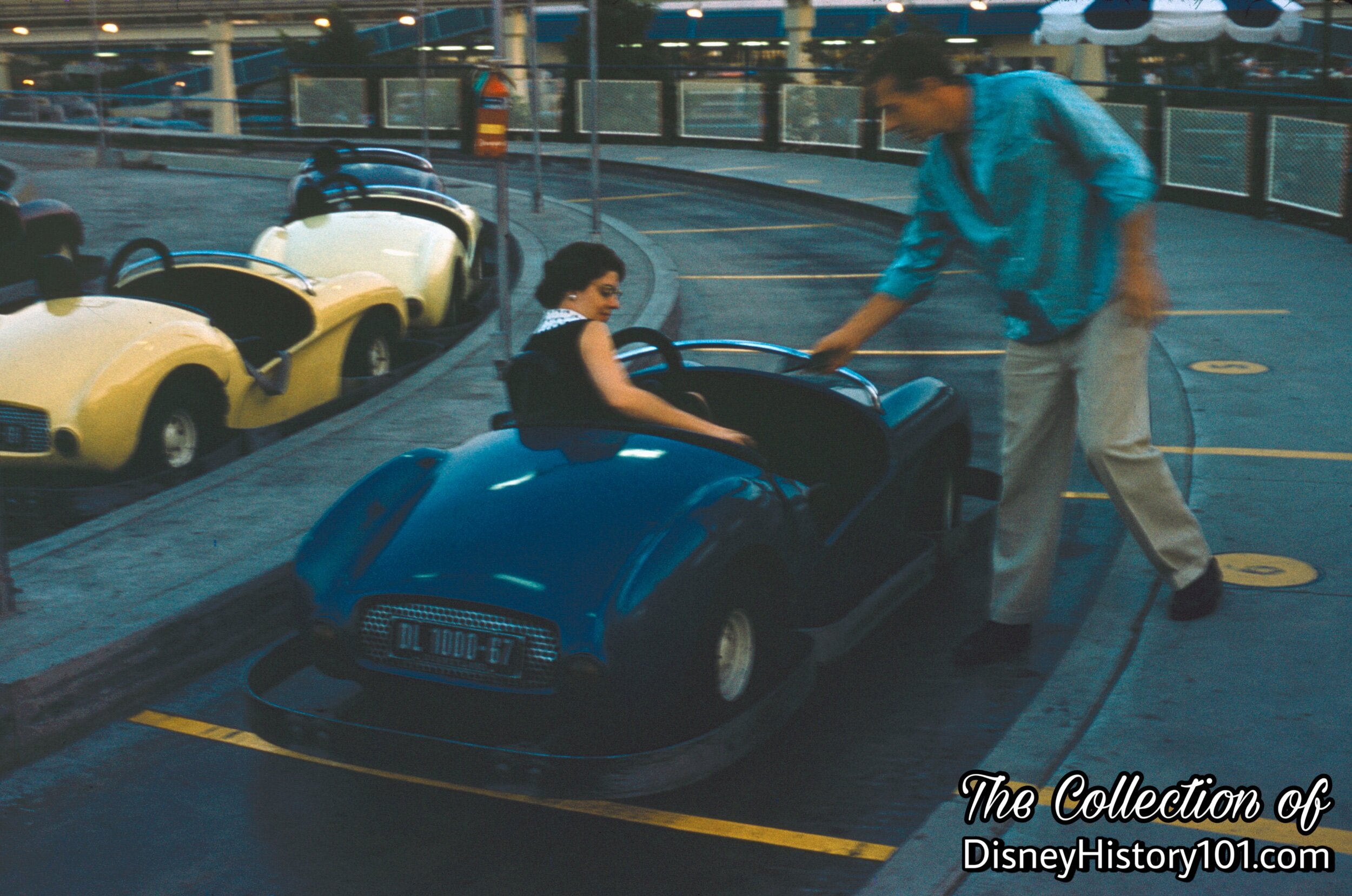
Autopia, 1958.

Tomorrowland Autopia Unloading Zone & Exit (Early 1958)
During non-peak periods of Park attendance, Autopia Mark IVs park in the service area near the Richfield pumps on the opposite side of the loading zone.

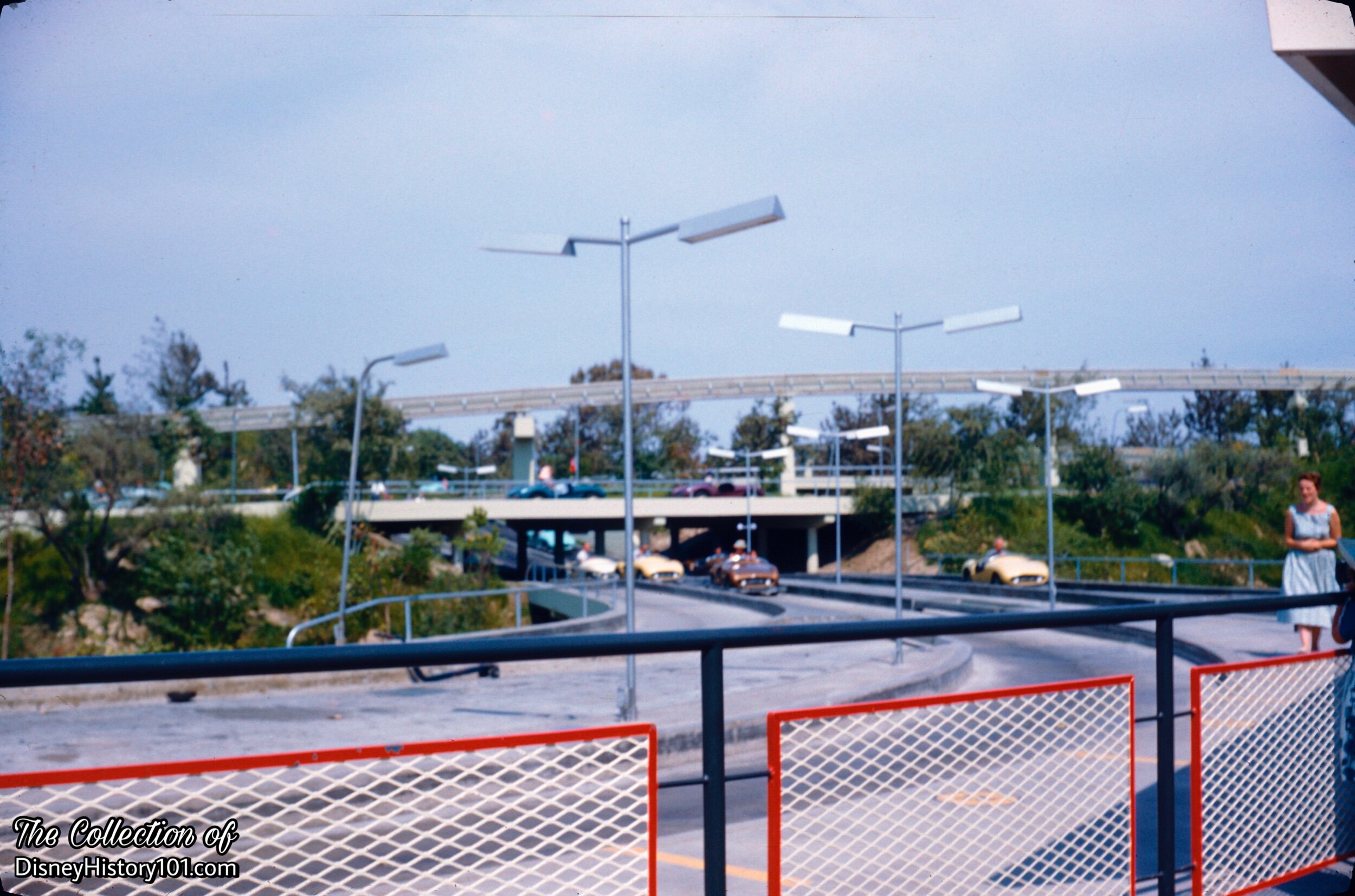
Tomorrowland Autopia, (1959)
According to A Complete Guide to Disneyland (published 1957), “Autopia Cars and Freeway” was the full title of the popular Tomorrowland attraction!
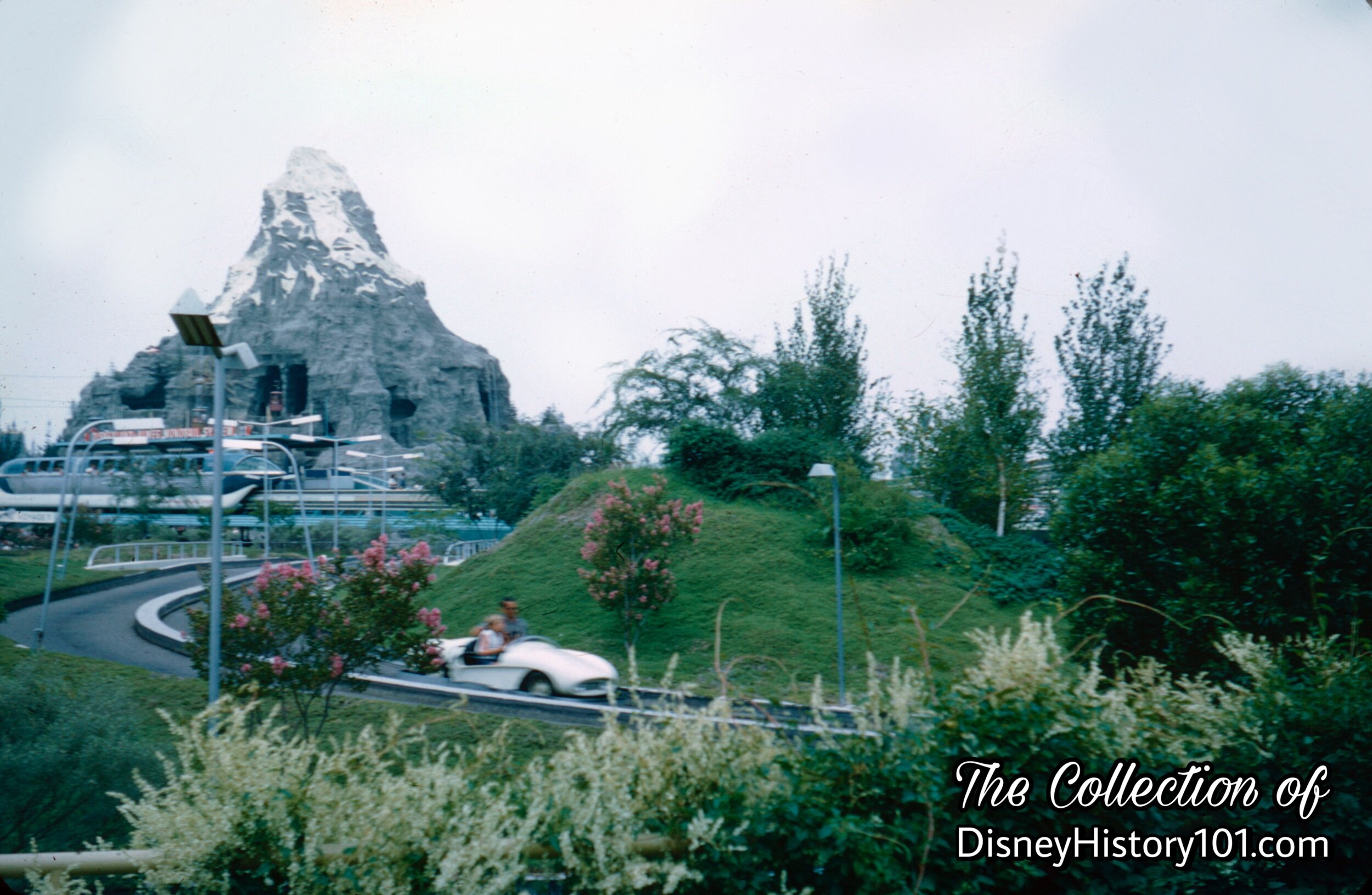
Tomorrowland Autopia, (1959)
Of course, the biggest development came with the “greatest construction show on earth” that lead way to the “second opening of Disneyland,” during June of 1959. Soon, four new multi-leveled super Autopia systems were Imagineered and this was the scenic freeway view given Richfield Tomorrowland Autopia motorists racing along the highways & byways of Tomorrowland - and lots of trees! Disneyland World of Flowers (published 1965), divulges the secrets of the colorfully landscaped zones : “Motorists on the Autopia freeway drive through dazzling fields of native California poppies in the spring. In the summertime, after the poppies have stopped blooming, the crepe myrtle trees in the scene will display a canopy of pink flowers.”
…All this scenic beauty, and no traffic jams!
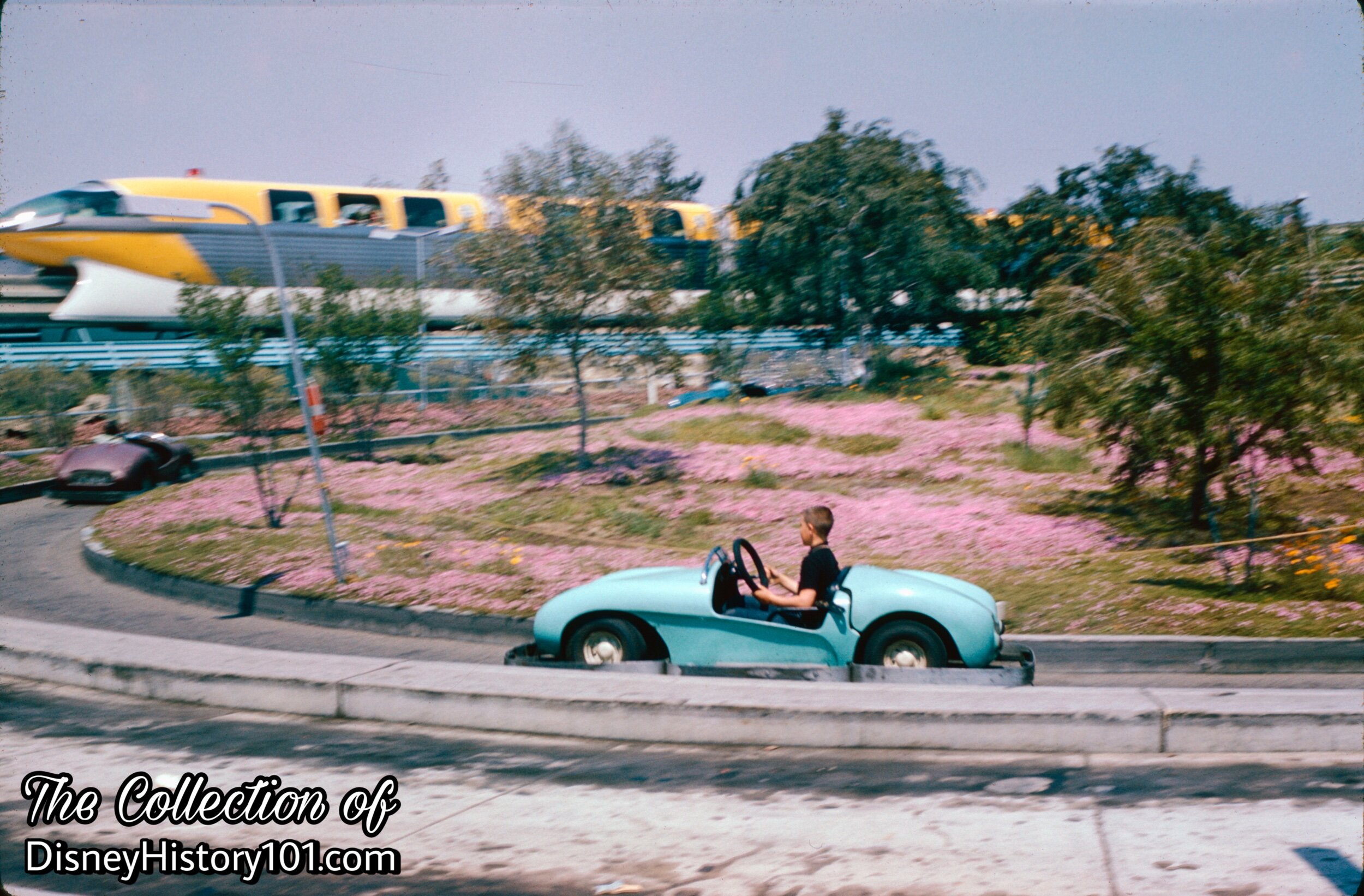
Mark IV on the sweeping curves of the Tomorrowland Autopia, (1962)
According to Bill Evens (“Walt Disney Disneyland World of Flowers”): “Autopia's spring theme might well be, ‘Take a ride through the California poppy fields,’ for in spring and early summer the Autopia is banked with a colorful display of these and the larger peony poppies… In the summertime, after the poppies have stopped blooming, the crape-myrtle trees in the scene will display a canopy of pink flowers. In the background is a bank of trailing lantana.”
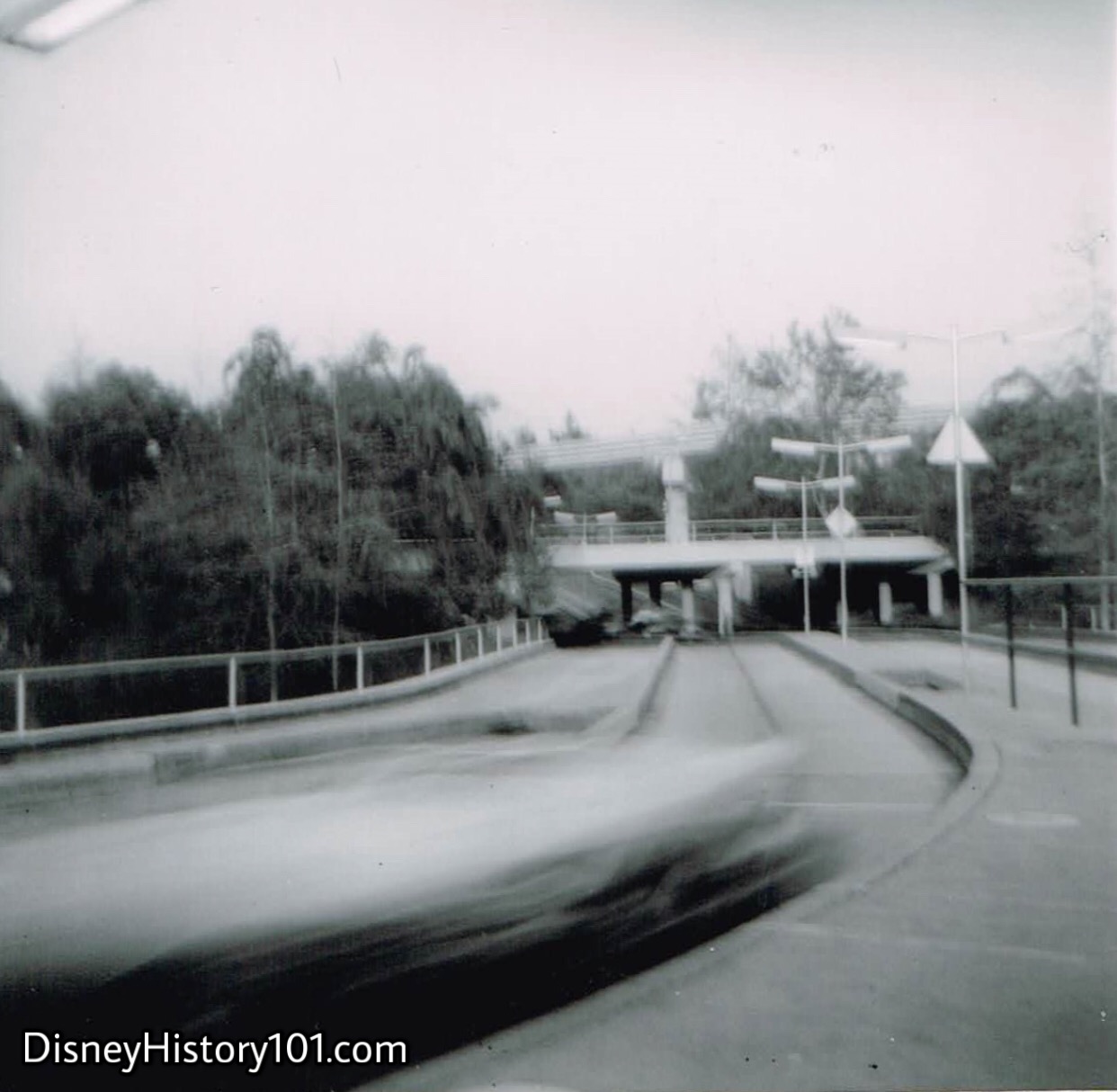
Tomorrowland Autopia
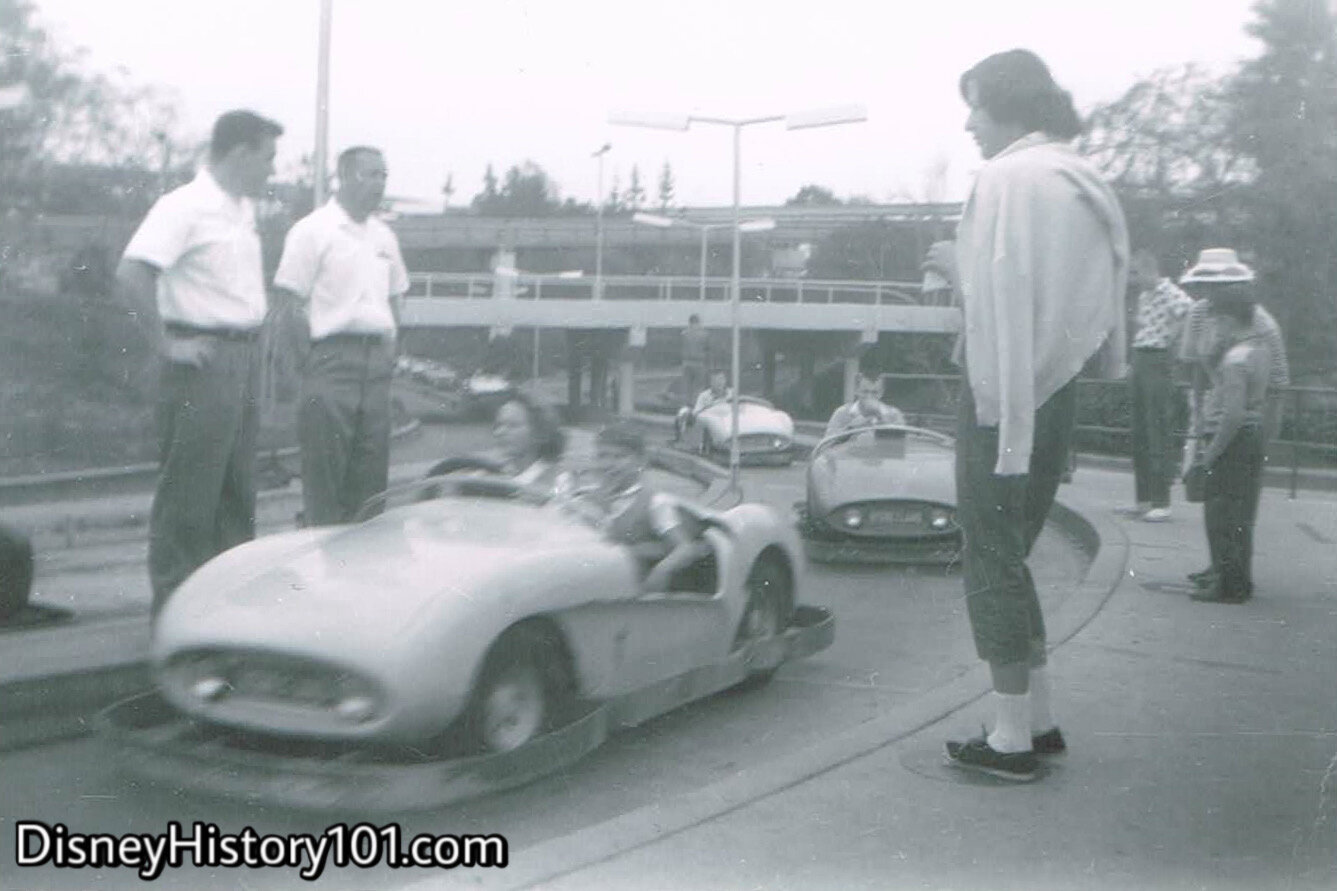
Tomorrowland Autopia & Mark IV Autopia Cars
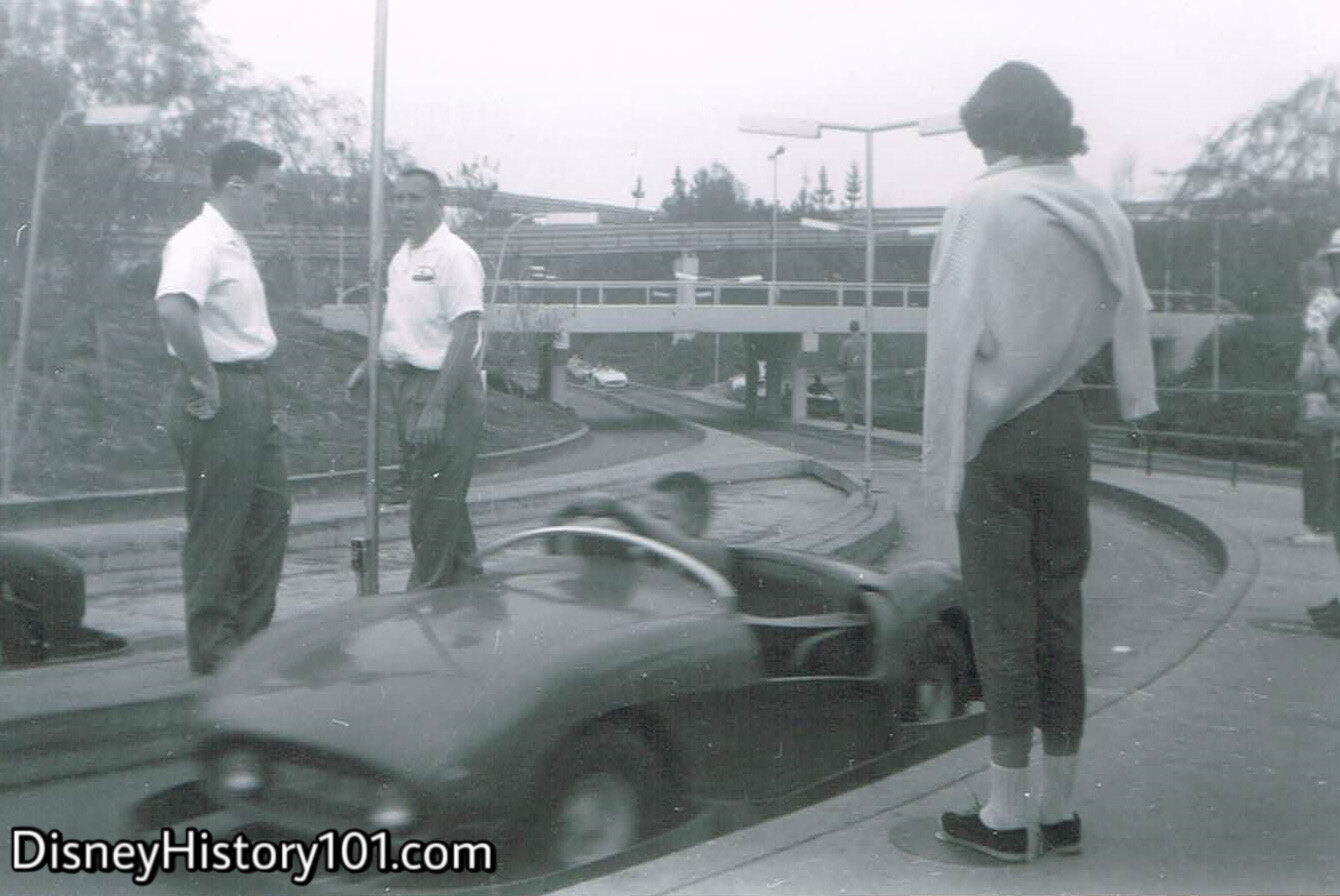
Tomorrowland Autopia & Mark IV Autopia Cars
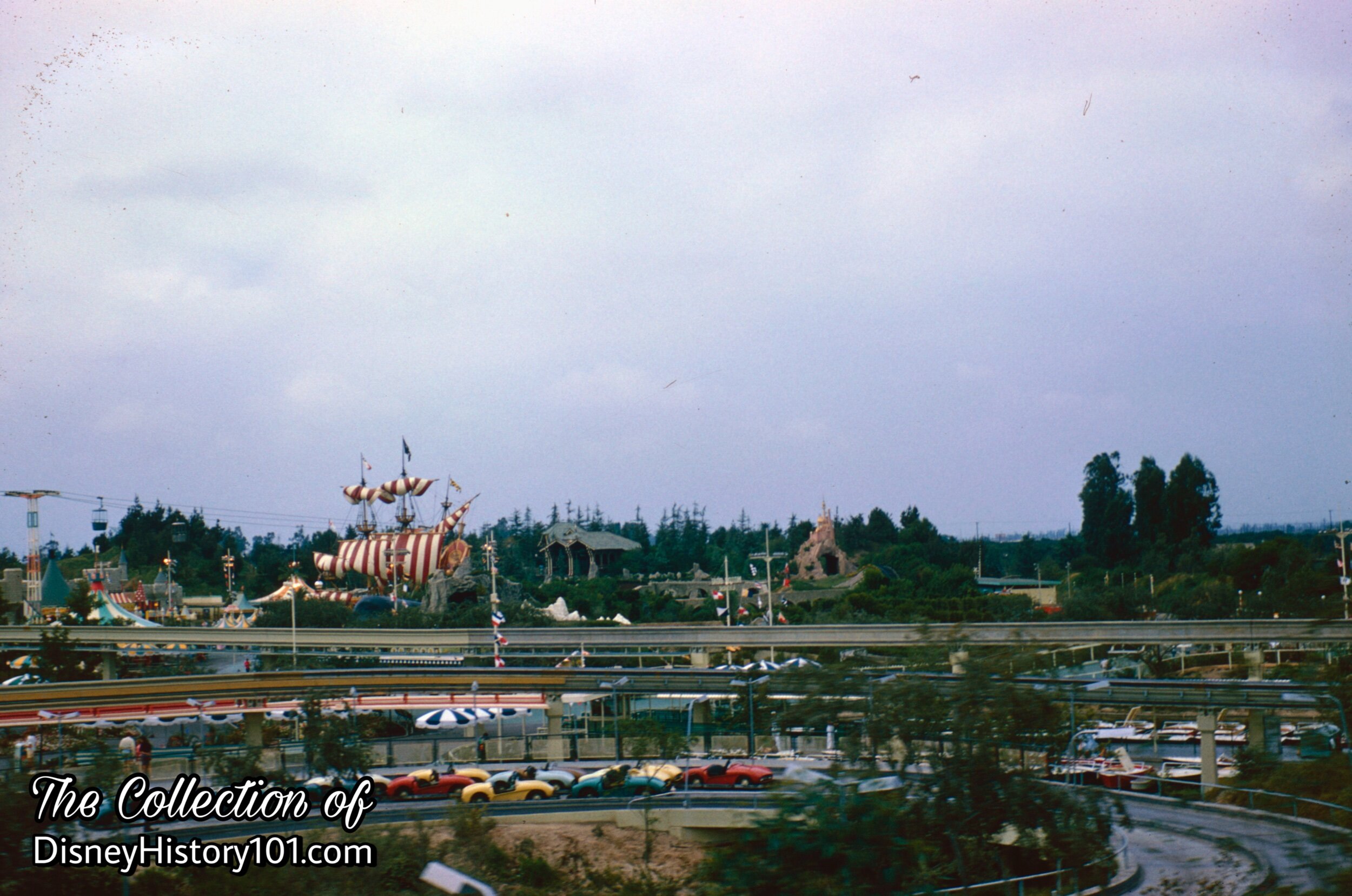

Photo Credit : Copyright © 1962, Universal International
This wasn’t the end of the road for the Autopia Mark IVs. A comedic chase written and filmed for “40 Pounds of Trouble” starring Tony Curtis involved this cameo by the Autopia Mark IV which had been retired in 1958 (when the Autopia Mark Vs debuted).
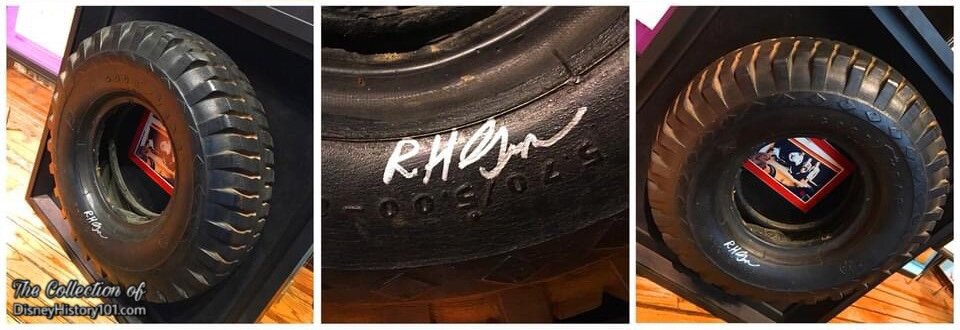
Autopia Mark I-IV Tire signed by Robert Henry Gurr, "The Vault at Stage Nine"
It is not clear if any Autopia Mark I - IV’s survived retirement, or are even extant in our present era. However, while on the road in 2018, we passed through California’s capital of Sacramento, and came across an amazing artifact - a tire from perhaps one (of 40) original 1955 Disneyland Autopia vehicles (or one of the Autopia Mark I-IV’s at the very best)!
The approximate 5/8 scale tire (with 34.5 inch tread ; for 64.0 wheelbase) was verified and autographed by designer and original Imagineer Robert “Bob” Henry Gurr, and was once one of many Walt Disney-related artifacts for sale through “The Vault at Stage Nine”, Sacramento, California! At the time of exhibition, the artifact was even paired with a reproduction of a photograph of Walt Disney, Bob Gurr, John Hench and others inspecting the wheels belonging to one of the original Autopia cars!
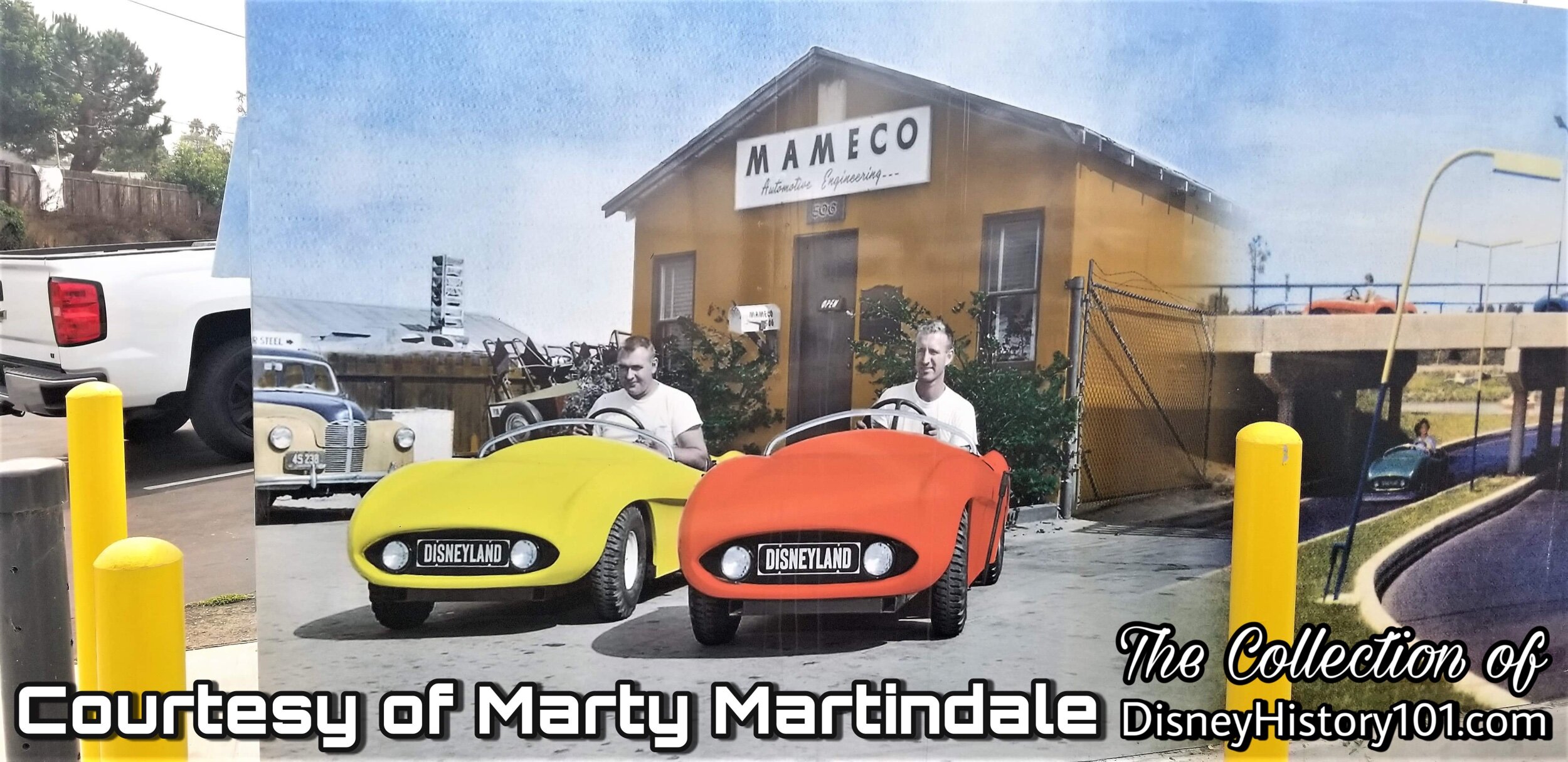
Autopia Mural Near The Former Site of MAMECO Engineering preserve the unique contribution of the founders as they made Disney magic!
You may not be able to see the body of an Autopia Mark I-IV at Disneyland today, but you can see one 11 miles south-west of Disneyland. On Canyon Drive and Wilson Street (in nearby Costa Mesa), this colorful mural tribute stands as a reminder of Ted, Ed, and their contributions toward this timeless Disney Parks attraction!
Marty (son of MAMECO co-founder Ed Martindale) shares with Disney History 101 : “It was a wonderful surprise last summer [2019] when the Costa Mesa Historical Society decided to wrap the big utility box with this photo, which originally was black and white. My father Ed is in the yellow car at age 26, he would be so tickled...”

Though the Junior Autopia (of Fantasyland) would close for refurbishment in 1958, the thrill of sitting behind the wheel of an automobile was no more diminished by the end of that year. In fact an entire Disneyland television episode entitled “Magic Highway U.S.A.” (aired May 14th, 1958) was entirely dedicated to the history of the American use of the Automobile and the development of roads across the United States of America.
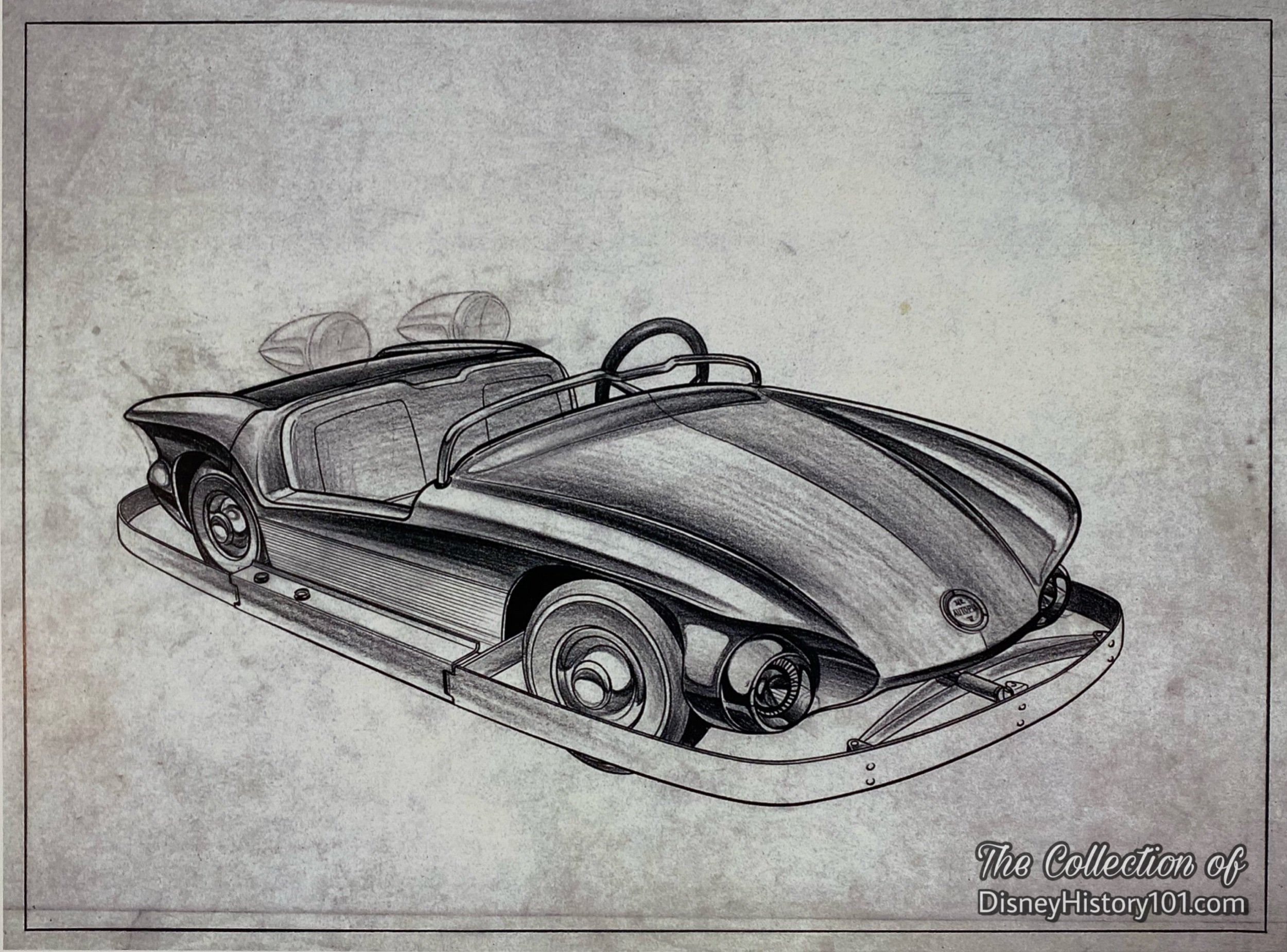
A particular c.1955 Autopia concept by Bob Gurr (distributed through The Disney Gallery) looks much like the Autopia Mark V; ©️The Walt Disney Company.
Tomorrowland Autopia was far from being averse or unaffected by the automobile craze. In fact, the Autopia was now more popular than ever and had received several additions. An open-front, 720 sq. ft. Autopia Service Garage had already been constructed of plywood on a wood frame with a composition roof, concrete foundation, and slab. By September of 1958, Disneyland Inc. opened jobs (#4063/4064) for Senior Autopia revisions, including a car redesign (#4063-509) and a car by-pass (#4064-527). The completed design work of these projects alone was appraised at $4,273.
Walt Disney’s Guide to Disneyland (published early in 1958) soon gave a preview of “New Autopia Freeways” - “doubling in number to include four separate super highways” where “youngsters of all ages drive their own individual gasoline powered sports cars over these multilevel speedways.” The same publication continues : “Many of these cars are brand new, modern designs.” The Autopia V car frames and running gear were owing to the contributions of Dave Gengenbach (of Tubular Aircraft Products), who would join the Disney organization in 1959, and ultimately become general manager at MAPO. The most outstanding features of the Autopia Mark V were undoubtedly those shiny chrome headlights! Bob Gurr was known for retooling “true-life” car parts, and those Autopia Mark V headlights were repurposed Buick parts!
In order to support the massive expansion occurring in 1959, a loan was required. A Park-wide appraisal was conducted of all cash, accounts receivable, employee benefits, liabilities, deposits, advances, stockholder’s equity, Park assets (including land, adjoining properties, service areas, and utilities), and even those aforementioned jobs in progress. By September of 1958, an appraisal of Disneyland “land improvement” assets valued the Autopia at $197,037 and the Autopia Garage at $8,670. After completion of the attraction, appraisal was made in 1959, the equipment was valued at $50,400 while the structure was valued at $92,000.
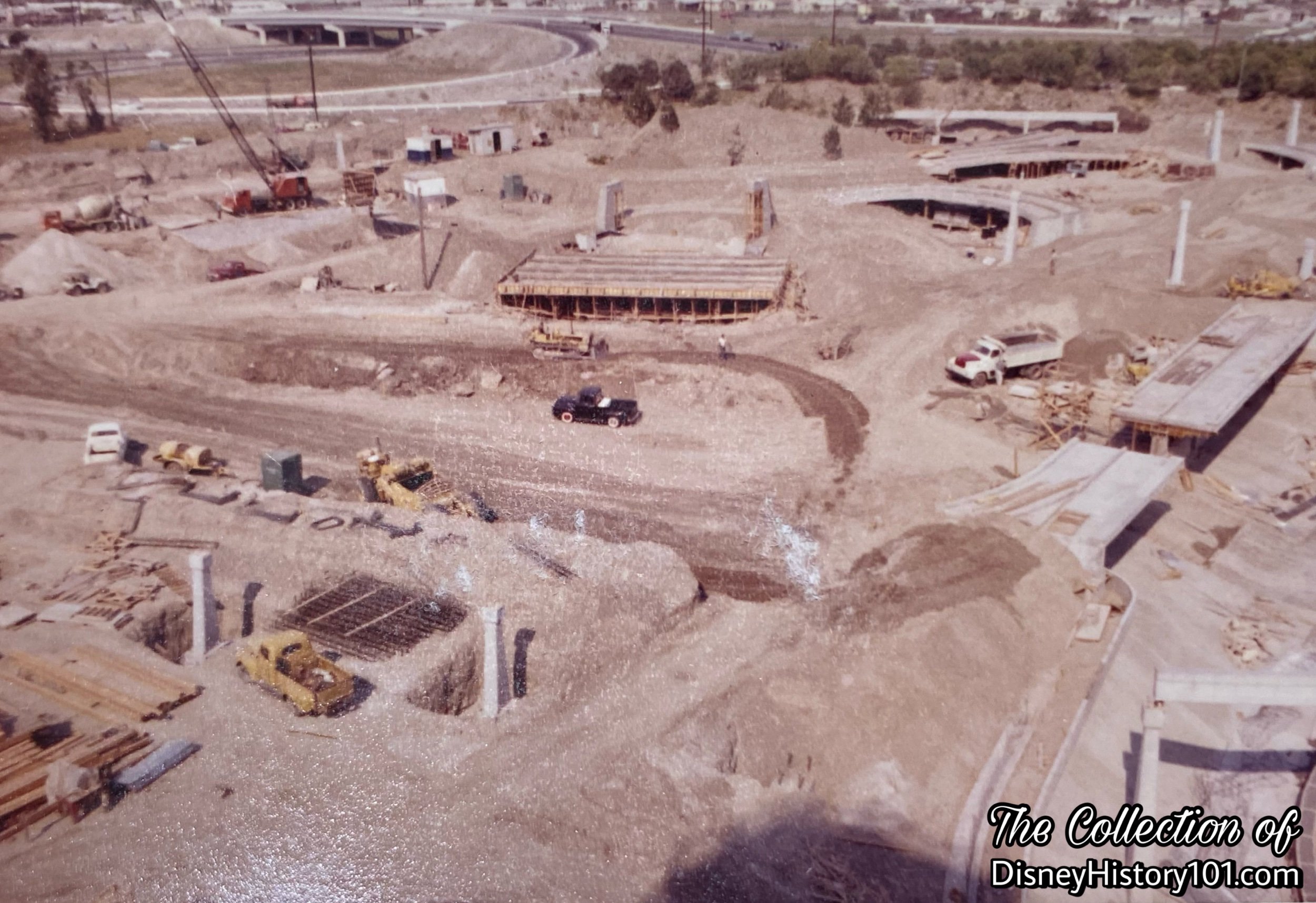
The efficient redesign of Tomorrowland led to the construction of the Submarine Lagoon, Motorboat Cruise Lagoon, and Autopia Freeway.
A year later, the old Junior Autopia had been completely transformed into a second multi-level “Super Autopia” track - the Fantasyland Autopia - which had a soft opening on January 1, 1959. Early in 1959 (and even before opening), the Fantasyland Autopia was appraised, the ride structure valued at $176,800 and the vehicles (and equipment) valued at $39,400. The Fantasyland Autopia was “a super Autopia freeway… equal in length and design go the Tomorrowland Autopia. It has both Junior and Senior Autopia cars powered by products of Atlantic Richfield Co., sponsor,” according to the Disneyland Dictionary (compiled by WED Public Relations Department and Disneyland Publicity Office, c. 1968). Several months later, this new wonder of Walt Disney’s Magic Kingdom was formally unveiled as one of “six spectacular new adventures” during a special Press Preview and Dedication Ceremony occurring on June 14, 1959 at precisely 3:00 p.m. The brand new models were used to transport notable celebrities Lawrence Welk, Joe Wells, Marvin Miller (of The Millionaire), Tommy Kirk (of The Shaggy Dog), Richard McKenna (The Real McCoys), Jeffrey Hunter, Darren Mc Gavin, Dennis Hopper, and others during the televised “Disneyland ‘59” pageant and parade route! After that, the vehicles were utilized to tour Fantasyland by "auto" in the shadow of Matterhorn Mountain!
As promised in Walt Disney’s Guide to Disneyland (1958), a brand new Autopia Mark V design was one of six new Disneyland attractions that debuted at that time! In fact, 75 of these brand new Autopia Mark V cars were added in time for the release of the new “D” Coupon attraction. Now, these heavy one-cylinder vehicles did have some issues that affected performance, for example some suffered suspension failure. However, they were air-cooled, got good mileage, and sported a unique design (readily distinguishable by their headlights which were actually aftermarket 1958 Buick parts). About those particular cars, the Guided Tour Script (1962 and 1963) added the following “sidelight” : “Since opening day, these cars travel 850,000 miles each year! Each car has a four gallon gas tank that will run for 12 hours continuously without refueling!”
While California’s vast cities suffered from rush hour jams and crawling traffic on its crowded freeways, Tomorrowland (with its four new multi-level ‘Super Autopia Freeway’ winding through the landscape) was well in motion during the 1960s! Much more than trees surrounded the roads of the Super Autopia Freeway in Tomorrowland and Fantasyland. Motorboats maneuvered through turbulent waters of the river. While Skyway cabins gracefully soared overhead, Monorail trains moved guests at incredible speeds between the Disneyland Hotel and Tomorrowland. Why, even an entire submarine fleet navigated the seven seas! Amidst it all (and in the shadow of Anaheim’s own pennine peak - the “mighty Matterhorn mountain”), the Autopia Mark V automobiles travelled along new highways and byways. The Autopia still attracted celebrities, as young actor Kevin Corcoran drove one of the Autopia Mark Vs, before his day at the Park came to an end in 1960.
Automobile utopia persisted… usually. It was perhaps about this time that the Autopia vehicles (and their drivers) drove somewhere they shouldn't! Bob Penfield (in interview with Disneyland LINE, Vol.25, No.28) recollected, “I was on the Autopia and we had a B side running and we were taking cars in and out of A side. All of a sudden it dawned on me that I left the gates open, so I went running as fast as I could and I got down there just on time to see the last one go down into the Sub dry dock and drive out onto the train tracks. I’d say the next five minutes were the hardest I ever worked.”
But to get “back on track” with ourAutopia Mark V story :
In the end the unique Autopia Mark V models would run for about six years (longer than the Autopia Marks I-IV), and yet manage to be some of the least photographed of the Autopia cars. By the October of 1962, the Fantasyland Autopia was operating with 22 cars during weekdays and 42 cars on weekends. This was common during winter operating schedules.
Many old and new Disneylanders supported the Autopia stage at the Disneyland show during this era, like Michael Broggie, Ron Heminger (previously supporter of the Indian Village) and Bobby Hight.
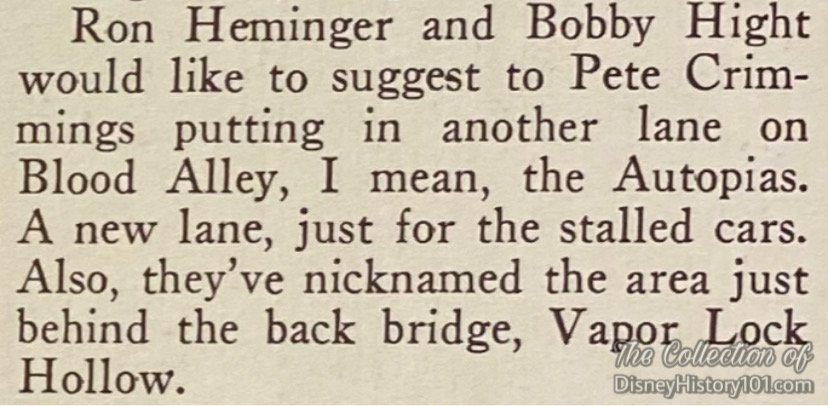
Backstage Disneyland, Winter 1962.
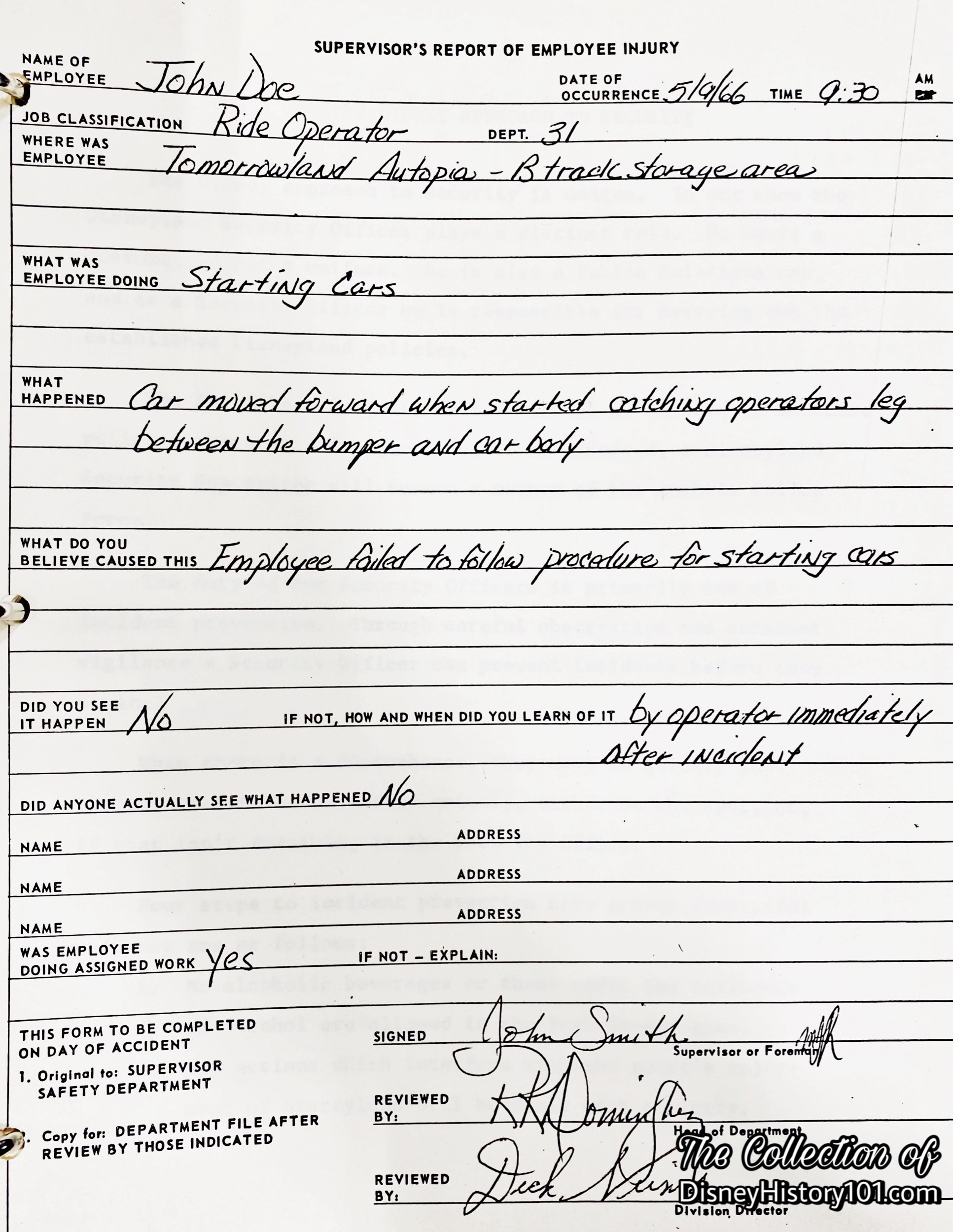
A sample of a 1960s Supervisor Safety Department - Supervisor Report of Employee Injury
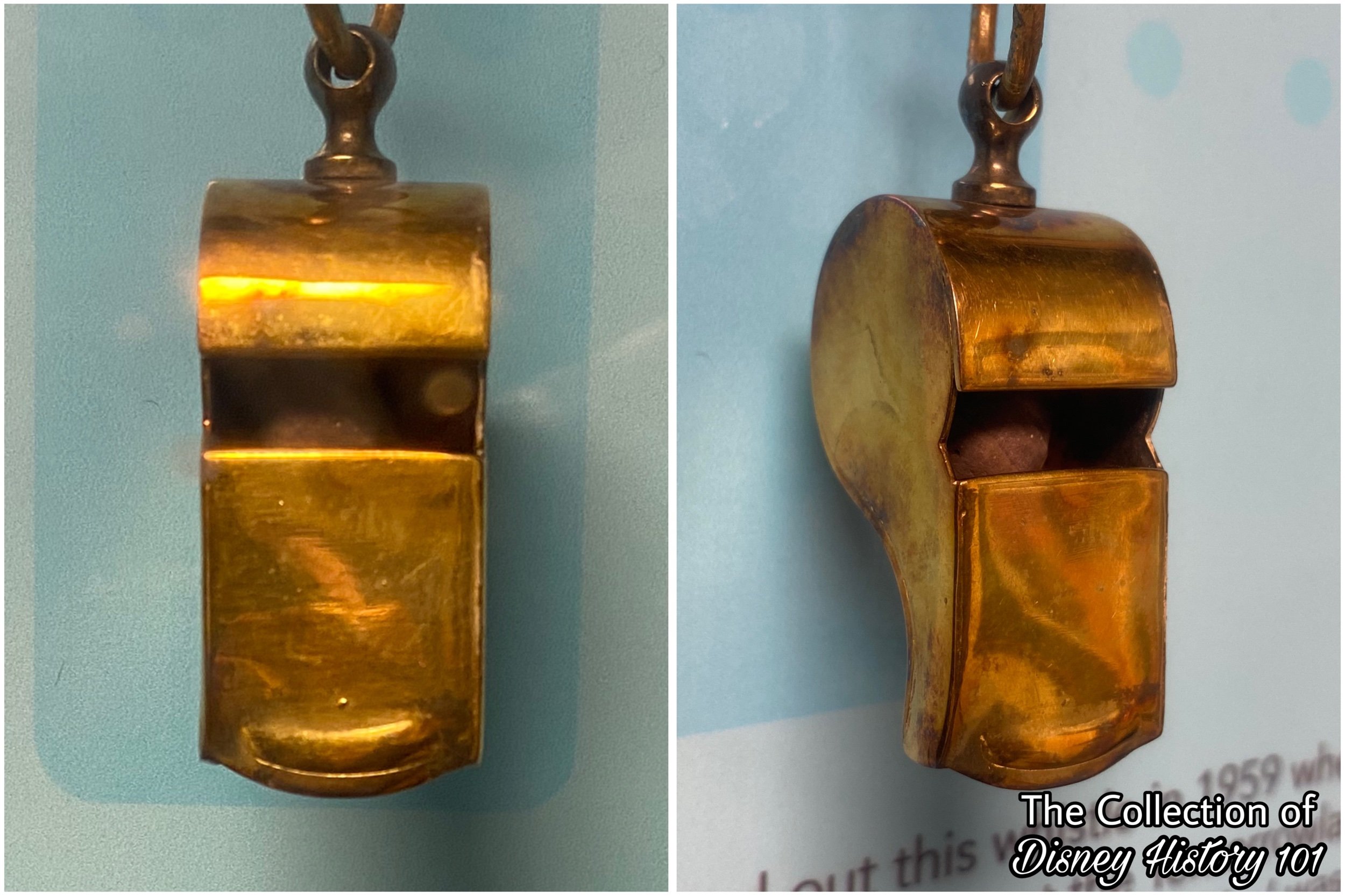
According to his account preserved with Walt Disney Hometown Museum, Bob Penfield checked out this whistle in 1959 when he reported for work at the Tomorrowland Autopia. “This piece of 'wardrobe' was only available to an attraction foreman. I kept it, had it gold plated, and about 20 years later noticed that the #12 can barely be seen on the side. Only one in existence as far as I know.”
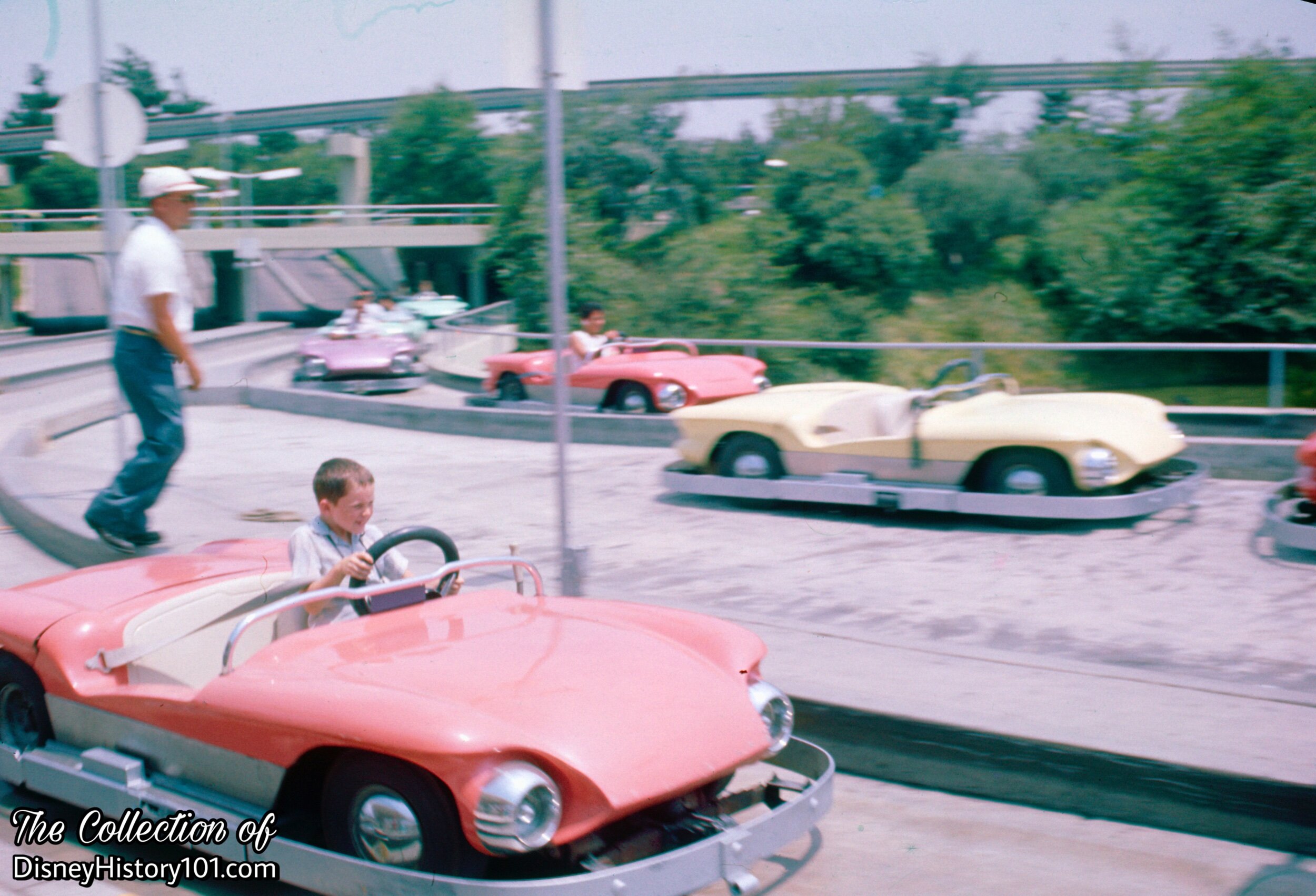
Mark V Autopia Cars
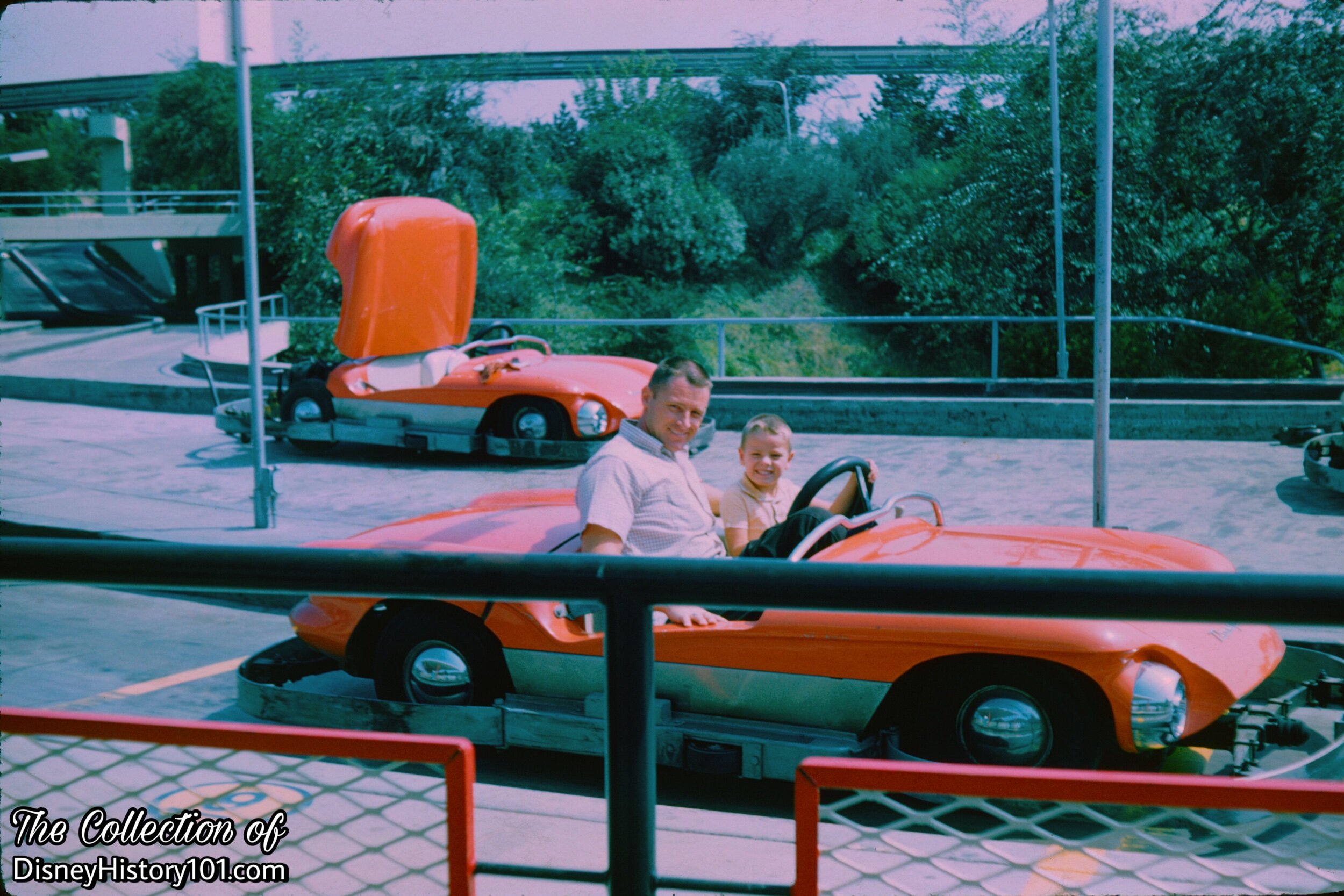
Mark V Autopia Cars, (October, 1960)
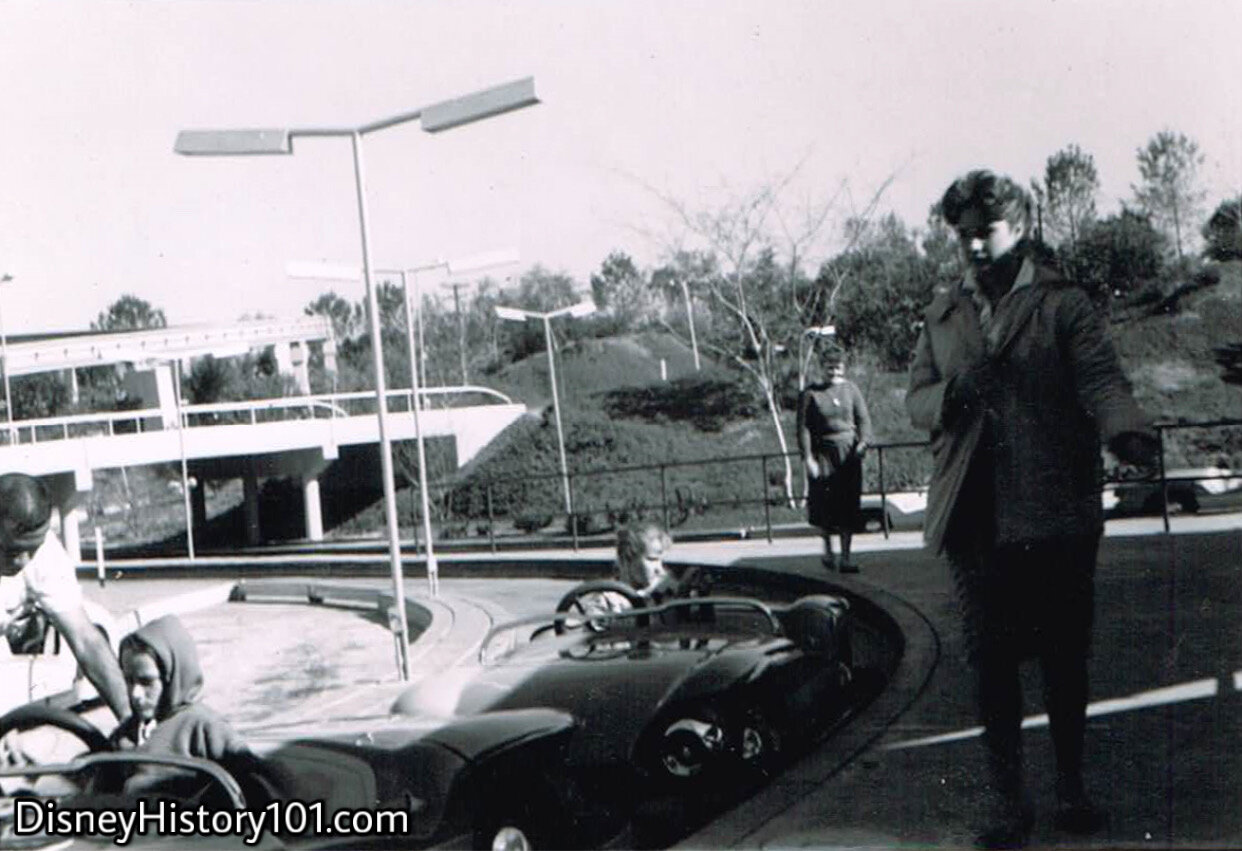
Mark V Autopia Cars, (1960)
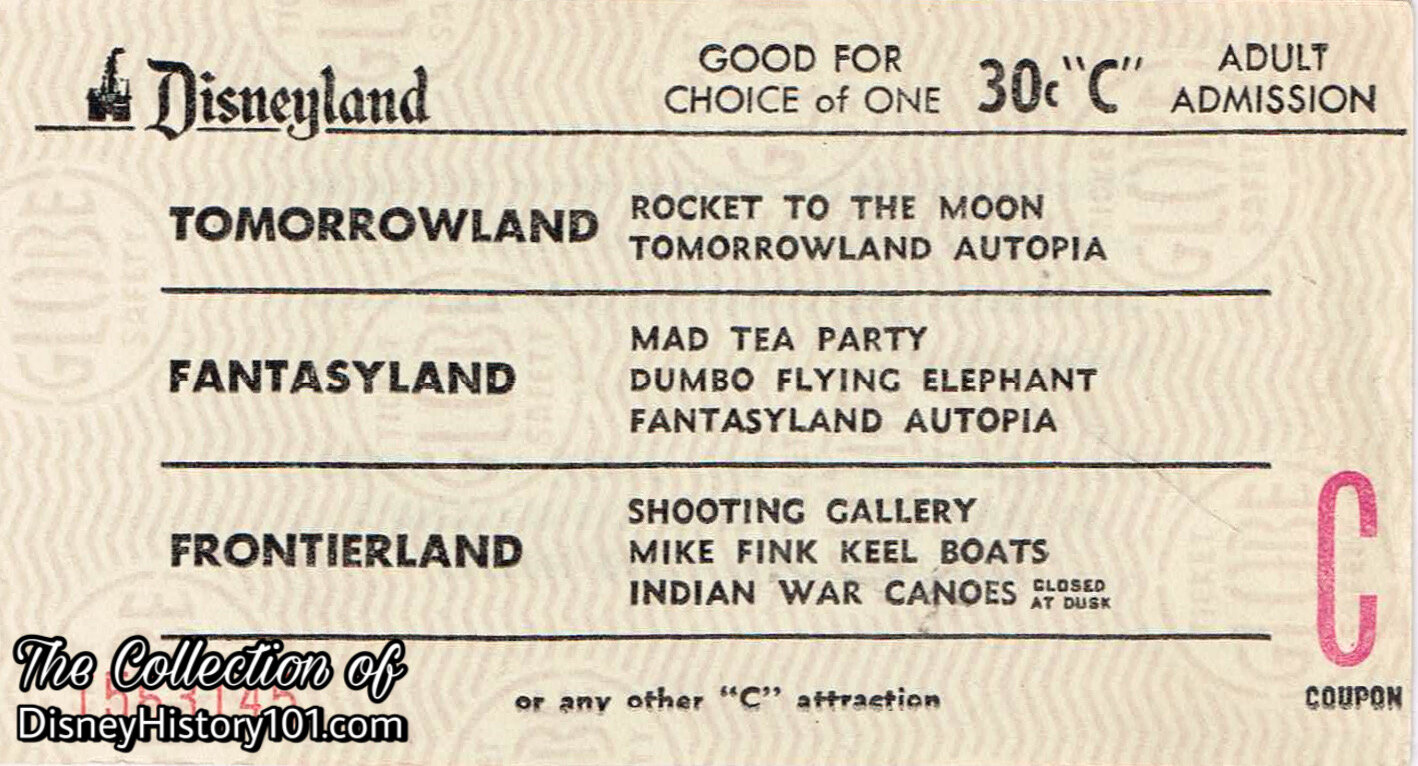
Disneyland "C" Coupon (30¢ Value), Summer, 1960.
By 1959, Joe Fowler was Vice President of Disneyland Operations Committee and Doc Lemmon of Disneyland Operations was overseeing Operators of Rides & Amusements, Livestock, Parking Lot, and Ticket Sellers.
Admission for ride in one of the new Autopia Mark Vs was the same as boarding a TWA Rocket to the Moon or embarking on a journey down the Rivers of America in an Indian War Canoe!
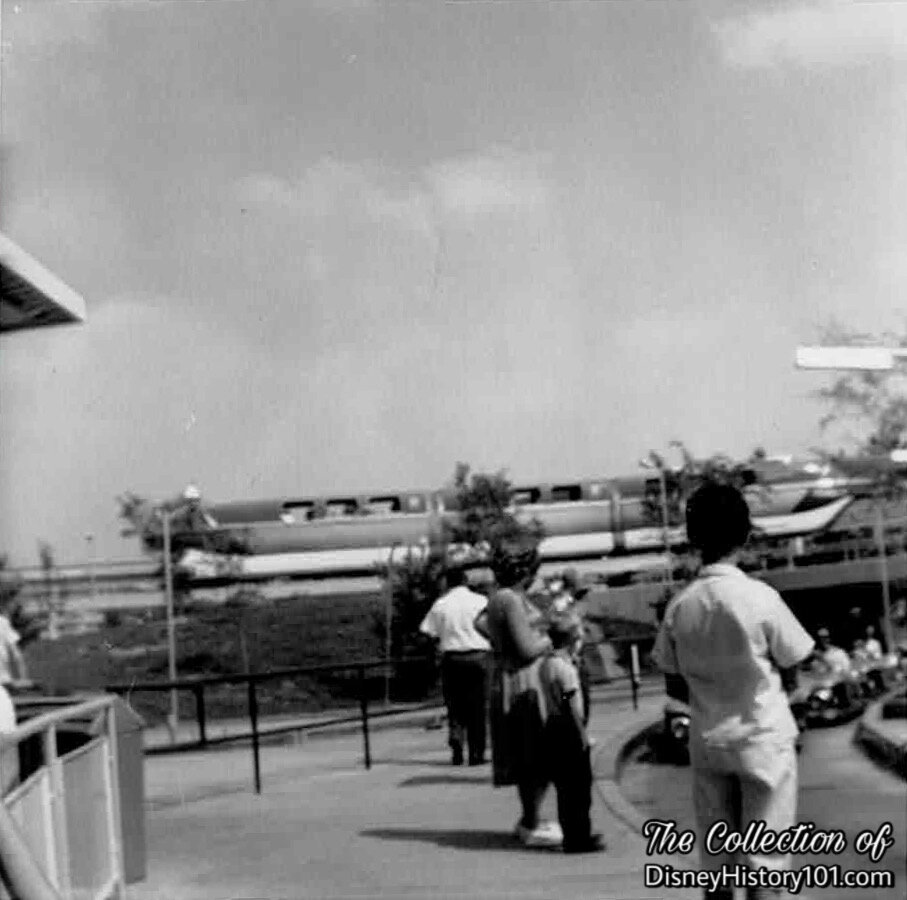
Mark V Autopia Cars, 1959
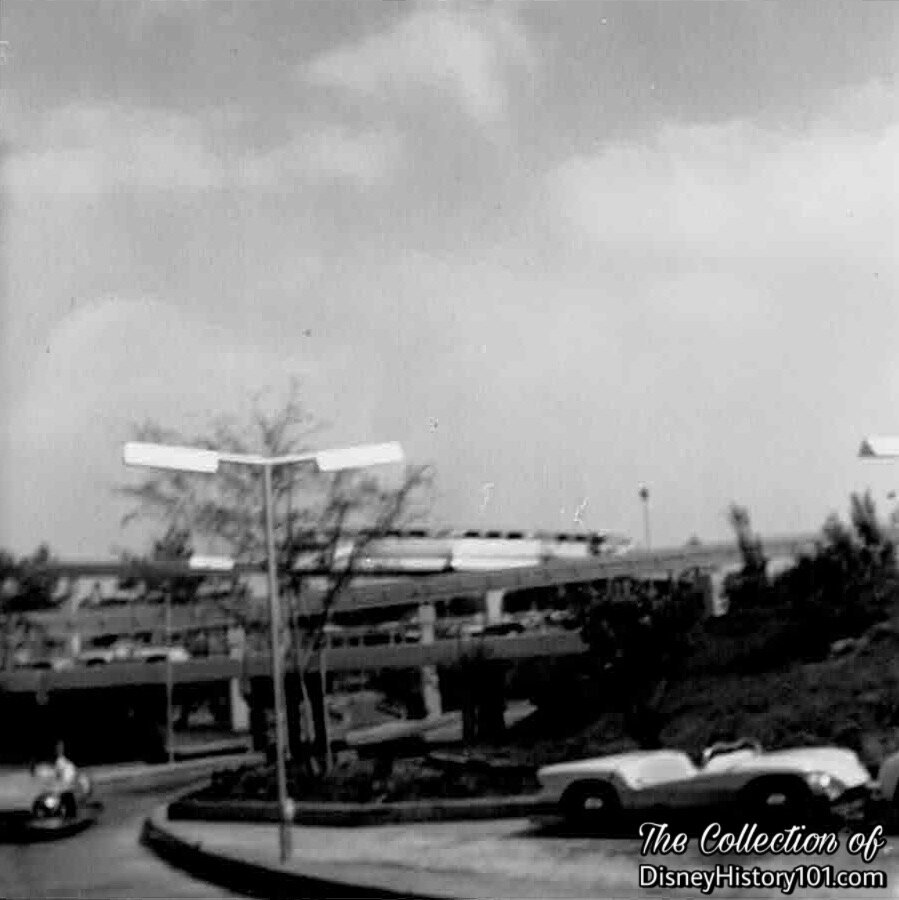
Mark V Autopia Cars, 1959
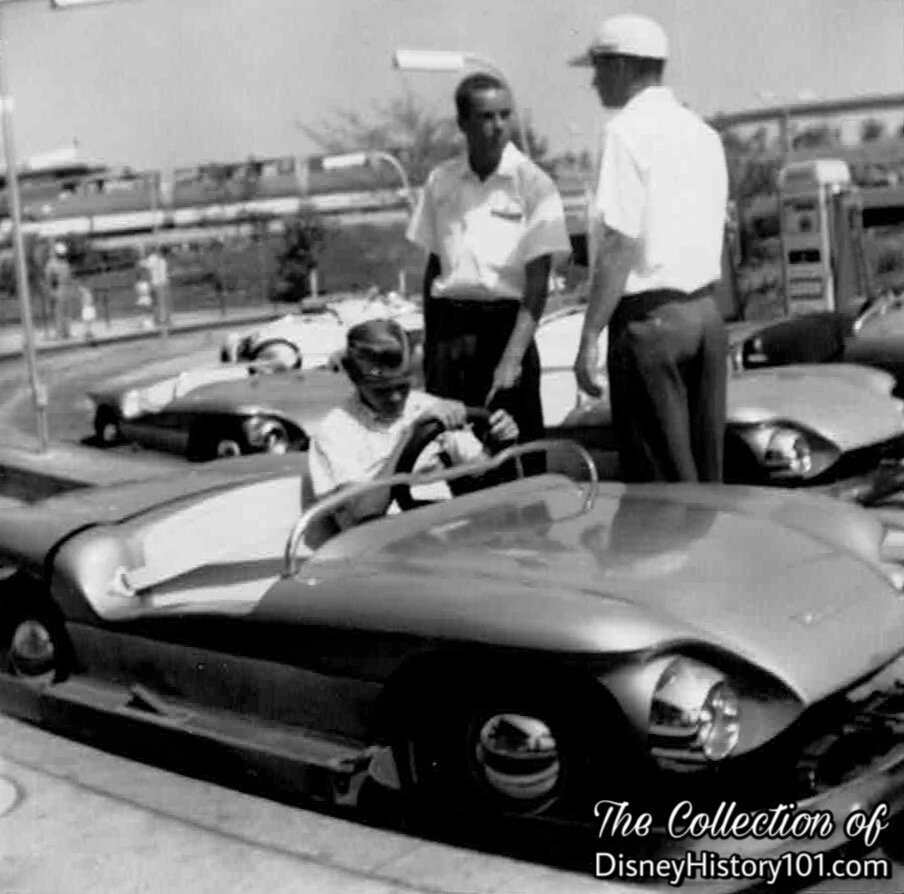
Attractions Hosts with Mark V Autopia Cars, 1959
Many Disneylanders of note had the pleasure of working with the Autopia vehicles. In fact, during 1959, both Chuck Abbott and Ray Van de Walker were transferred to the Autopia.
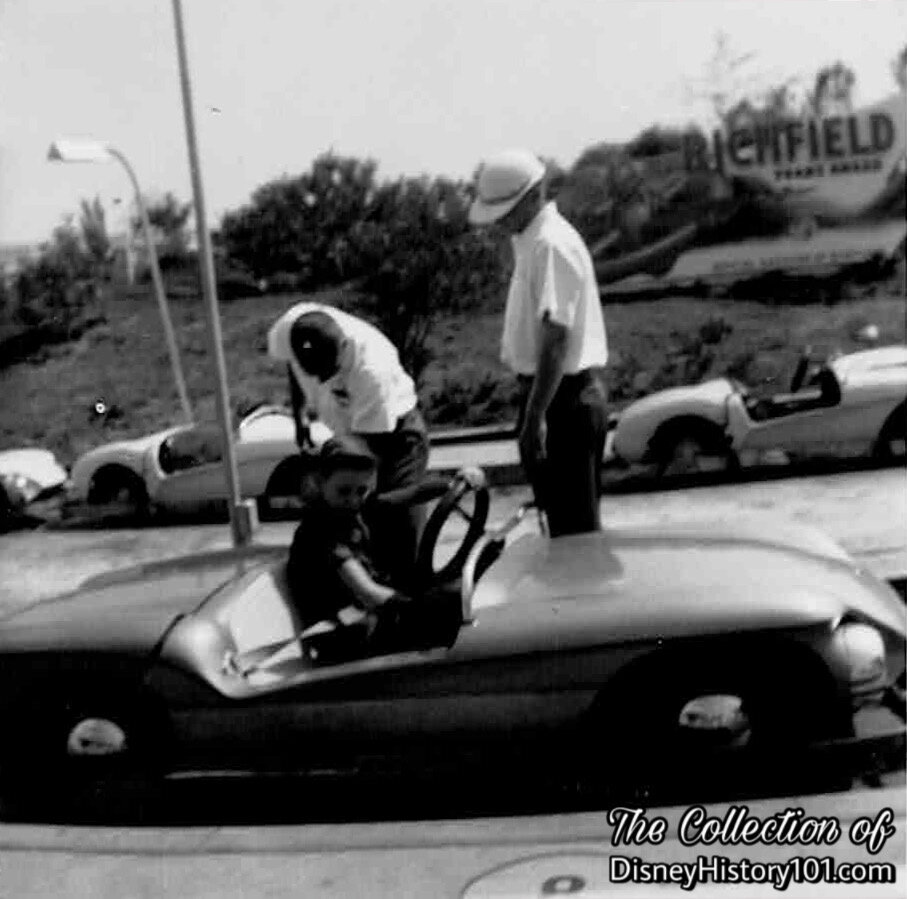
Mark V Autopia Cars, 1959

Mark V Autopia Cars
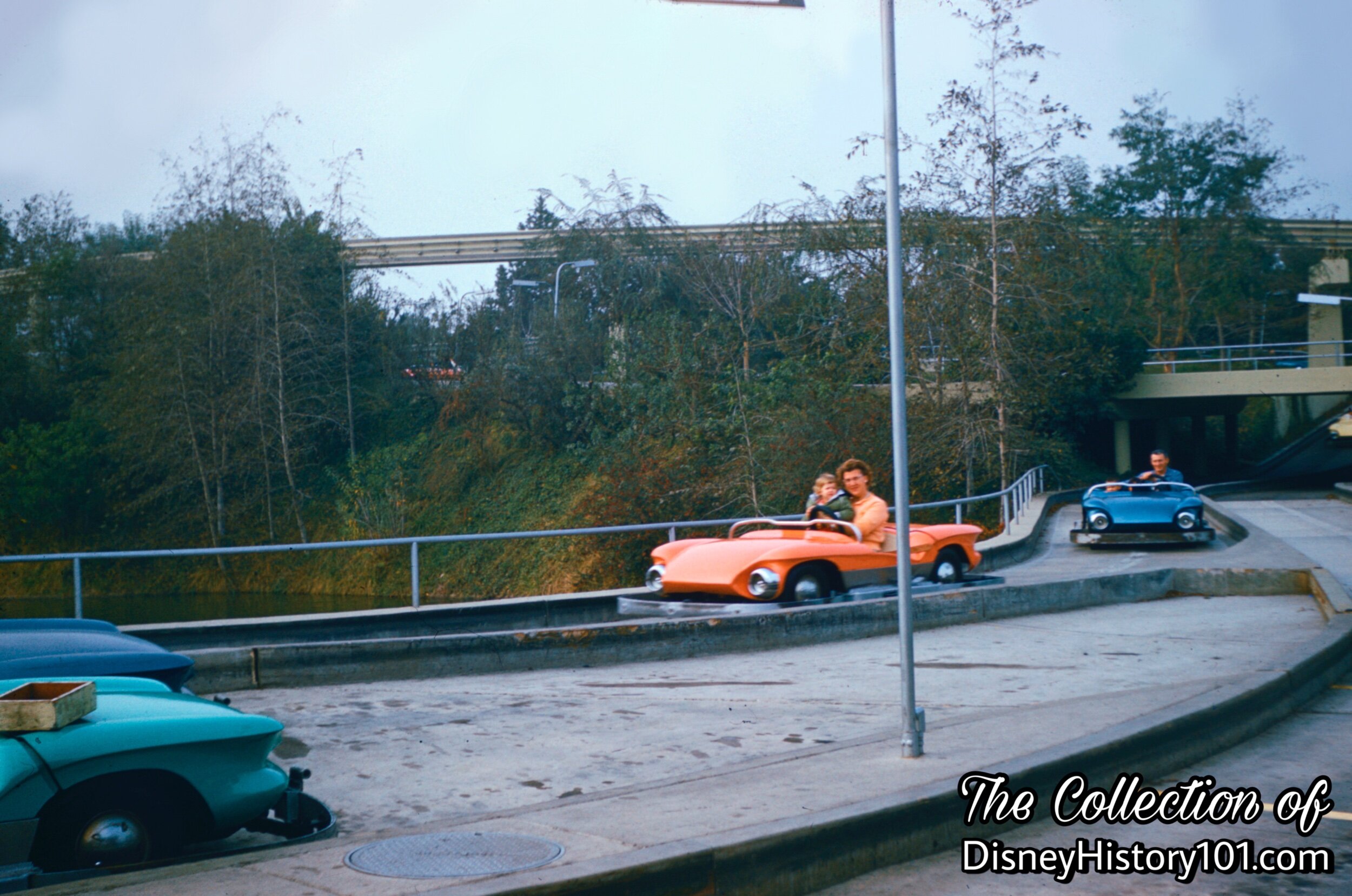
Mark V Autopia Cars
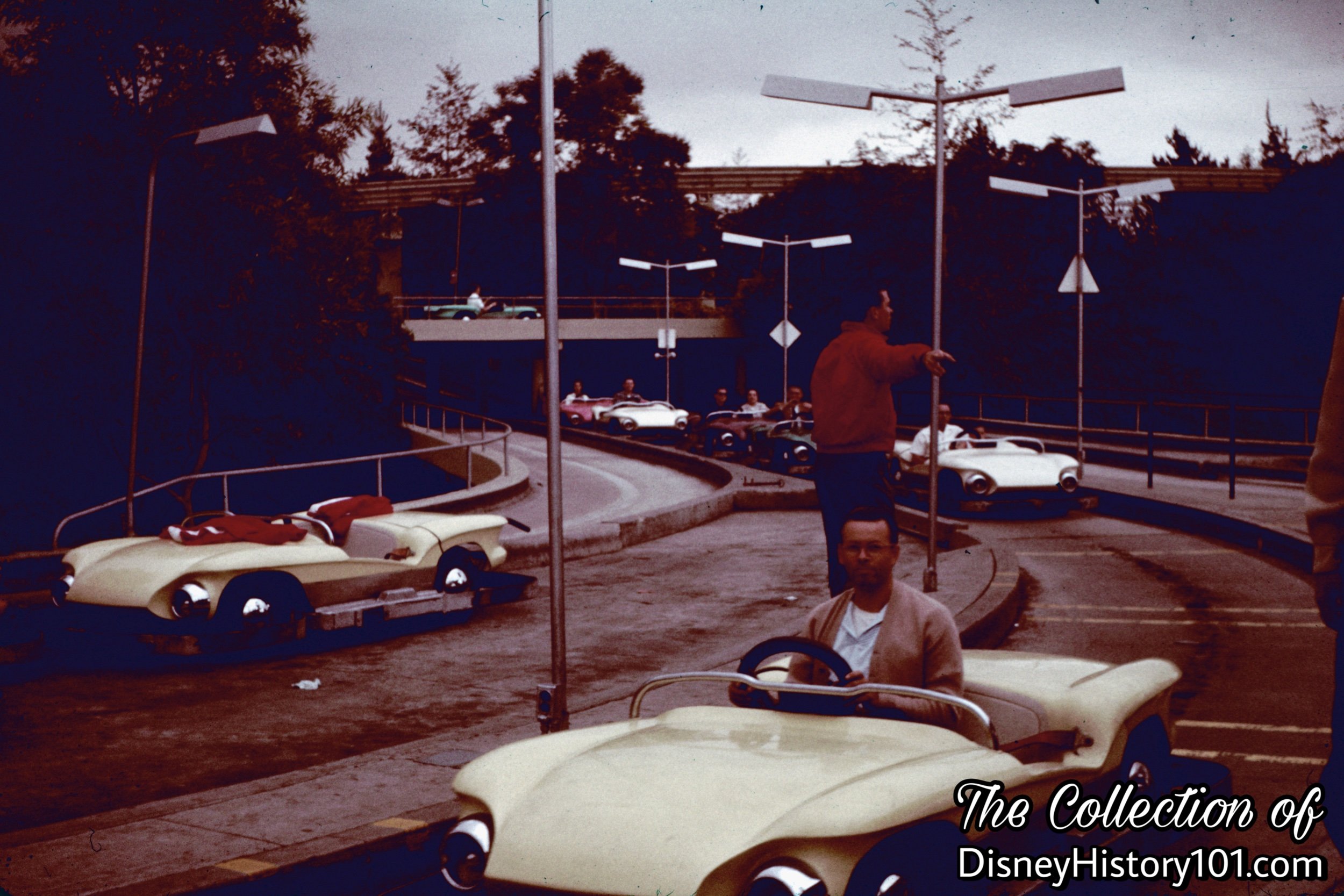
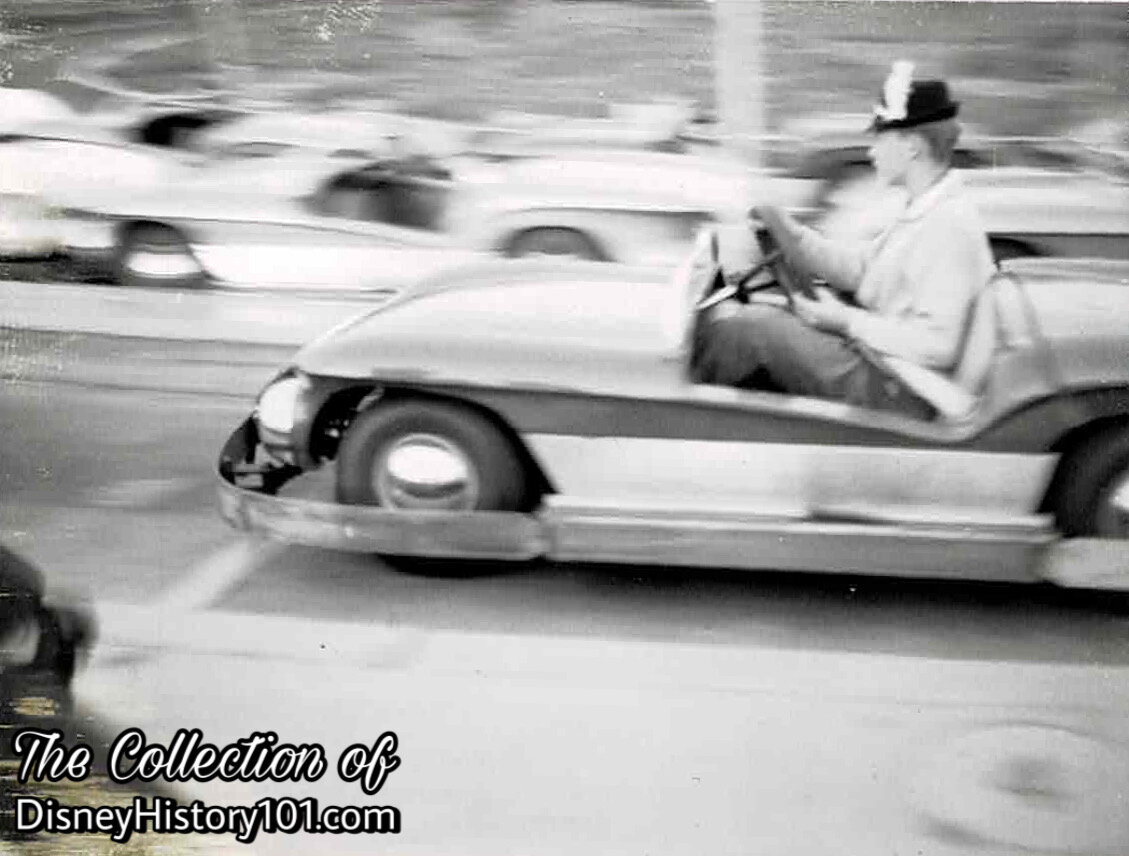
Mark V Autopia Car
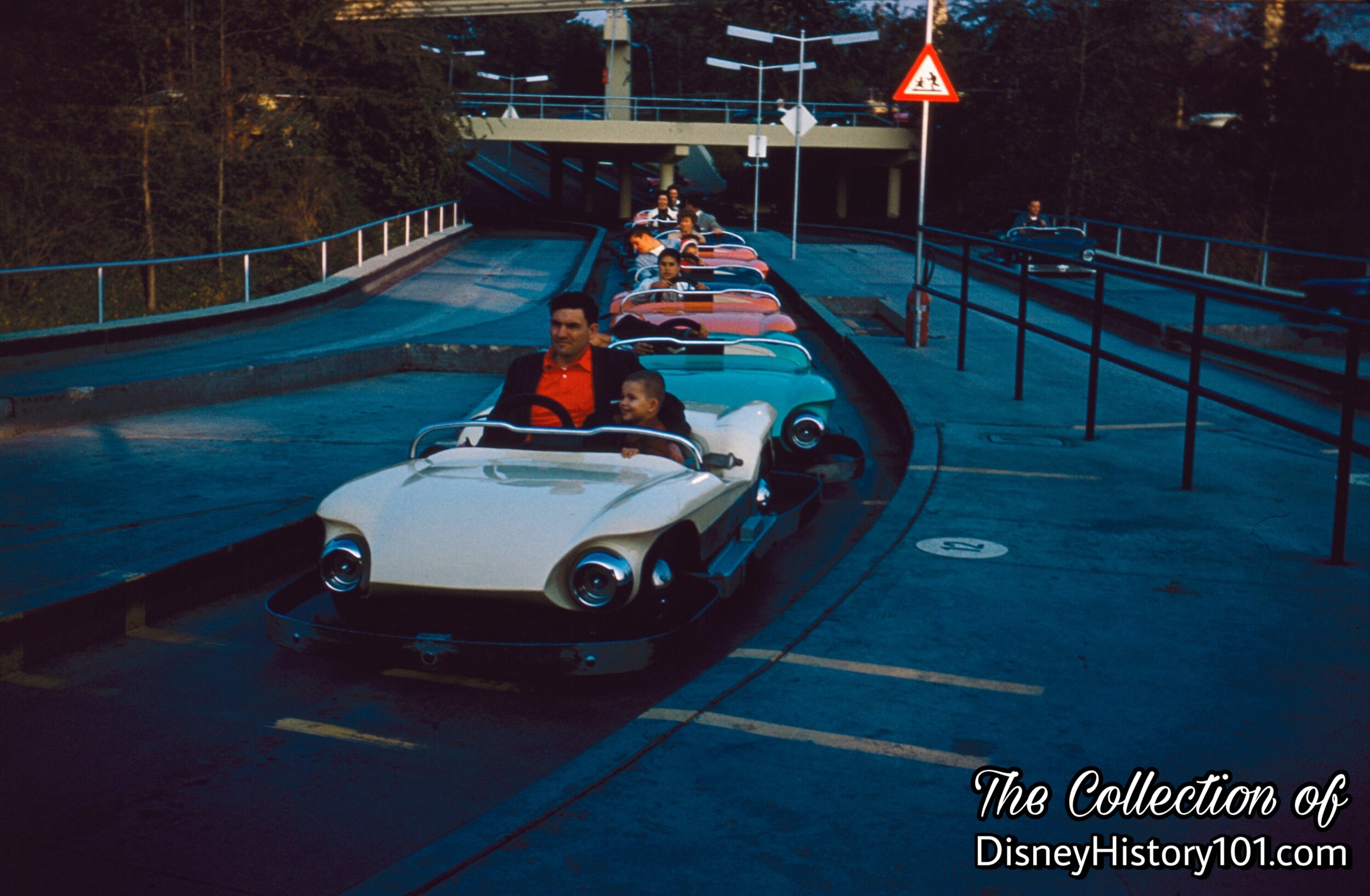
Mark V Autopia Cars
The short film title “Dad… can I borrow the car?” comes to mind.
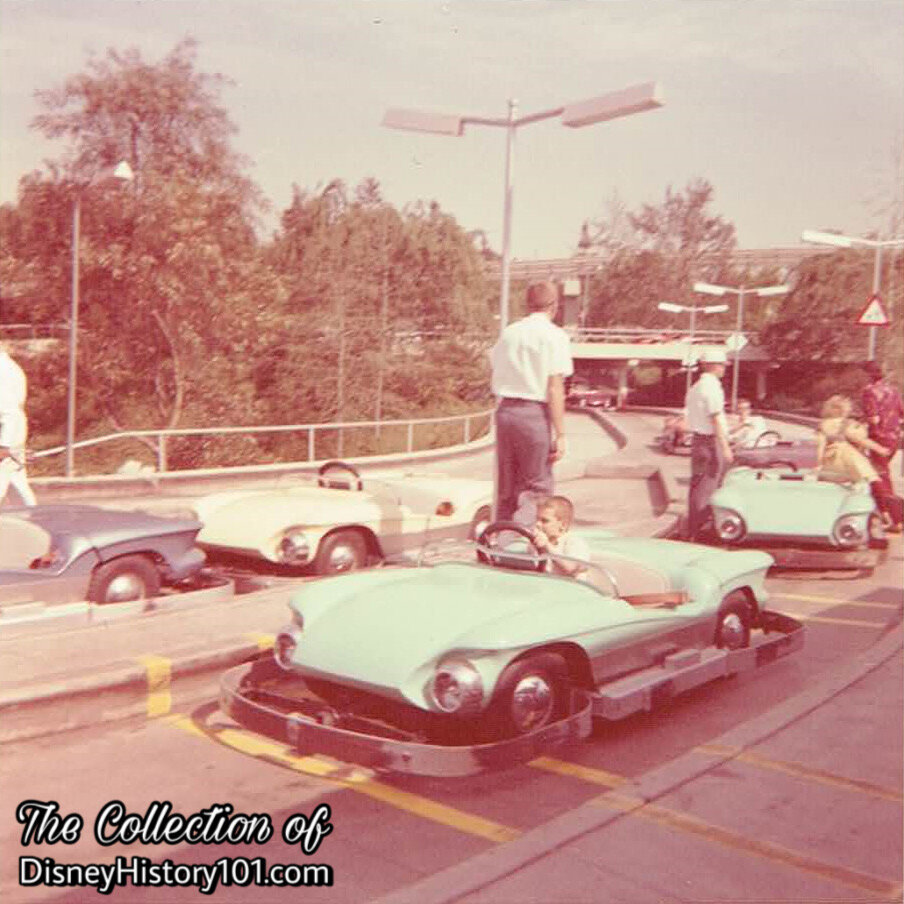
Mark V Autopia Cars

Mark V Autopia Car, (May, 1962)
A delegate of the National Carrierboys Convention (which ended on Friday, May 4th, 1962), enjoys a spin in one of the Autopia Mark Vs, along the Tomorrowland Autopia tracks!
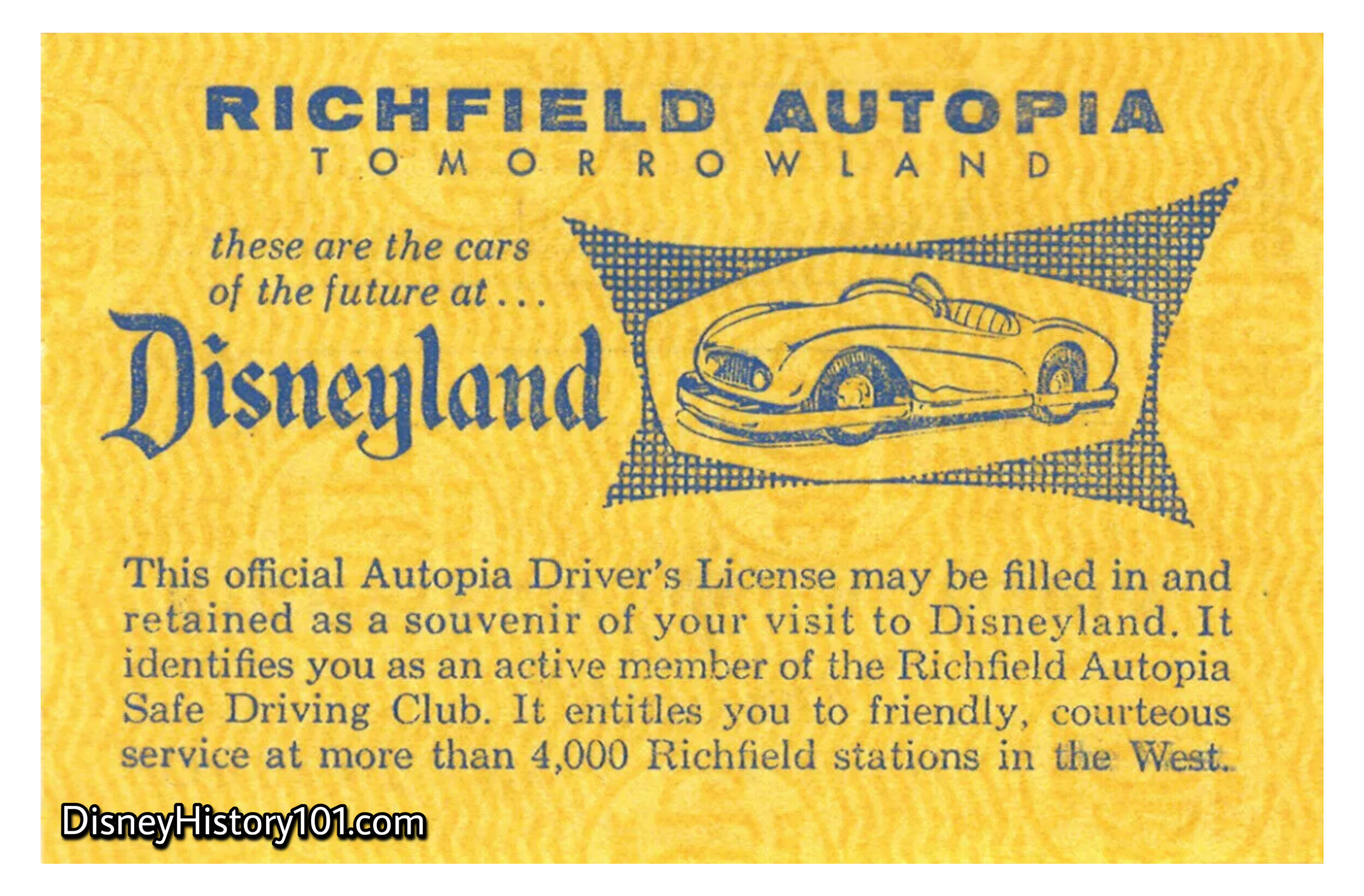
1960s, Official Driver's License for Richfield Autopia at Disneyland
A new decade brought new Richfield Autopia Drivers Licenses for motorists who completed their circuit behind the wheel of “the cars of the future”! The only problem - the face of the License sports a fiberglas Autopia body that resembles the old Autopia Mark I - IVs.
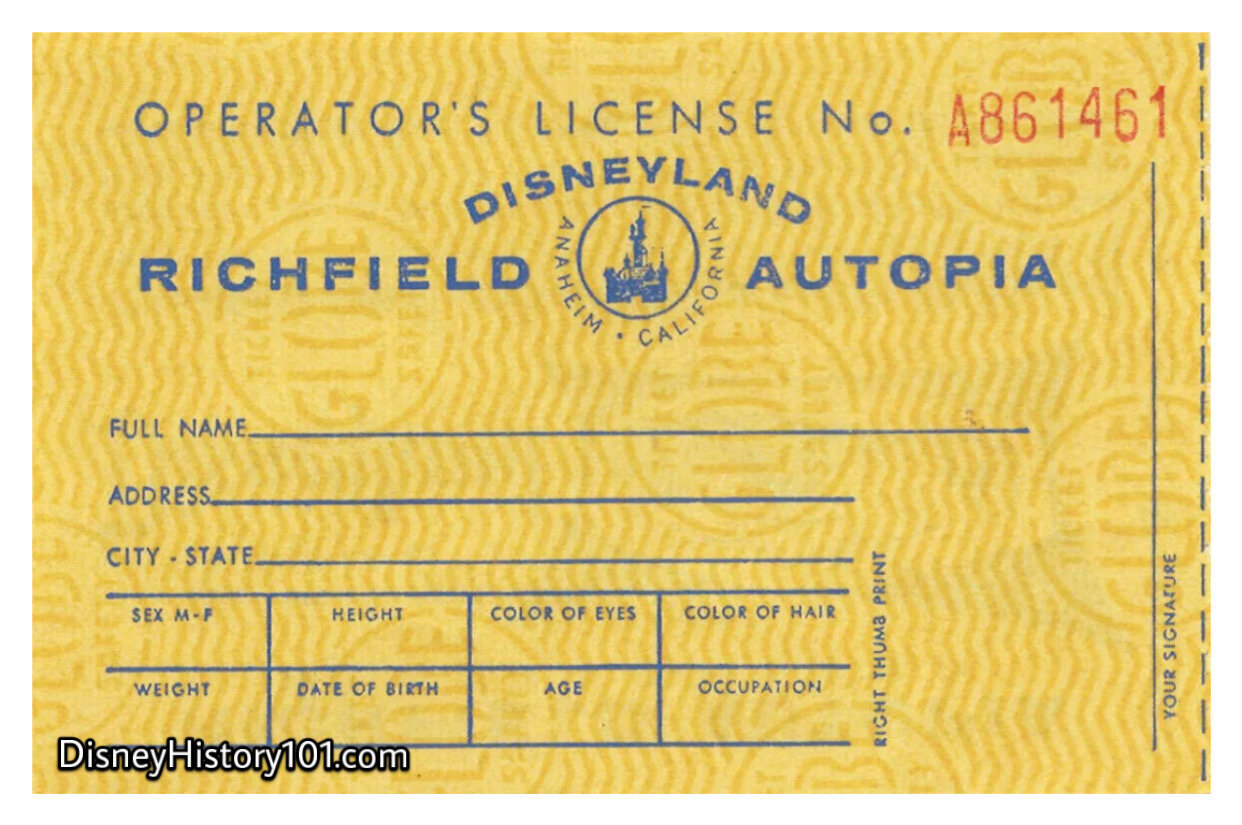
1960s, Official Driver's License for Richfield Autopia at Disneyland
There was a new field where the cardholder could add their occupation. The brand new Disneyland Richfield Autopia Operator’s Licenses also added a field for the cardholder to add their sex (as there were many male and female motorists on the road at this time).
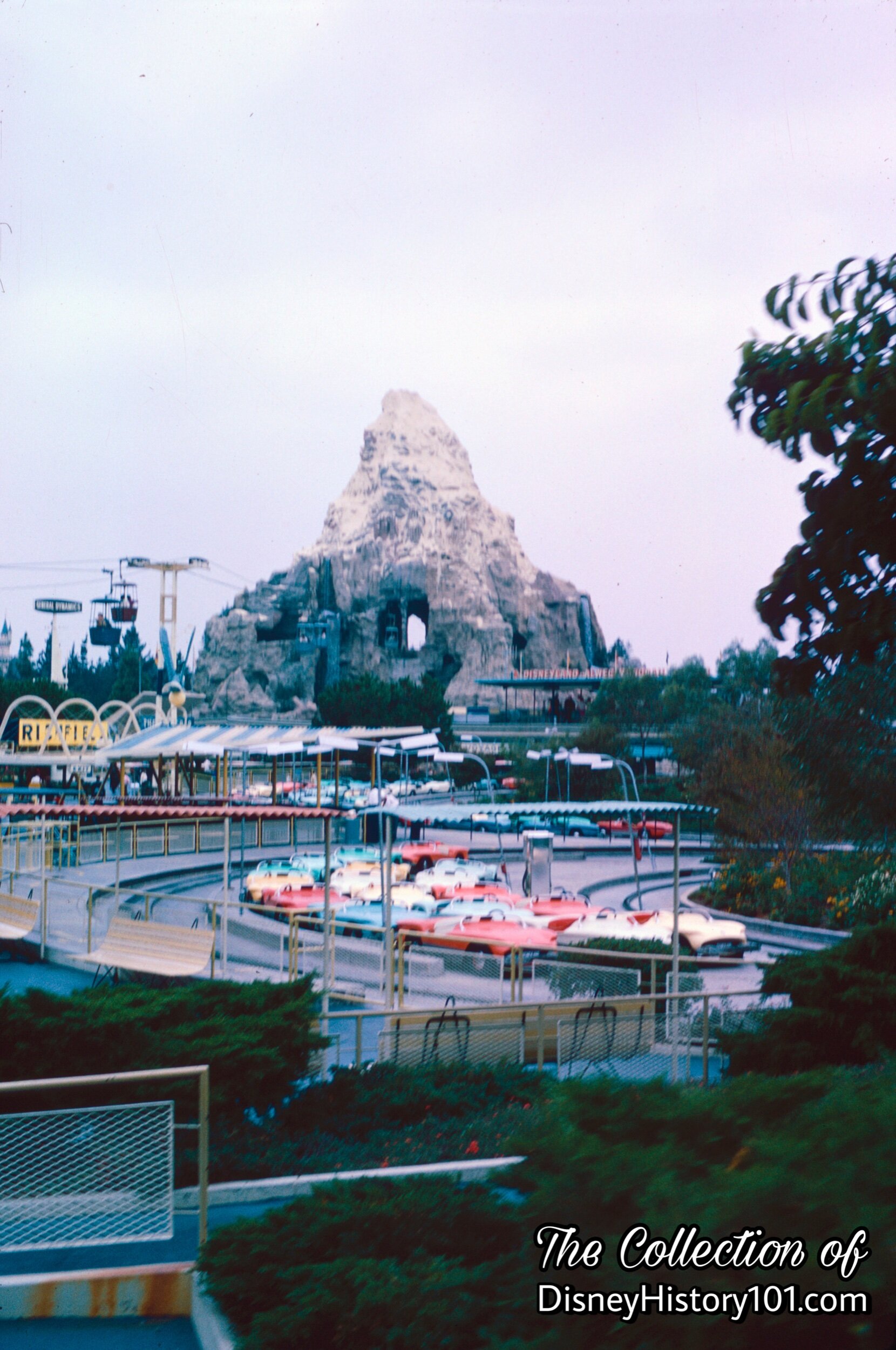
(1964)
![In an interview, Walt Disney once said, “Whenever I go on a ride, I’m always thinking of what’s wrong with the thing and how it can be improved”. [“Walt”, published 1975 by Walt Disney Productions]. Bob Penfield (in interview with Disneyland LIN](https://images.squarespace-cdn.com/content/v1/5b3d7f804eddec6e826be0c9/1571549433838-0IO0L1XGG2Z2CLEPZY8S/1C78CA1B-9B4A-4BFA-A1E9-38FC7104BC22.jpeg)
In an interview, Walt Disney once said, “Whenever I go on a ride, I’m always thinking of what’s wrong with the thing and how it can be improved”. [“Walt”, published 1975 by Walt Disney Productions]. Bob Penfield (in interview with Disneyland LINE, Vol. 25, No. 28), recollected at least one conversation about one of these particular “improvements” : “One time I was [working operations] on the Autopia and Walt and I were standing talking about how installing a central rail would help control the cars.” Proving the truth of Walt’s interest improving things, he personally made a visit to the Santa Cruz Boardwalk (during 1963). Walt’s reason for doing so, was to visit their new Autorama attraction, which featured futuristic auto designs by Arrow Manufacturing in Mountain View, as well as a center guide rail. While there, photographic evidence preserves both Walt and Bob Gurr personally sitting behind the wheel of what would become the prototype of the next-generation of Autopia vehicles. As a result, another brand new Autopia vehicle design (without a wraparound bumper) would debut the following year (in 1964) - The Autopia Mark VI! In 1965, a new guide rail system was installed along the Richfield Tomorrowland Autopia’s road. By 1964, Walt Disney’s Guide to Disneyland was naming this Tomorrowland attraction the Super Autopia Freeway (presented by Richfield)!
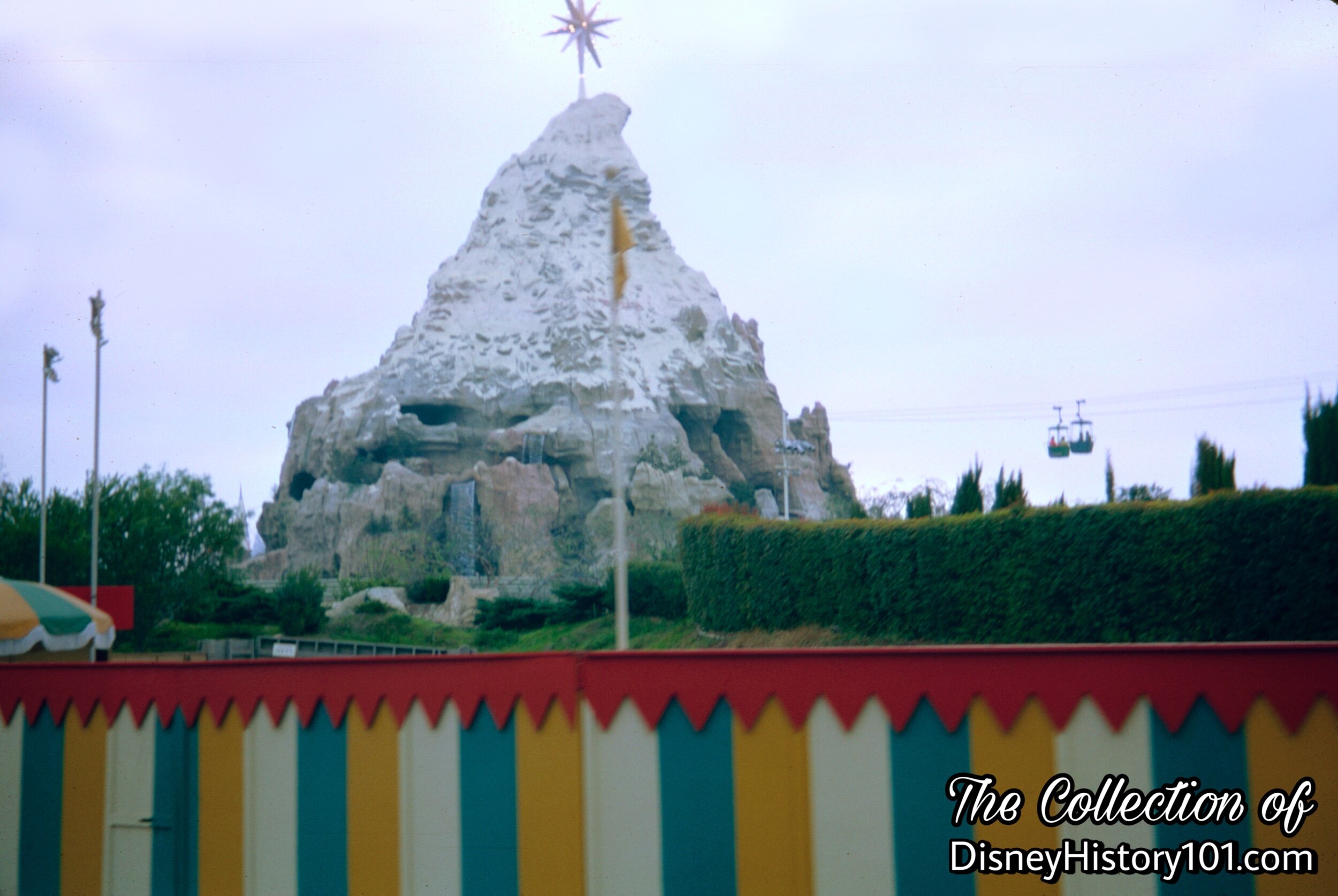
Autopia Construction Barrier, 1964-1965.
Safety is a major concern of Engineering. Every year they would make a complete test and inspection of all structural parts of Disneyland. And since Guests would look to Disneyland for their safety the department team was continuously designing new guest and personnel safety devices.
Autopia cars were often serviced by the Welding Department.
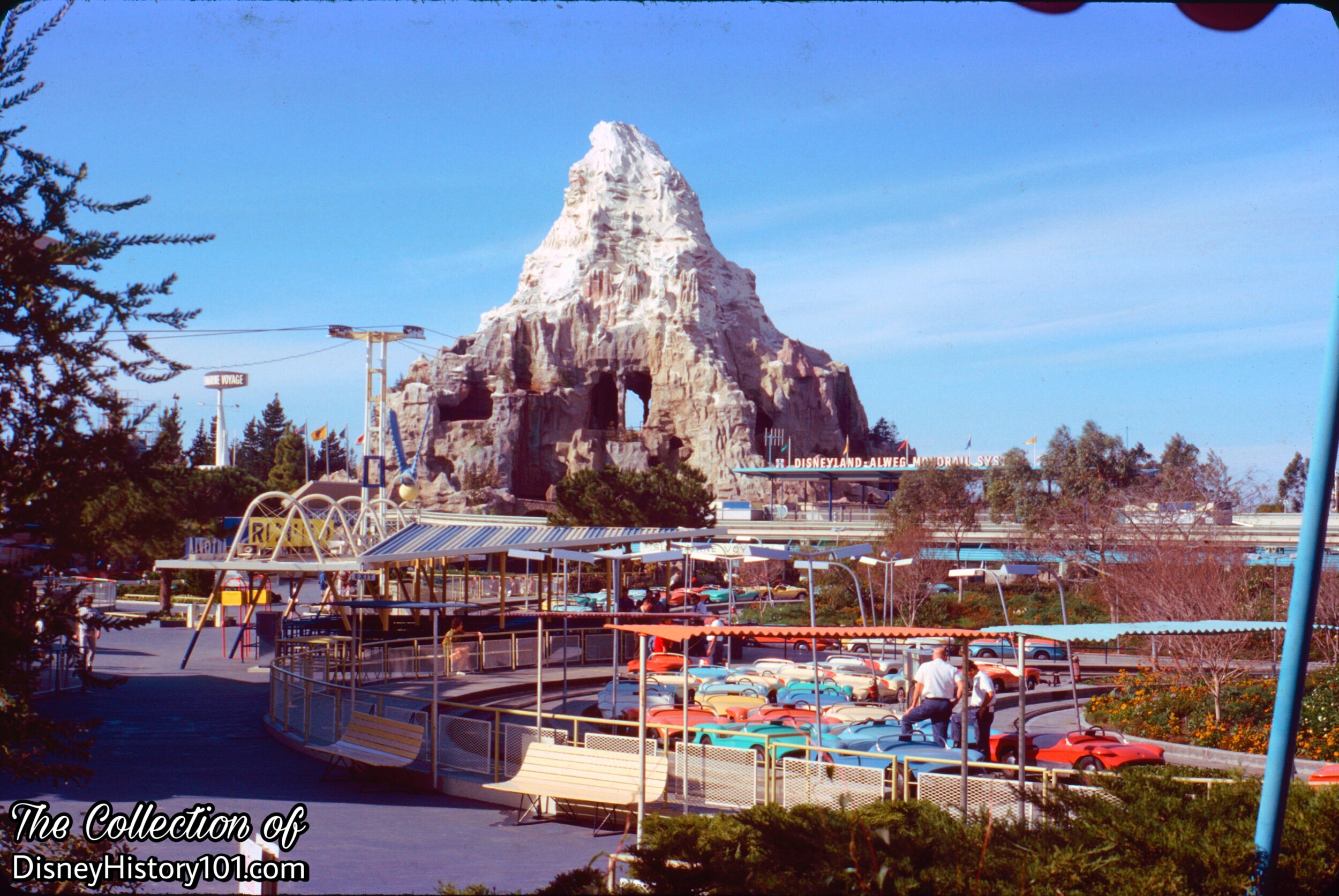
Tomorrowland Autopia and Autopia Mark VIs, c. 1965.
During this era, the land inspired another adventure at Disneyland. By 1964, the character of the 9th hole of The Magic Kingdom Golf Course of the Disneyland Hotel Golf Centre (though not a squid) was themed after the Autopia.
Many Disneylanders supported the Autopia stage at the Disneyland show during this era. Martin Sklar’s children worked at the park on the Autopia attraction for a couple of summers.
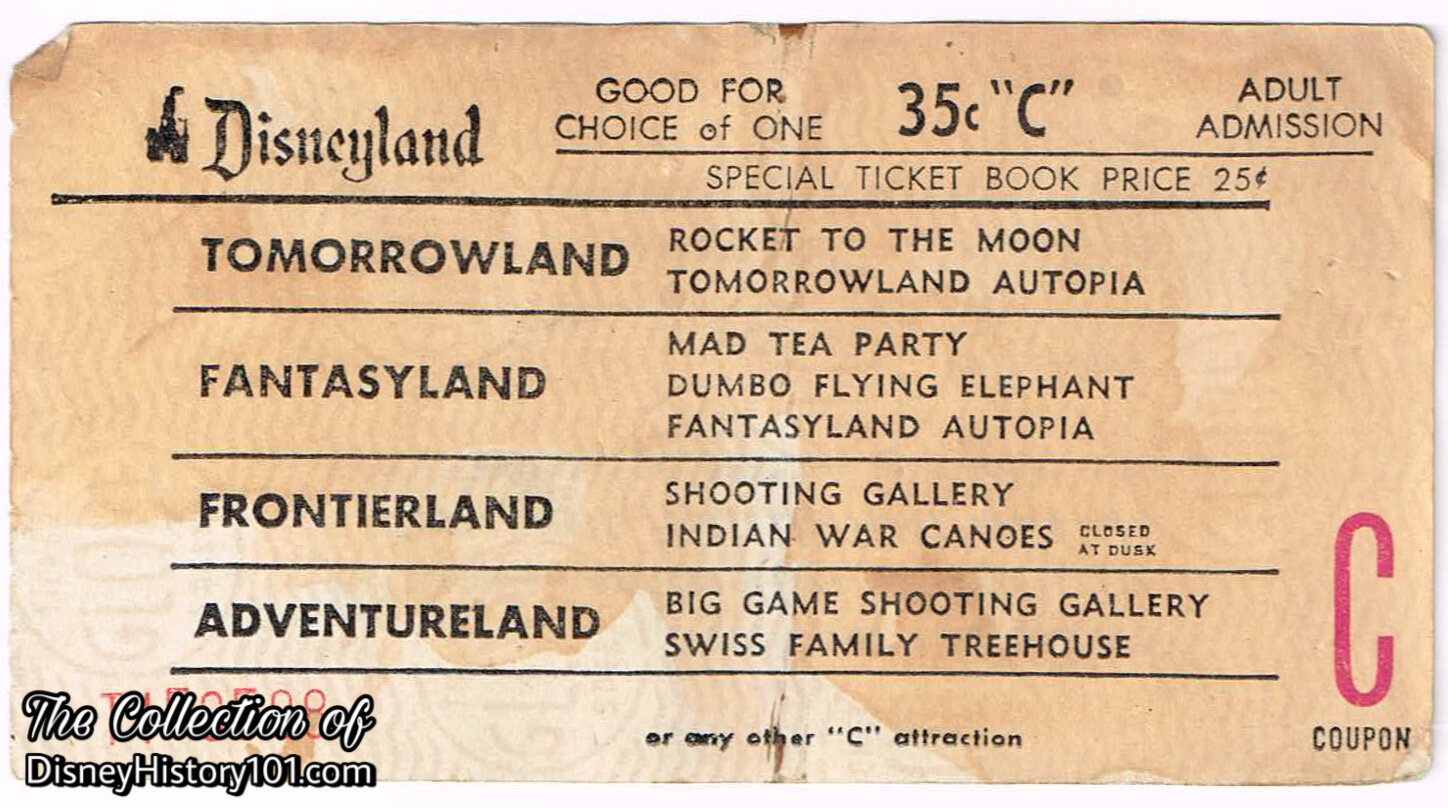
Disneyland Adult “C” Attraction Coupon (35¢ Value), 1965.
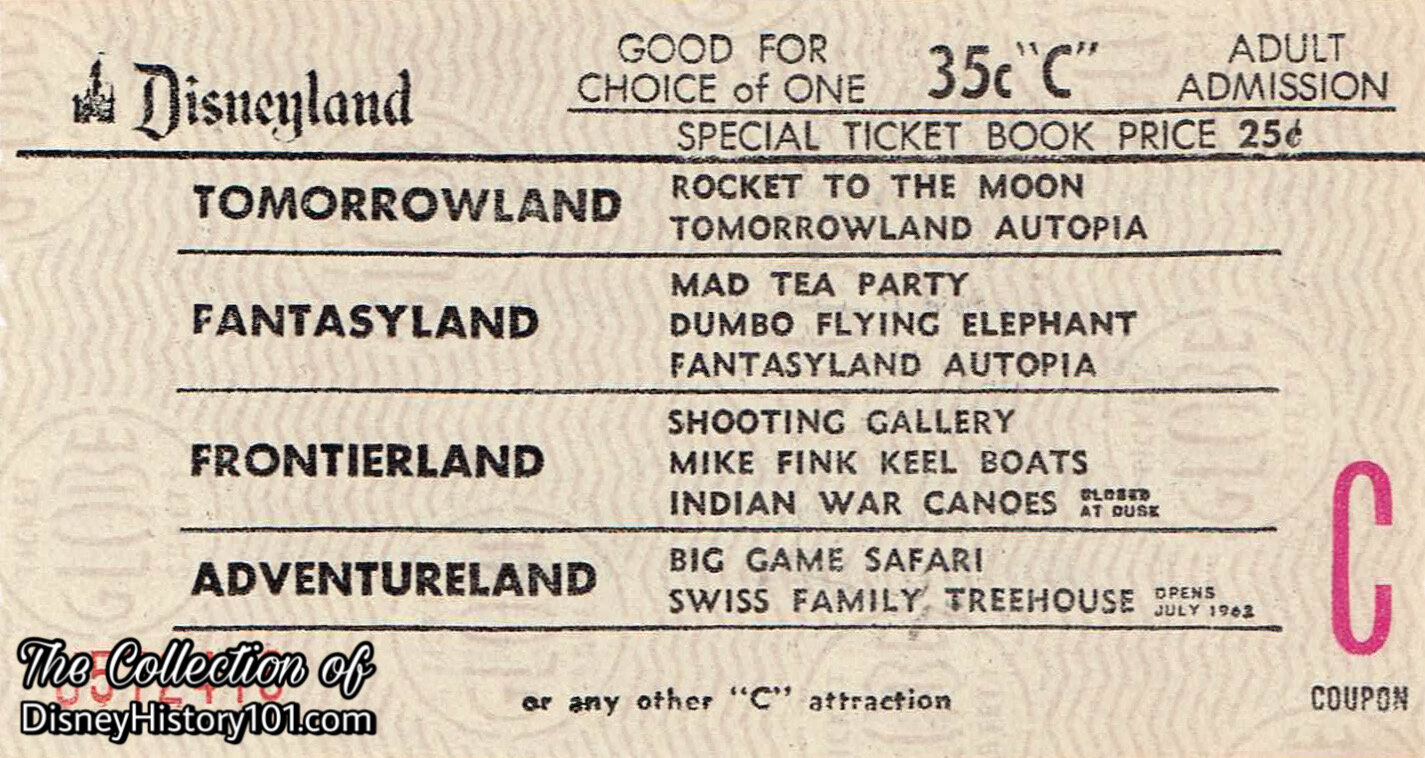
Disneyland "C" Coupon (35¢ Value), (c. 1965)
In 1965, the price of admission for navigating the modernistic (Fantasyland or Tomorrowland) freeways of the future was exactly one “C” coupon, or 35¢ - the same admission for passage along the Rivers of America aboard Mike Fink’s Keel Boats.
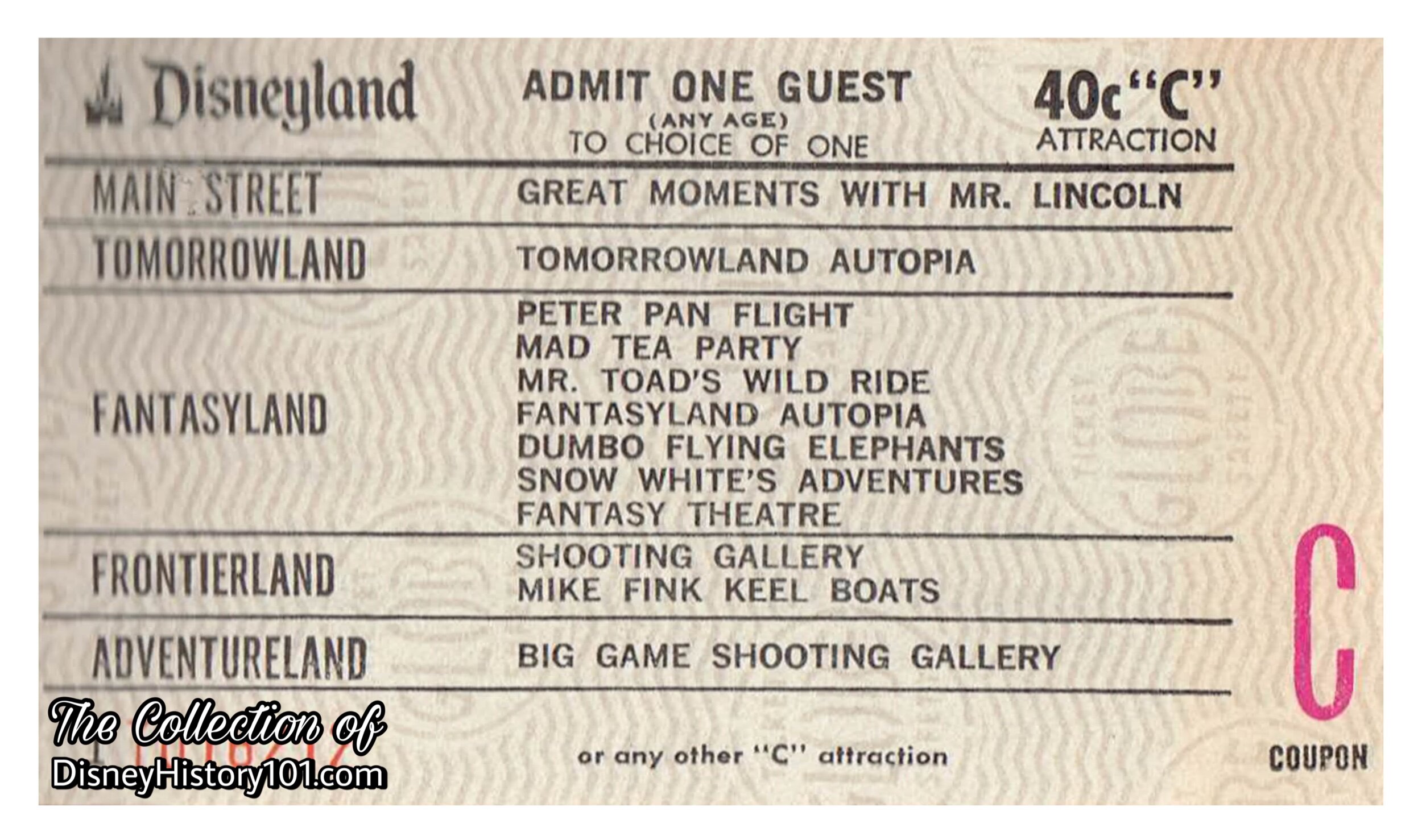
Disneyland "C" Coupon (40¢ Value)
The price of admission for navigating the modernistic (Fantasyland or Tomorrowland) freeways of the future was soon updated to exactly one “C” coupon, or 40¢ - the same admission for spending a few “Great Moments with Mr. Lincoln” (Walt Disney’s newest attraction in its post New York World’s Fair Disneyland debut), or a screening of Walt Disney Productions animated short films in the all-new Fantasyland Theater!
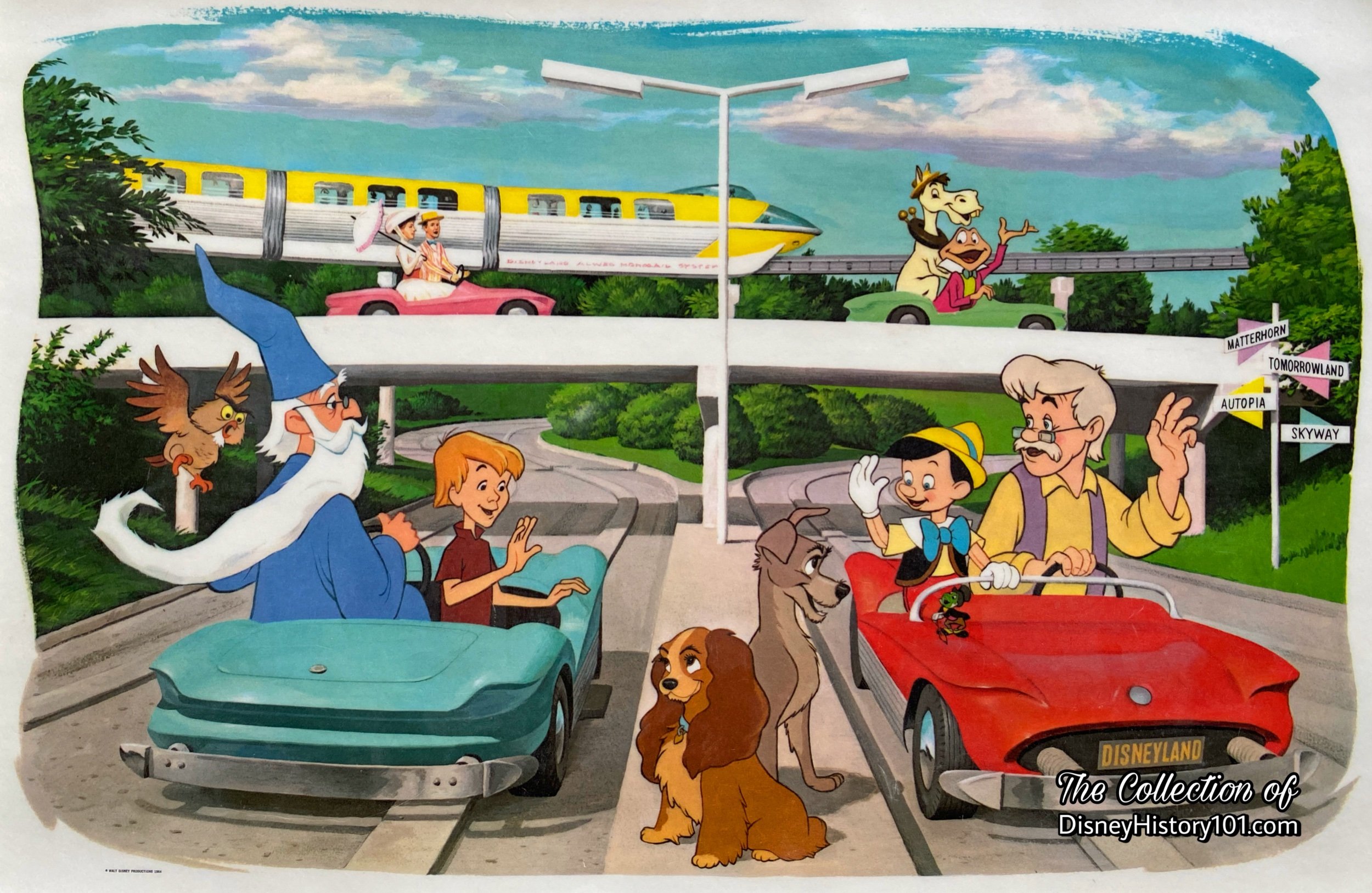
Placemat image featuring the Mark V Autopia car.
The Mark V Autopia cars were featured on licensed merchandise (above) and in at least one major piece of promotional media. In August of 1962, Lloyd Richardson, Larry Clemmons, Joe Marquette, and Jack Leppert (of the Walt Disney Studio) filmed and shot scenery of the Fantasyland Autopia for Studio Production #3185. Then, the Tomorrowland Autopia would briefly cease operation during the winter season of 1962.
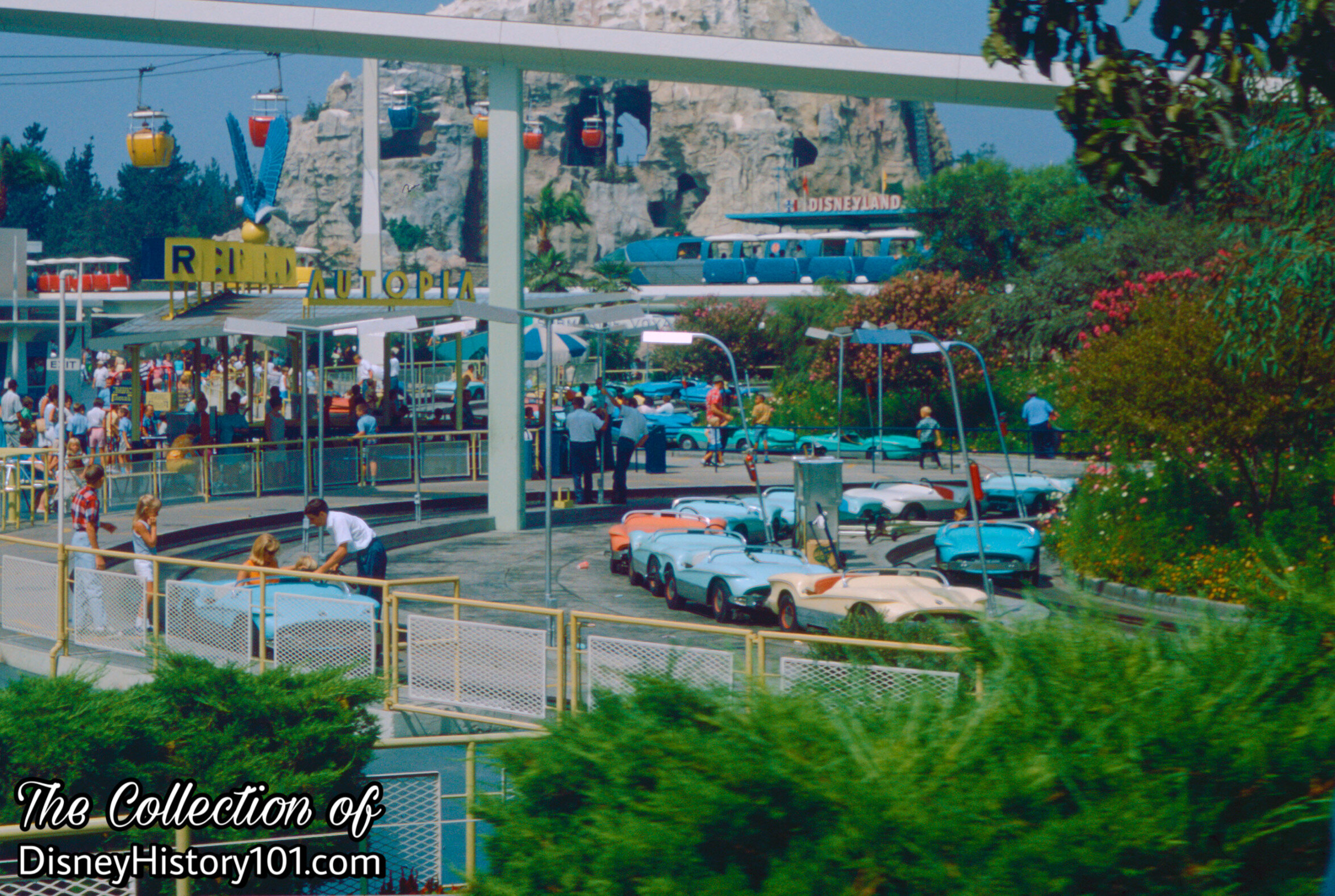
Tomorrowland Autopia and Autopia Mark VIs, (1967)
You’ll note that the Autopia has also been enhanced with new flowers (as was routinely performed by Nurserymen). We feel the same as Disneyland Backstage Editor Wally Boag, who wrote (during the Summer of 1966) : “We’d like to say a word of ‘thanks’ to our hardworking Nurserymen. . . .The plants always look beautiful, rain or shine.”

Disneyland Participant Corporate Sponsors were carefully selected. High quality, long term corporate sponsors would provide incremental income that enabled Disneyland to enhance its show and attractions, offset some operating expenses, and capitalize on marketing opportunities. “A cross-section of American industry…[was] represented in Disneyland. Each of these companies… [would expose] its institutional advertising and public relations message to Disneyland guests through various forms of participating exhibits and displays. In each case, the exhibit… [was be] related to the theme of the ‘land’ in which it is located, and is woven into the overall concepts and themes of Disneyland,” according to “Disneyland, U.S.A.,” published 1958.
This wasn’t the first time that Walt Disney partnered with a gasoline corporation. For instance, during the 1930s Walt Disney’s Mickey Mouse and the Seven Dwarfs appeared in promotional materials for Standard Gasoline Oil Dealers and Authorized Distributors. Now, another American industrial component - the Richfield Oil Corporation - would prove itself the perfect sponsor for several Tomorrowland attractions, and would reap these rewards of their Disneyland Partnership!
For instance, owing to one synergistic promotion (offered a few weeks before Disneyland’s Press Preview Day), the “oil company, which quietly offered a booklet about Disneyland, was inundated with 500,000 requests BEFORE their billboards announcing the booklet giveaway on display,” according to the Los Angeles Mirror (published June 10th, 1955).
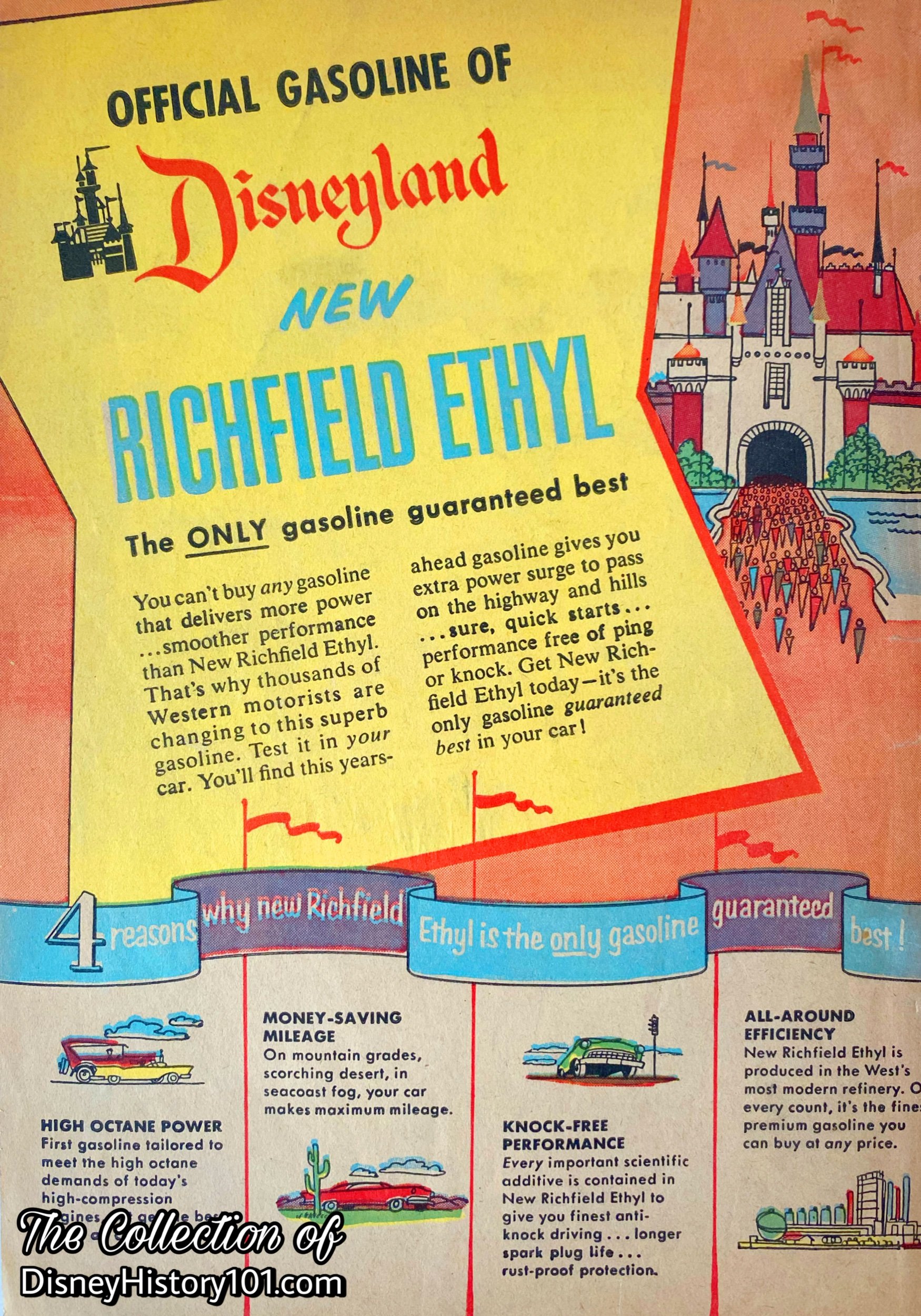
c.1958.
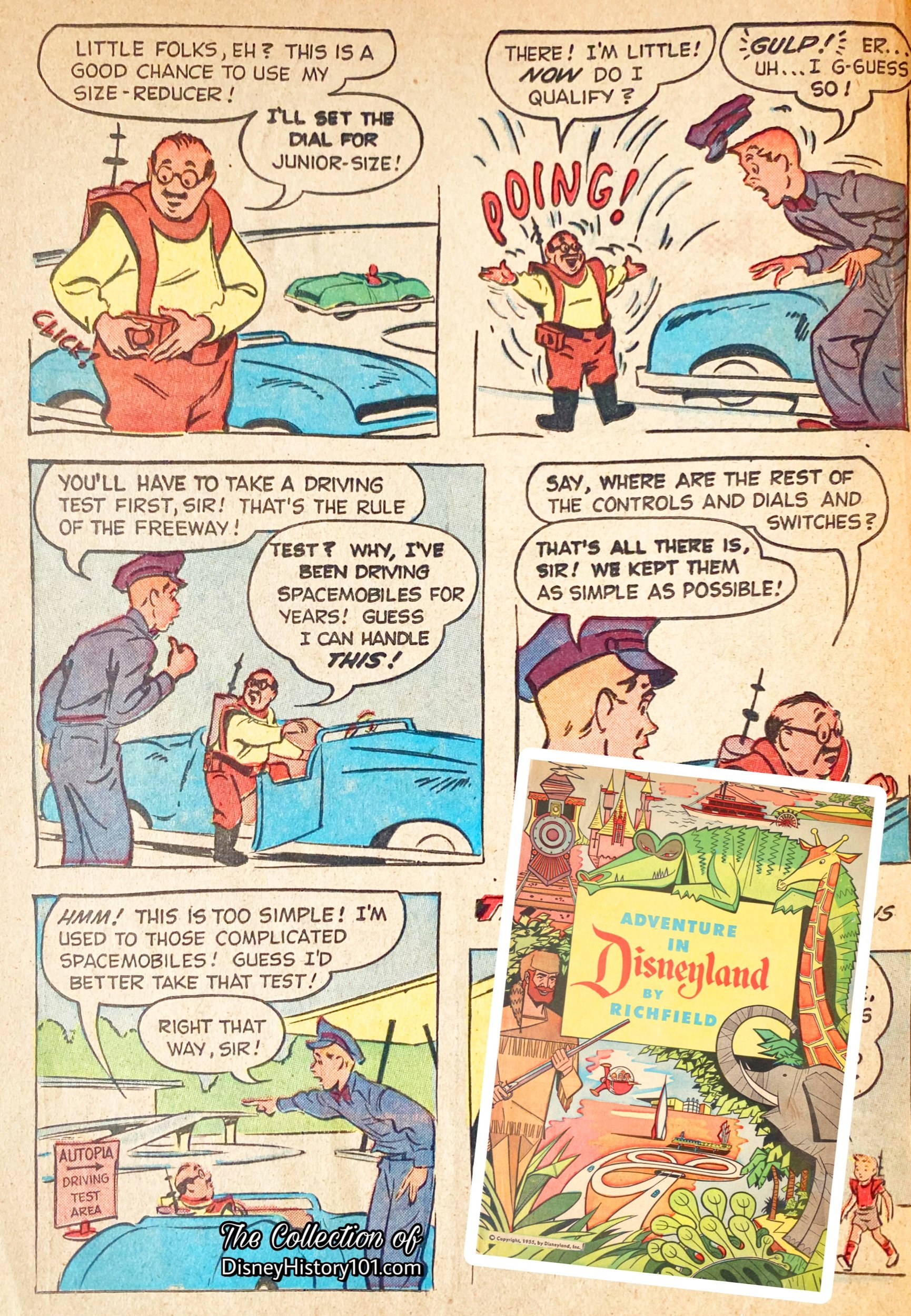
The junior-size Autopia and Driving Test Area depicted in the pages of the promotional “Adventures in Disneyland by Richfield.”
Richefield maps (“especially prepared, showing the routes to Disneyland from all Southern California points, and a map of the streets and approaches in the immediate vicinity of Disneyland”) were distributed to invited members of the Press, to assist them in arriving at Disneyland on Sunday, July 17th.
Yes, for the Richfield Oil Corporation, “the possibilities for a sponsor to capitalize on this association… merchandising, sales promotion, advertising, public relations and publicity programs are almost limitless. Regardless of the type of product, goods or services manufactured and marketed by sponsors, the Disneyland association can be effectively and importantly translated into the sponsor’s promotional activities,” according to “Disneyland, U.S.A.,” published 1958.
The sponsor was one of five major concerns to hold a lease with Disneyland for strictly advertising purposes. Among these concerns were the Santa Fe Railroad, Bekins Van and Storage, TWA, Richfield Oil Company and Pepsi Cola. These did not occupy space but have their name displayed at certain places that were advantageous for the advertising of the product or service they sold. Richfield’s partnership with Disneyland (from 1955 to 1970) allowed for two Richfield-sponsored attractions within the Park (if you don’t count all the Autopias separately). There was the half-mile original Richfield Autopia built to scale (featuring authentic Richfield Pumps, the dynamic blue-and-gold Richfield Eagle, and engines that ran on New Richfield Ethyl). As a “sidelight”, you may recall seeing the Richfield Ethyl Trucks parked Backstage (along Harbor Boulevard) to refuel Autopia vehicles during this era. Richfield also sponsored “Richfield’s Years Ahead Show” (a free Disney show and exhibit on the history and development of petroleum).
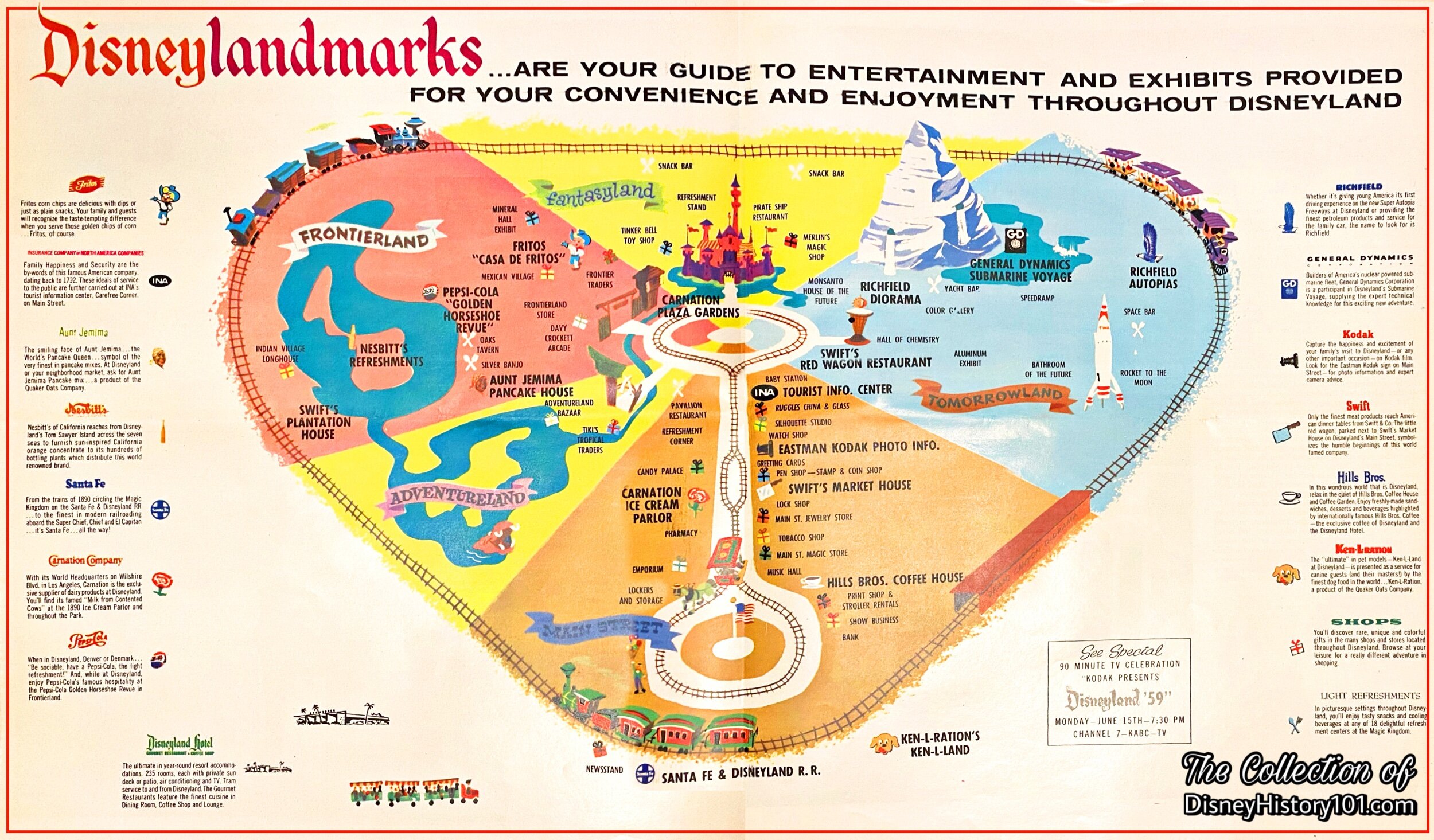
“Disneyland ‘59!” Supplement Excerpt
The corporate synergy between Disneyland, Inc. and the Atlantic Richfield Co. was good. Just a few years later, the institutional lessee Richfield Oil Corporation brought much revenue for Disneyland, Inc. For the fiscal year ended September 29, 1957, Richfield Oil brought $5,000 of revenue to Disneyland, Inc. from Fantasyland alone and a total of $75,000 for the fiscal year ending September 29, 1957. The following year, Richfield Oil brought revenue of $75,000 for the fiscal year ending September 28, 1958.
The trusted old firm continued to become a Disneyland sponsor, as well as a supporter of “Disneyland ‘59”!

In 1955, the Autopia was powered by products of Atlantic Richfield Co. sponsor. Guests of Disneyland were reminded to “fill up with the official gasoline of Disneyland” - “New Richfield Ethel… unsurpassed for Top Octane power.” A few years later, guests planning on leaving Disneyland for the day were encouraged to “remember to use the gasoline that gives that extra ‘get up and go’ to the family auto - Richfield Boron Gasoline - over 100 octane”! In addition, (according to another advertising campaign) guests also could treat their car to “‘the Official Gasoline of Disneyland - Richfield Imperial Boron - the Mileage Maker.” These products could be purchased in three nearby locations of “Todayland…” One Richfield station was located outside the beautiful Disneyland Hotel and two Richfield stations were conveniently located outside Disneyland, in order to serve guests (one at 1340 South West Street, at Winston; another at 1451 South West Street, on the old Rene Quatacker 5½-acre plot, at the southeast corner of West and Katella, next to the Disneyland Hotel). The telephone numbers to each of these stations was even listed in the 1960 Disneyland Telephone Directory. Later, stations were located at 1780 Euclid Avenue at Katella, and also at 1201 Brookhurst Avenue (at Ball Road).
Advertisement promotions during the era of Disneyland and Richfield meant many perks for guests of Disneyland and Richfield Stations. During 1955, Free Disneyland Comic Books were given to Richfield Station customers and guests of the Richfield Exhibit in Tomorrowland and young Richfield Autopia drivers. And, who could forget those souvenir Richfield Autopia Driver’s Licenses? During the 1960s, Disneyland guests were reminded, “Don’t forget to ask your friendly Richfield dealer for the colorful, informative Official Disneyland Road Map. It shows you the easiest ways [or, alternative routes] to reach Disneyland. It’s free - compliments of your local Richfield dealer!”
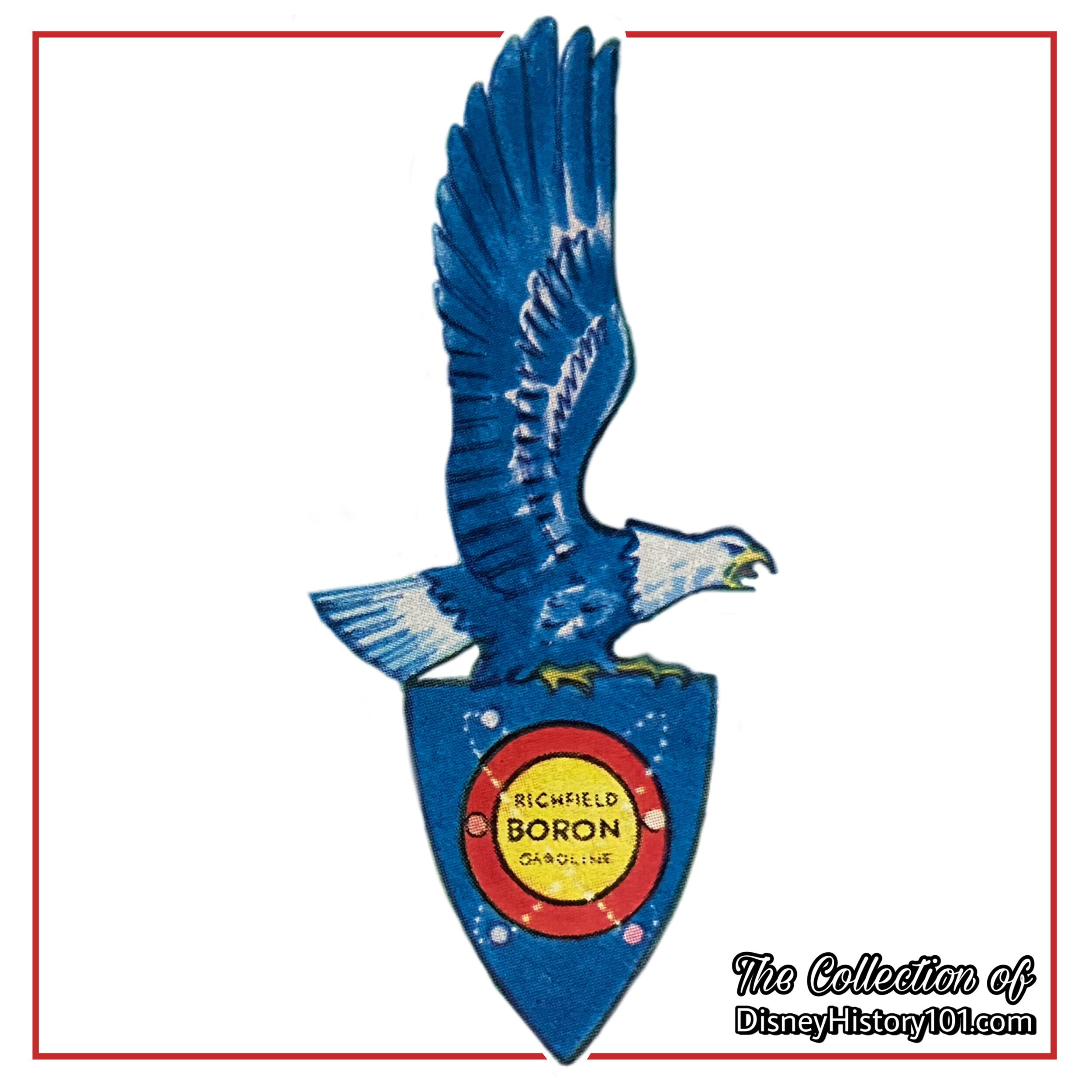
Above: Los Angeles Times Newspaper Advertisement Insert Illustration Excerpt, (June 14, 1965)
Just below the Skyway, you’ll notice the Atlantic Richfield Oil Corporation’s majestic and iconic eagle (in the corporate colors -yellow and blue), rising above the attraction’s entrance awning with pinions raised, while firmly clutching a Boron molecule with its phalanges! Each Atlantic Richfield Autopia car’s gasoline engine is fueled with New Richfield Ethyl. The Richfield Eagle was part of the original entrance designs created by artists at WED Enterprises Inc. and Disneyland Inc. Foremost of these was Gabe Scognamillo, who oversaw the design of the Autopia queue, the overhead Richfield Autopia neon sign and positioning of the Richfield fuel pumps located near the Autopia Loading Zone.
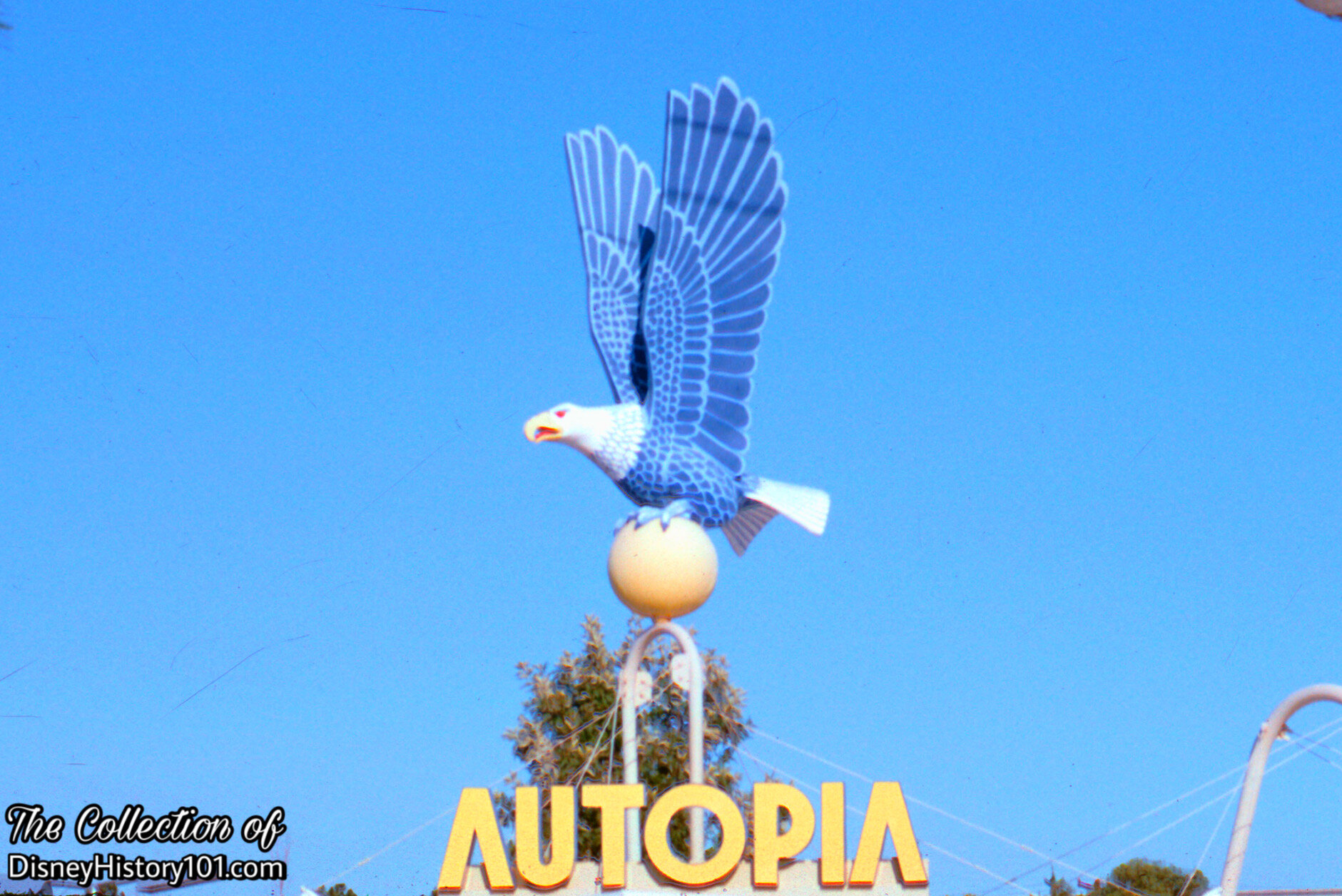
The Richfield Eagle, (1964)
At Disneyland, signs were themed to support the stories with respectful graphics, colors, fonts, terminology, the overall design of sign, materials (wood, metal, banners, etc.), and verbiage used on the signage. The majestic Richfield Eagle would spread it’s wings and soar over the Super Autopia Freeway queue for a decade-and-a-half, until 1970 (when Disneyland Participant Affairs and Participant Richfield could not negotiate a new cooperative agreement to maintain their ongoing relationship). So, Richfield’s sponsorship of the Autopia would cease. By that time (1970) , a total of 47,756,550 guests had sat behind the wheel of an Autopia automobile on one of Disneyland’s Autopia Freeways [Admission Media Rides and Attractions Reports, published by Disneyland Research Department, April, 1971].
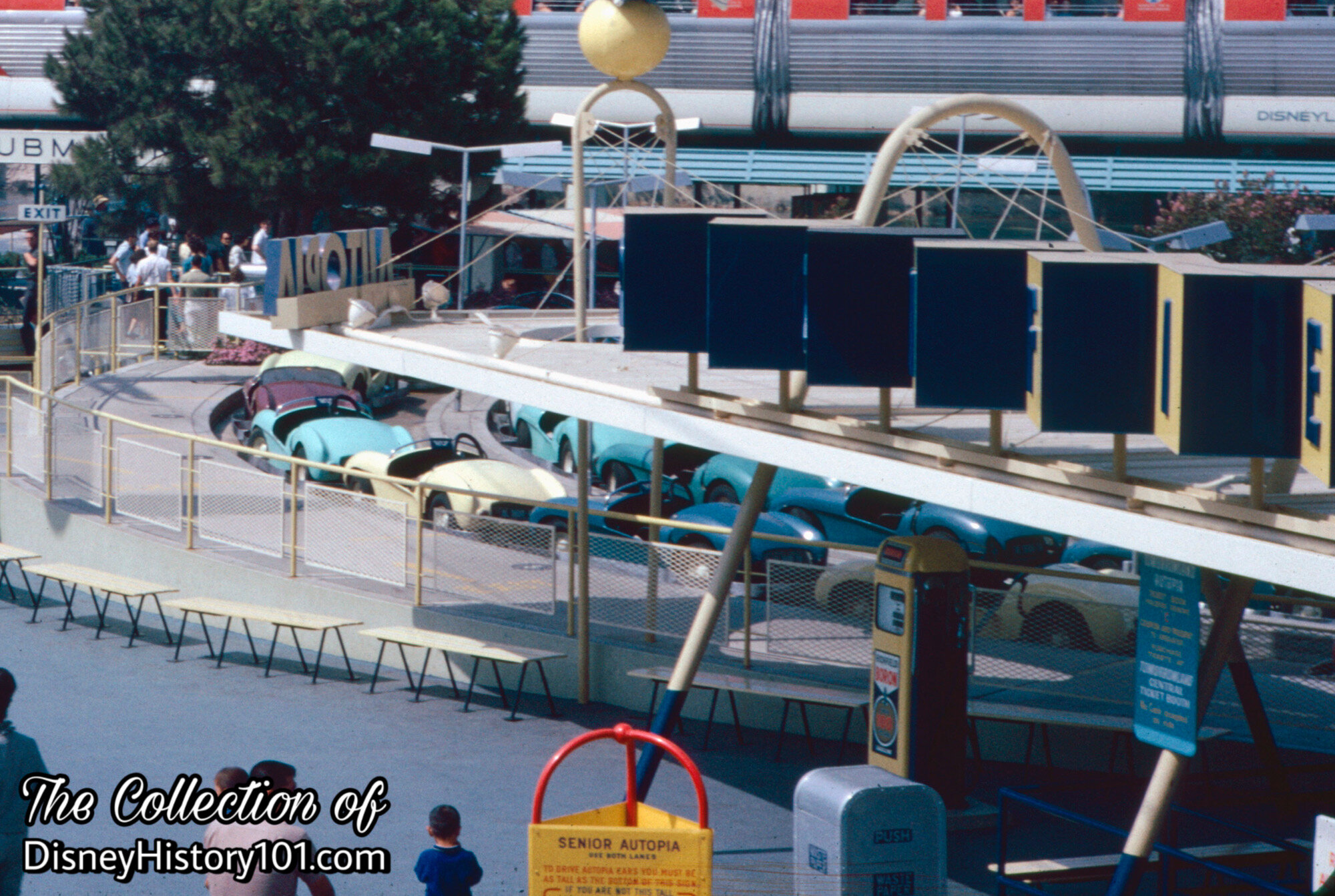
Richfield Autopia Sign (Rear) and Richfield Boron Pump, (September, 1962)
To the right (in the above Vintage View), you’ll notice the Richfield Autopia entrance awning made to resemble a fueling station. The original sign (with its bold Richfield name in lights) was partially designed by Italian Art Director Gabriel Scognamillo (who helped design the Upjohn Pharmacy facade, the Tomorrowland Automat, those towers bearing flags over the exhibit halls, those yellow canopies around Tomorrowland, and the four Richfield fuel pumps near the Autopia Loading Zone).
The original sign was manufactured by QRS Neon (of Los Angeles), was renown for providing neon signs to numerous service stations and shopping centers around the county of Los Angeles. QRS Neon won the bid, gathered the necessary neon tubing and other materials, and manufactured the custom letters - all in the nine to ten weeks up to Disneyland’s Grand Opening Day!
All of the final signage and props met the approval of both Cornelius Vanderbilt Wood (Disneyland’s first employee, responsible for much of the hired talent during Disneyland’s construction phase) and Mr. Hutchinson (Assistant General Sales Manager of Richfield Oil Corporation).
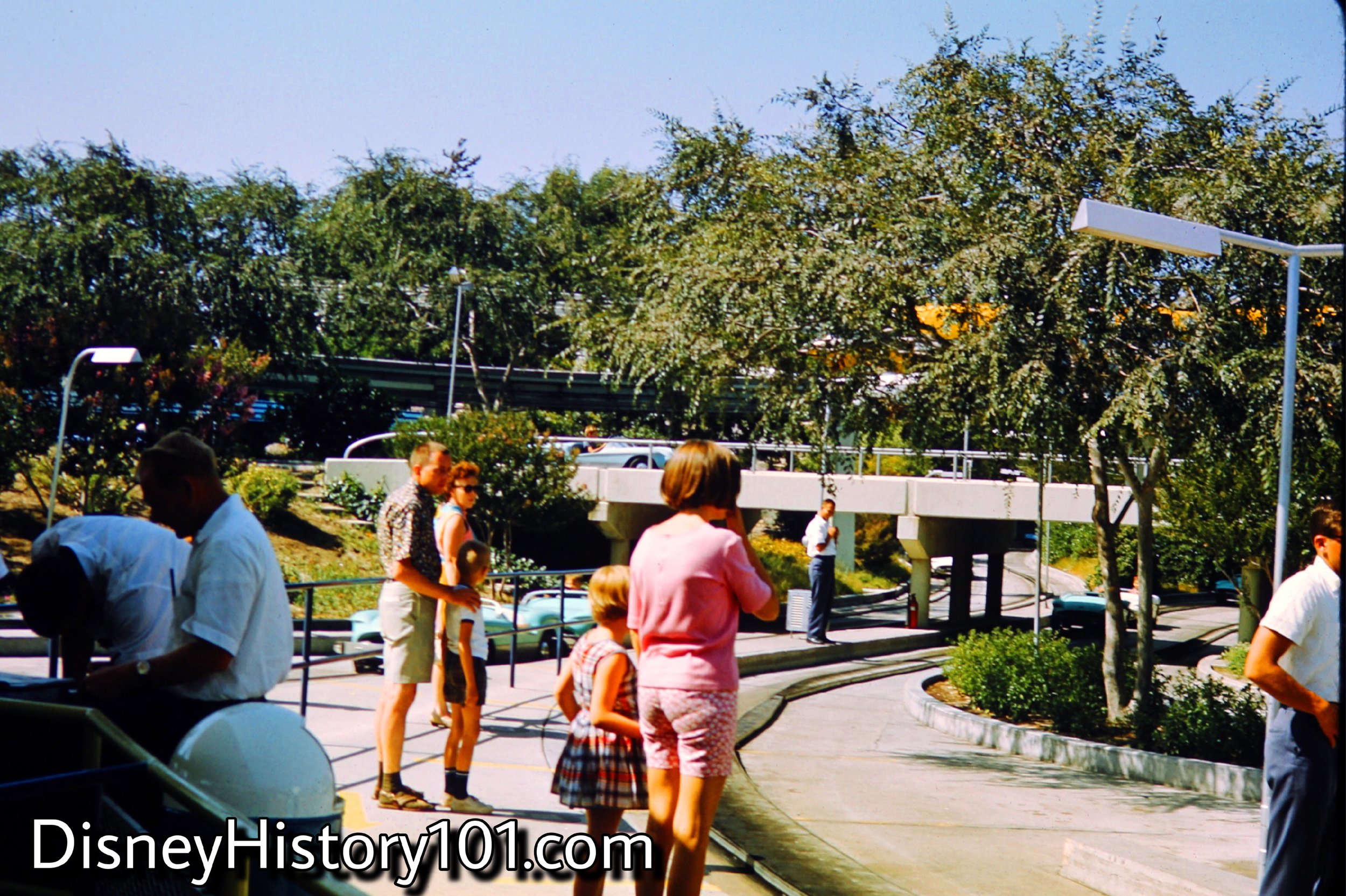
Autopia Mark VI, (Summer, 1966)
As Disneyland’s new yellow Monorail passes swiftly and almost stealthly through the trees, we catch our first glimpse of the Tomorrowland Autopia tracks below.

Autopia Mark VI, (Summer, 1966)

Autopia Mark VI, (Summer, 1966)
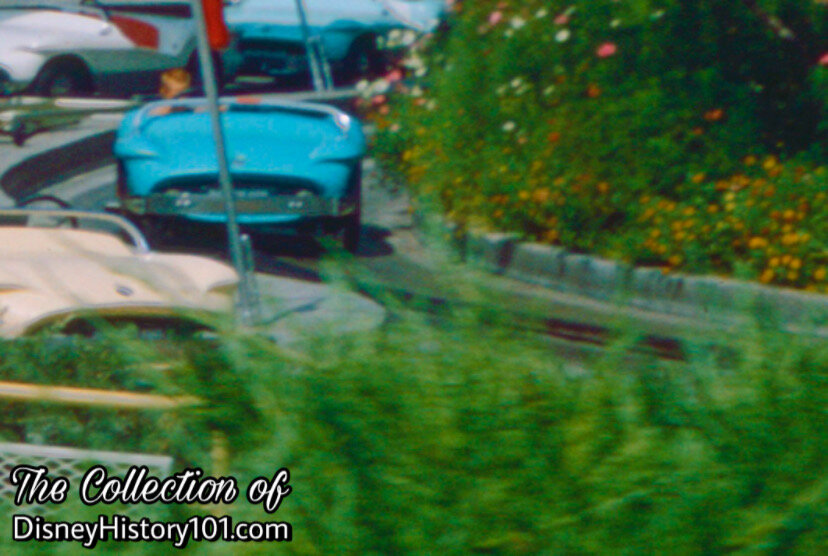
Autopia Mark VI
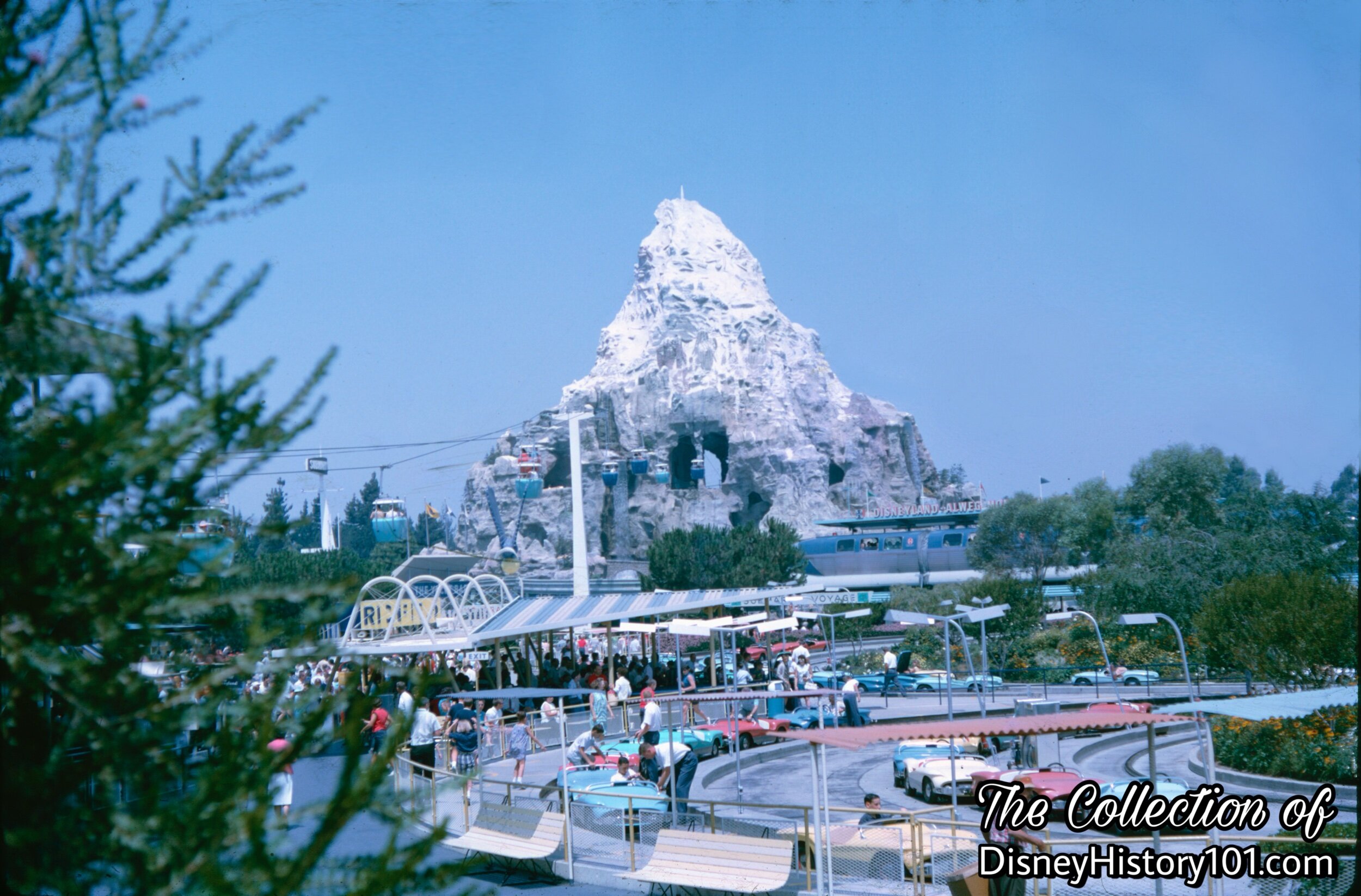
Autopia Mark VI, (1965, September)
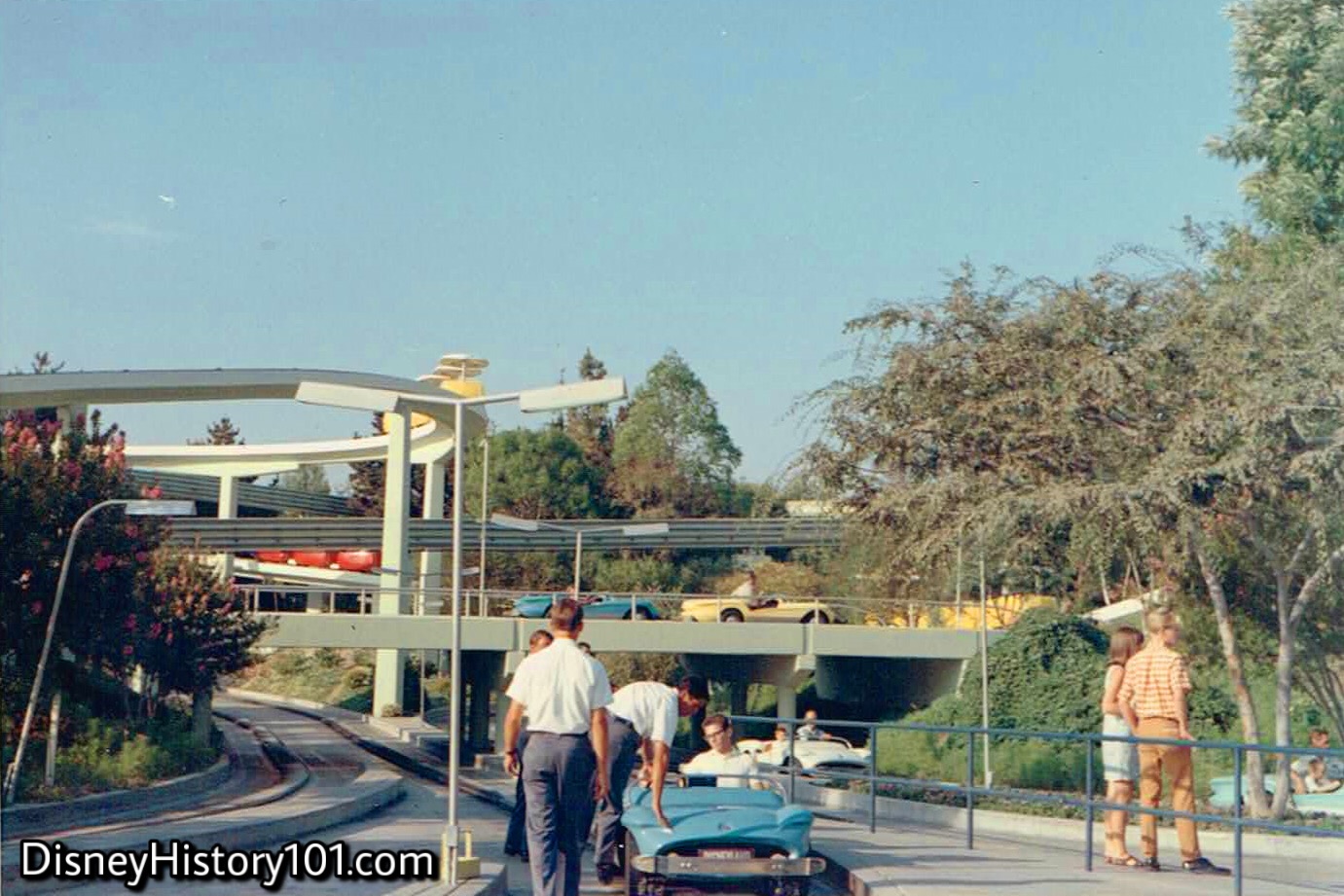
Autopia Mark VI, (1967)
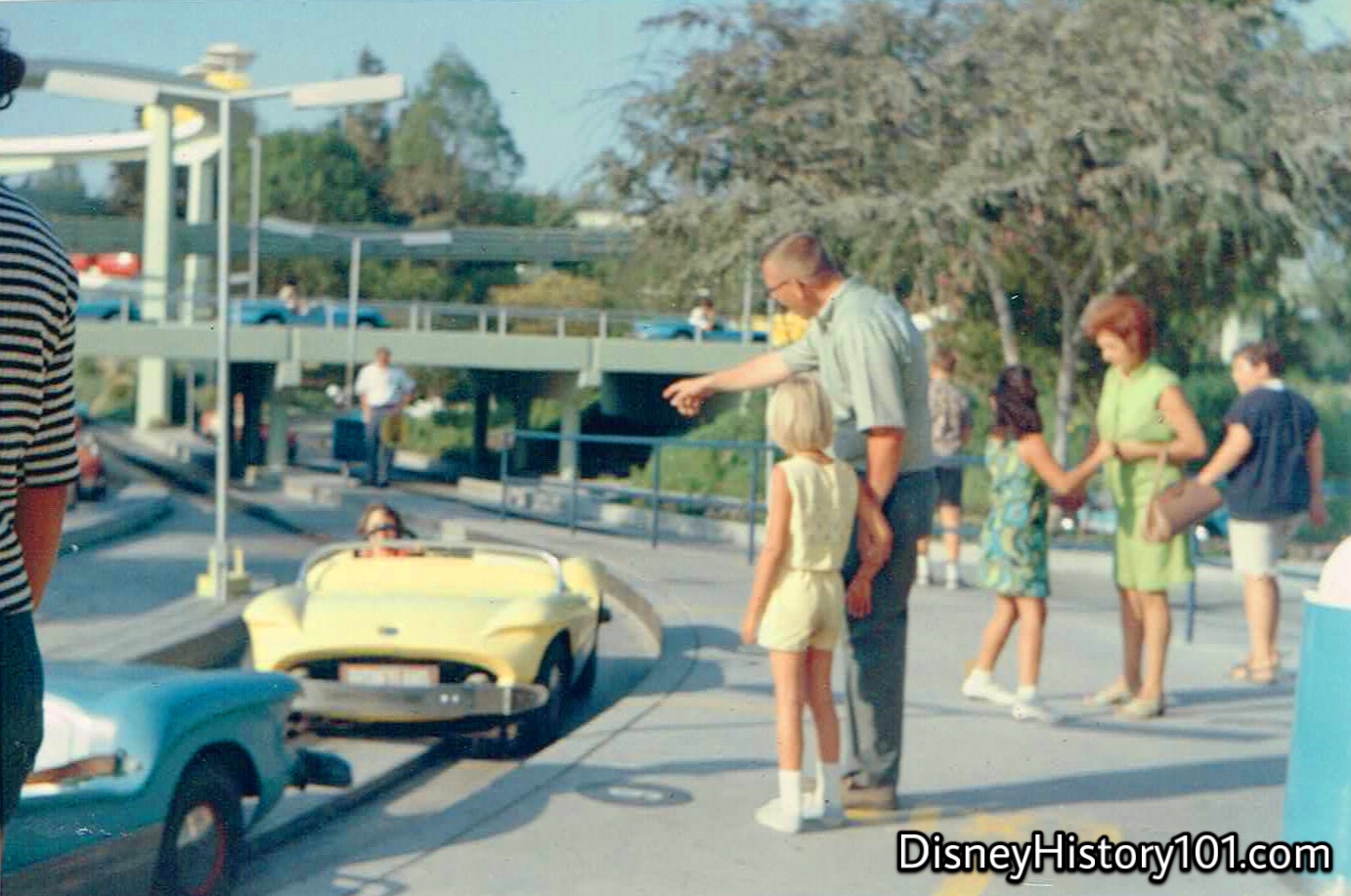
Autopia Mark VI, (1967)

Autopia Mark VI, (1967)
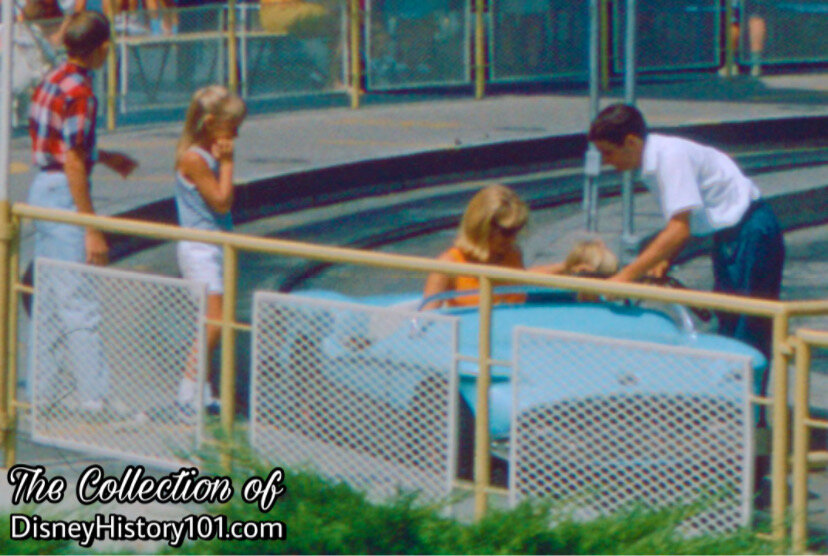
Autopia Mark VI and The Super Autopia Freeway
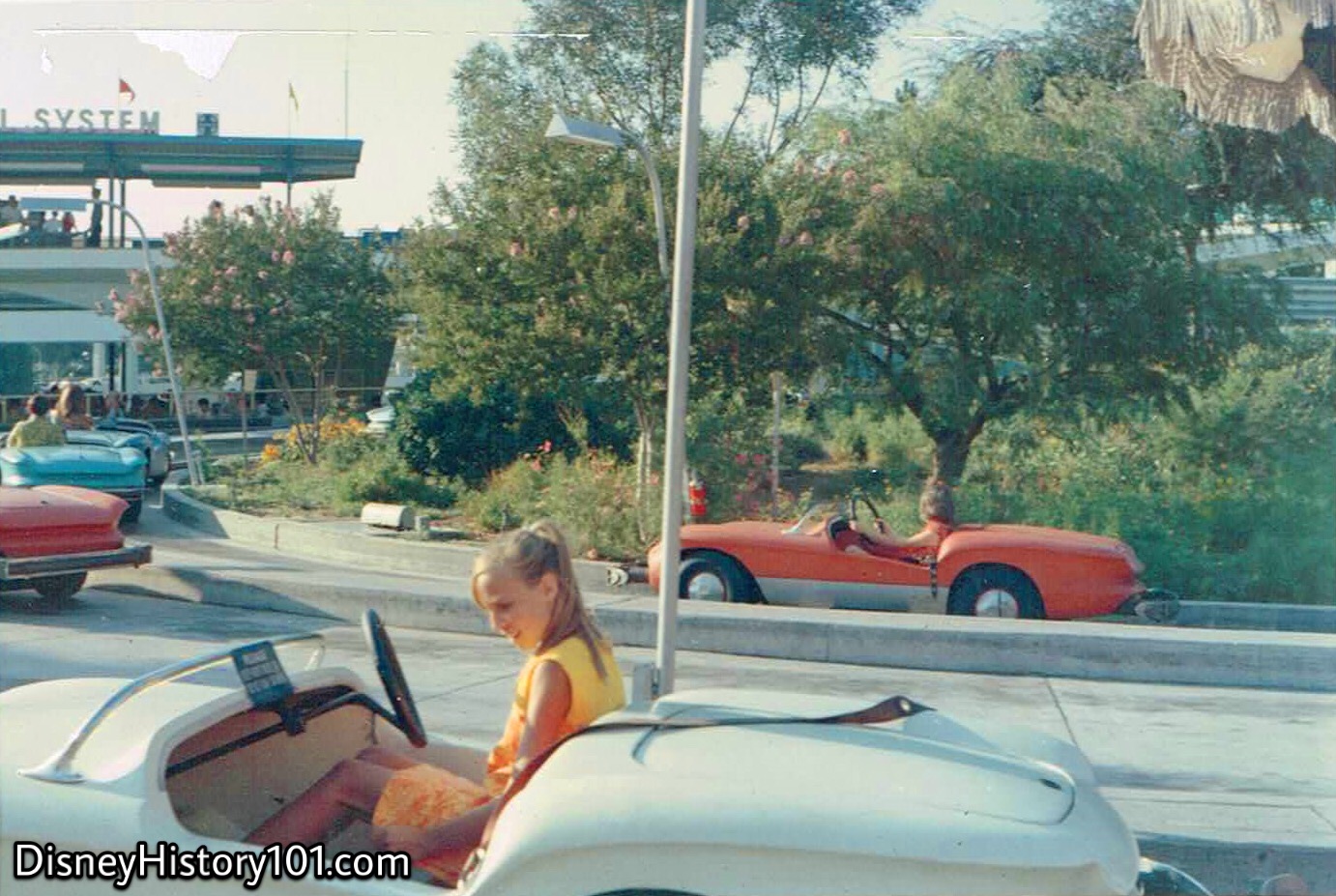
Autopia Mark VI, (1967)
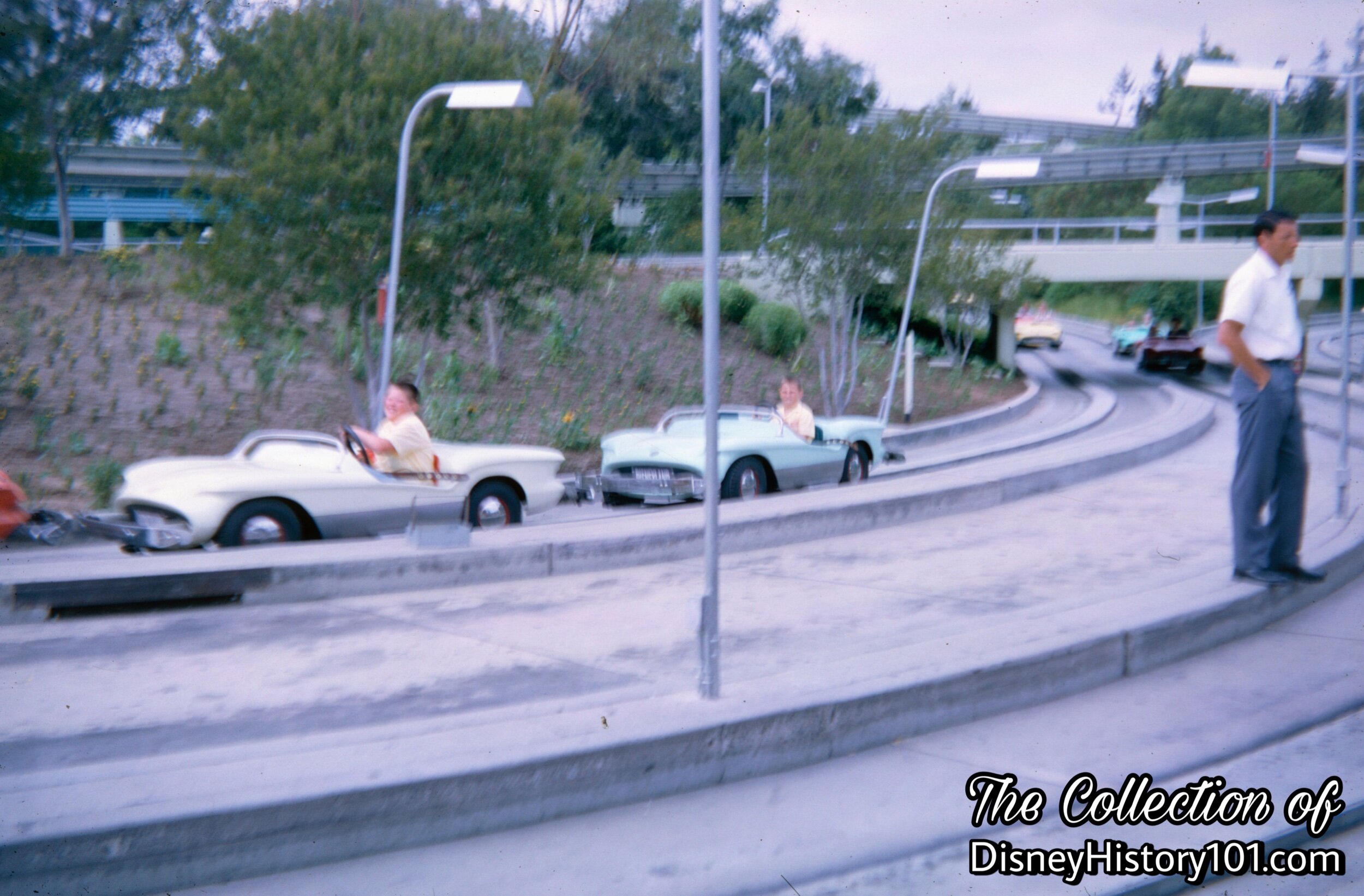
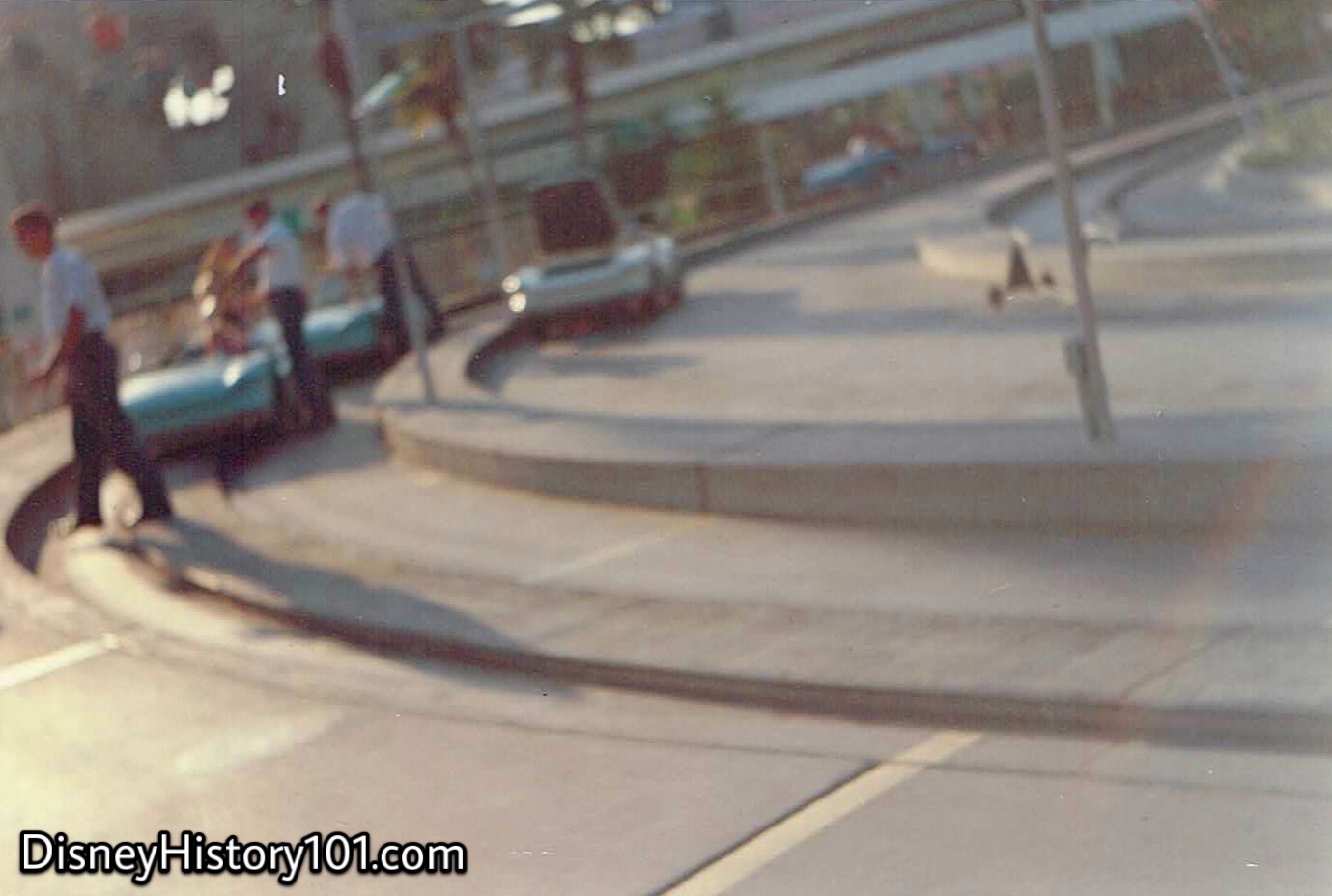
Autopia Mark VIs on the Tomorrowland Autopia, (1967)
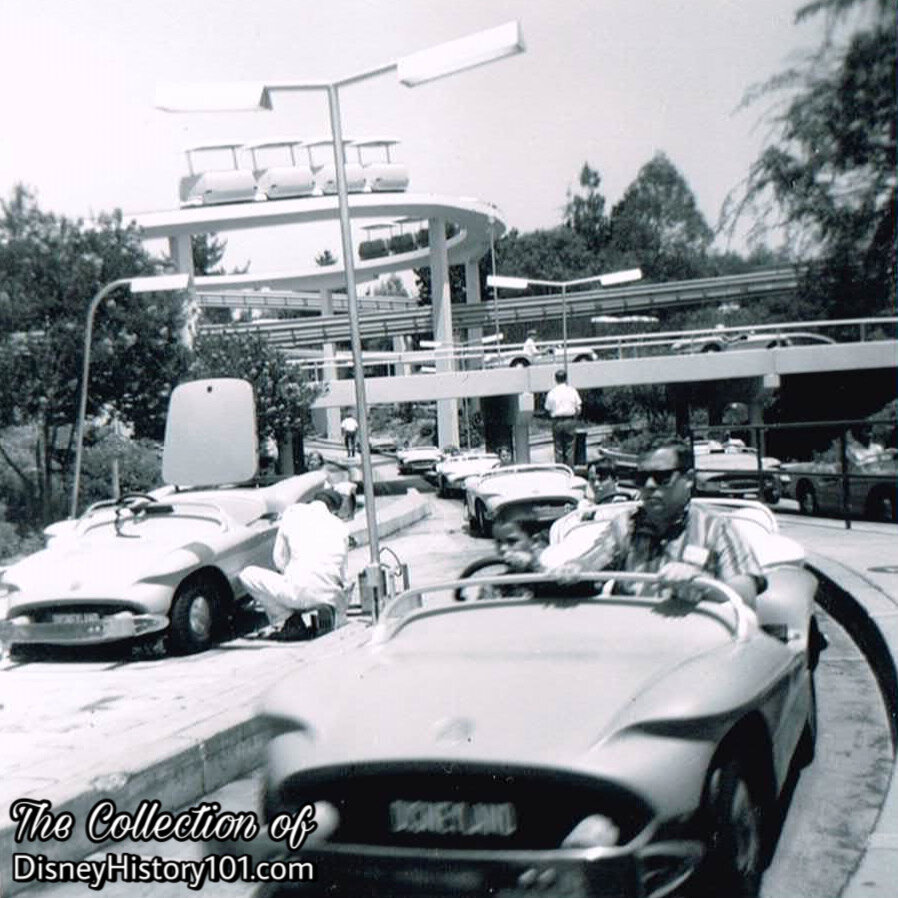
Autopia Mark VIs and The Super Autopia Freeway
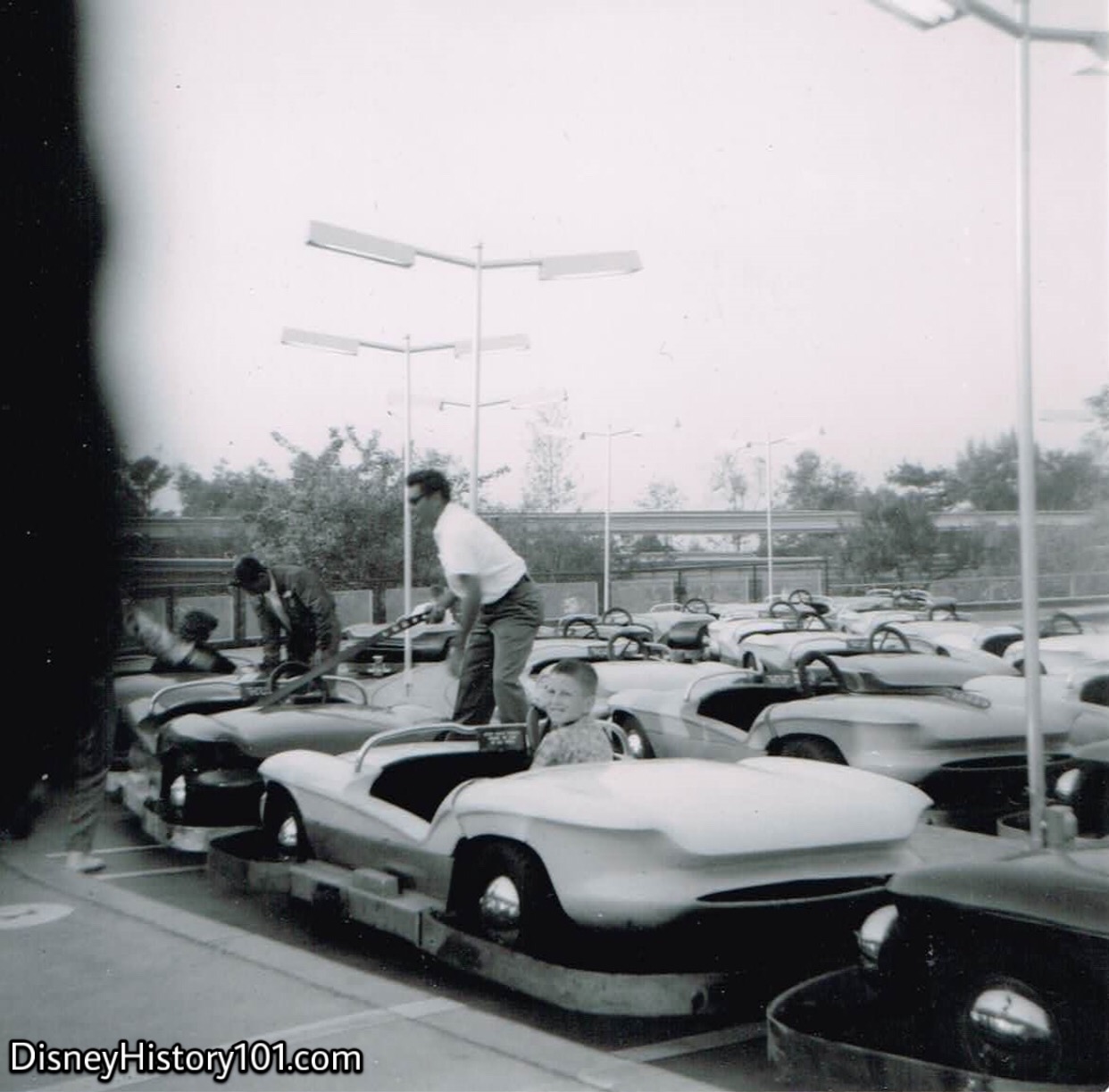
Autopia Mark VI and The Super Autopia Freeway
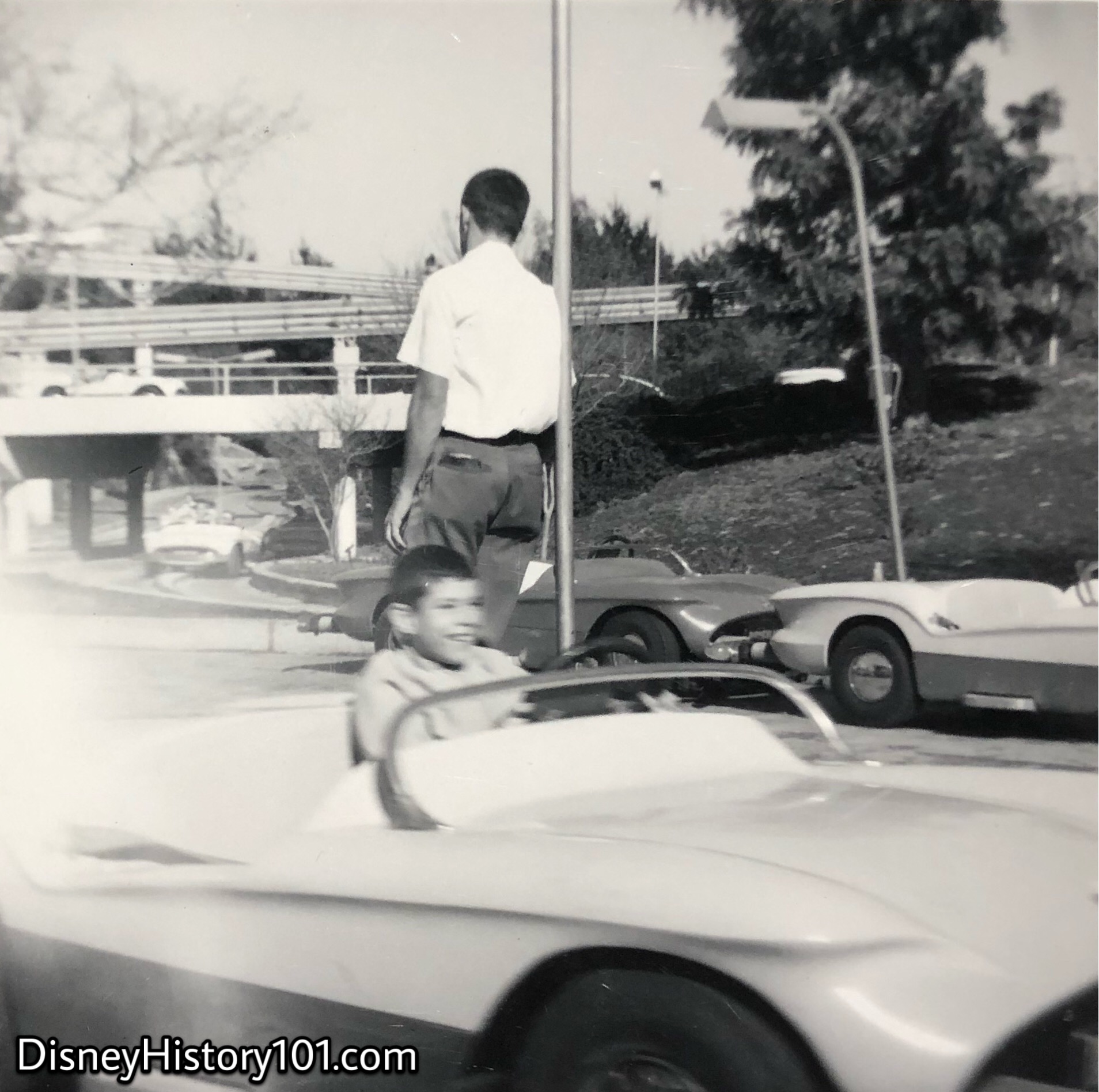
Autopia Mark VI and The Super Autopia Freeway, (January, 1964)
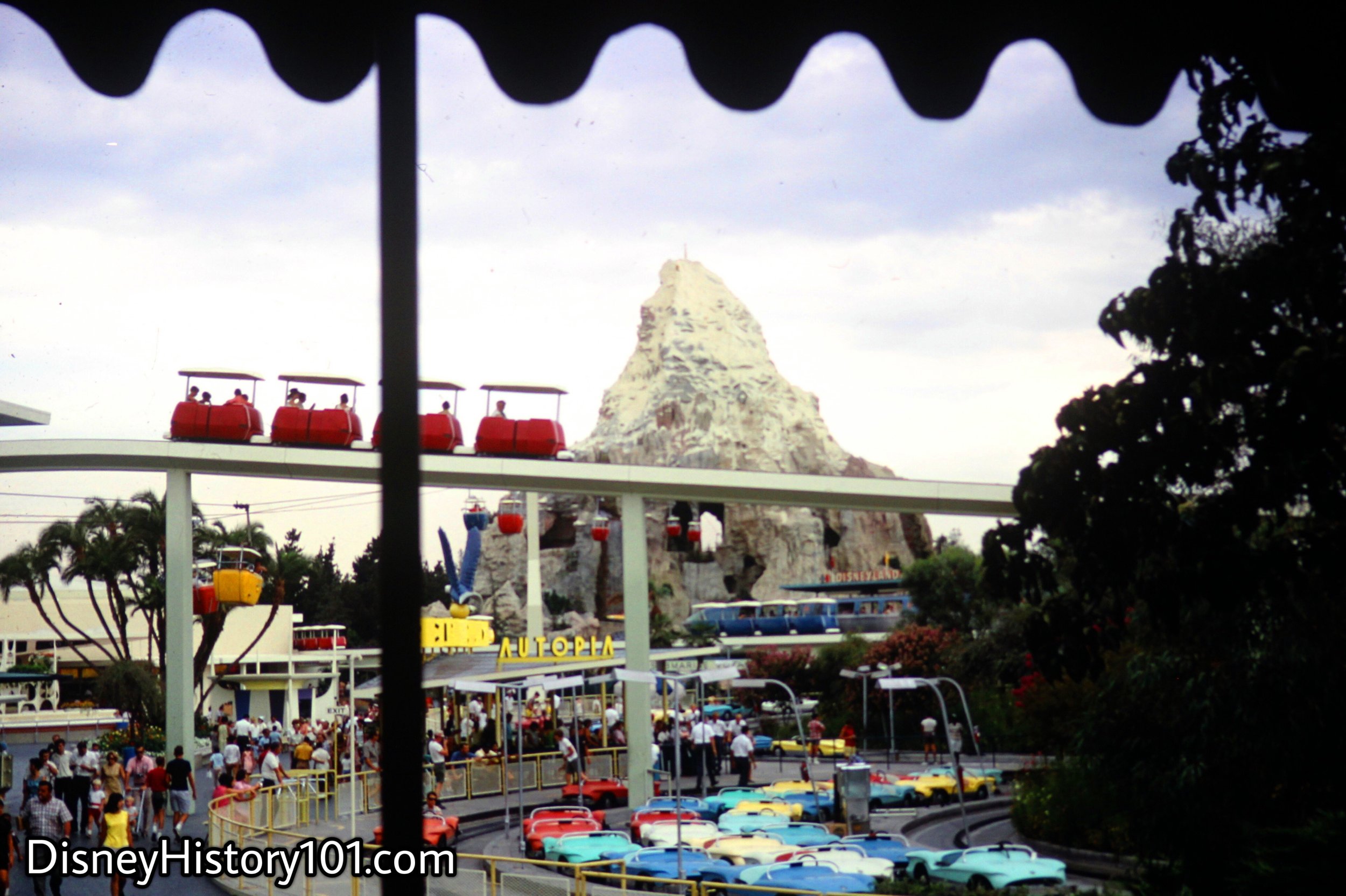
Autopia Mark VI
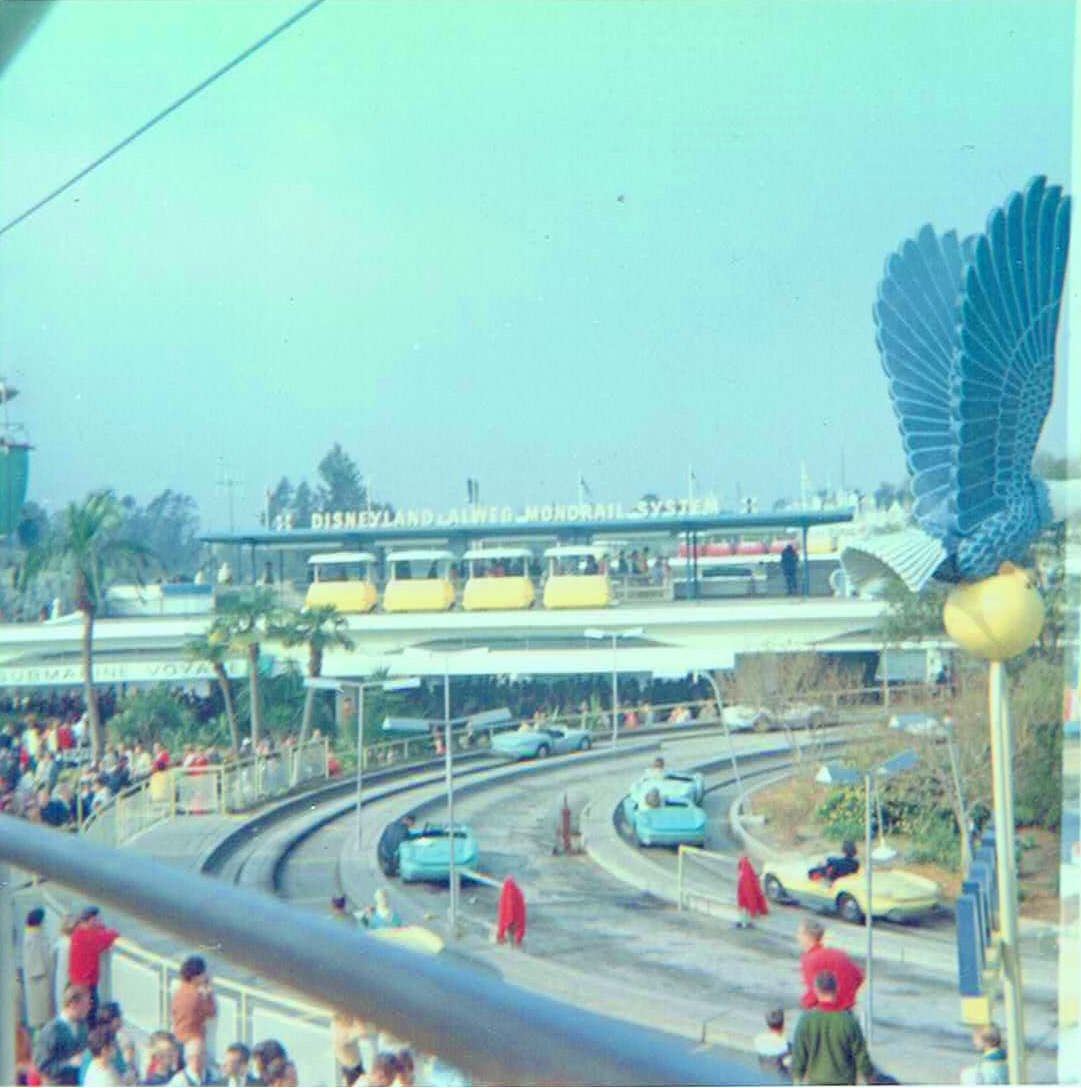
Autopia Mark VI, (1967)
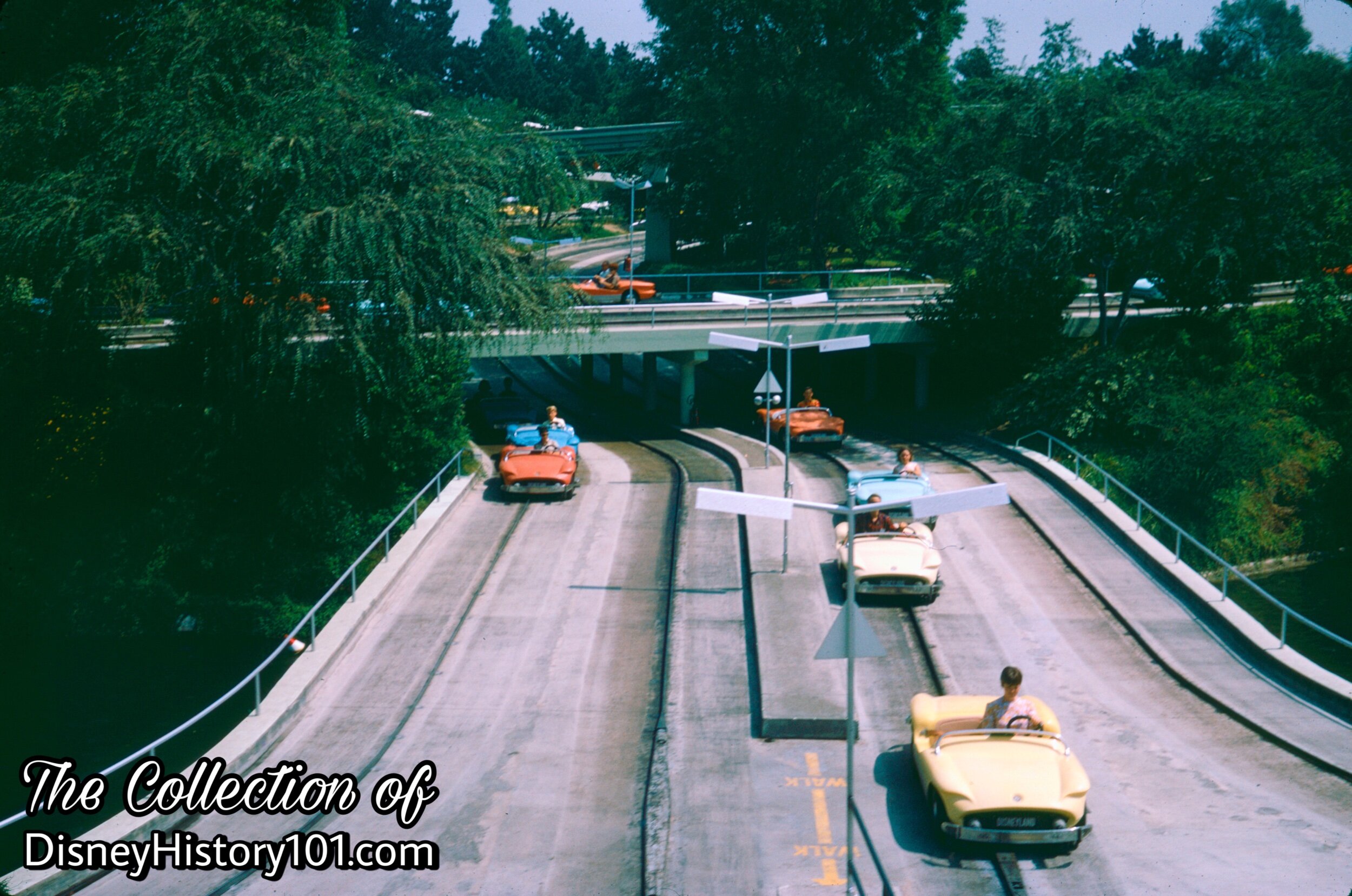
Autopia Mark VI, (1967)

Autopia Mark VI
The majestic Moonliner hull, and Skyway station were barely visible from some stretches of Tomorrowland Autopia’s wooded highway.

Autopia Mark VI, (August, 1966)
According to “Walt Disney Disneyland” (first published 1964), “Side by side with youngsters gaining their first experience behind the wheel of a real gasoline-powered automobile are the adults who usually grumble and fume about traffic on Southern California’s full-size freeways. They actually seem to enjoy joining the junior size traffic jams in scaled-down sports cars.”
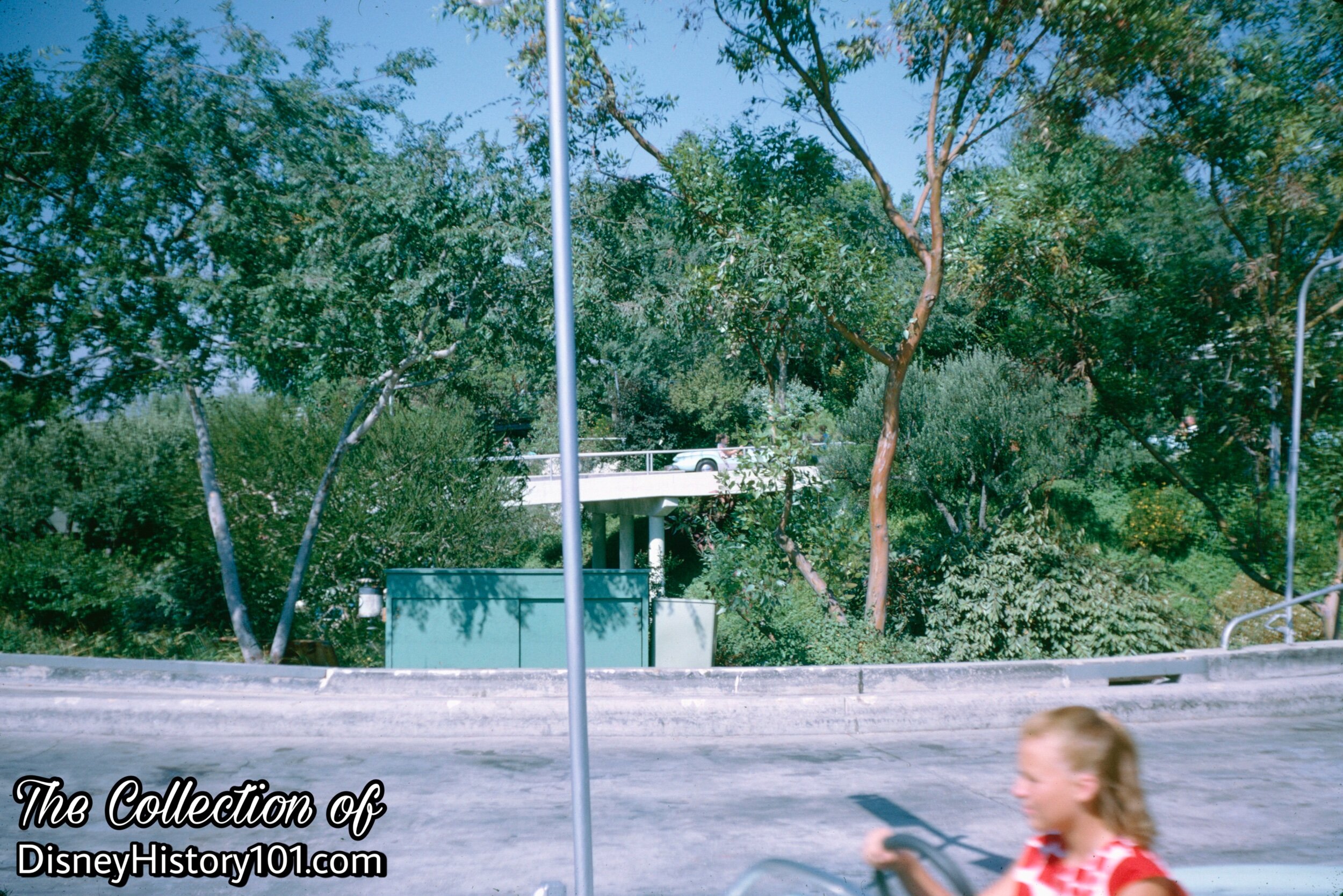
Autopia Mark VI, (August, 1966)

Autopia Mark VI, (August, 1966)
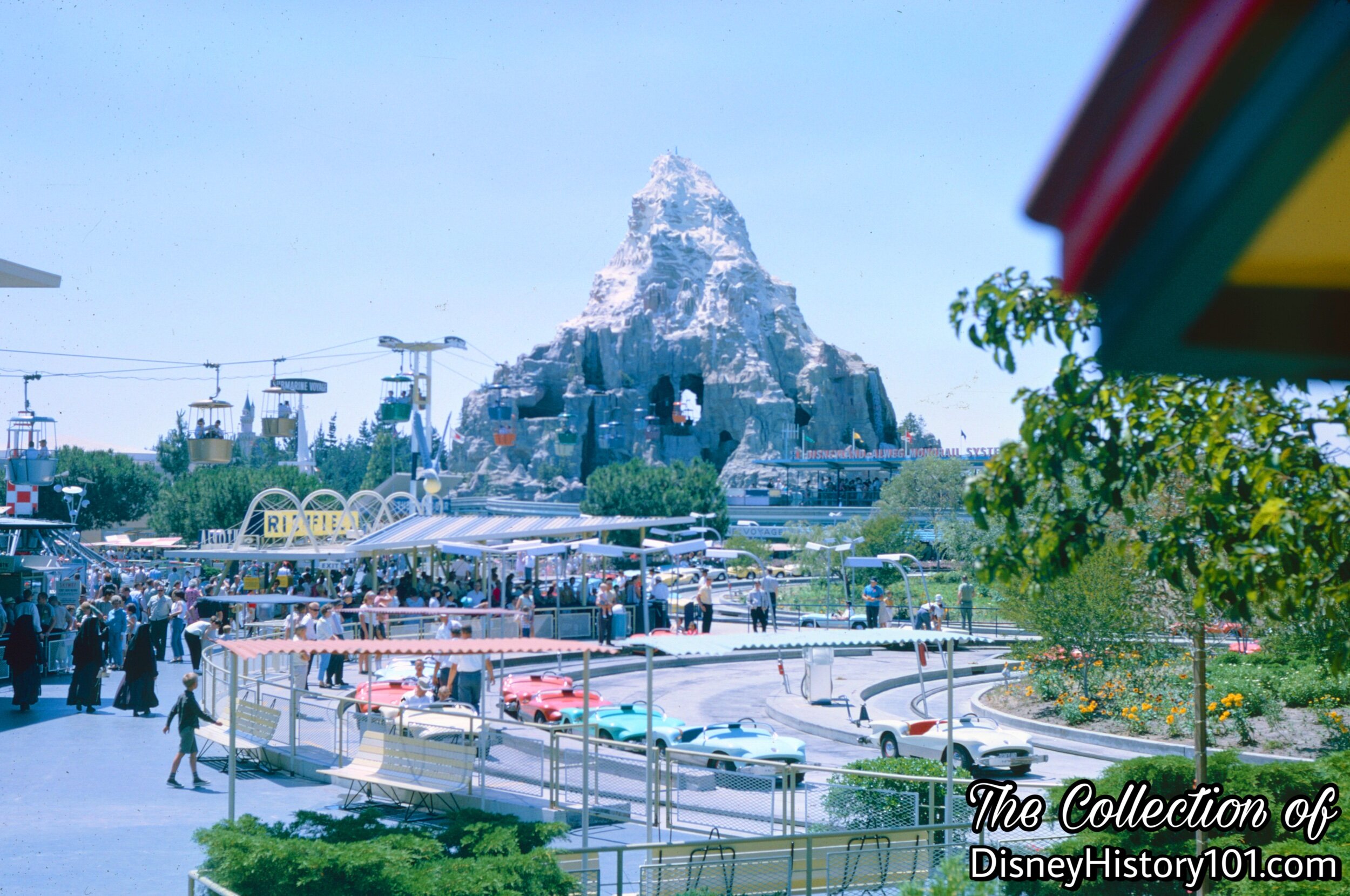
Autopia Mark VIs
Note the colorful new flowers!
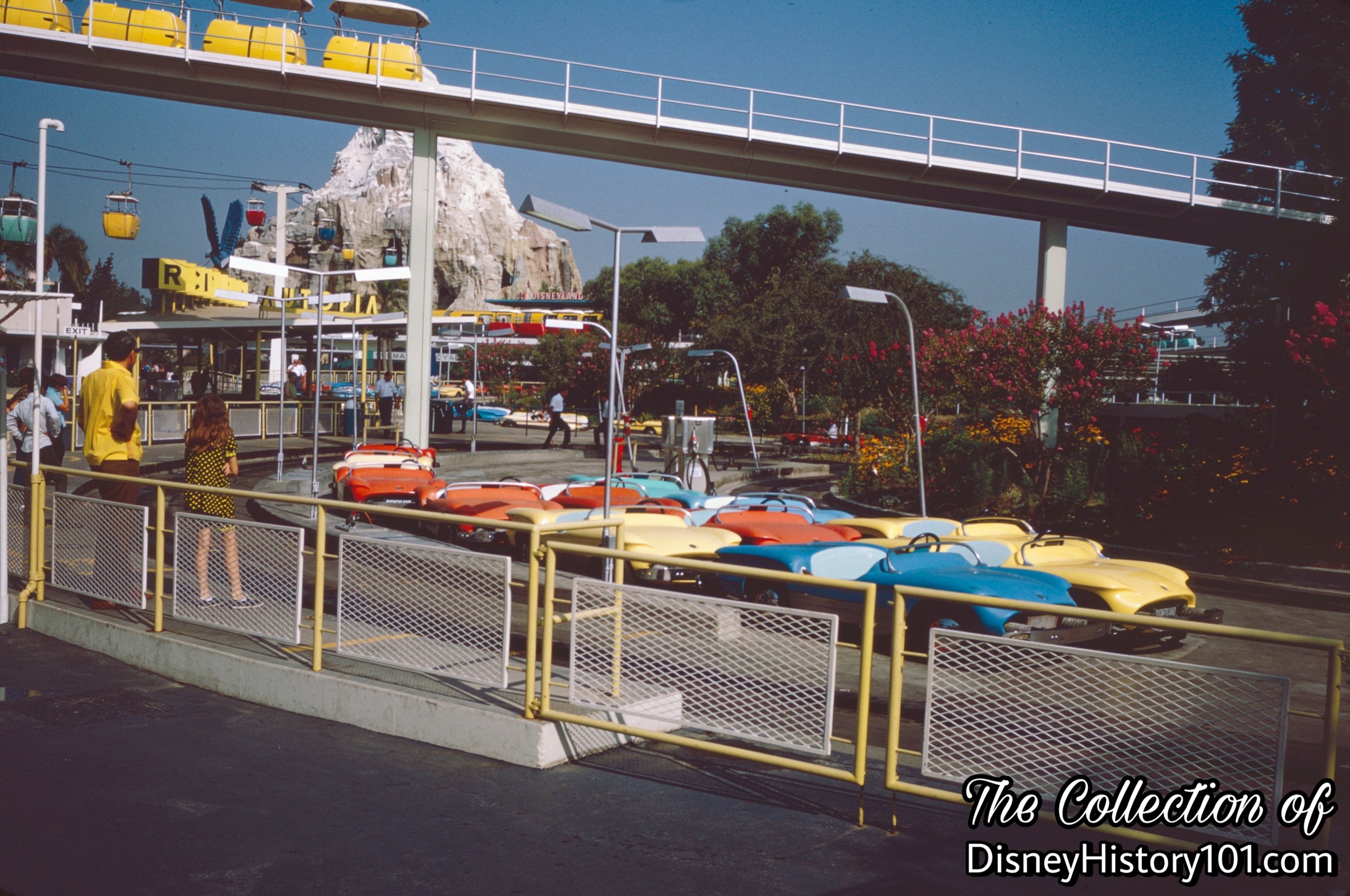
Autopia Mark VIs

(1967)
During late 1967, perhaps the most memorable (and most costly) of the Autopia Models were nearing completion - the Corvette Stingray-inspired Autopia Mark VII - at the cost of $5,000.00 each!
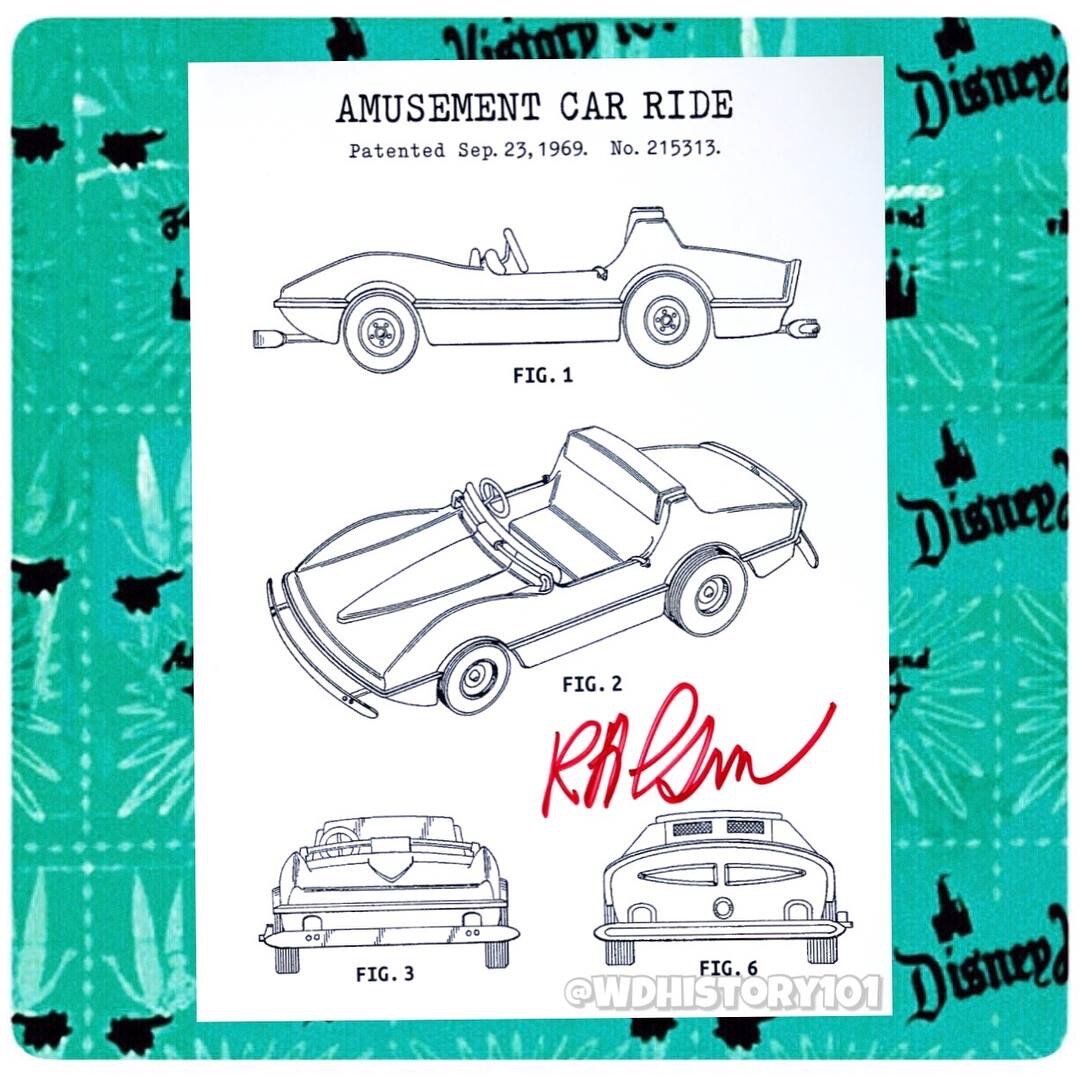
"Amusement Car Ride" (Mark VII), Patent No. 215313 Facsimile
Everything about them (appearance, seat padding, bumper cushions) was completely new, except for their 7 1/2 horsepower motors. These were manufactured by Arrow Development, to the specifications of Bob Gurr’s engineering renderings. The new vehicles weighed 1100 lbs. and had the average maximum speed of 6.2 miles per hour.
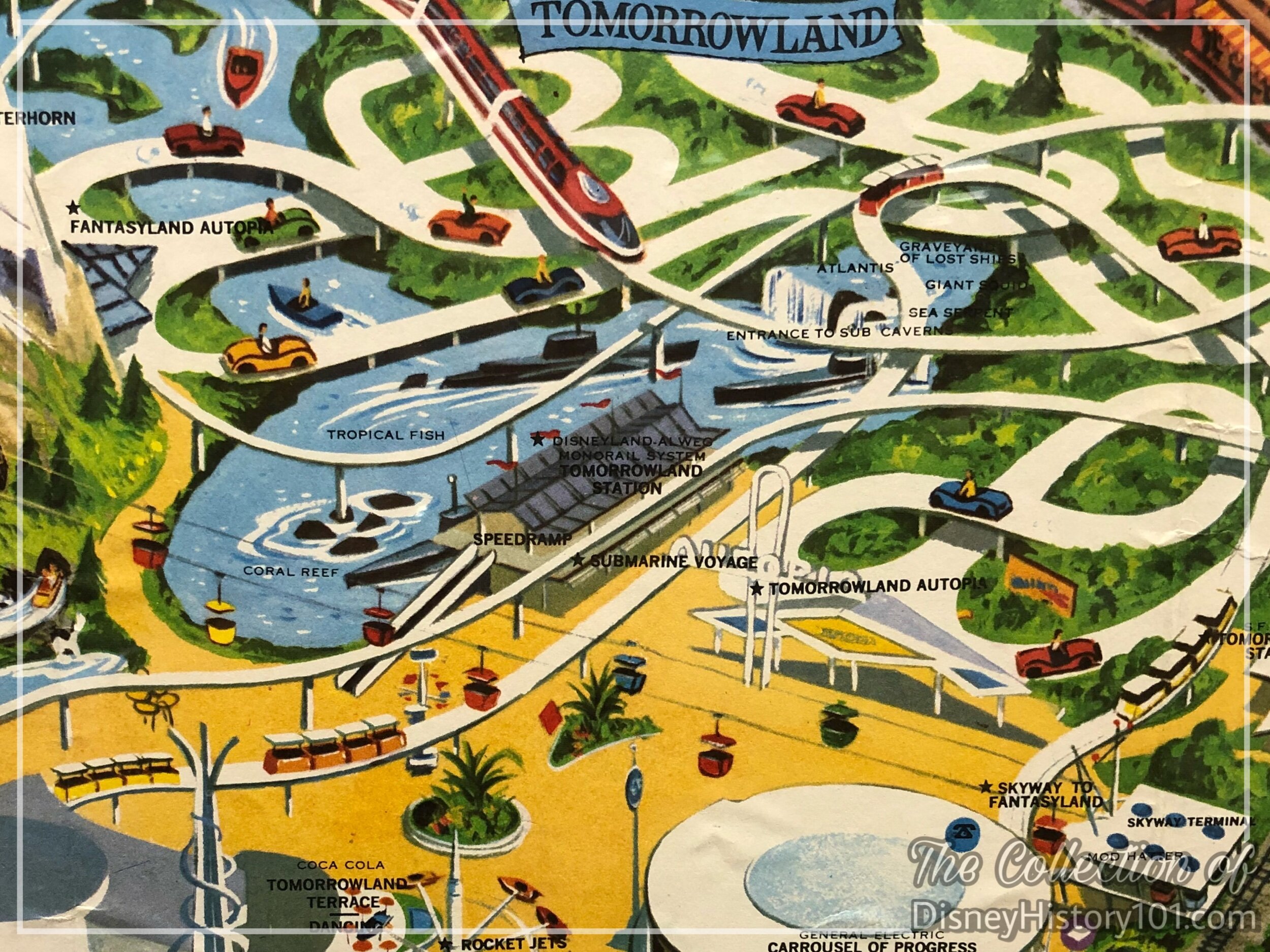
Tomorrowland Autopia and the Fantasyland Autopia depicted on a “Walt Disney’s Guide to Disneyland” Map Excerpt, c. 1968 - 1972
The following year (in 1968), the Tomorrowland Autopia track received a redesign (with lengths of 2,282 feet and 2,338 feet), where the Autopia Mark VIIs debuted. This was the last Autopia Model that the Richfield Oil Company would sponsor, as their Participation at Disneyland was discontinued during 1970. Soon, “Disneyland Attraction Time Studies” for 1968 revealed:
A total Theoretical Hourly Capacity of 1,796 (at 2 guests per unit),
An Instantaneous Capacity of 72 guests per track,
An Audience Control Capacity of 307,
Cycle Times of 4:44 and 4:50
Unload Time of :09
Load Time of :07
Ready Time of :16
Trip Time of 4:12 and 4:18
Dispatch Interval of :08
Trips Per Hour at 450 and 448
The Autopia had a Legacy in the Grand Prix Raceway in the Magic Kingdom at Walt Disney World. As late as 1971, Disneyland still had a junior autobahn for shorter guests, and senior autos for guests taller than four feet. And yet, these models would have the most longevity of any (despite the Autopia car usage cutbacks, during the gas conservation of 1979). At first, these durable (and brand new) Autopia Mark VIIs cars would just run the course of the Tomorrowland Autopia, continuing to do so for a little over three decades (1968-1999). During that time, these sleek automobiles would delight and excite three generations of guests!
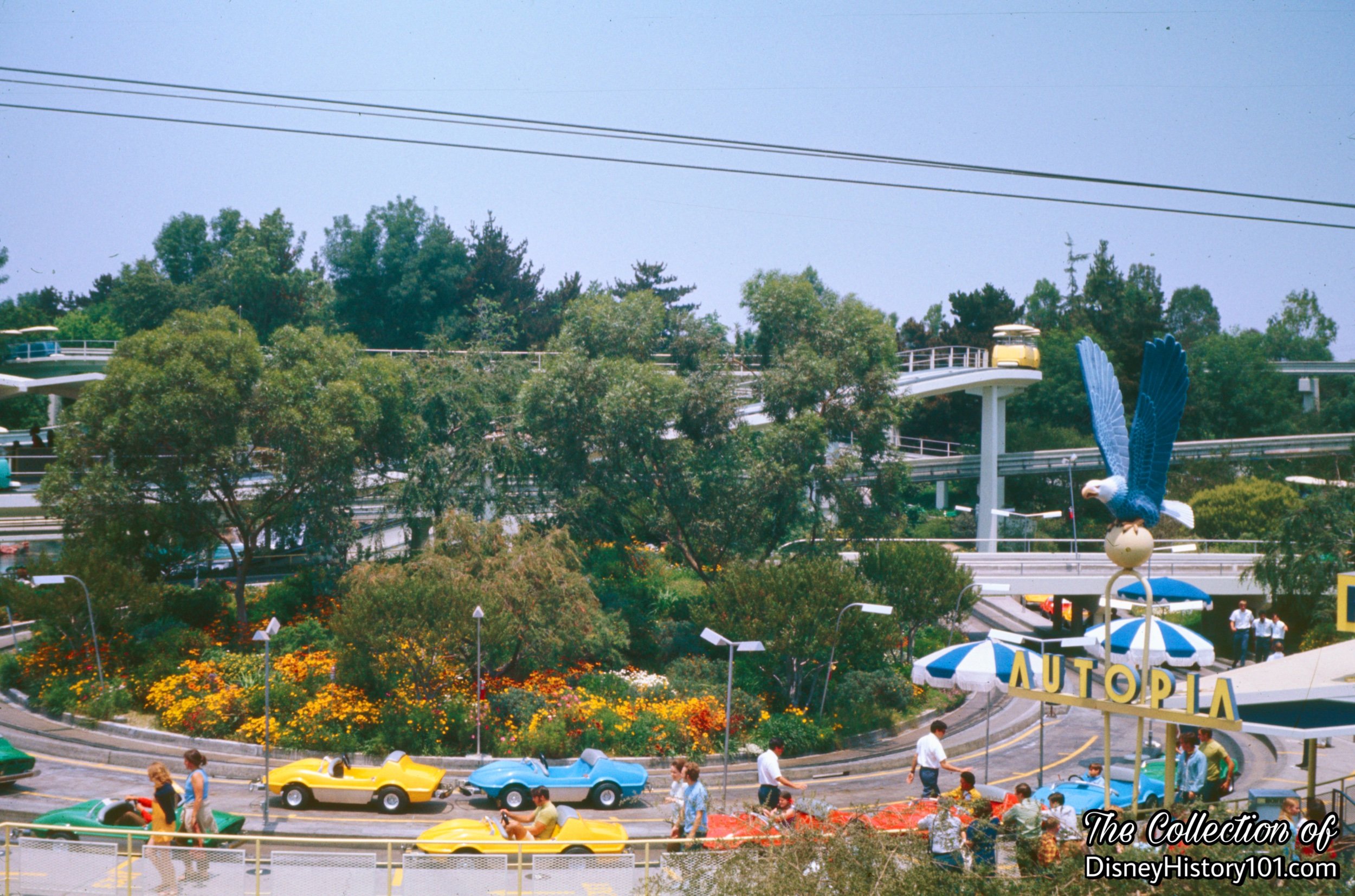
Autopia Mark VIIs
According to Bill Evans (“Walt Disney Disneyland World of Flowers”): “Crape-myrtle trees line the Autopia free-way, with lantana and gloriosa daisies planted in the dividers. Bermuda, or "devil grass, a common scourge in California, soon invaded the rolling terrain of the Autopia setting. We have been obliged to accept, in fact pamper, this problem child.”
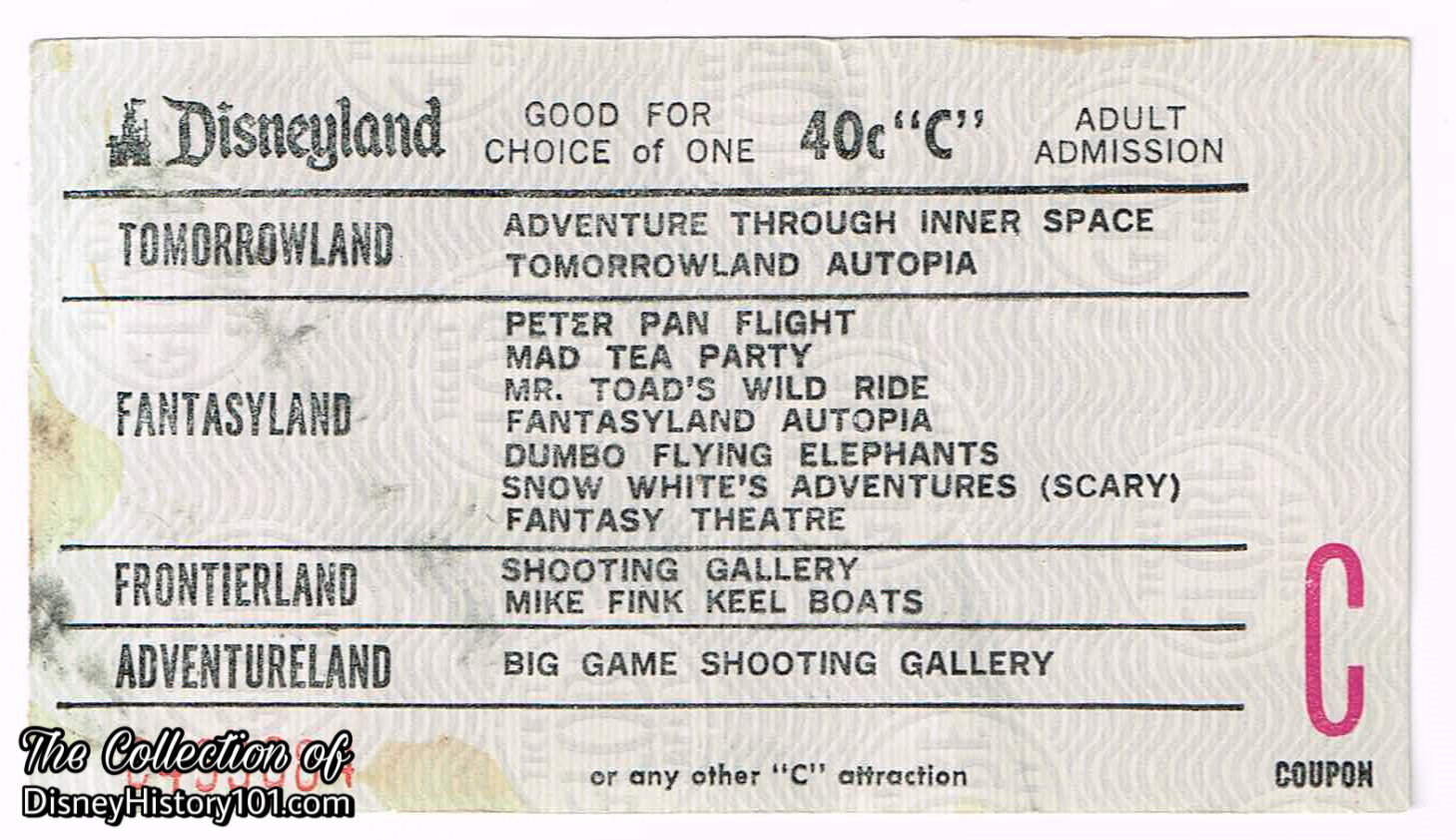
Disneyland Adult “C” Attraction Coupon (40¢ Value)
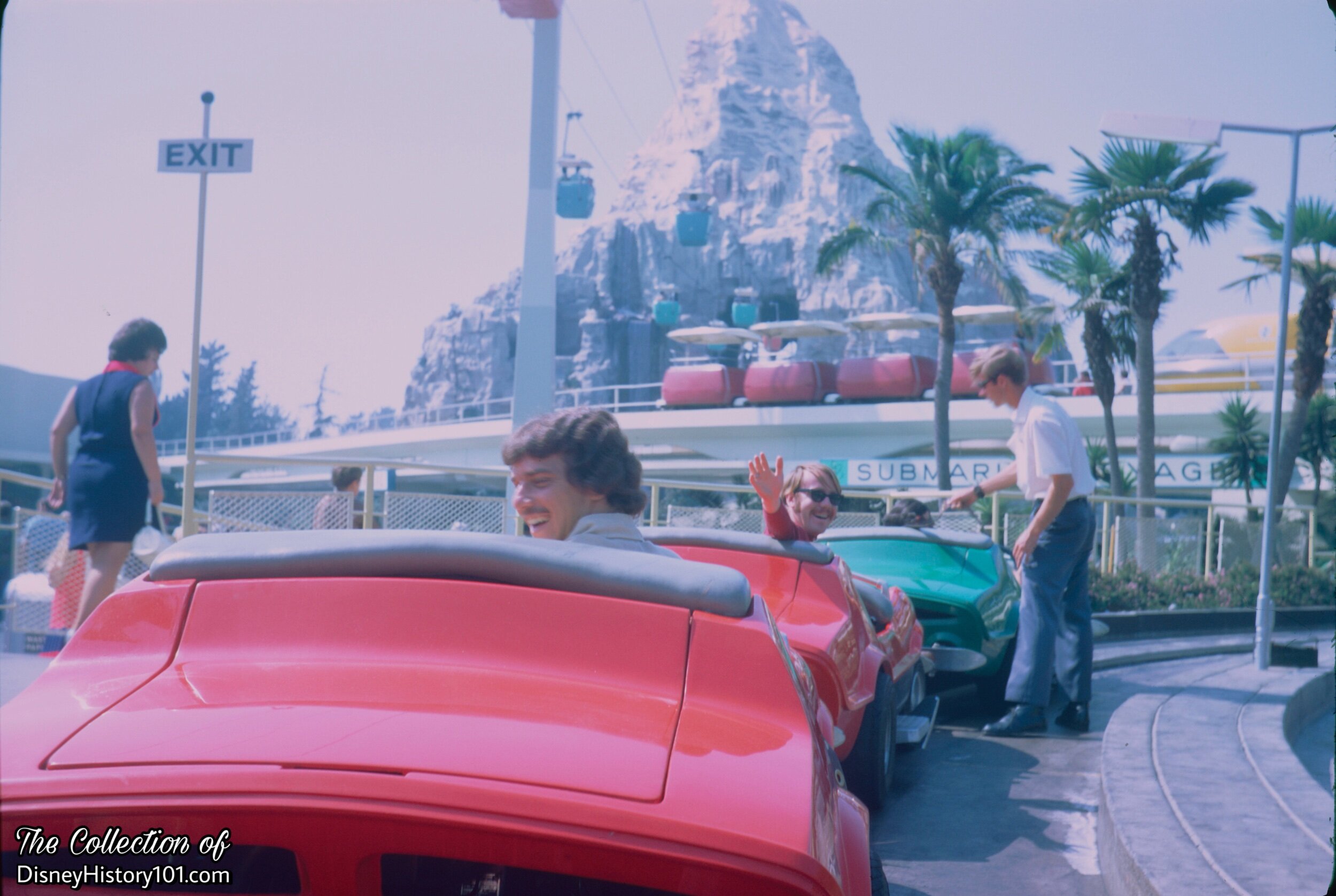
Mark VIIs, (c. September, 1970)
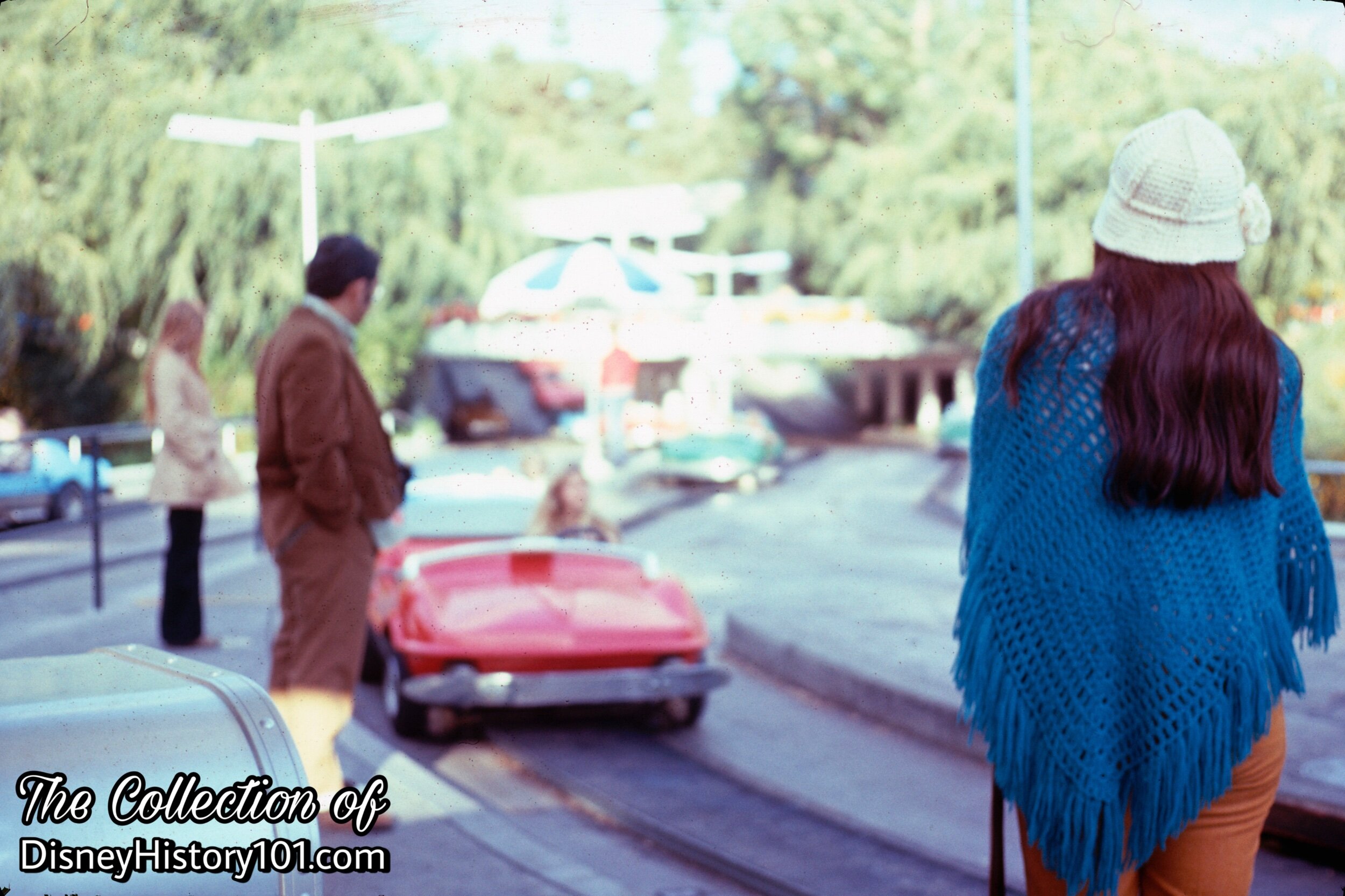
Autopia Mark VII, (1971)
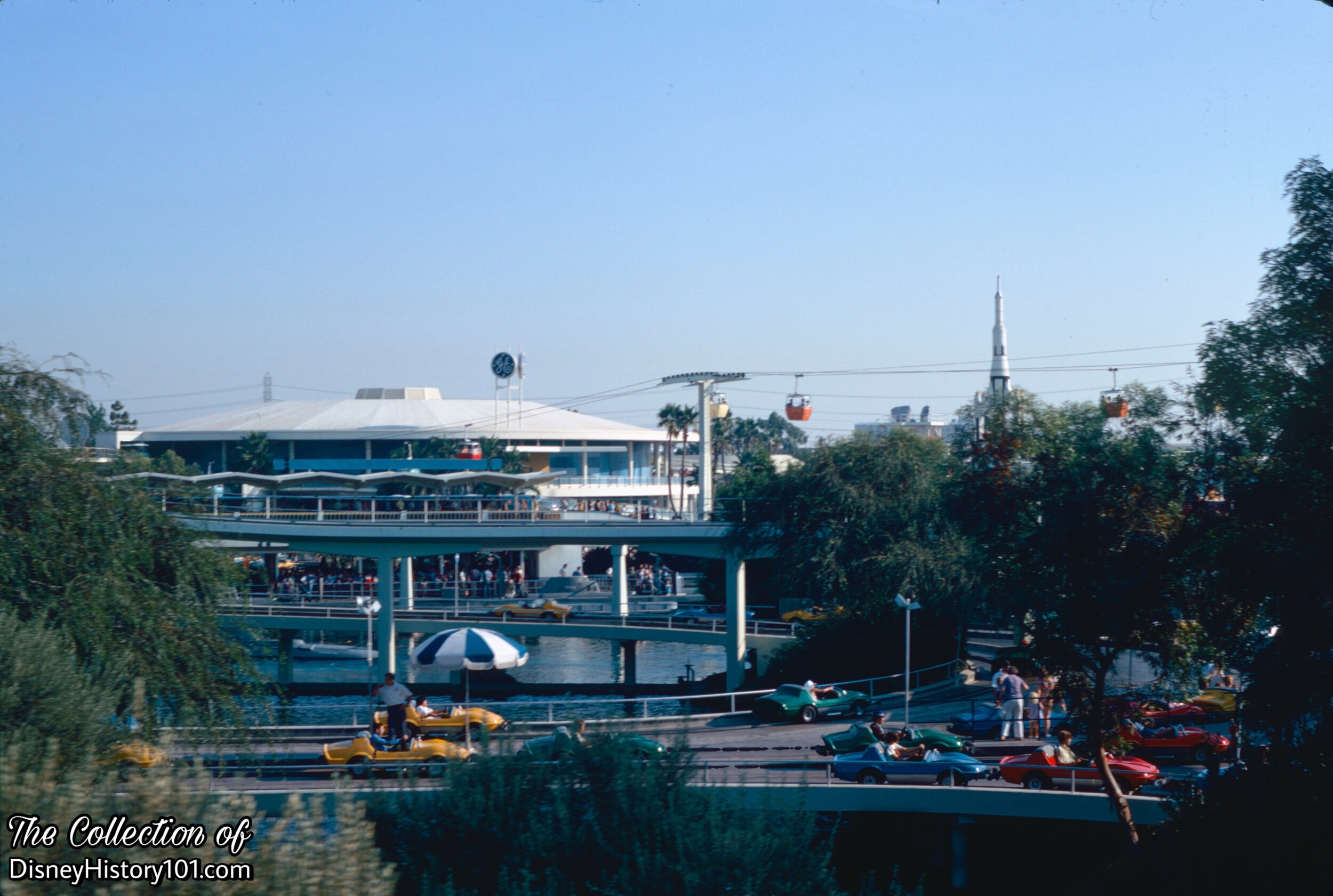
Tomorrowland Autopia, (1971)
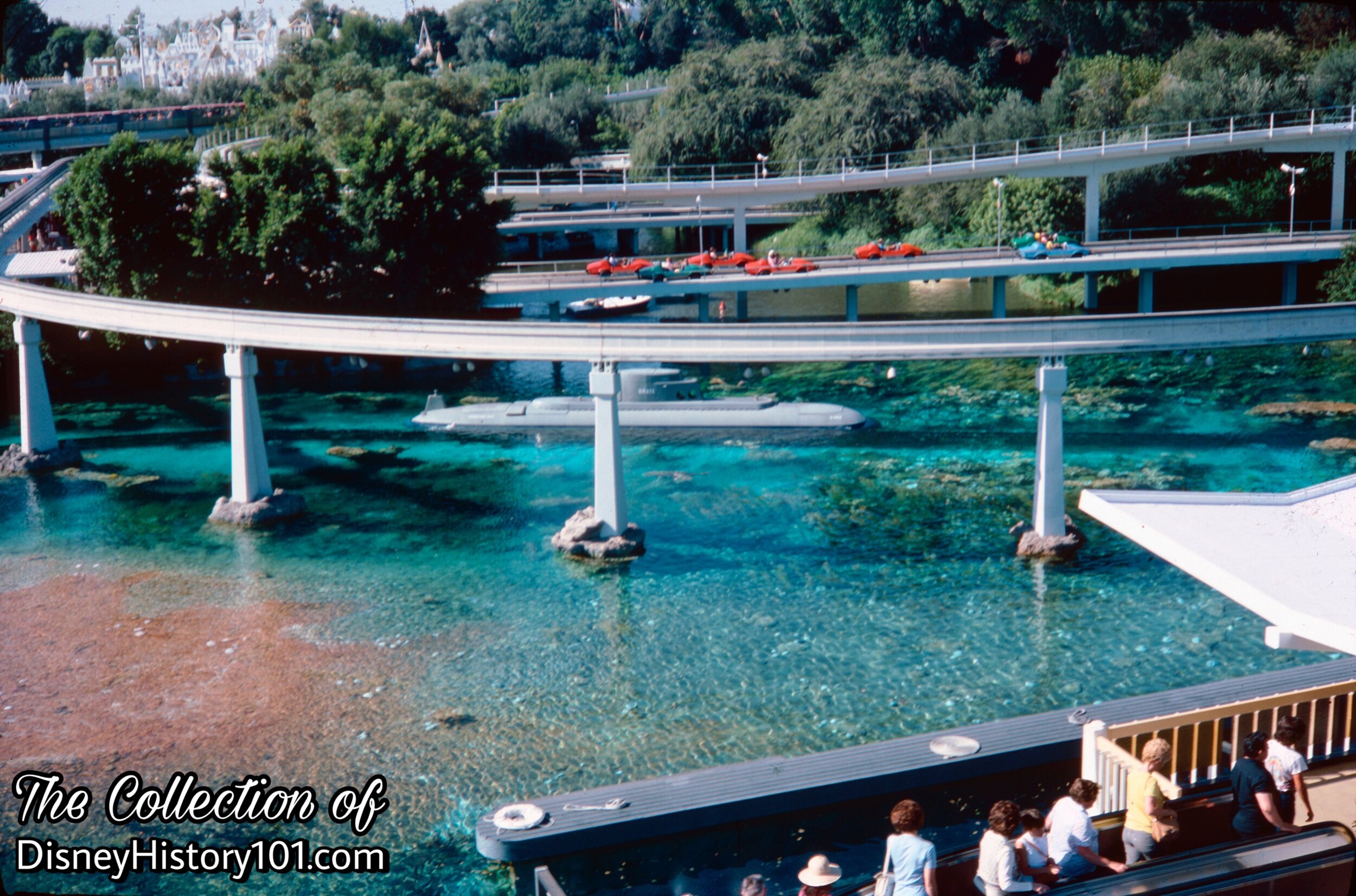
Tomorrowland Autopia
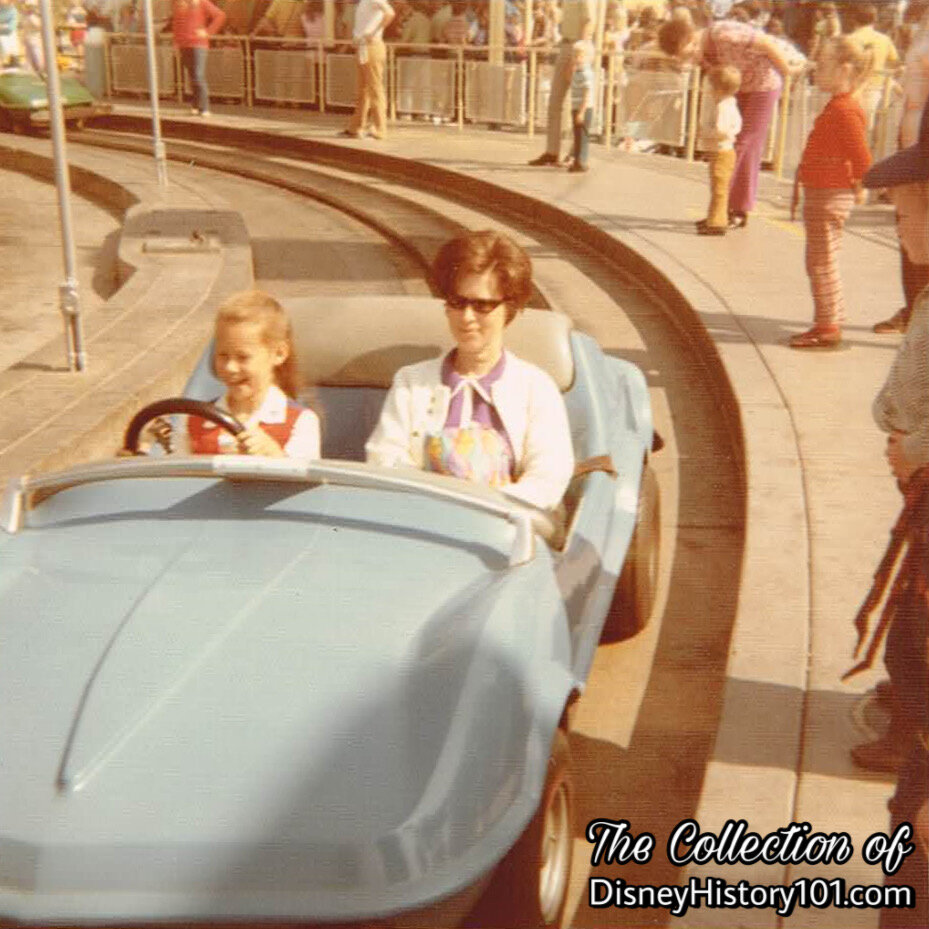
Autopia Mark VII, (1972)
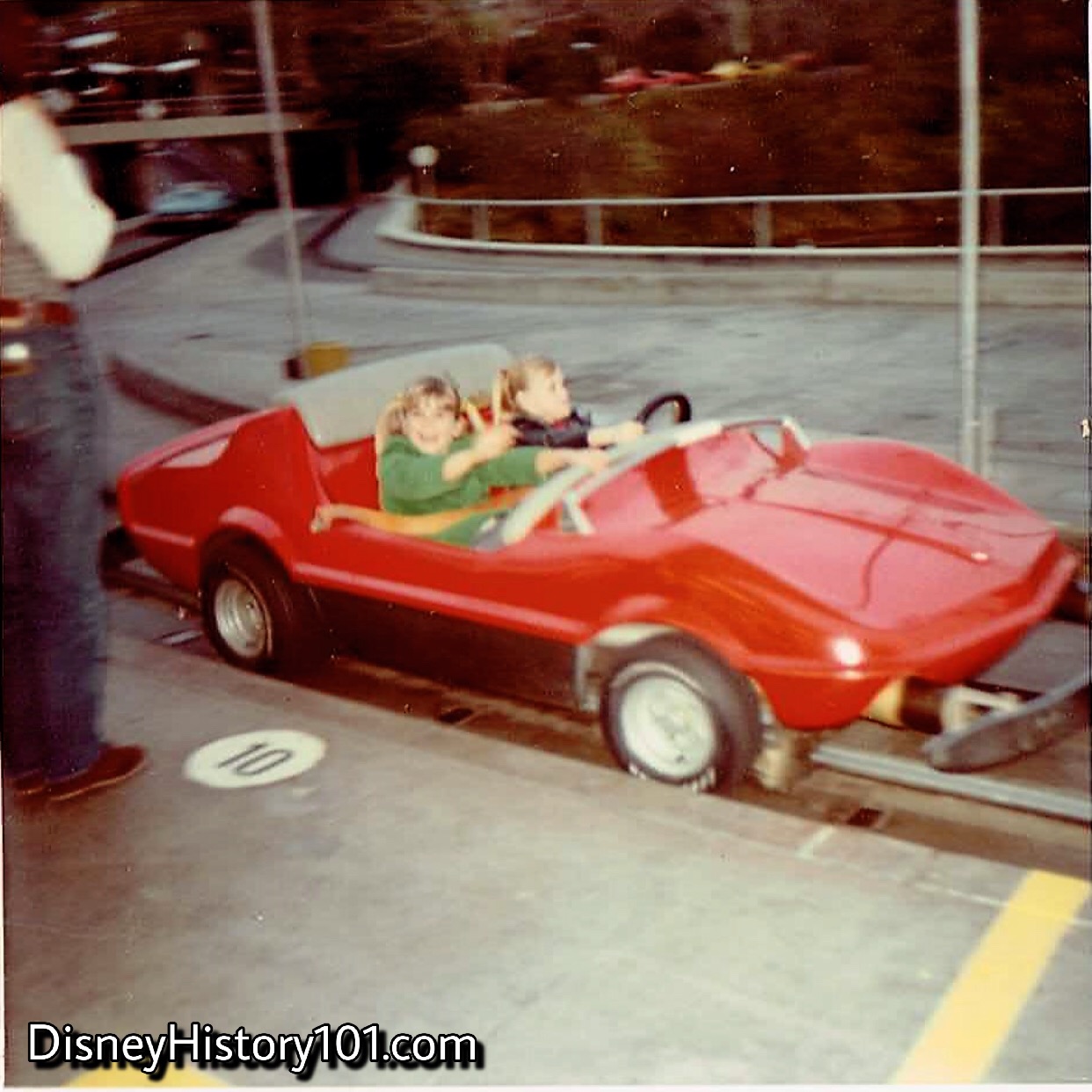
Mark VII on the Tomorrowland Autopia, (1972)
As aforementioned, (during 1967) perhaps the most memorable of the Autopia Models was released - the Corvette Stingray-inspired Mark VII. Though Richfield Oil Company had discontinued their sponsorship of this attraction during 1970, these models would have the most longevity of any model - continuing to run along the Tomorrowland Autopia until 1999.
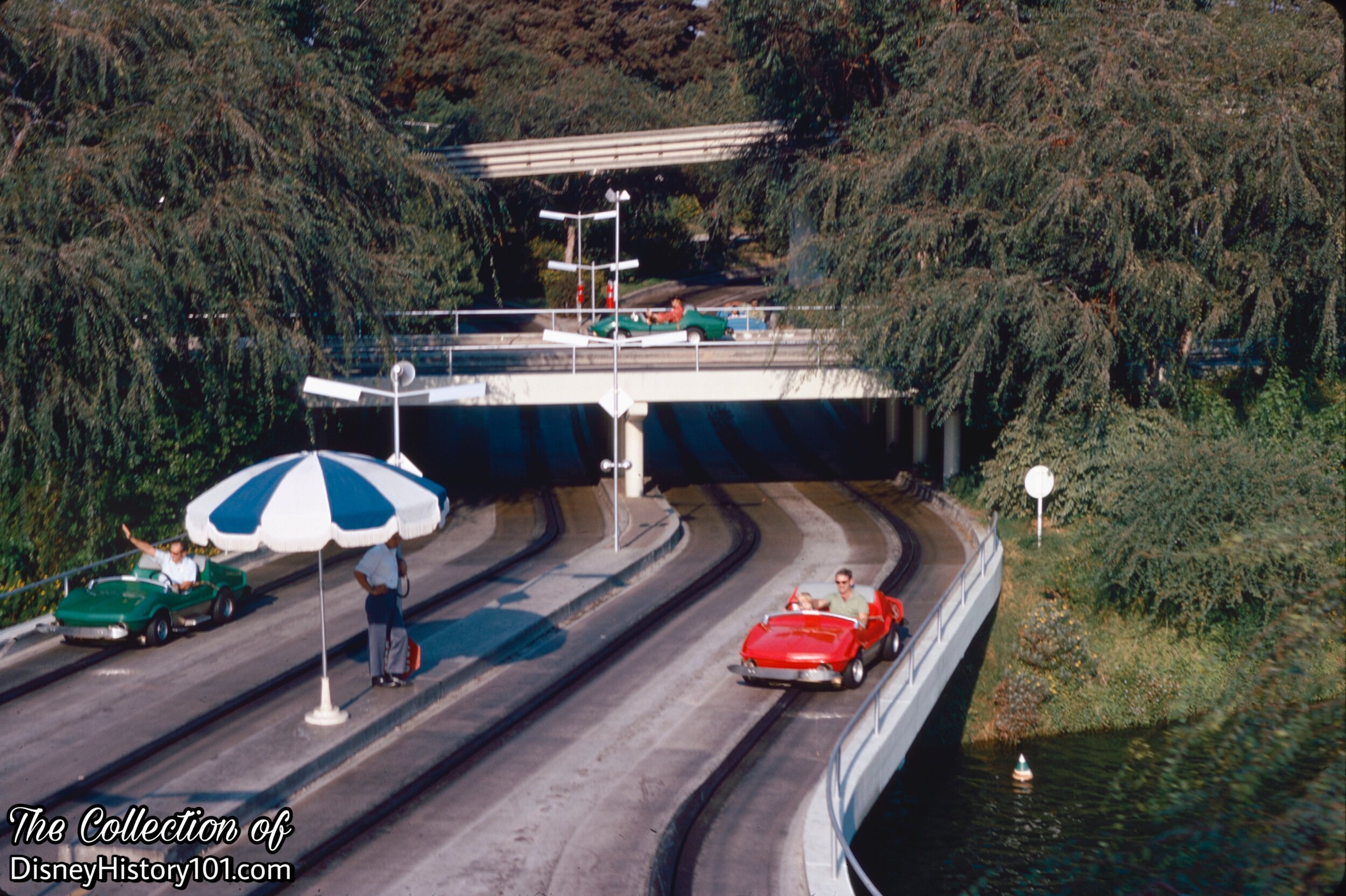
Mark VIIs on the Tomorrowland Autopia, (November, 1972)

Mark VIIs on the Tomorrowland Autopia
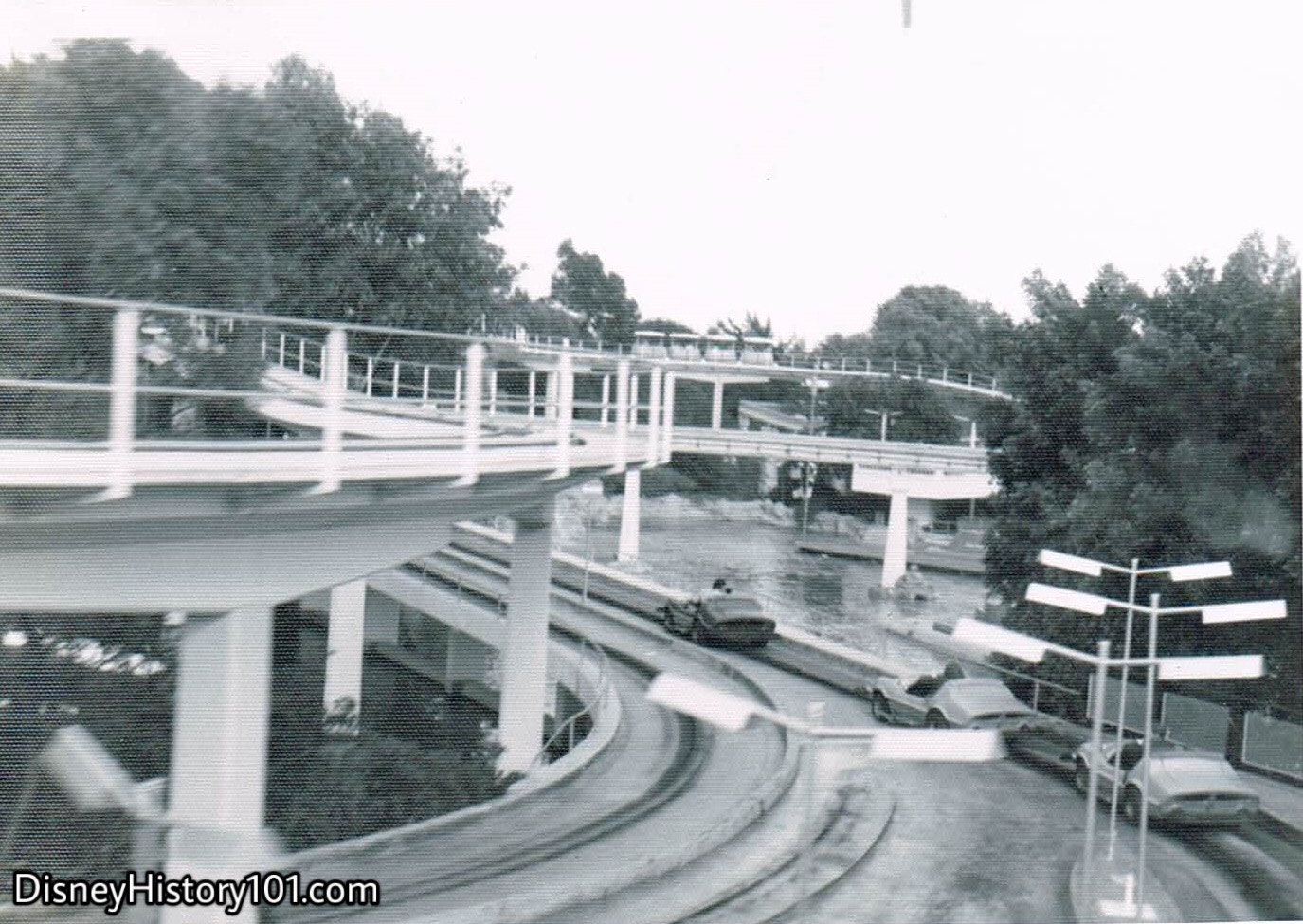
Mark VII on the Tomorrowland Autopia, (1975)
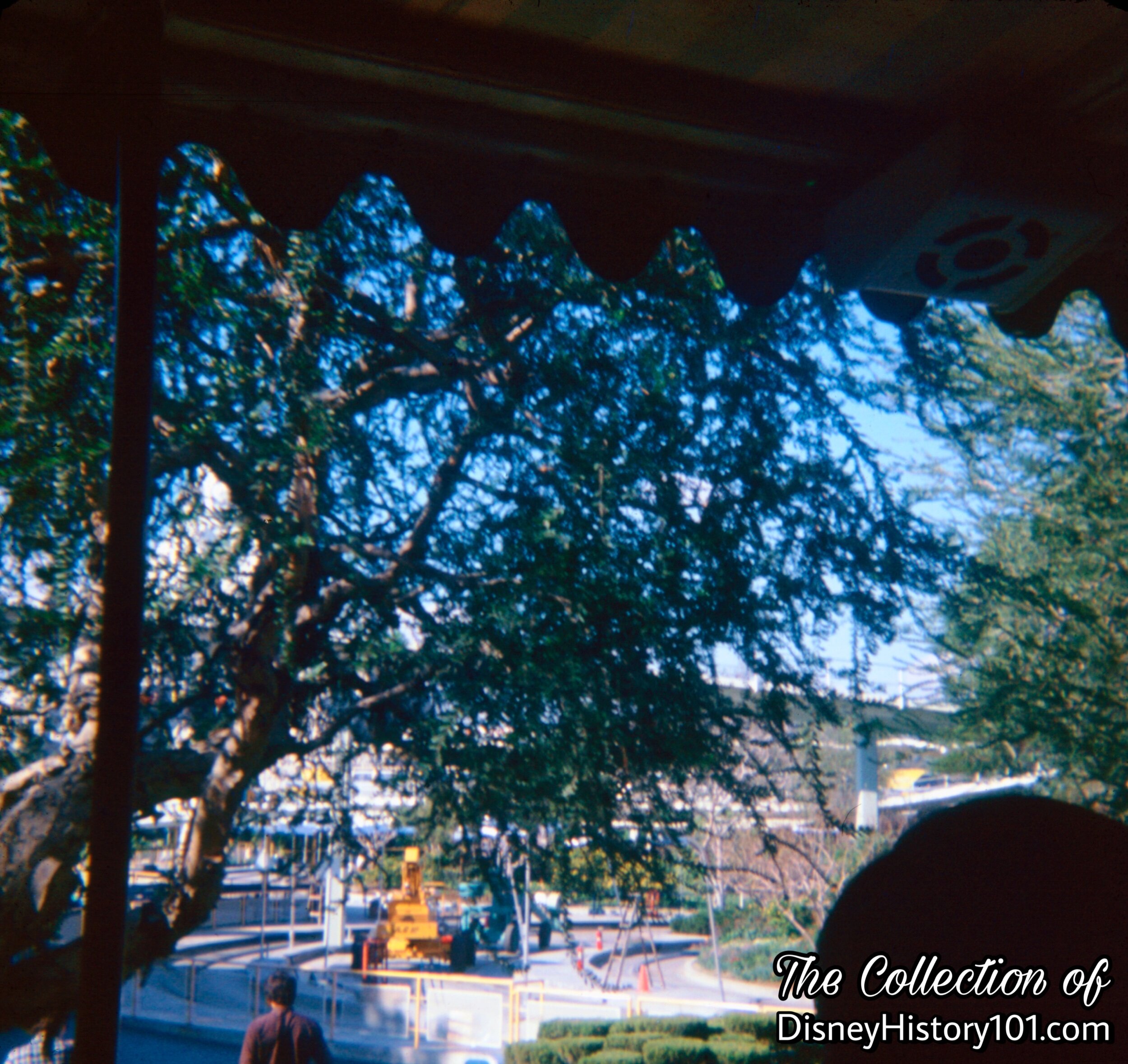
Late 1976 / January, 1977
By 1976 - 1977, the vehicles had driven some 17,000 miles. Some of the fleet of 159 Autopia cars were being serviced at the Disneyland Service Garage (also called the Autopia Garage). By about 1989, there were nine mechanics performing this duty. There, the vehicles received daily maintenance and cyclical rehabilitation. Autopia cars and the many units of rolling equipment were also an anticipated part of the job of the welding department. Each year, a total of 36 (of the 159) cars were stripped down to bare parts and rebuilt as a brand new vehicle with new parts.
Refurbishment work has much impact on the Guest experience. The bodies were repaired by the Staff Shop, then sent to the Paint Shop within the Cycle Shop where staff would refurbish the body with a new coat of paint. Meanwhile, a little road work was occurring along the lanes of the Tomorrowland Autopia and we encounter a Visual Intrusion - equipment left in the Guests ‘ view.
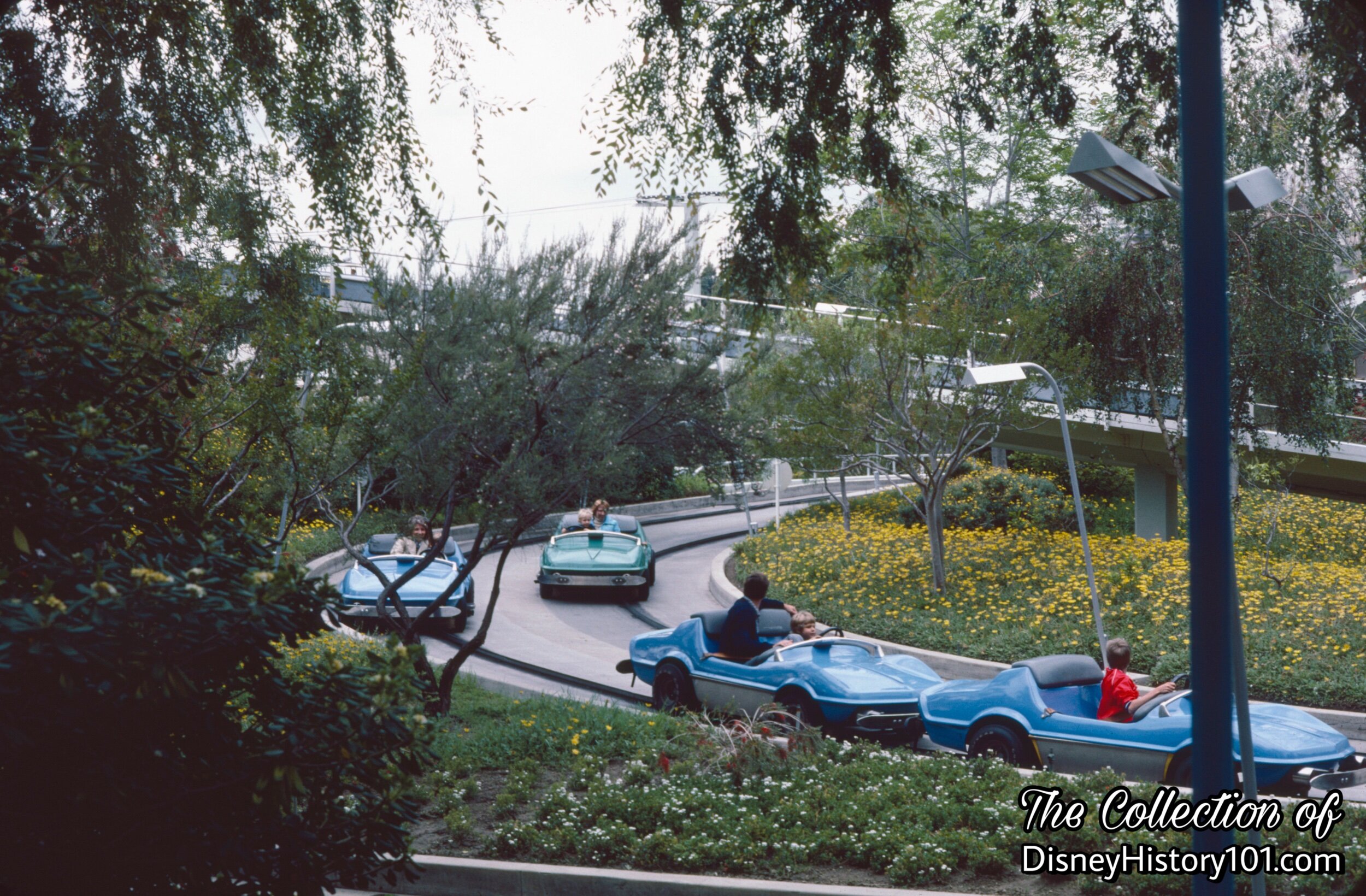
Autopia Mark VIIs and Autopia Freeway, (1977)
“The Autopia, freeway of tomorrow which winds through a section of Tomorrowland, and at one point runs parallel to the train track, is landscaped with jasmine and crape myrtles.”
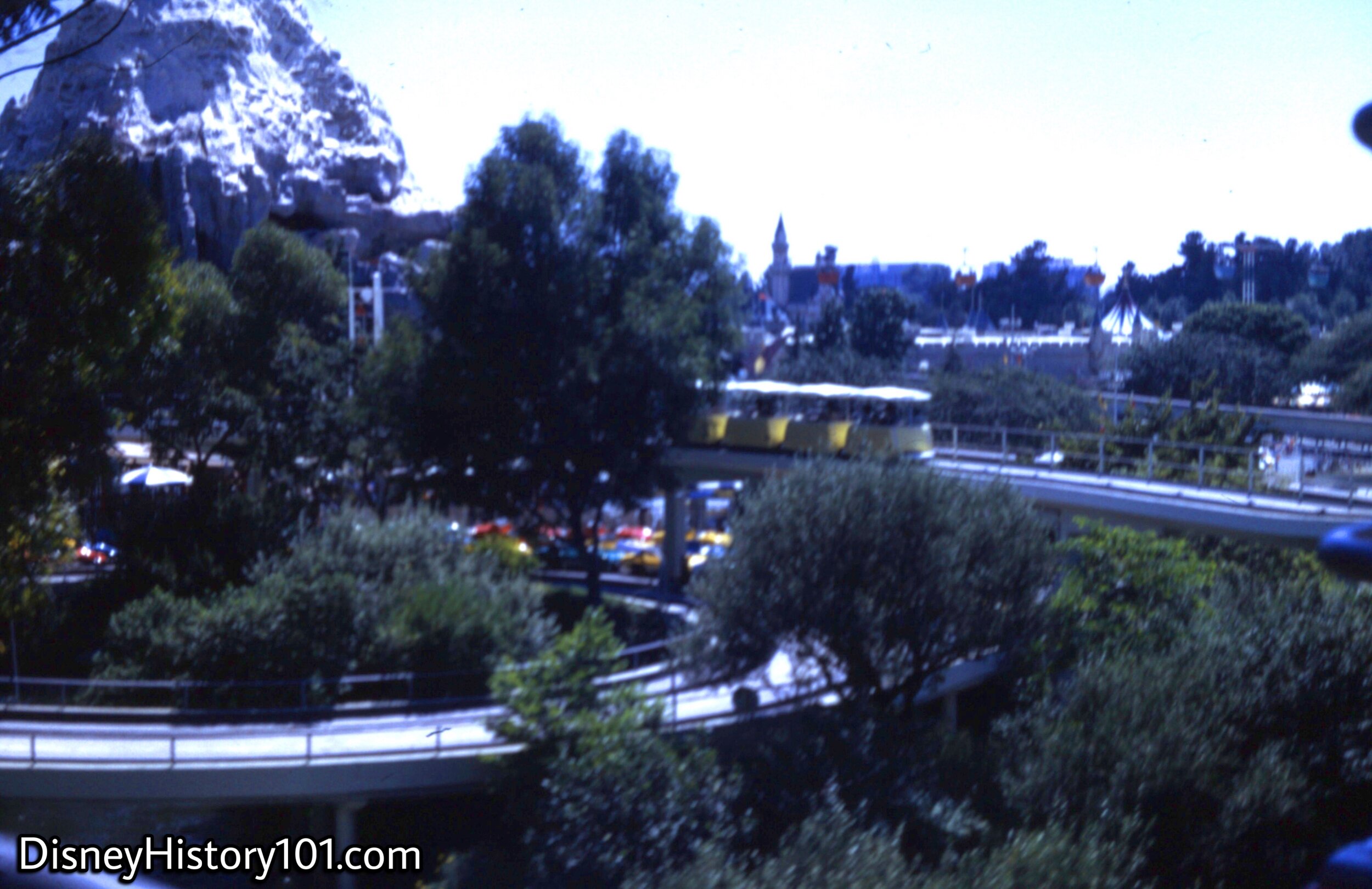
Autopia, (1977)
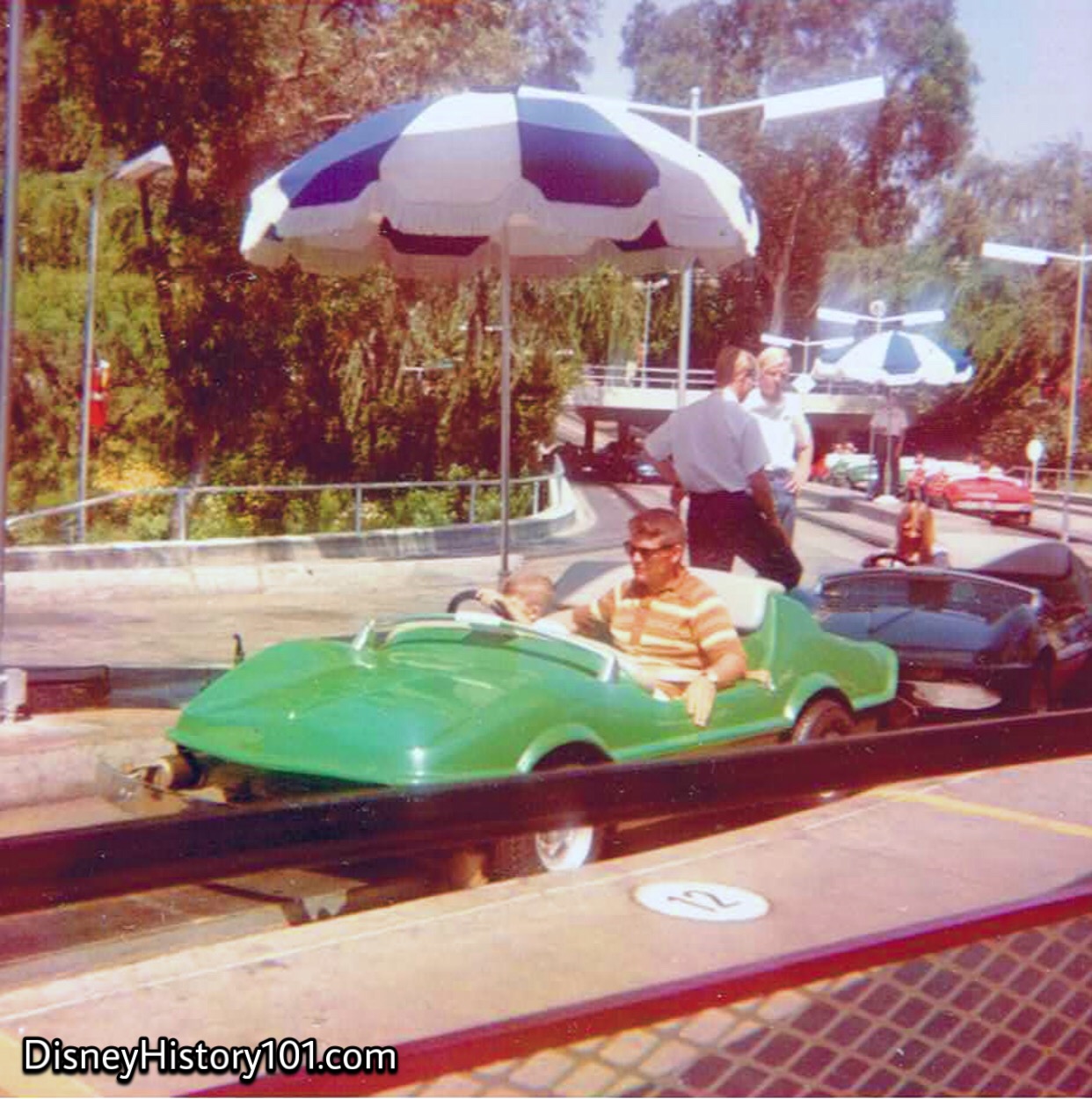
Mark VIIs on the Tomorrowland Autopia

Mark VIIs on the Tomorrowland Autopia, (1978)
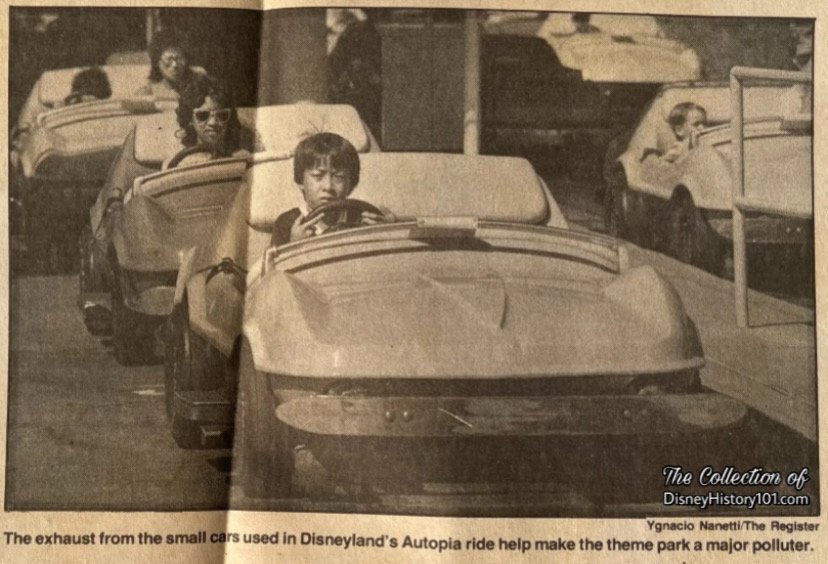
This photo appeared in the article “4 Major Industrial Air Polluters in the County,” published in the Orange County Register on Sunday, September 8, 1985.
“Environmentality™ & Energy Management”
You may remember that (beyond the berm and outside the magical realm of Disneyland) an international energy crisis was affecting the world including the operations of both the Walt Disney World Vacation Kingdom and Disneyland from 1973 onward. During the late 1970s (i.e. 1978 and 1979; even before the word “Environmentality™” was coined), actions were taken by Walt Disney Productions to conserve home energy consumption. Disneyland Cast Members saved gas through the “Share-A-Ride Program” organized through Cast Activities. If you were a Disneyland Cast Member around this time, you may recall seeing an exhibit at the Center (encouraging the reduction of natural gas consumption) presented by the Southern California Gas Company. Also in force, was the Energy Management System (in operation for a year by 1978) - a programmed computer system which turned switches on and off according to the need for loads. All these energy saving measures affected safety elements like Parking Lot Area lights, Show elements like the Burning Cabin on Tom Sawyer’s Island, and even Disneyland operating hours (which were adjusted to “Sunday through Friday, 9a.m. to 12 midnite, and Saturdays from 9 a.m. to 1 a.m.”). As for the Autopia, around this time, due to gasoline stock prices and an oil embargo, gas cutbacks were in force reducing Autopia vehicle usage (as seen in the previous and following Vintage Views).
A few years later, the article “4 Major Industrial Air Polluters in the County” by Maria Cone was published in the Orange County Register on Sunday, September 8, 1985. The article identified and listed major local industrial polluters like Phillips Petroleum Company in Huntington Beach, Southern California Edison of Huntington Beach, West Newport Oil Company of Newport Beach & Costa Mesa, American Bentley Corp. of Irvine, and Disneyland of Anaheim. An excerpt of the article read:
“The carbon monoxide that is spit out during a year by fuel burning at the park is equivalent to 15 million cars - more than those registered in all of California - driving one mile at freeway speeds. Even Nenzell thought it was a fluke when he called up the computerized records on the Magic Kingdom and read the levels of pollutants. The fumes, however, are minimal compared to those from cars.
More than 2 million tons of carbon monoxide filled the air of the four-county region in 1982, about 95 percent of it from motor vehicles, the South Coast district estimates. Of the 55 attractions at the park, most are powered with electricity or natural gas. But about nine rides burn gasoline, and like any fuel-hungry engine, the exhaust contains carbon monoxide.
Also, hidden from view of Disneyland guests, the park's 8,000 employees drive about 400 cars, trucks, scooters and other motor vehicles, Roth said. Although employees are encouraged to ride bi-cycles, the vehicles are necessary to get around the sprawling park, he said.”

Mark VIIs on the Tomorrowland Autopia, (1978)
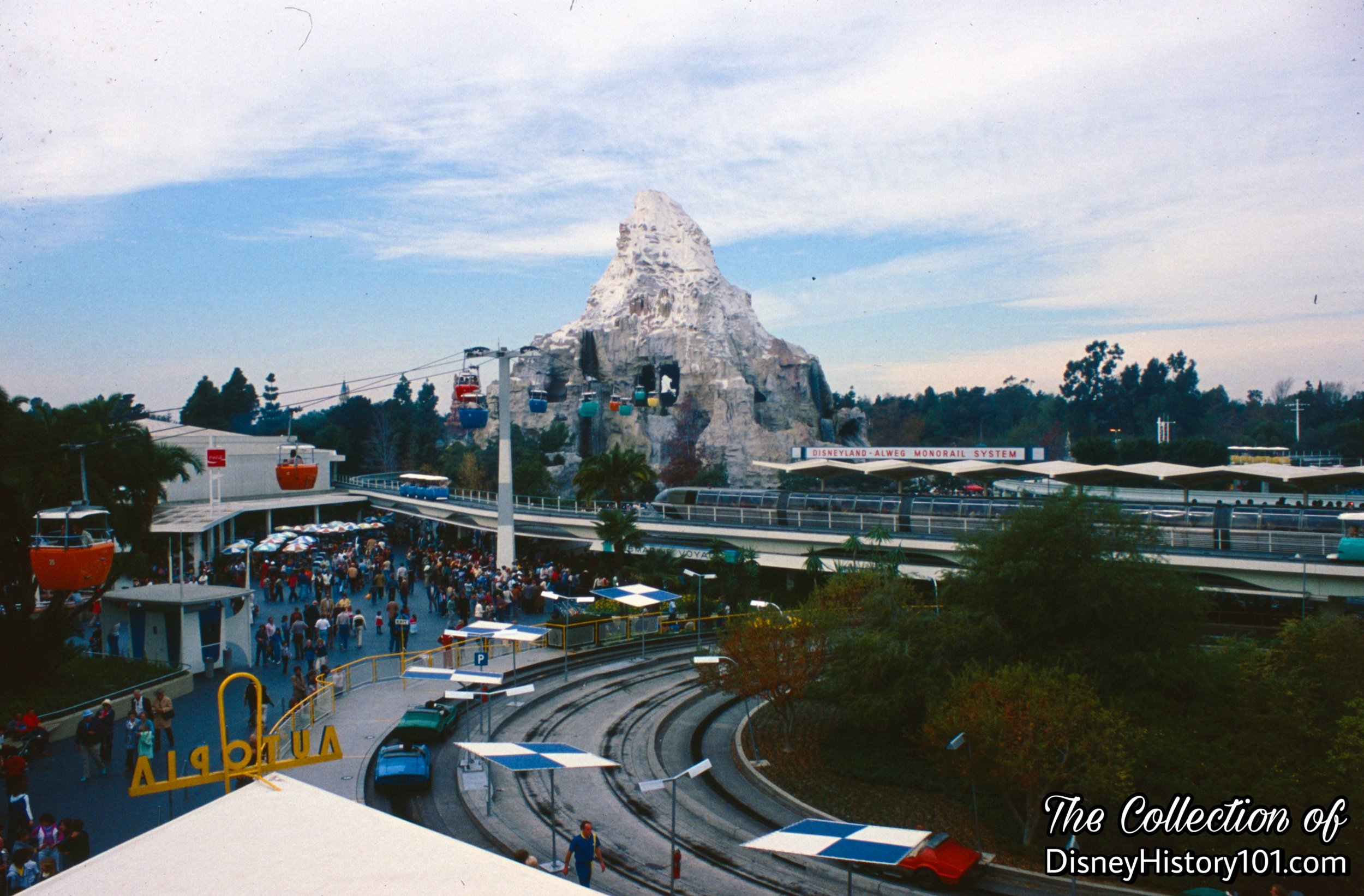

Mark VIIs on the Tomorrowland Autopia, (1978)
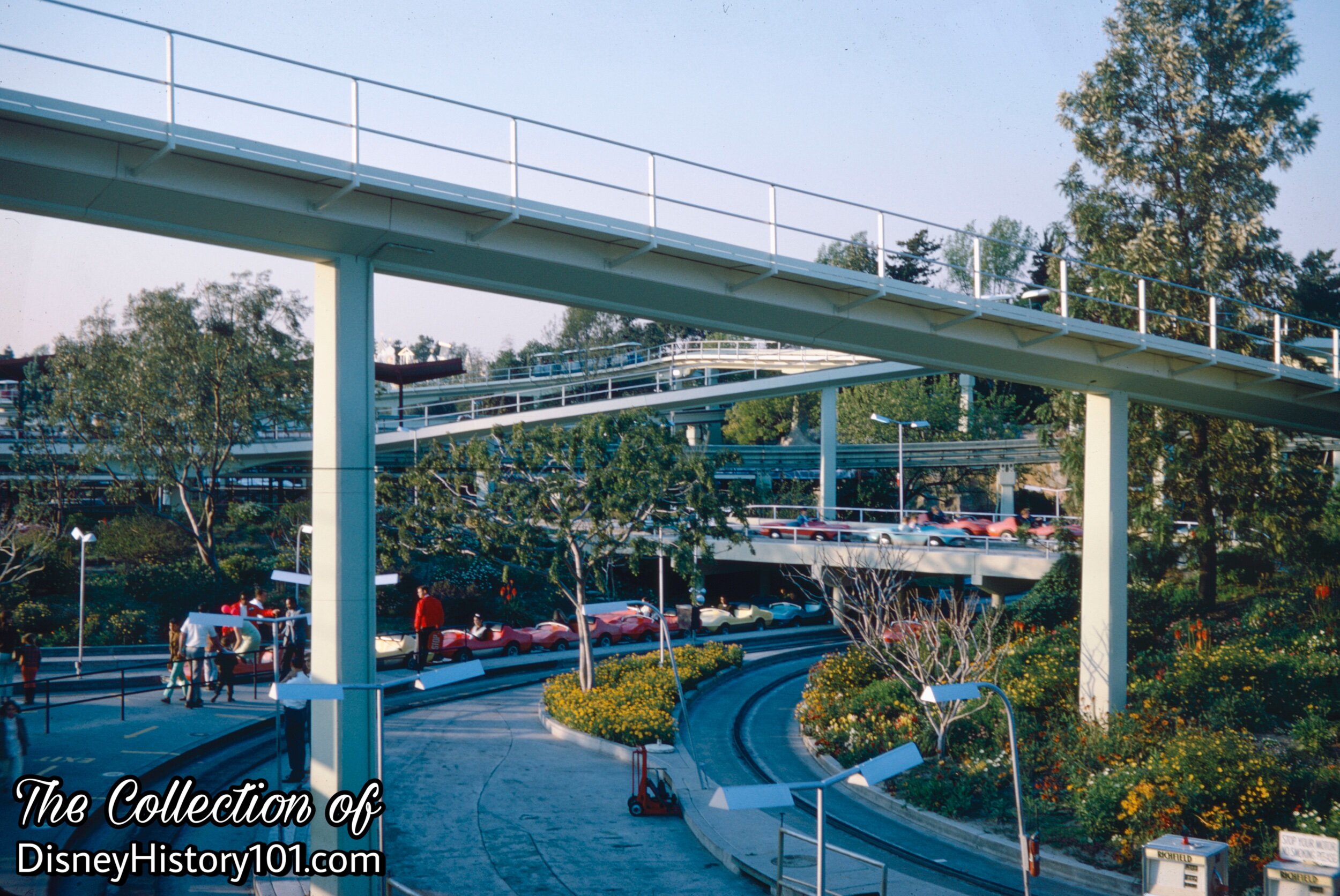
Mark VIIs on the Tomorrowland Autopia
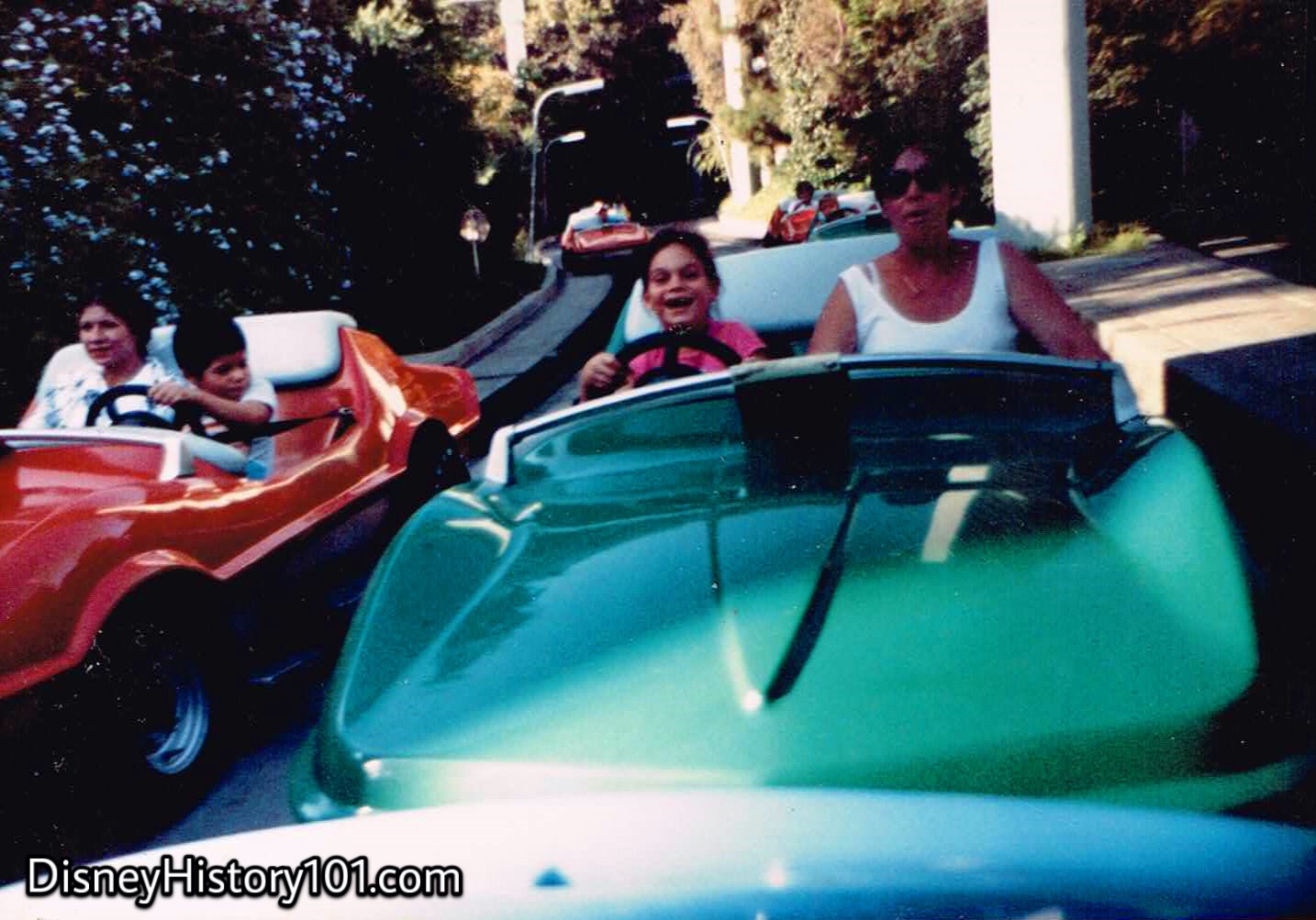
Mark VIIs on the Tomorrowland Autopia
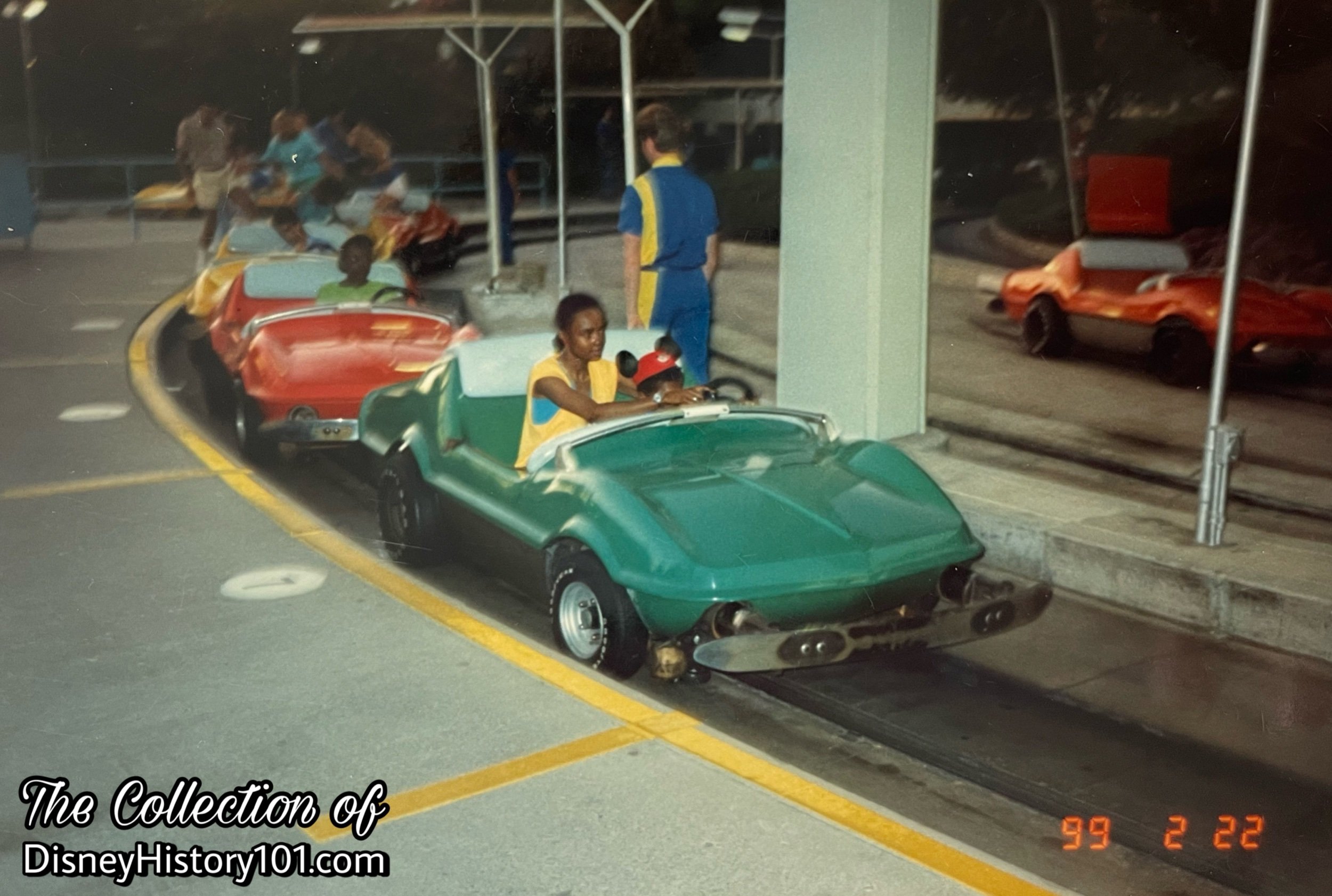
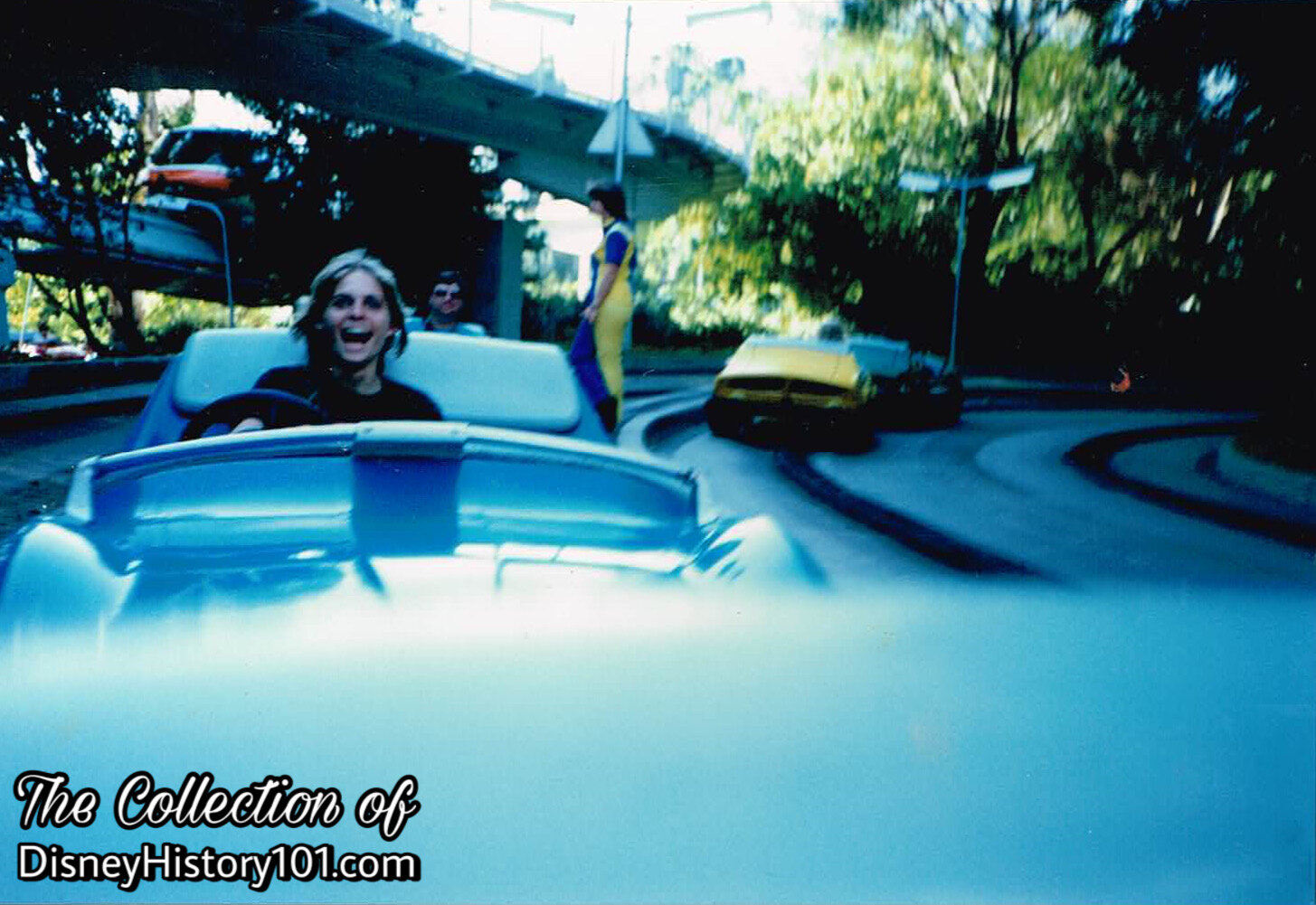
Mark VIIs on the Tomorrowland Autopia
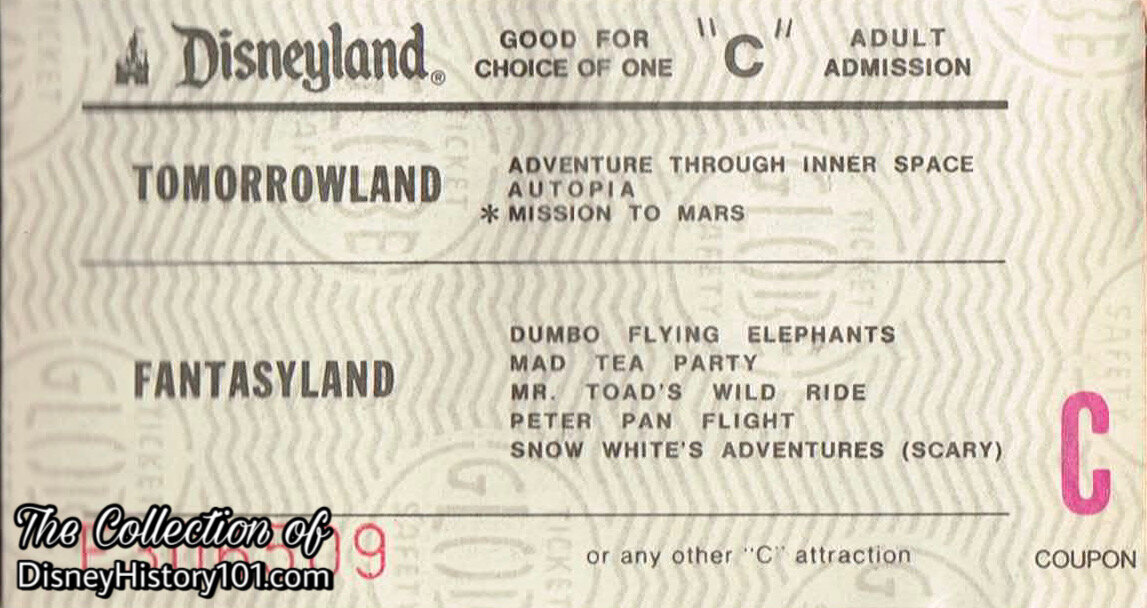
Disneyland Adult “C” Attraction Coupon
There seems to be just one Autopia track open in Tomorrowland at the time of this printing, and one fare to ride - a Disneyland “C” Coupon! There is no cash value printed on this Disneyland Attraction Coupon as the system was soon-to-be revised.
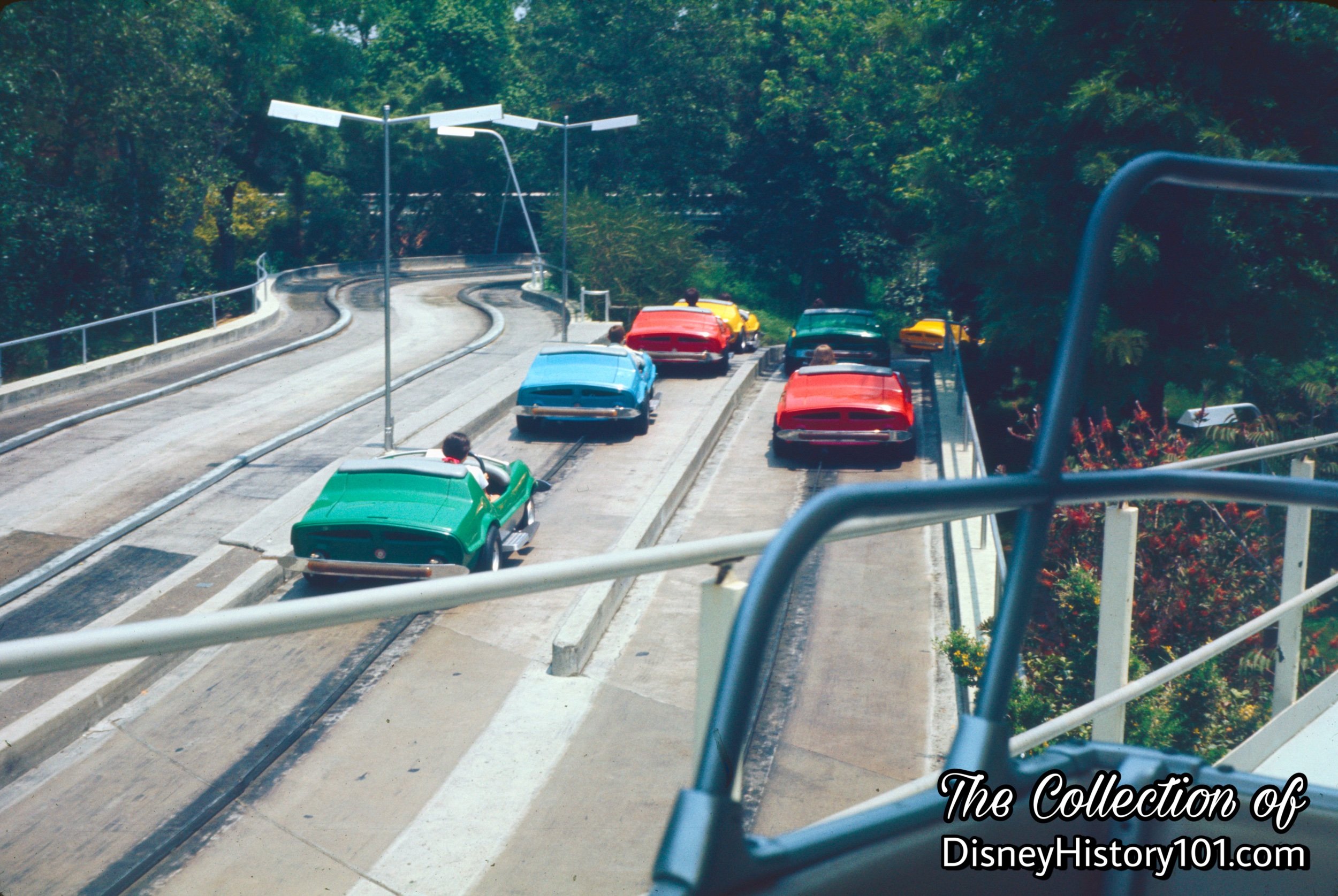
(1970)
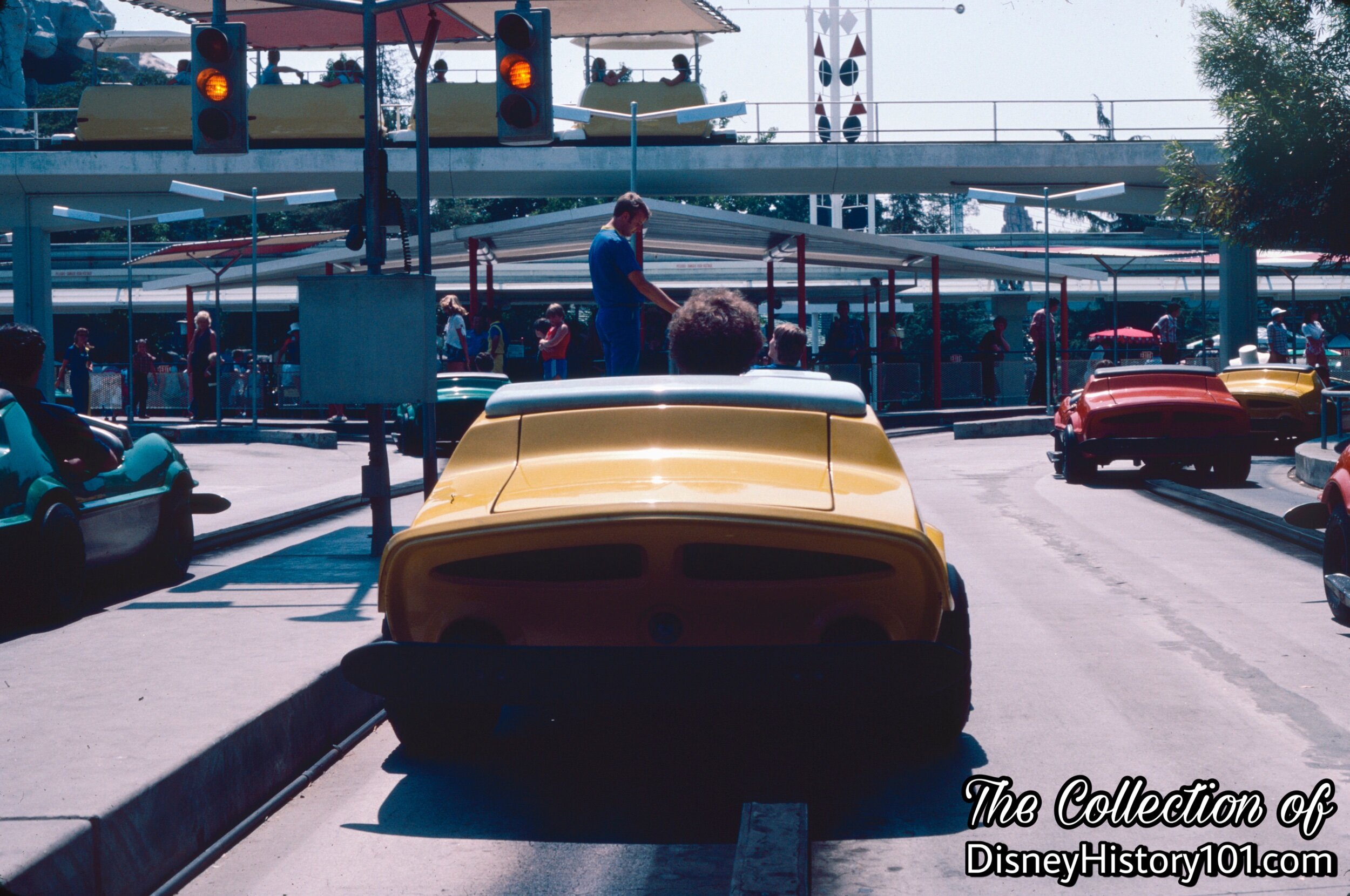
Mark VIIs on the Tomorrowland Autopia
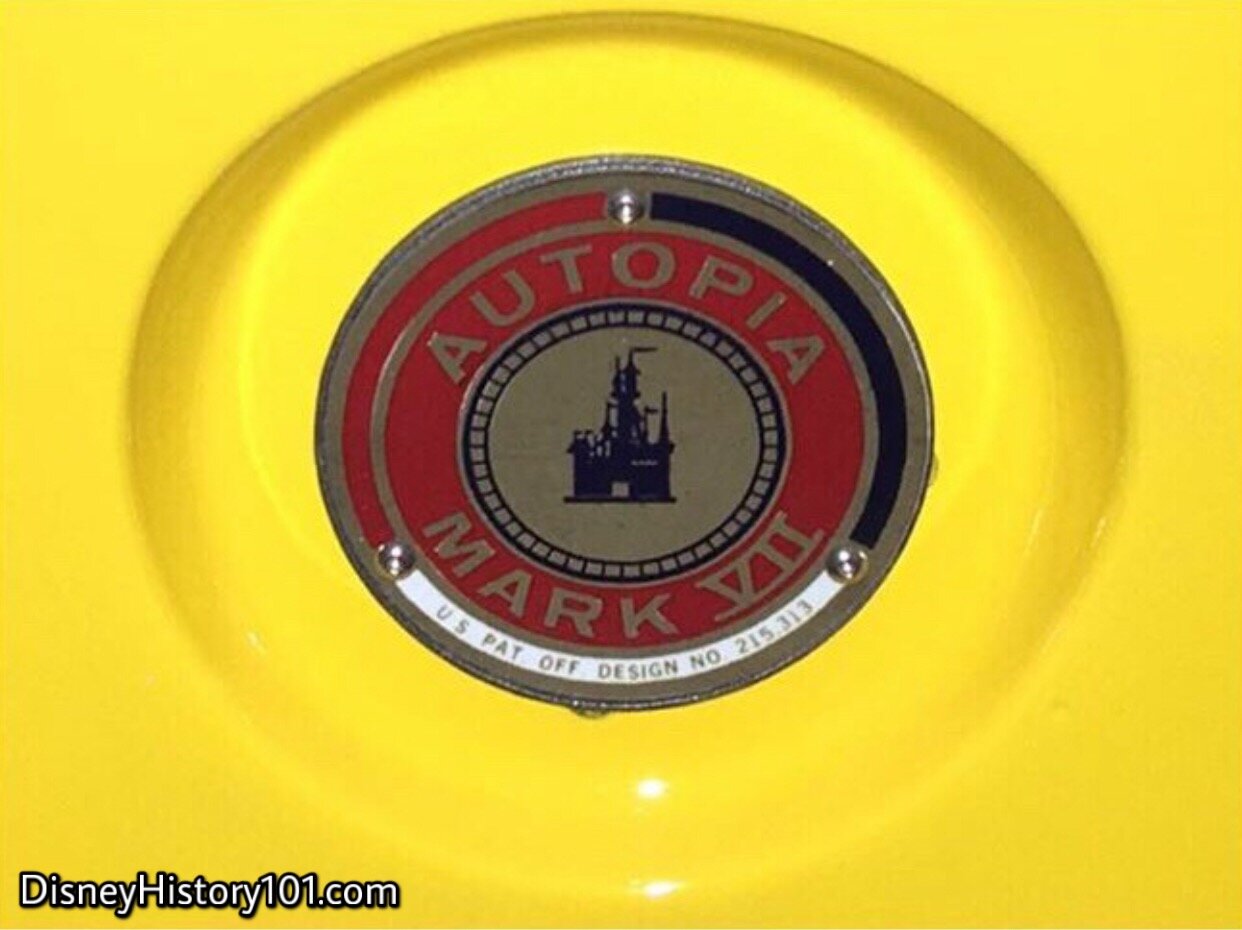
Autopia Mark VII Automotive Emblem
Throughout the next two decades, the Autopia would have a legacy through the Grand Prix Raceway at Walt Disney World Magic Kingdom and the Grand Circuit Raceway at Tokyo Disneyland on April 15, 1983.
From March 15 - November 10, 1991, guests sped through the Fantasyland Autopia raceway and escape the obstacles set up by Fat Cat and his gang. Walt Disney Imagineer Senior Writer and Director Kevin Rafferty contributed show writing for the adventure.
Occasional merchandise (like a tribute model designed by Walt Disney Imagineer Doug Hartwell for the Disneyana Shop in 1998) was produced in honor of the timeless attraction.
Soon, Show Quality Standards/SQS based at each Disney Resort around the world, were teams of Imagineers responsible for maintaining the integrity of the story in existing Guest areas such as attractions, shops, restaurants, hotels, Downtown Disneys, recreation, etc. as well as improving the Guest experience through the integration of new technology and the addition of new show elements.
Finally (in 1999), the Fantasyland Autopia and Tomorrowland Autopia closed for the creation of the Chevron Autopia (on June 29, 2000). The new Chevron Autopia track would incorporate both the Fantasyland Autopia and the Tomorrowland Autopia, and as for the Autopia Mark VIIs - they would speed off into the sunset!
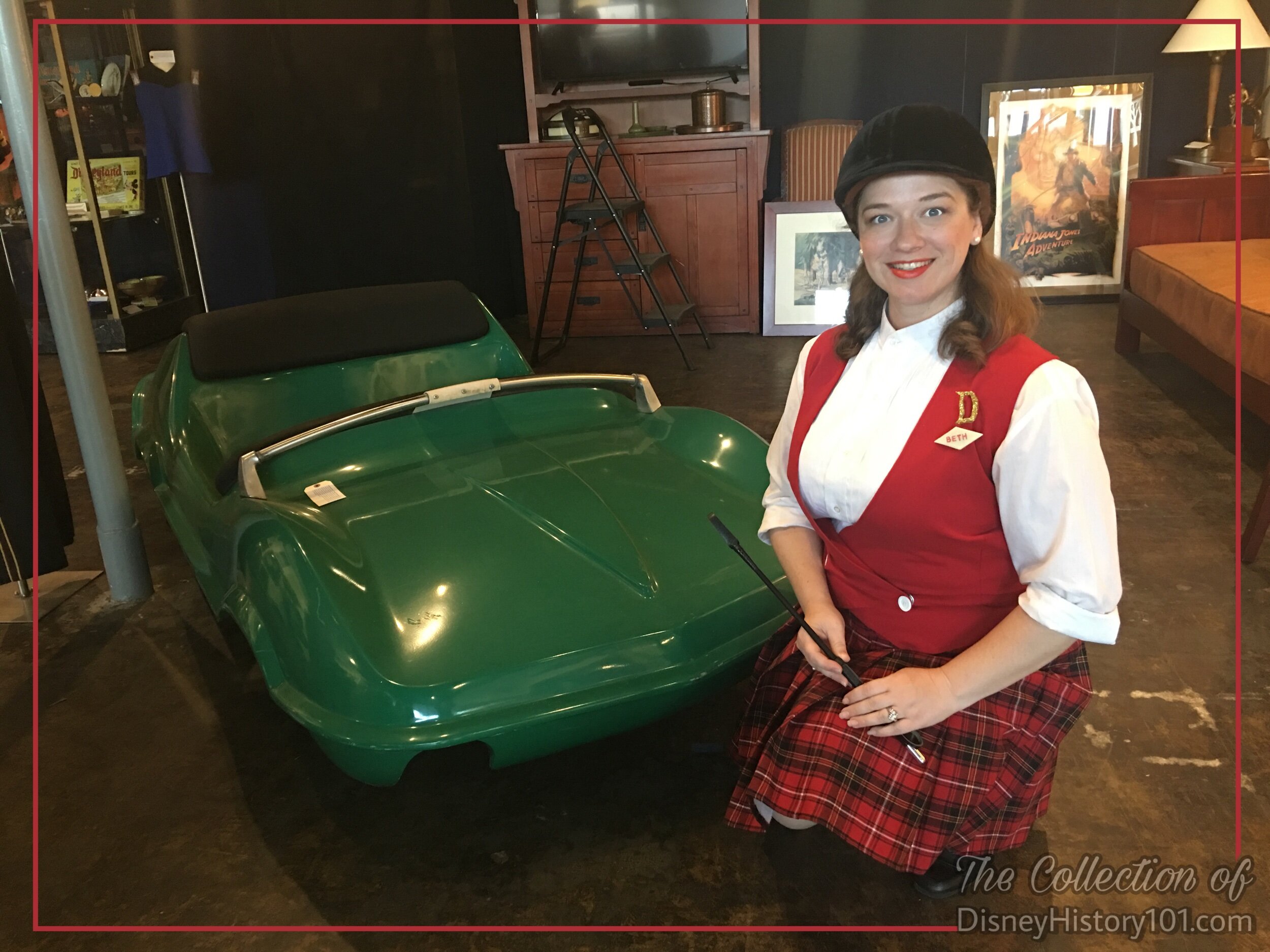
Autopia Mark VII Body, Van Eaton Galleries
Now, the Chevron Autopia wasn’t the “finish line” for the fleet of Autopia Mark IIs. Over the years, many a restored Mark VII (or at the very least, Mark VII parts) has turned up on the old auction floor.
In 2001, an Autopia-Blue Attraction Vehicle was auctioned off at the 2001 Official Disneyana Convention at Disneyland Resort, at an estimate of $7,000 to $9,000.
Please step this way, as we examine a few of them. During our tour, we’ll travel to Van Eaton Galleries in Sherman Oaks, California, and even the Petersen Automotive Museum in Century City, California to visit a few of these (like one of the original Fiberglas bodies of an original Autopia Mark VII,pictured above)!
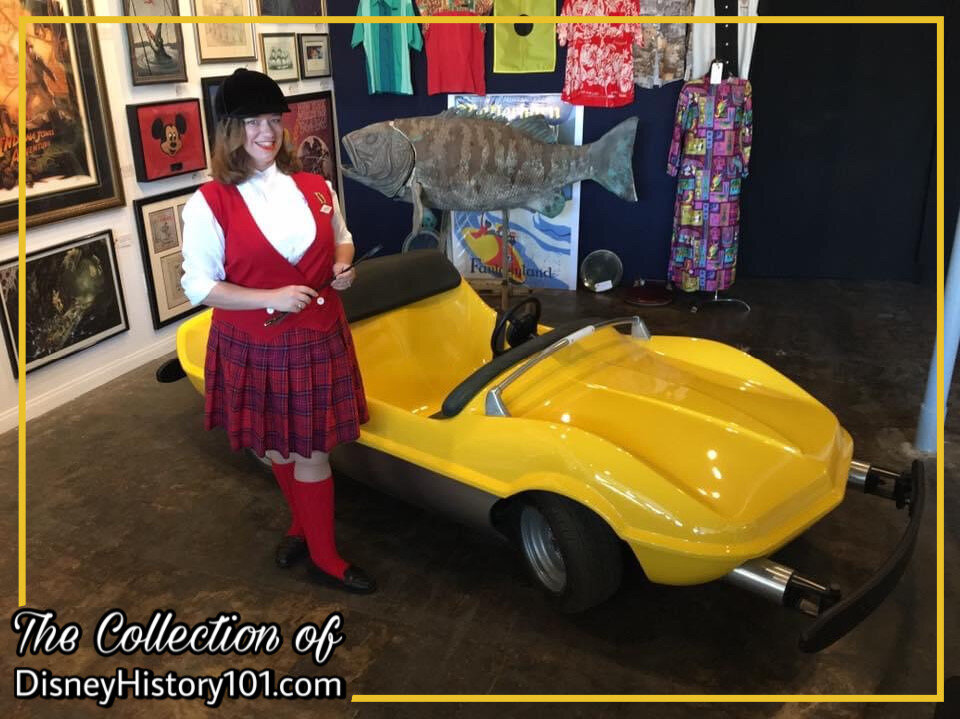
Refurbished Autopia Mark VII, Van Eaton Galleries
According to Van Eaton Galleries’ auction catalog :
“This unique vehicle has been custom modified with a 1974 - 80 golf cart chassis and 36 volt electric drive system with battery charger. The vehicle has a rear drum braking system and new linings, wheel cylinders, hoses, and a master cylinder. The wheels are also silver steel to stay true to the original design. The vehicle has brushed metal laminate rocker panels. The bumper assemblies are authentically reproduced in the same 1970’s style, and the leather seat belt with hook is also authentically reproduced to match the original style. The vehicle has rubber floor matting, a padded steering wheel, and the ‘Autopia’ body emblem, all of which are custom created to match the original. This incredible artifact is a beautiful example of the very popular Mark VII ‘Autopia’ vehicles, and measures approximately 10ft x 4ft and 3ft tall.”
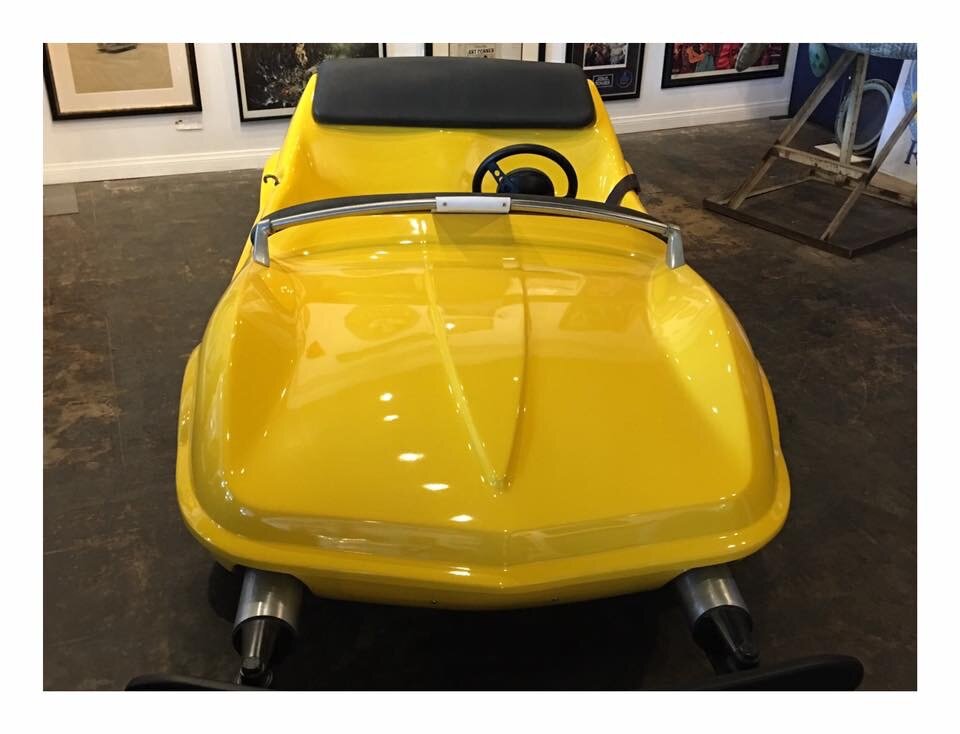
Refurbished Autopia Mark VII, Van Eaton Galleries

Refurbished Autopia Mark VII, Van Eaton Galleries
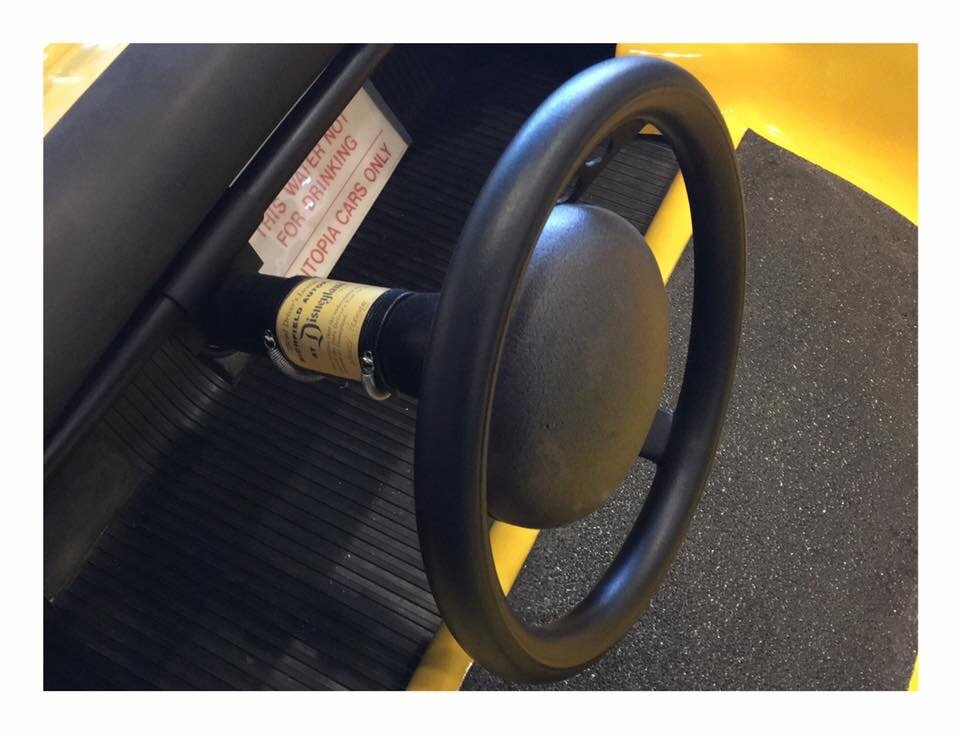
Refurbished Autopia Mark VII, Van Eaton Galleries
According to “Disneyland’s Autopia” (published in Rod & Custom, November 1955) :
”Another safety feature is the custom designed 3-spoke, rubber covered steering wheel with a recessed center to prevent injury to the drivers in case of accident–you know how freeways can be at the peak traffic hours.”
This remained a safety feature of later Autopia vehicle editions, like the MarkVII.
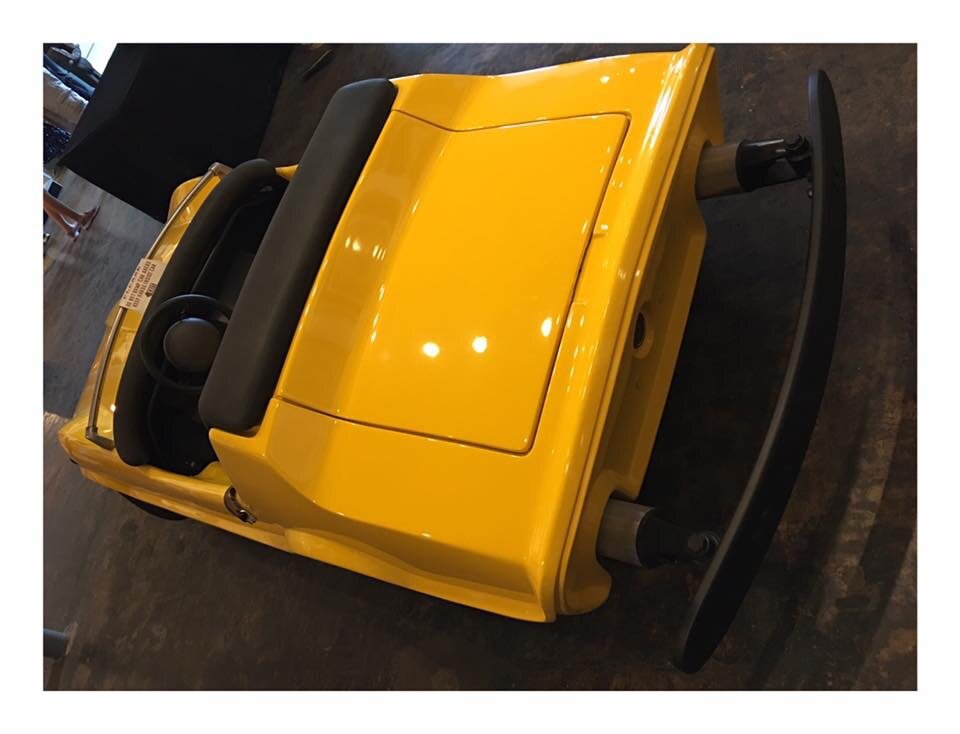
Refurbished Autopia Mark VII, Van Eaton Galleries
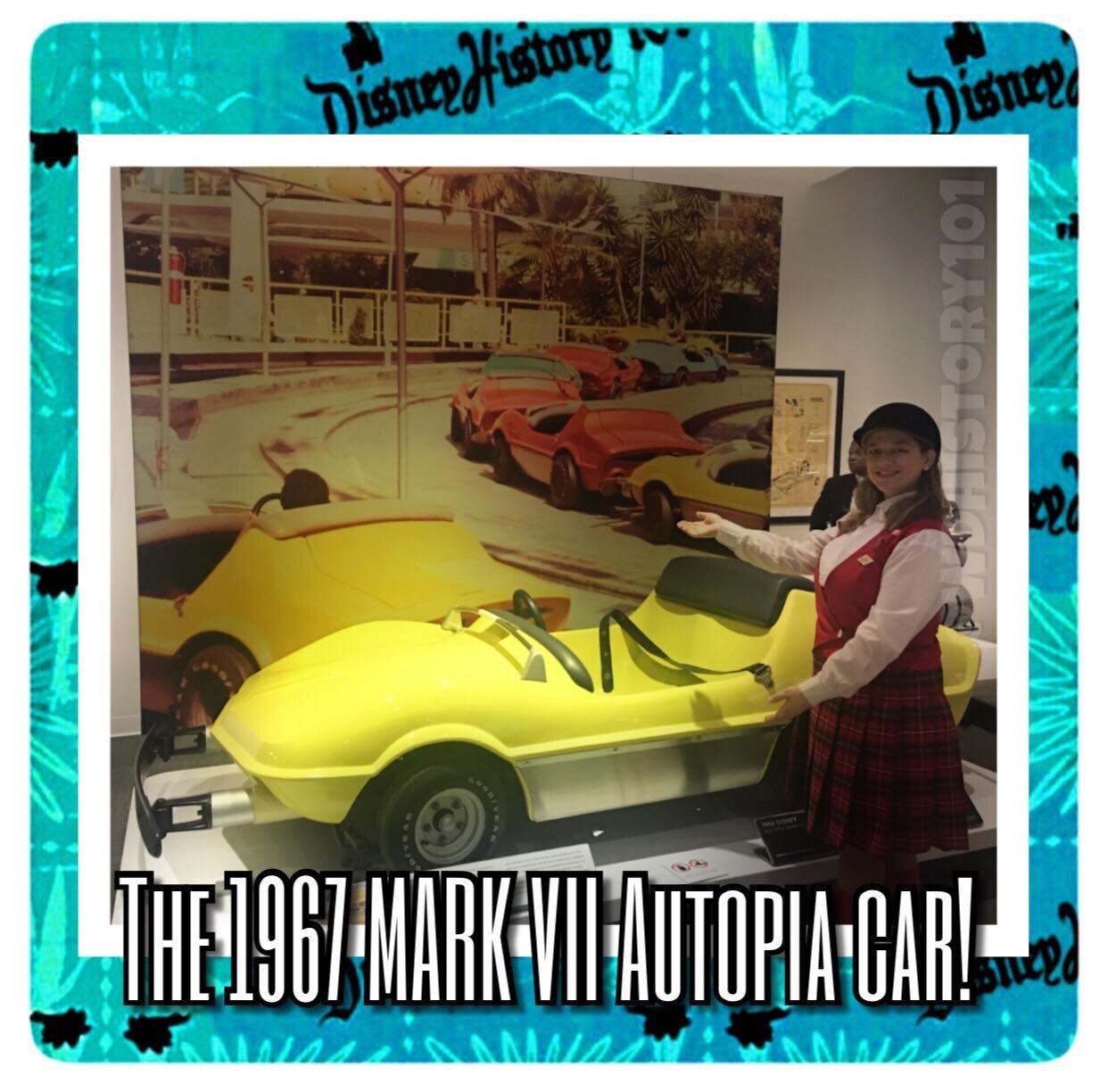
Refurbished Autopia Mark VII, Previously on Display at The Petersen Automotive Museum
This Autopia Mark VII comes from a private collection of pint-sized racing cars!
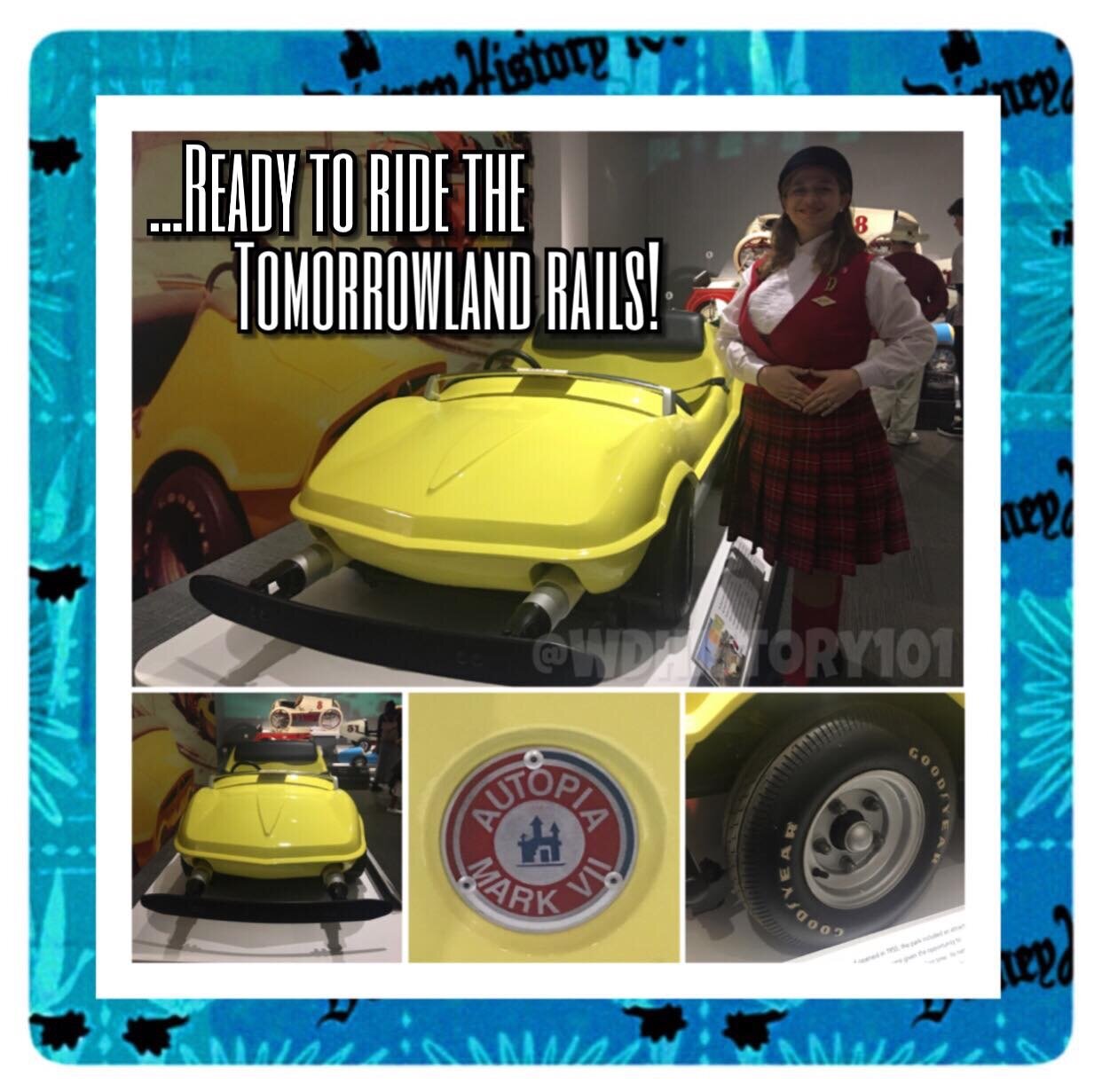
Refurbished Autopia Mark VII, Previously on Display at The Petersen Automotive Museum

The Gurrtini (Custom Autopia Mark VII)
We couldn’t leave the subject of Mark VIIs without showing you the Gurrtini - a custom Autopia Mark VII tribute to Autopia vehicle designer Bob Gurr, with a trunk full of surprises - like the ingredients for engineering a “Gurrtini” (a Bob Gurr novelty kit, not meant to be consumed while operating the vehicle) & Ventures record albums on CD! The original Fiberglas body was even “auto”-graphed by Bob Gurr of course!
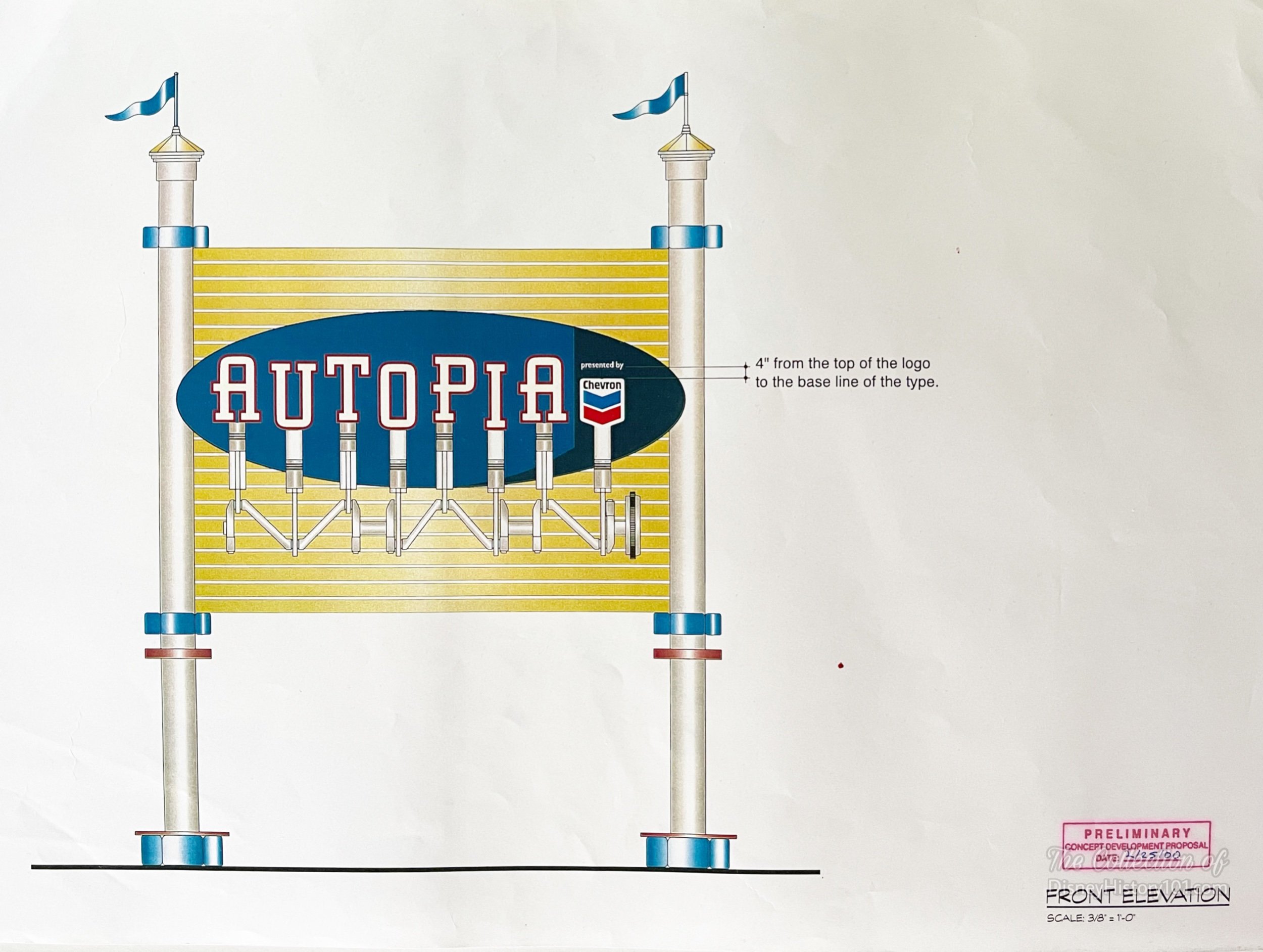
A concept created for a new “magical” opportunity for the Autopia at Disneyland and Participant Chevron.
“Chevron Autopia”
From 1999 to 2000, Walt Disney Imagineer John Stone designed and produced model landscapes and typography for the "off-road" scenes Of Chevron's sponsored New Autopia Attraction. John designed and developed marquis toer and queue for the Autopia Load and Unload areas. John also designed and fabricated full scale "Pepper's Ghost" sets used to entertain Guests while waiting in the queue.
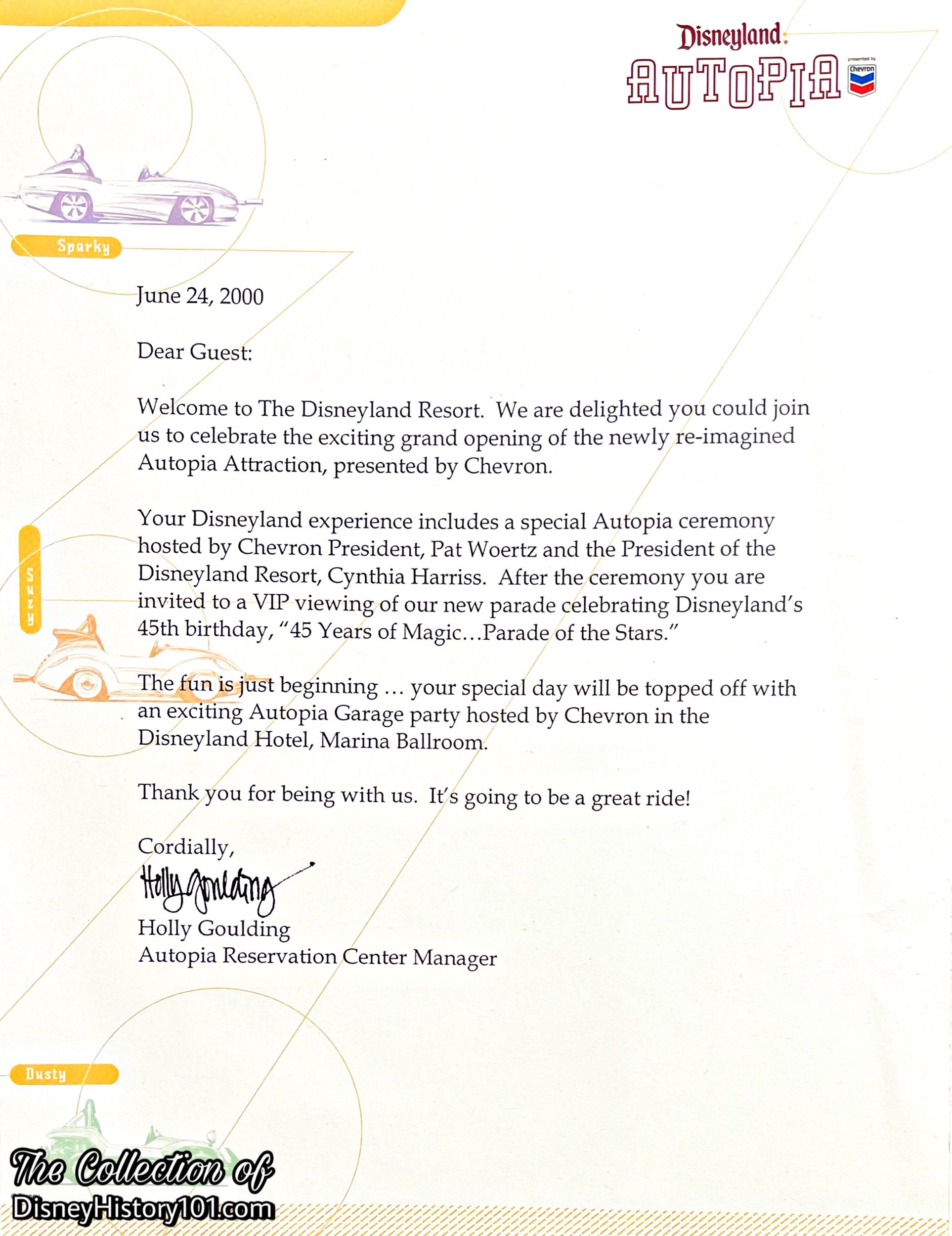
Autopia Grand Opening Invitation, June 2000.

Autopia Grand Opening Invitation, June 2000.
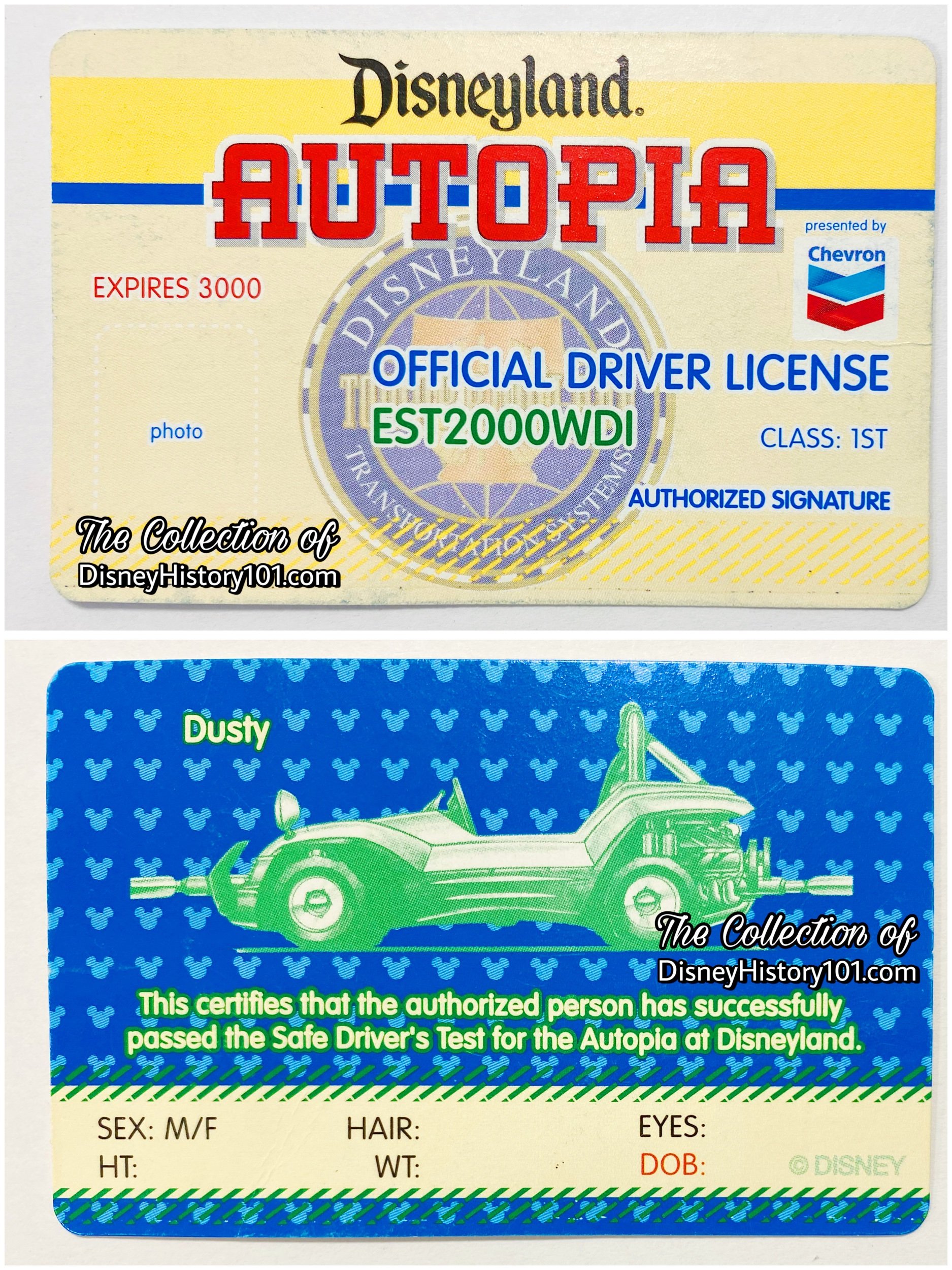
Disneyland Autopia presented by Chevron Officialo Driver's License.
Even after all, in 2008, WDI master planners entertained the concept of an update to the Autopia - something called the “Chevron Initiative.”
The Autopia is truly a “timeless” attraction! In one of his final publications, Dave Smith (previous Chief Archivist Emeritus of the Walt Disney Archives), included the Autopia among “the only attractions still at Disneyland today that were there on opening day, July 17, 1955.” [Disney Facts Revealed by Dave Smith, 2016]

Do you remember that earlier memory of Bob Penfield’s (in interview with Disneyland LINE, Vol. 25 No. 28)? Bob recalled a conversation with Walt, while operating the Autopia. Walt asked, “‘What about those cars banging together - can we stop that?’ I told him, ‘Walt, I don’t think we’ll ever see the day that Guests don’t bang the cars together.’” Bob Penfield was no pessimist, but he was correct. By 1972, Pregnant women were restricted (for that very reason) from riding the Matterhorn Bobsleds and the Autopias. In the year 2000 (and almost a half-century after Bob spoke those words), these plaques (pictured above) featuring a safety warning as a reminder for guests of all ages. These plaques graced the dash boards of the all-new Chevron Autopia Vehicles at Disneyland!
All of this would continue to contribute toward pleasant drives through the scenic side of Tomorrowland!
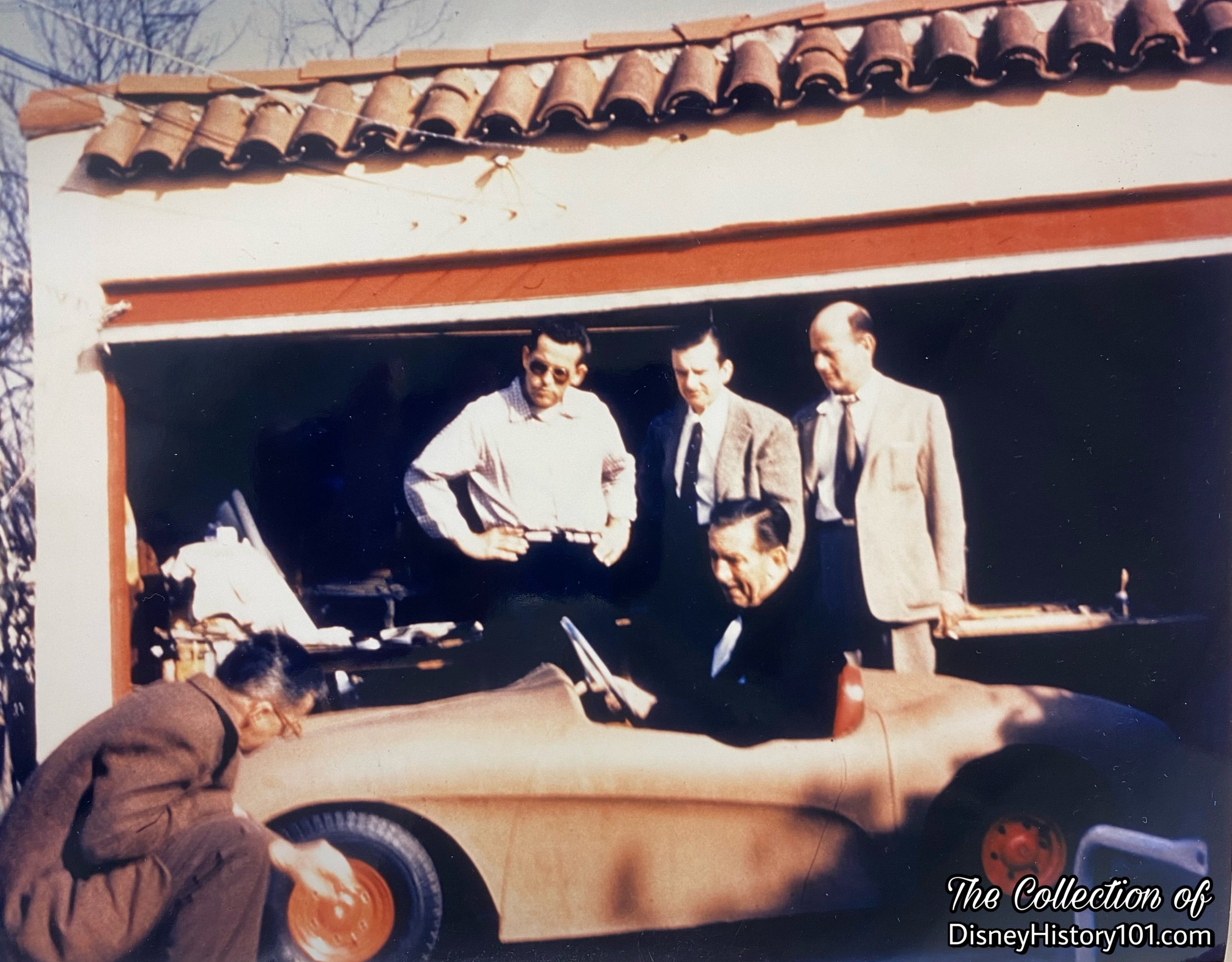

Autopia Powered by Honda souvenir Driver's License.
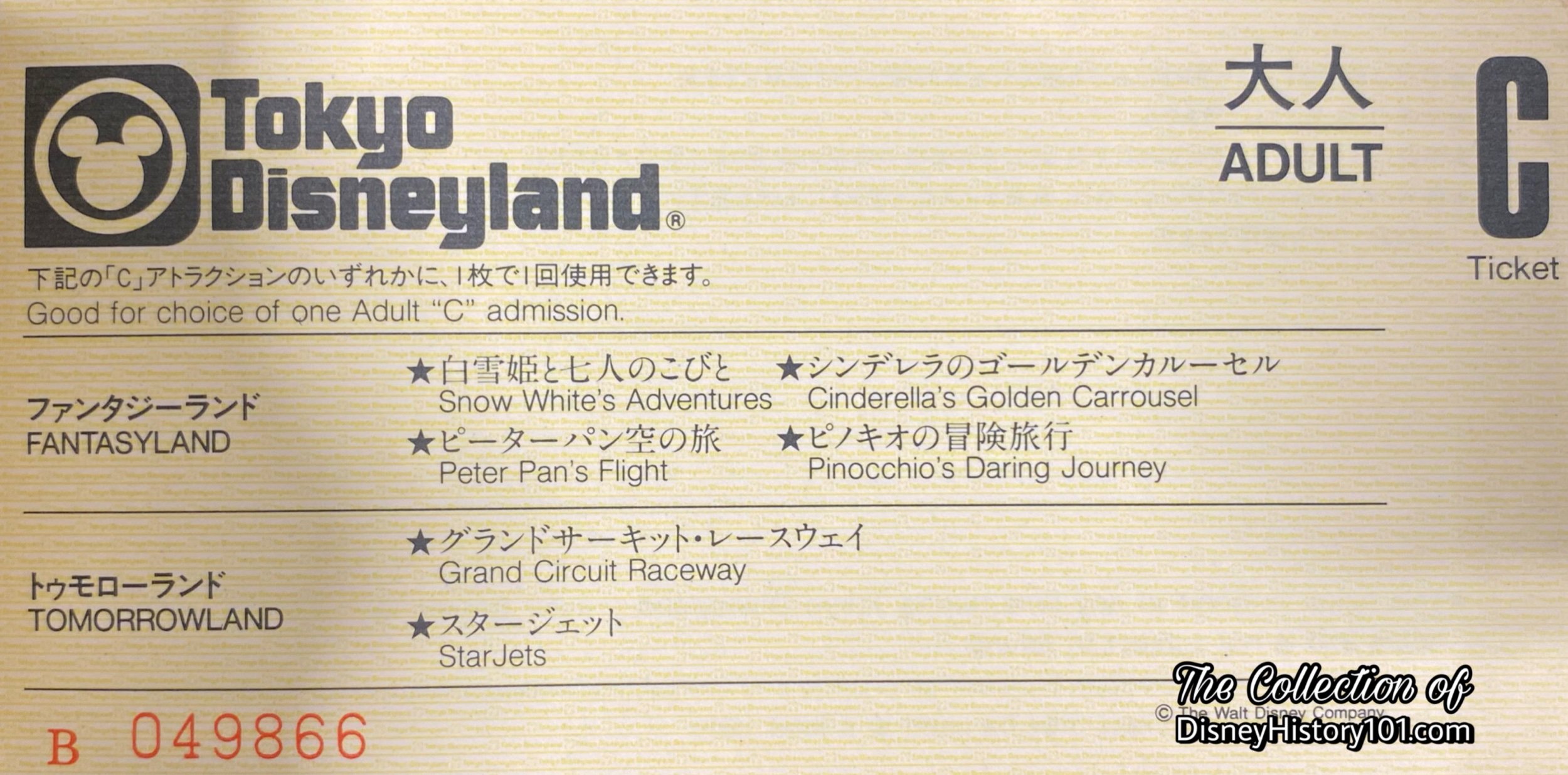
Outside the original Disneyland Park, the Autopia would also have a legacy at Disney Theme Parks, like Tokyo Disneyland.
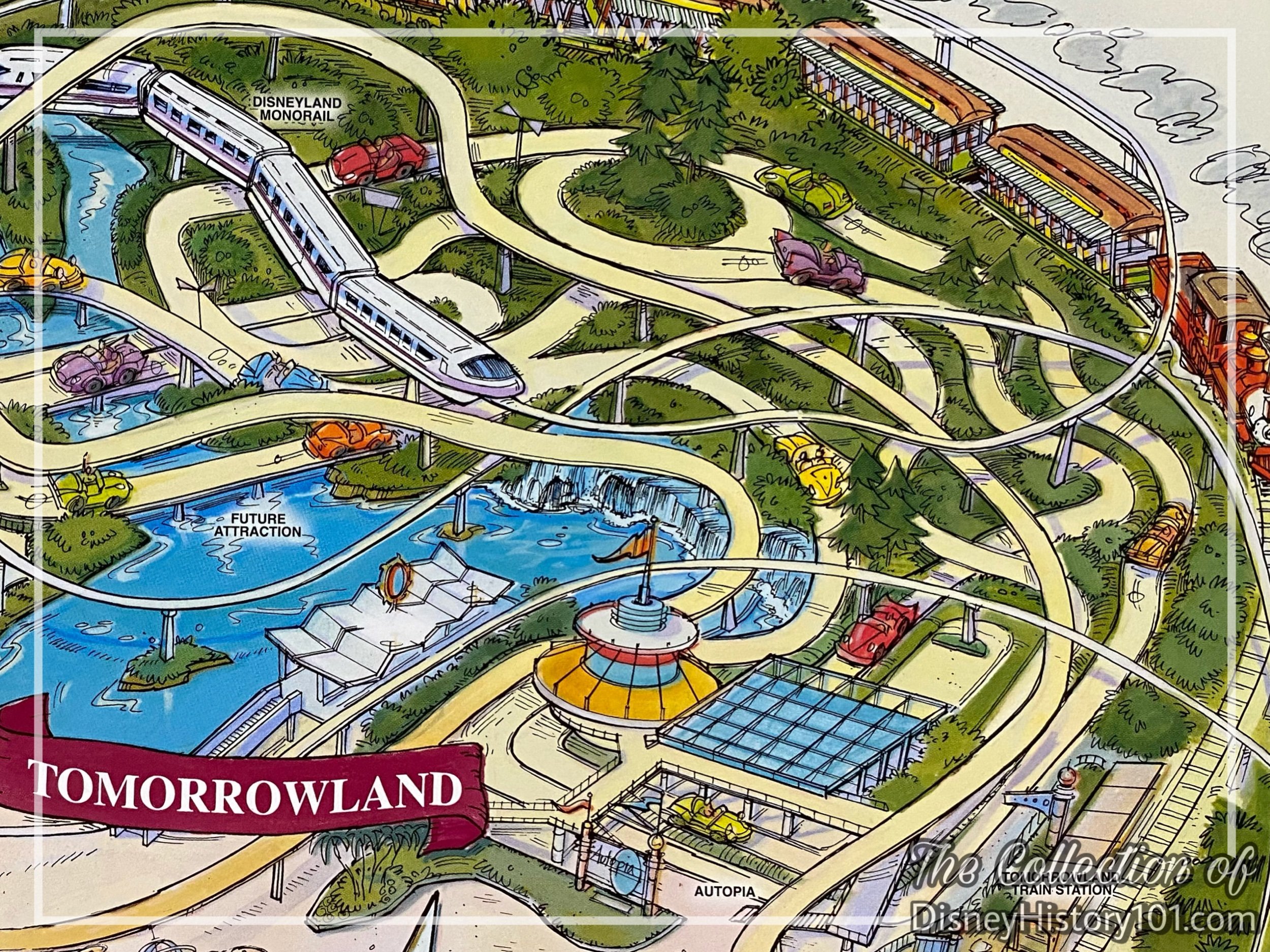
Disneyland 50th Anniversary Map by Nina Rae Vaughn.
Since the beginning, the Four Keys of the DISNEYLAND Show (operating priorities in presenting the DISNEYLAND Show) have been present - Courtesy, Safety, Show, and Efficiency. Walt Disney Imagineers are always seeking out new magical opportunities to increase the efficiency, safety, and show quality of Disneyland adventures! Walt once divulged, “When we consider a new project, we really study it - not just the surface idea, but everything about it. And when we go into that new project, we believe in it all the way.” [“Walt Disney Productions Annual Report to Shareholders and Employees Fiscal Year Ended October 2, 1965”]
That philosophy having grown into a Disneyland tradition, assures us that some form of the Autopia may continue will continue with Tomorrowland far into the future. Already, plans have been announced for another reimagining of the timeless Tomorrowland Transportation System, with electric cars planned to arrive in 2026!

